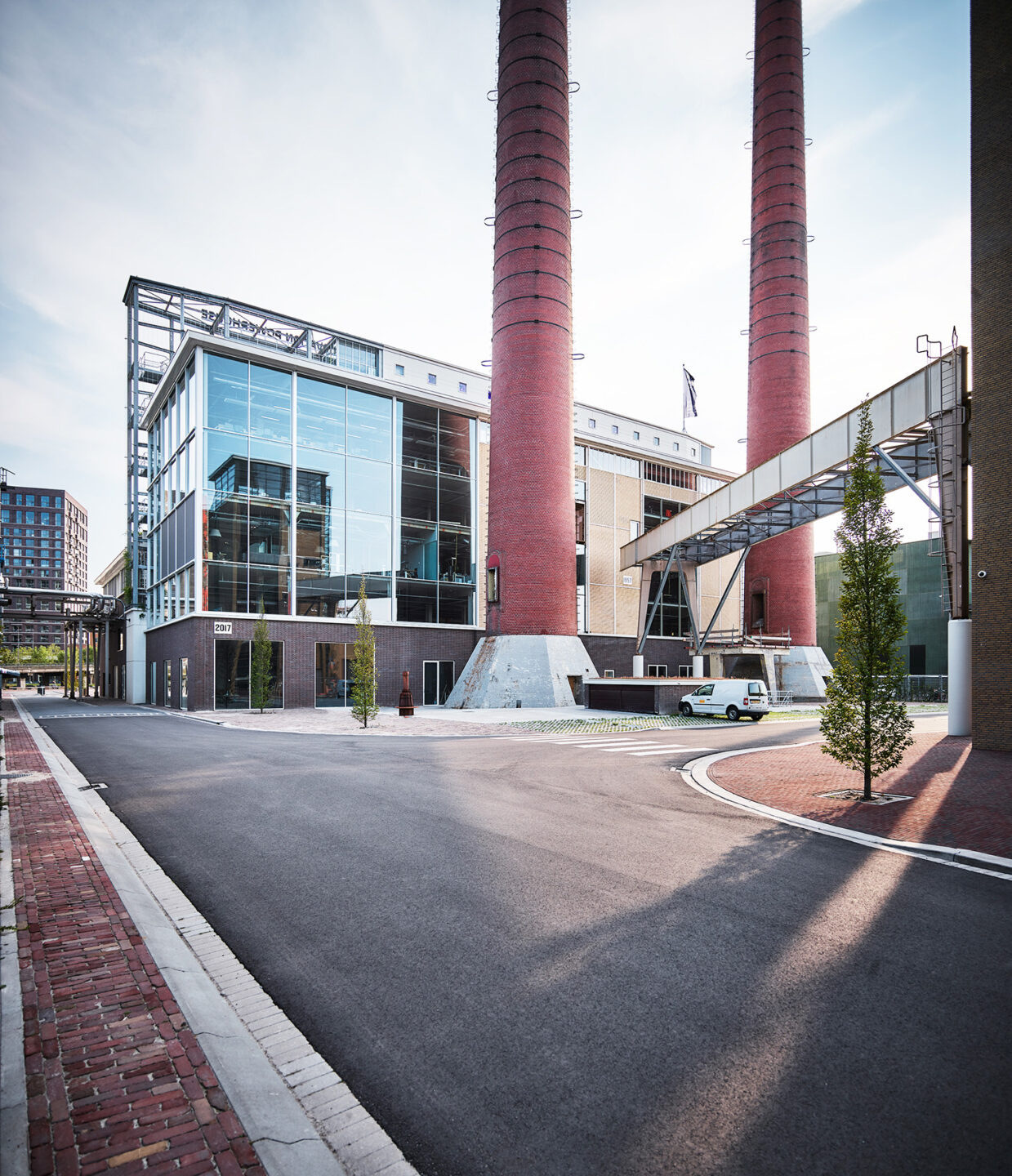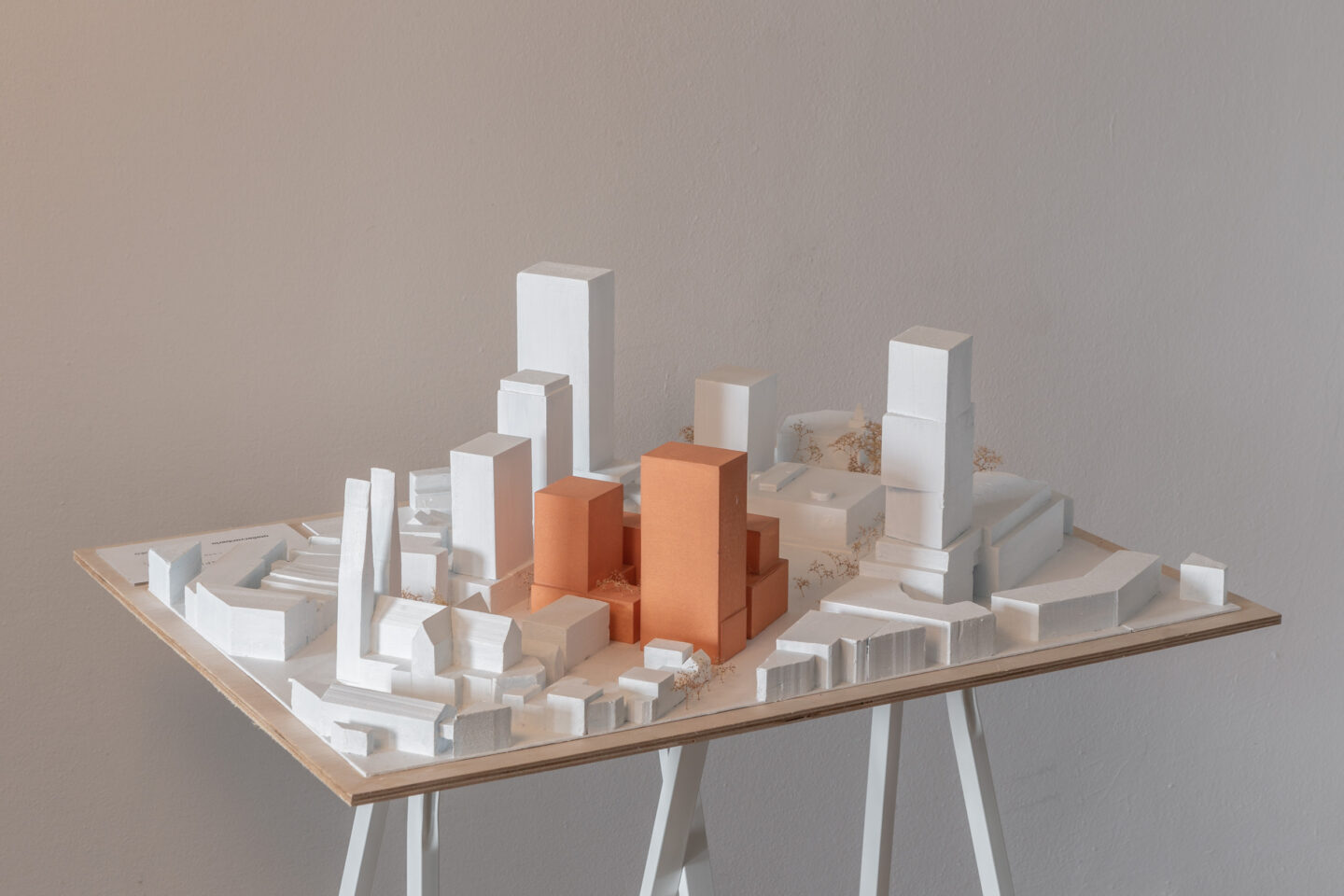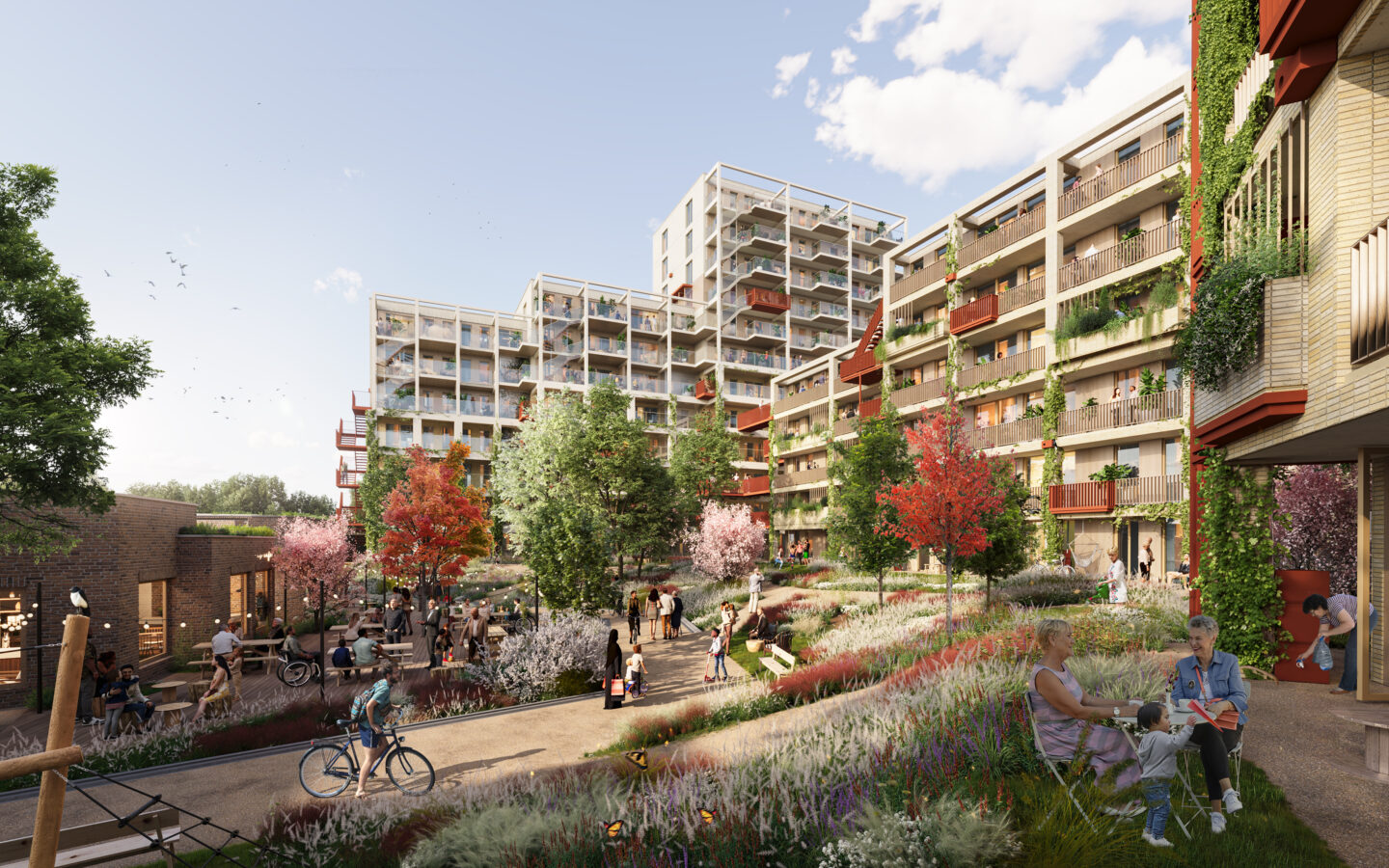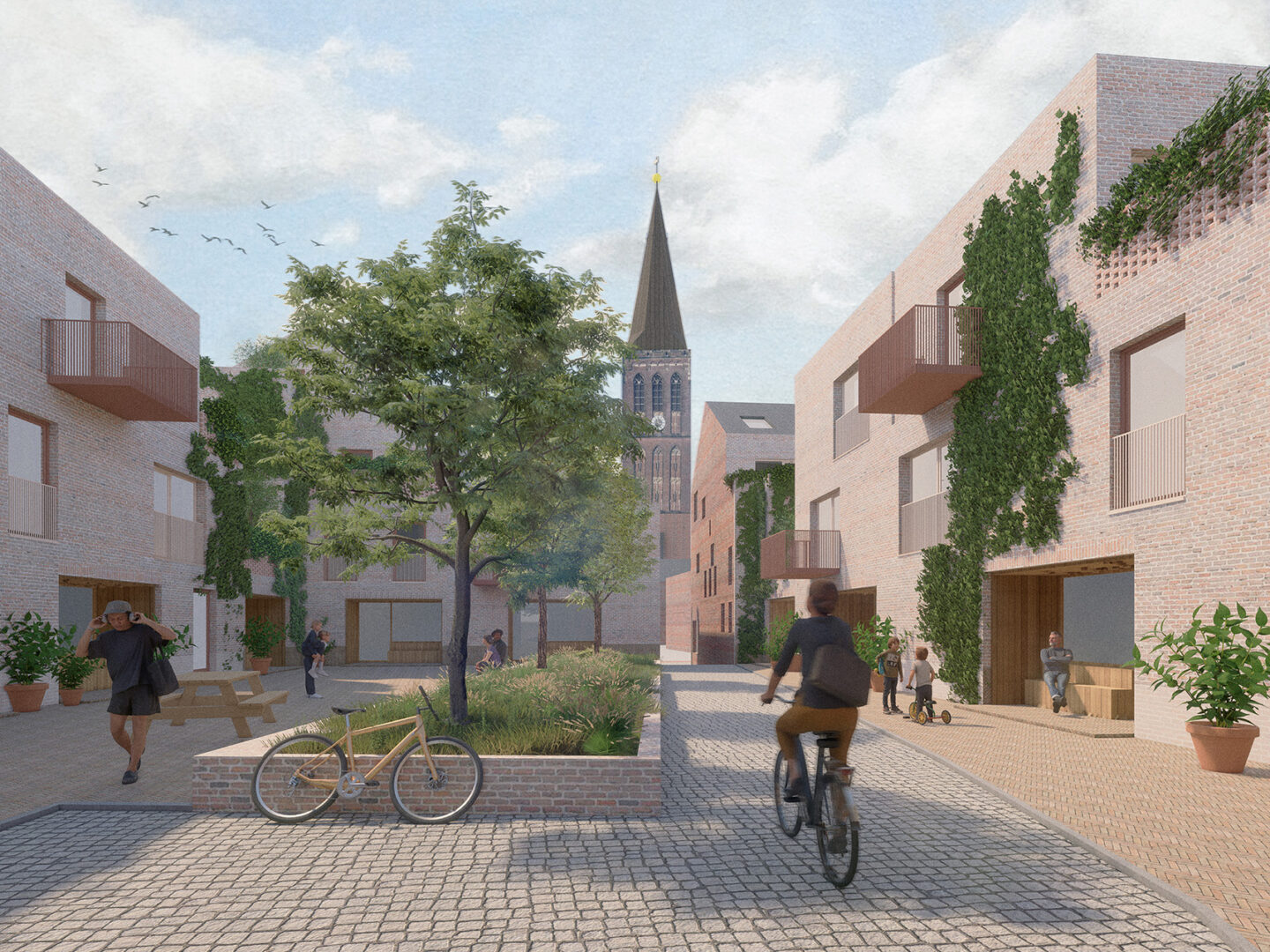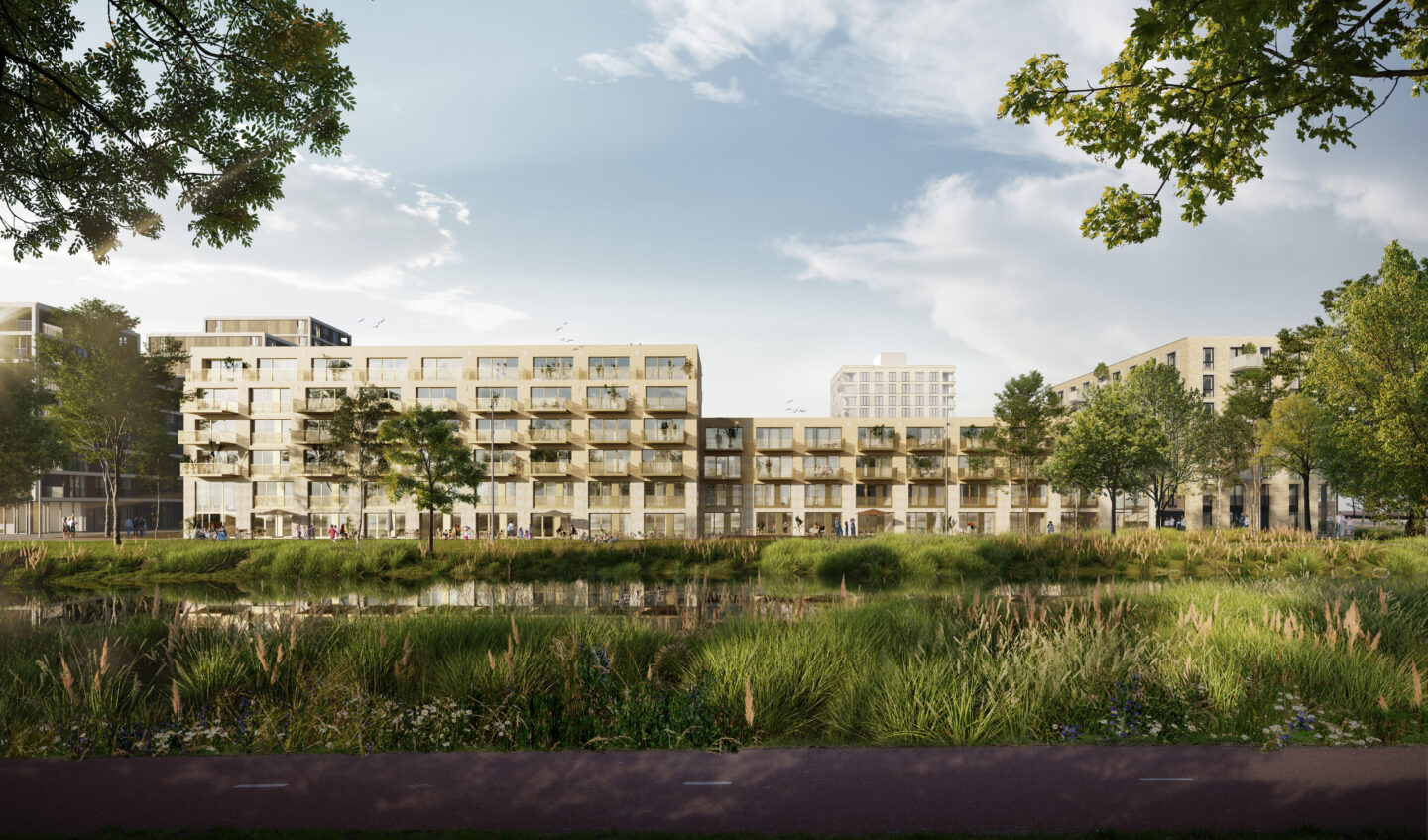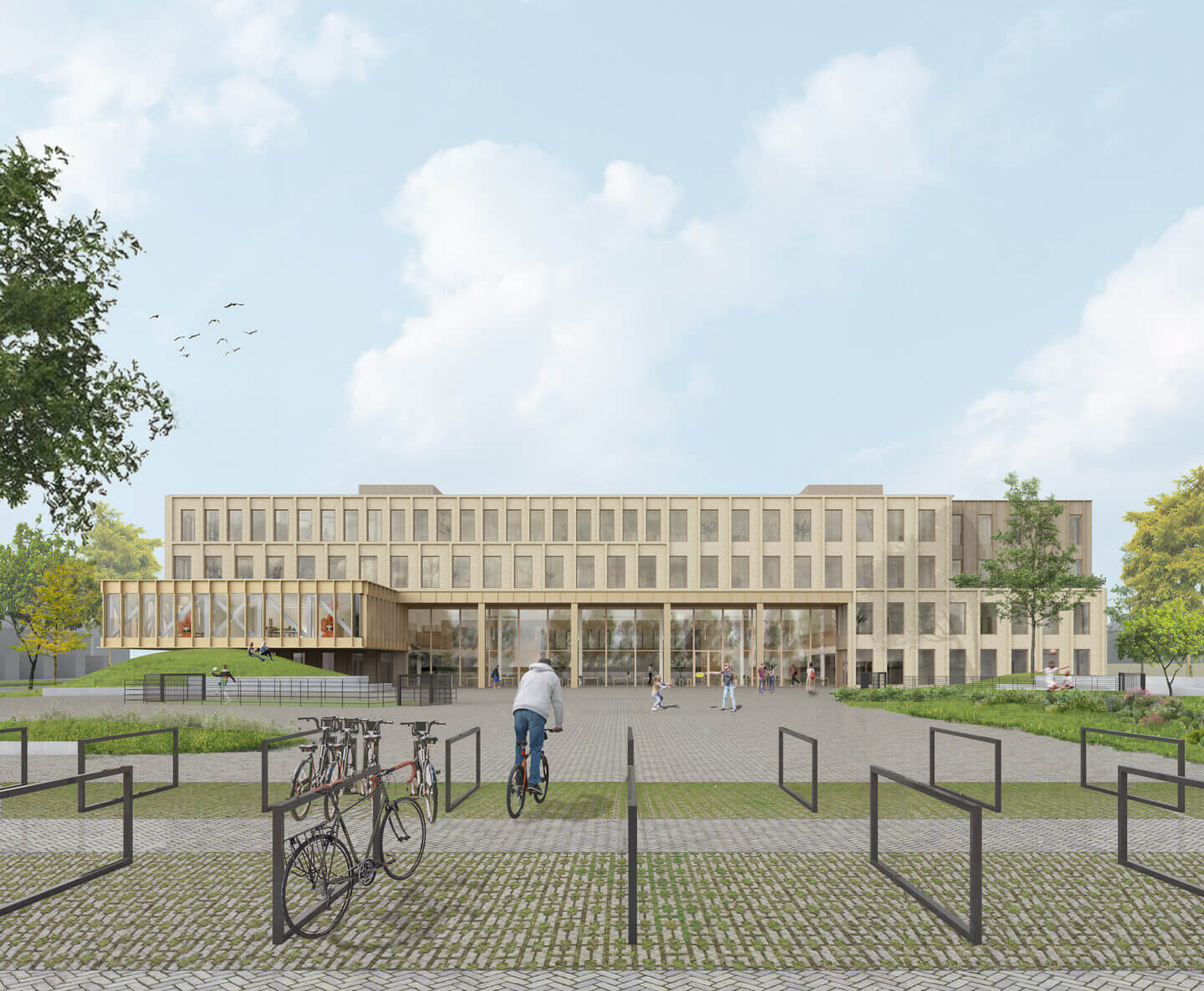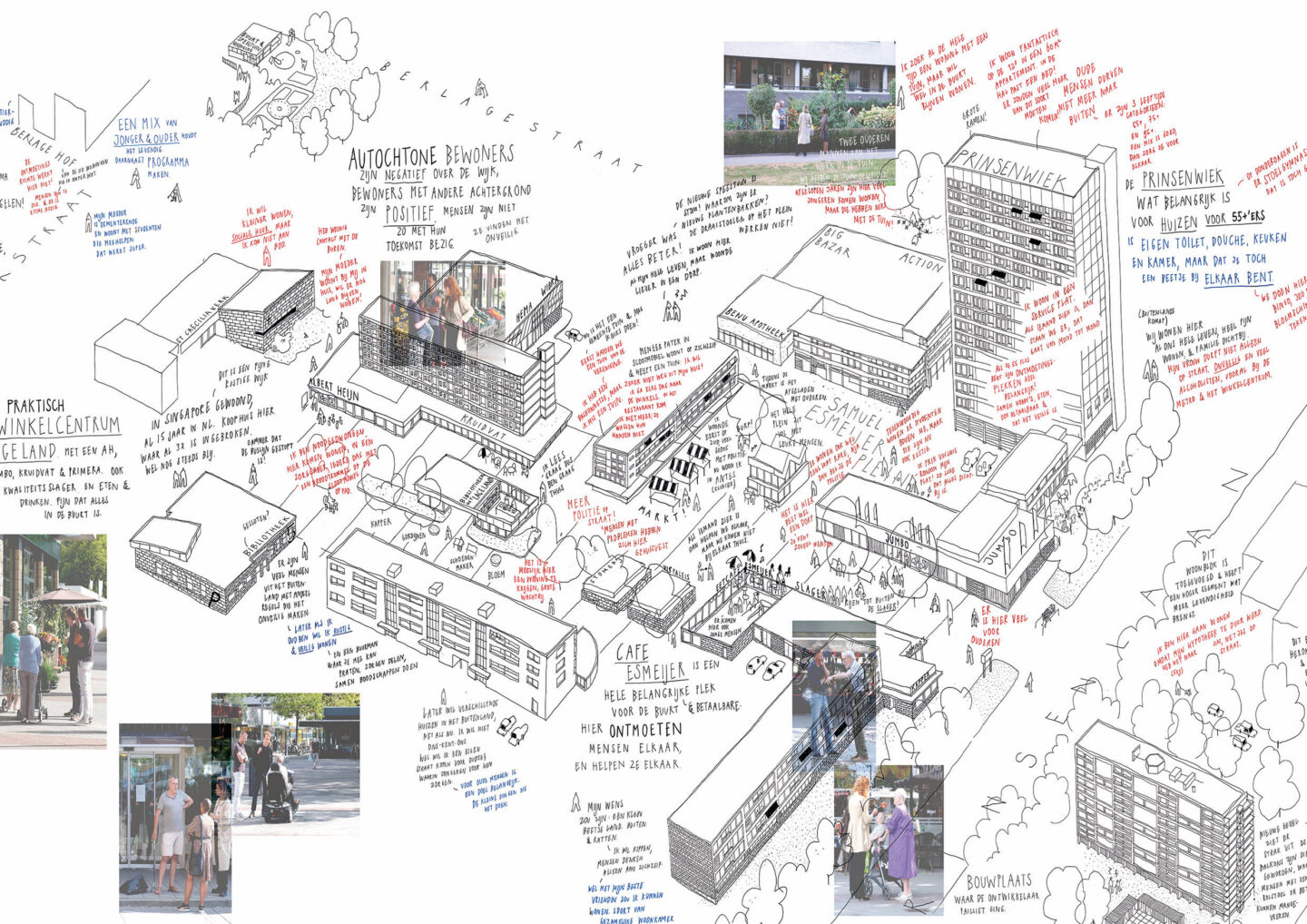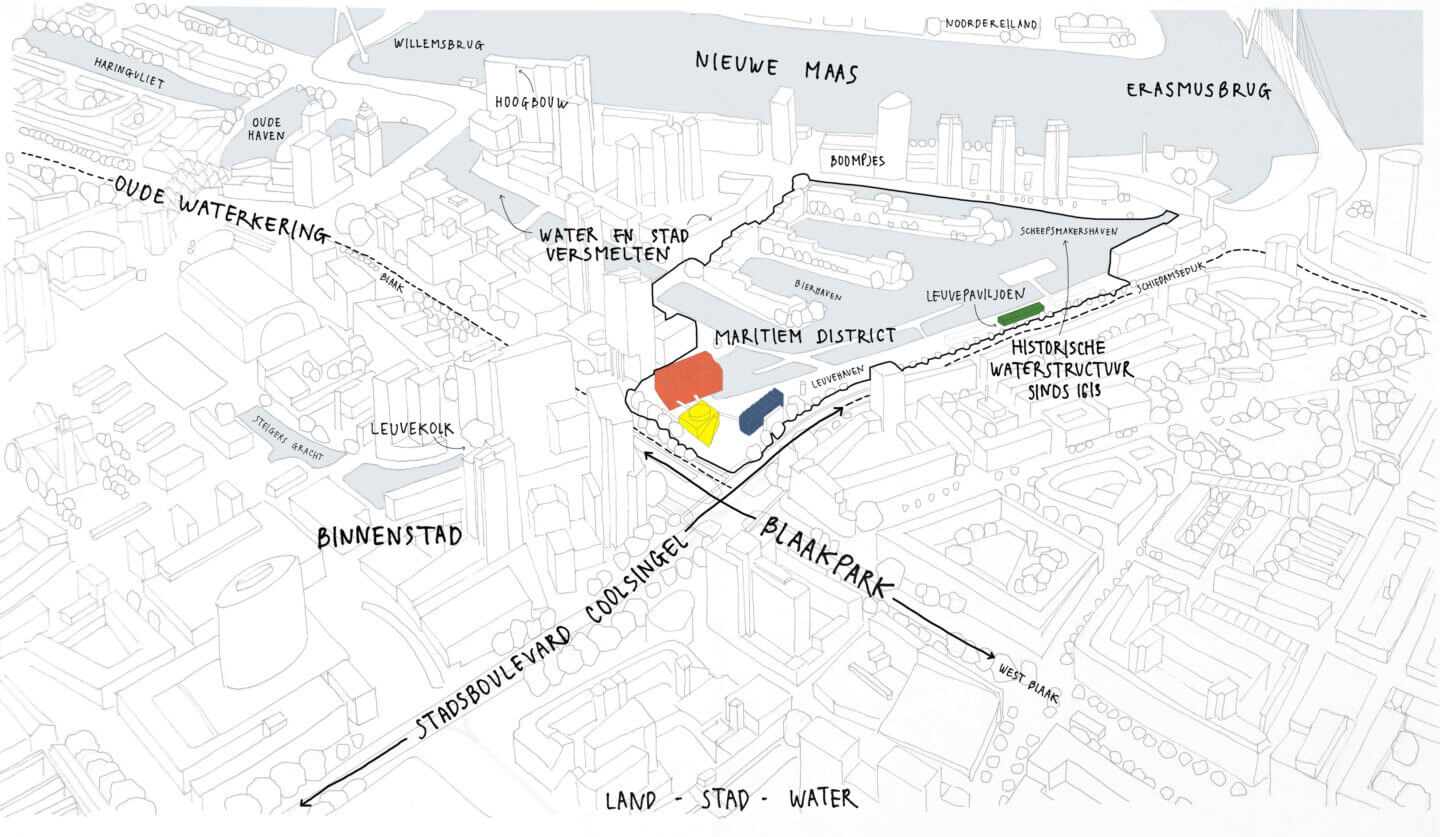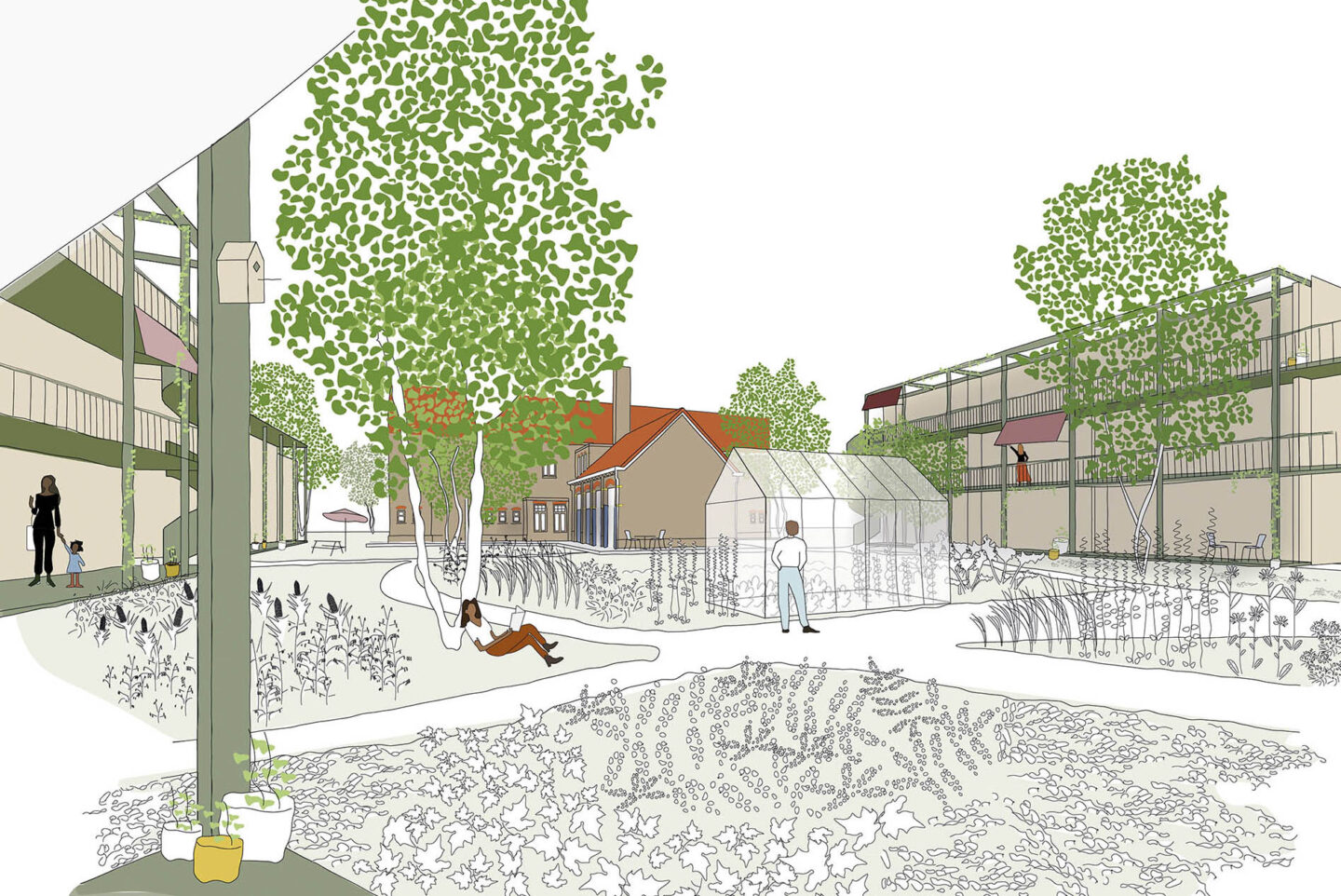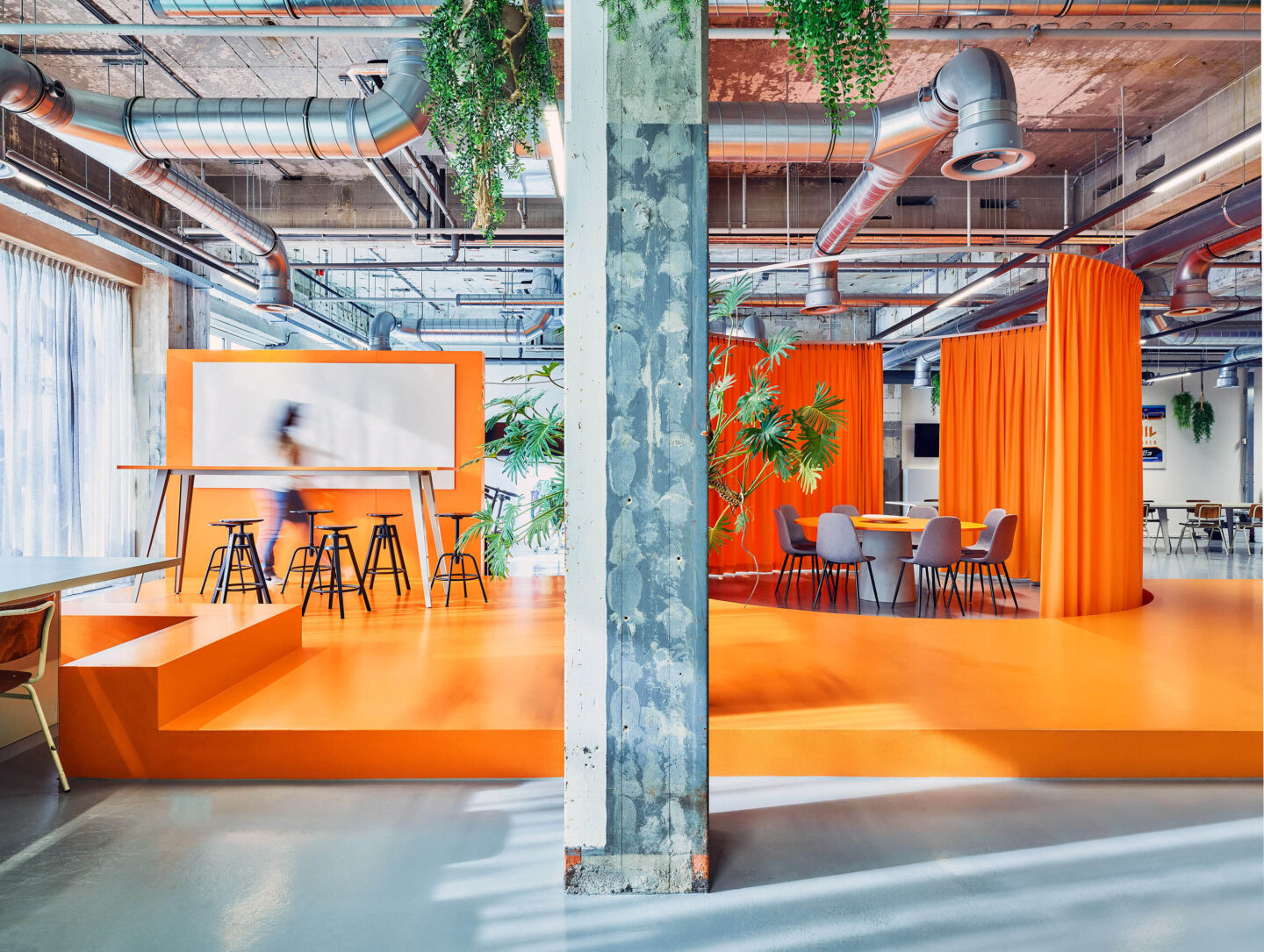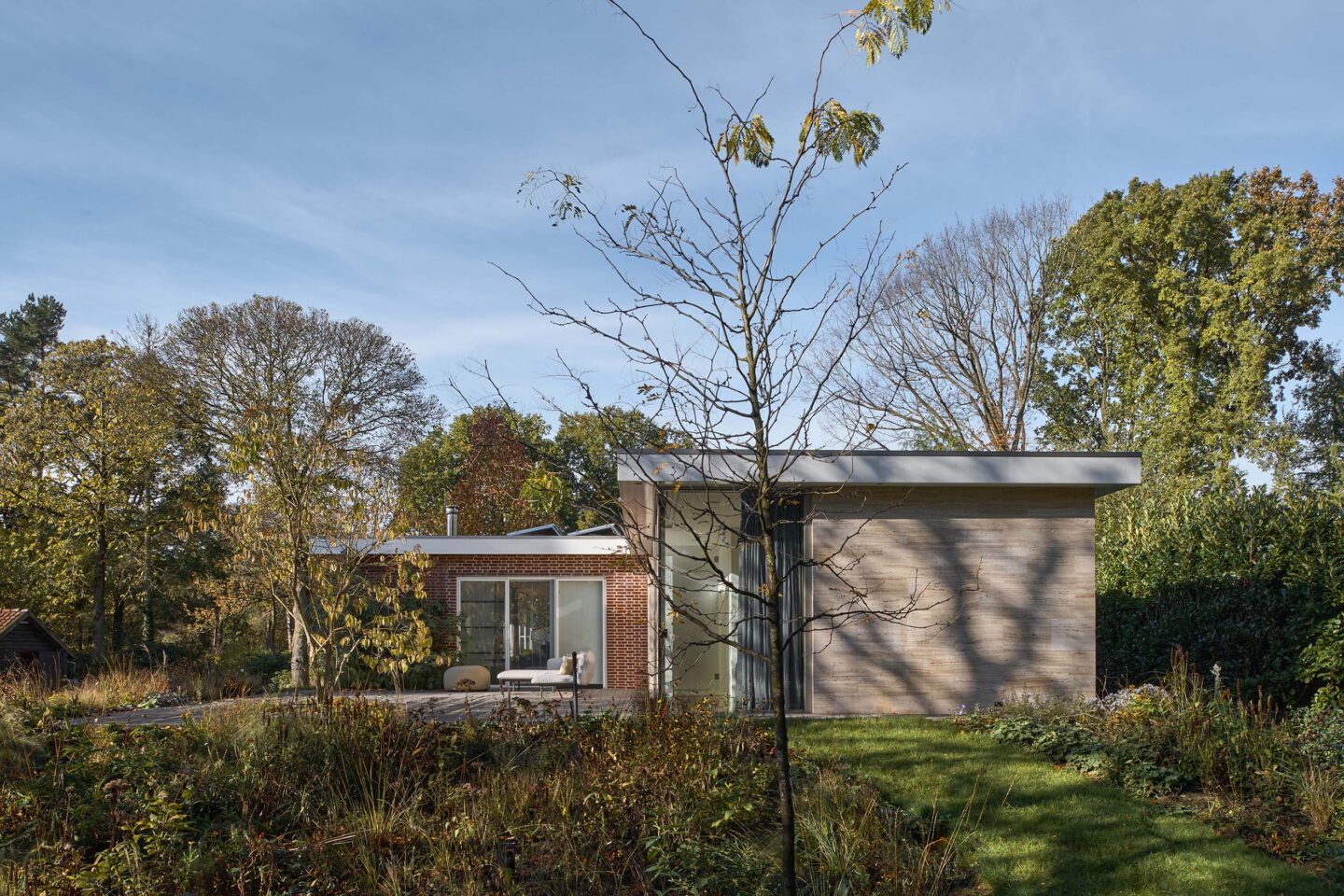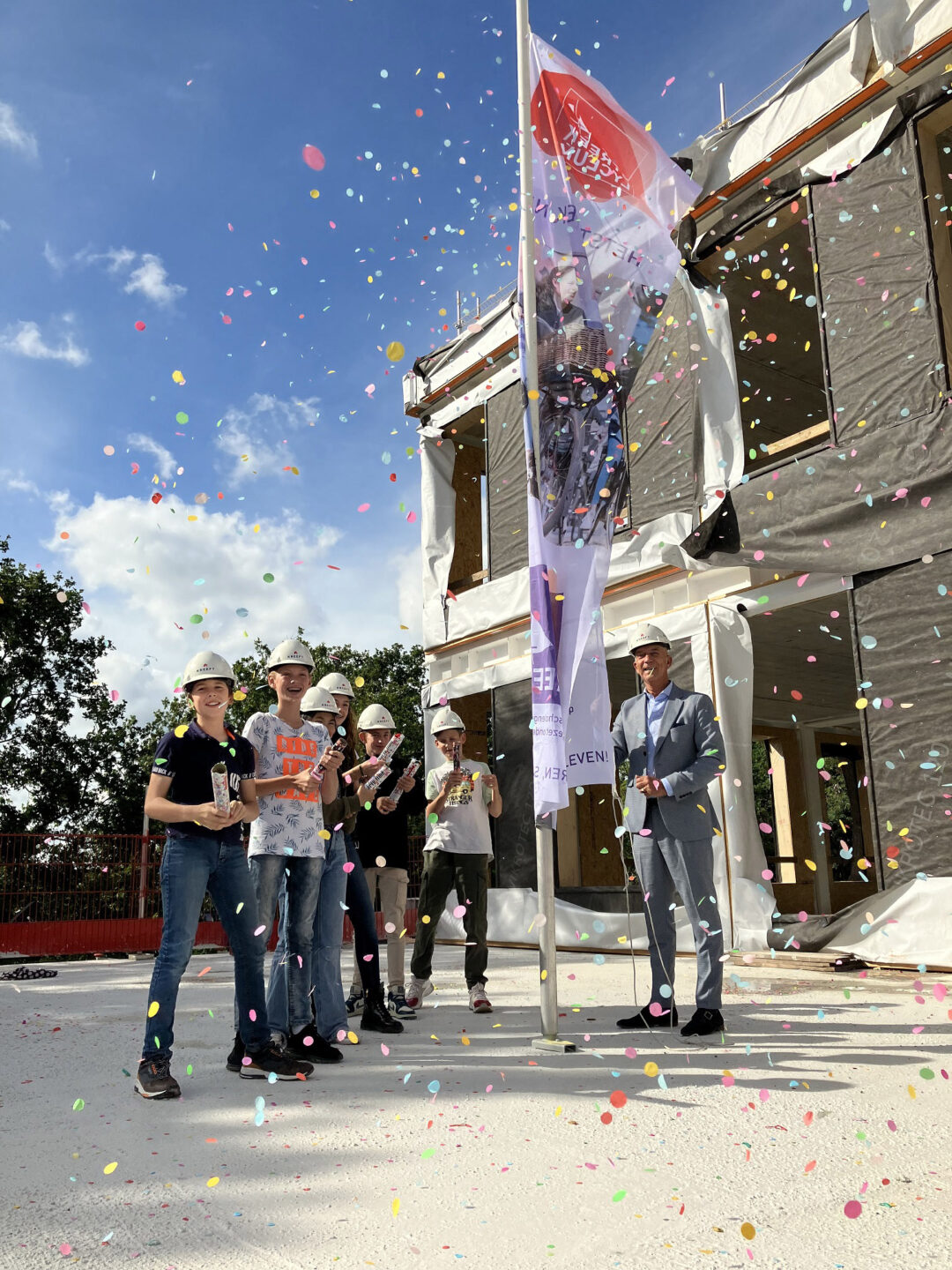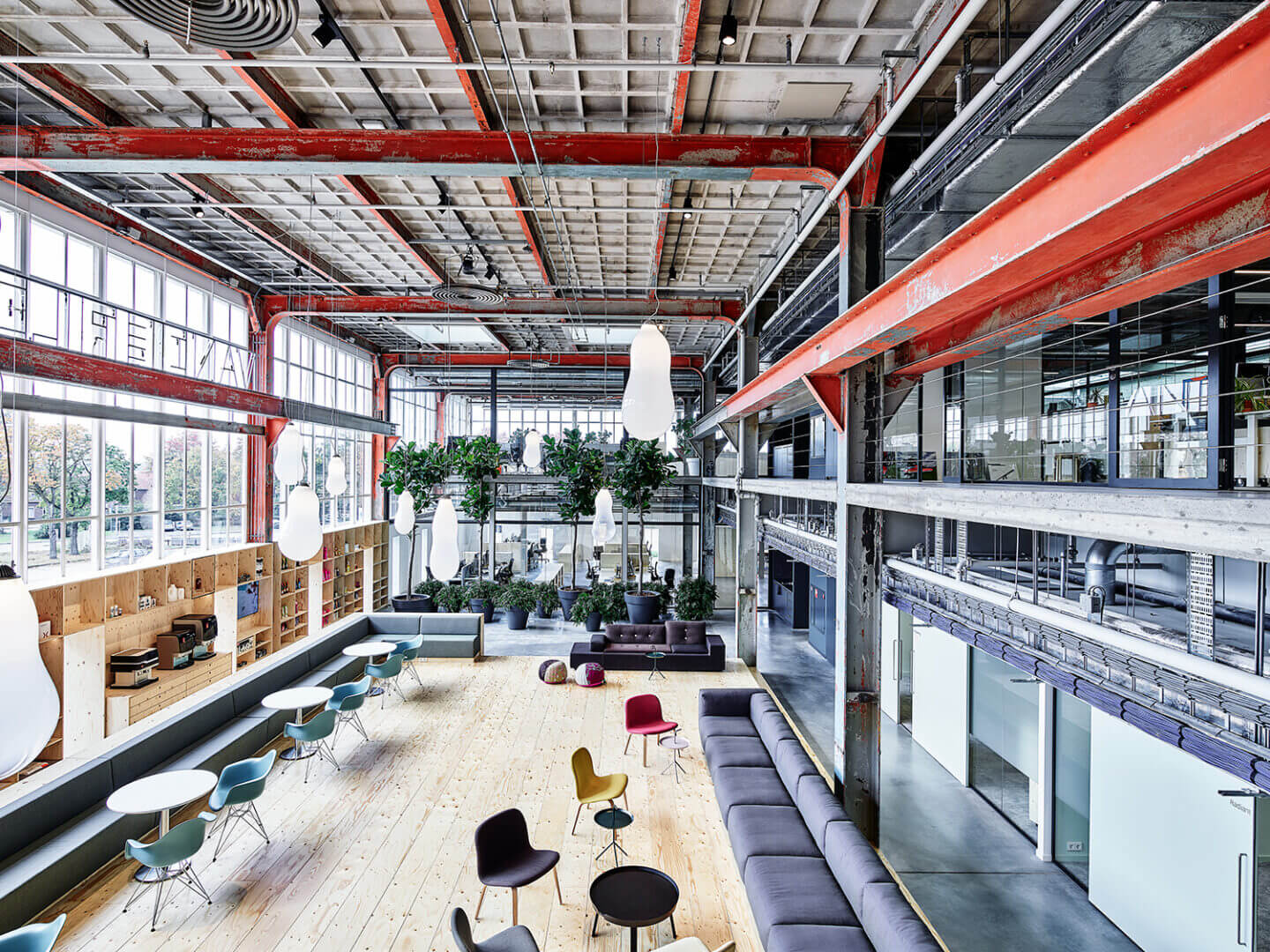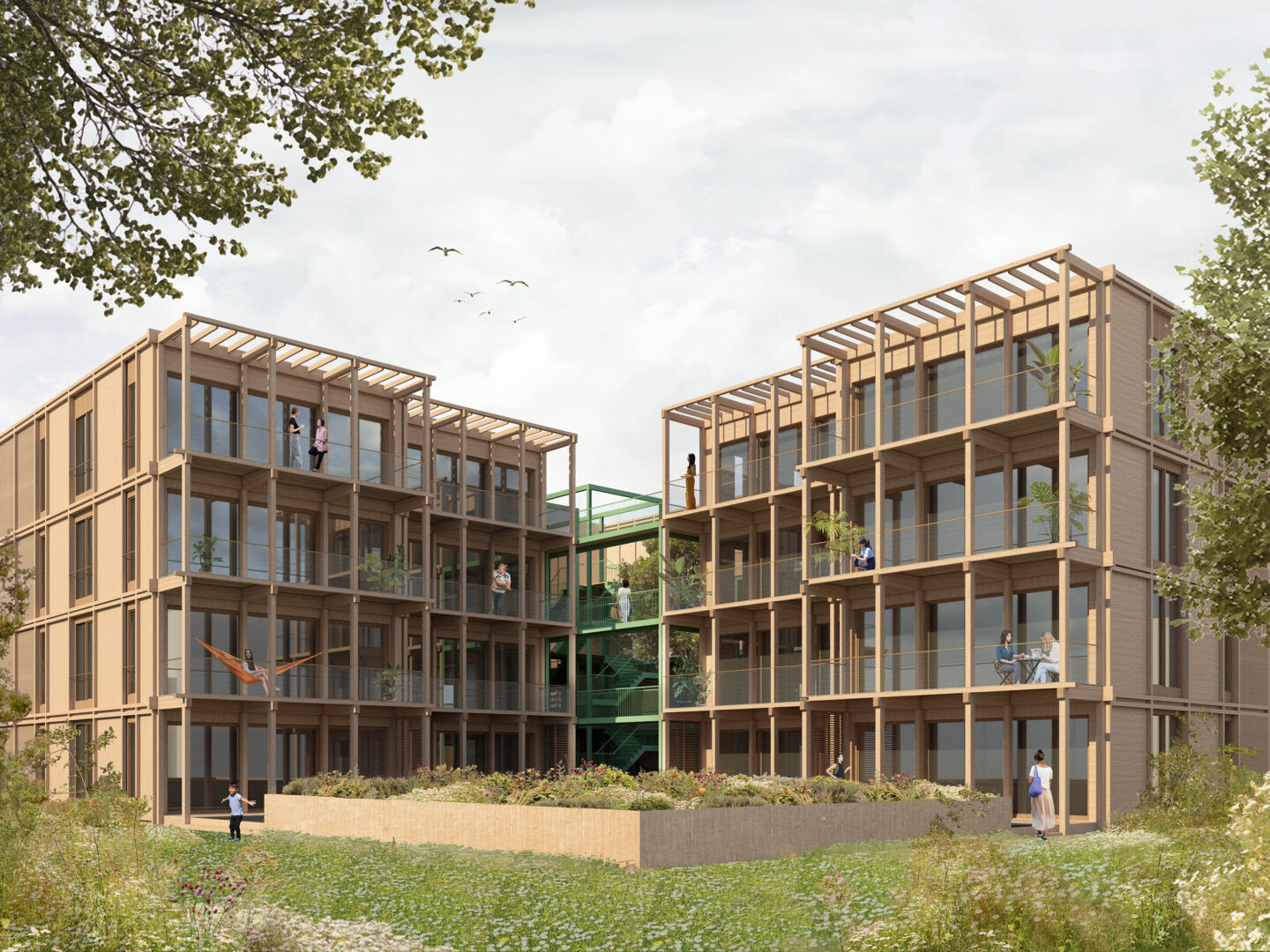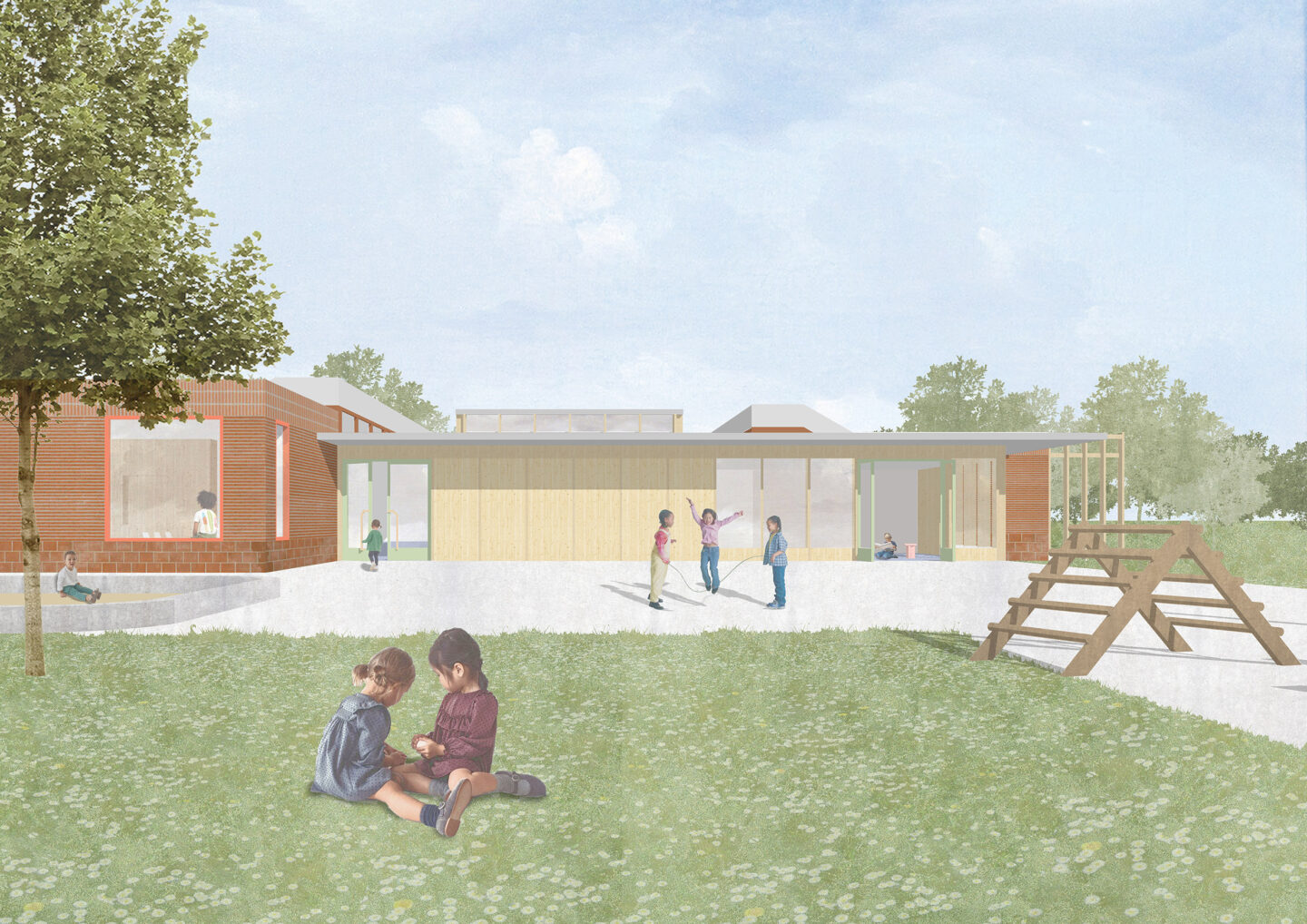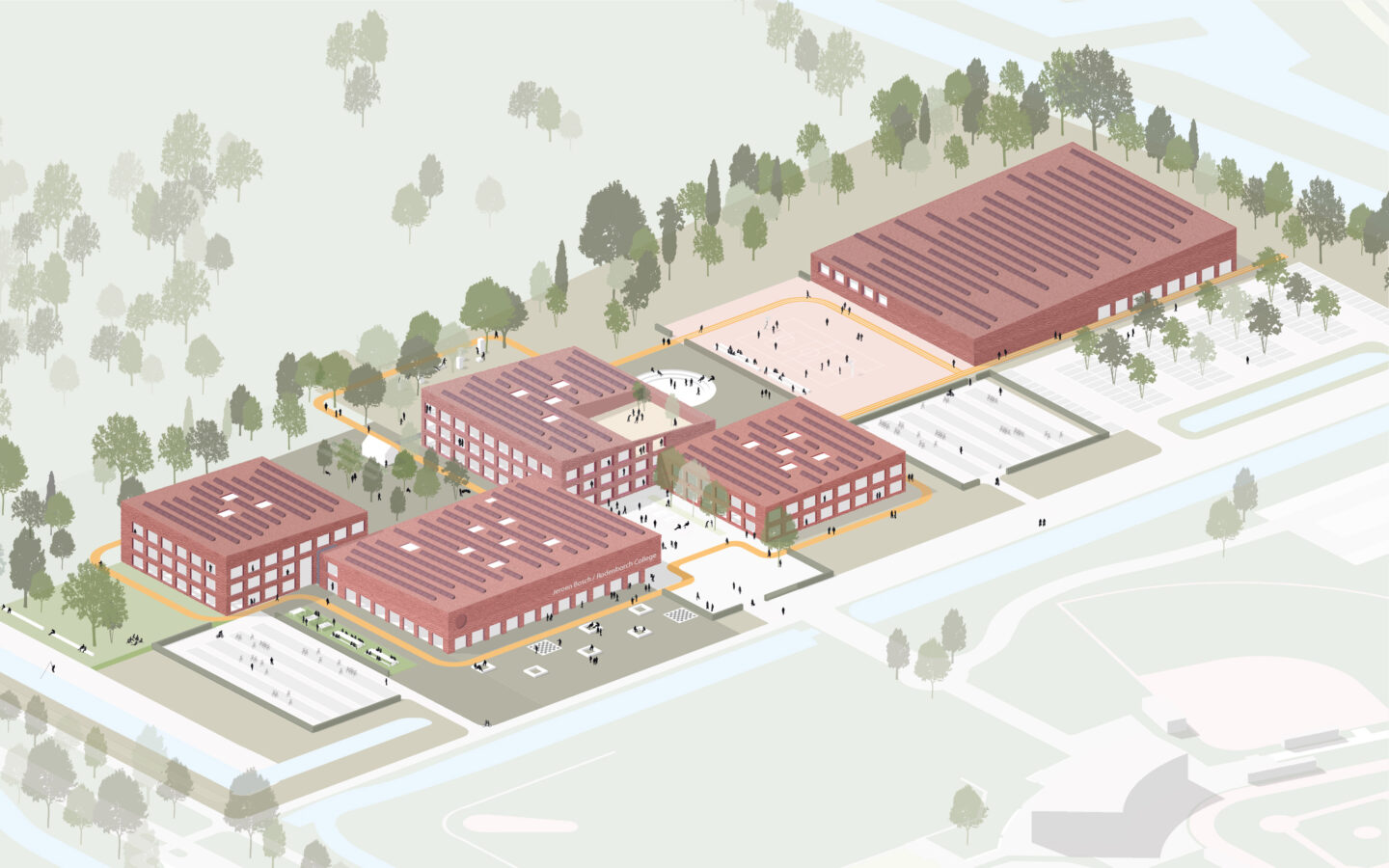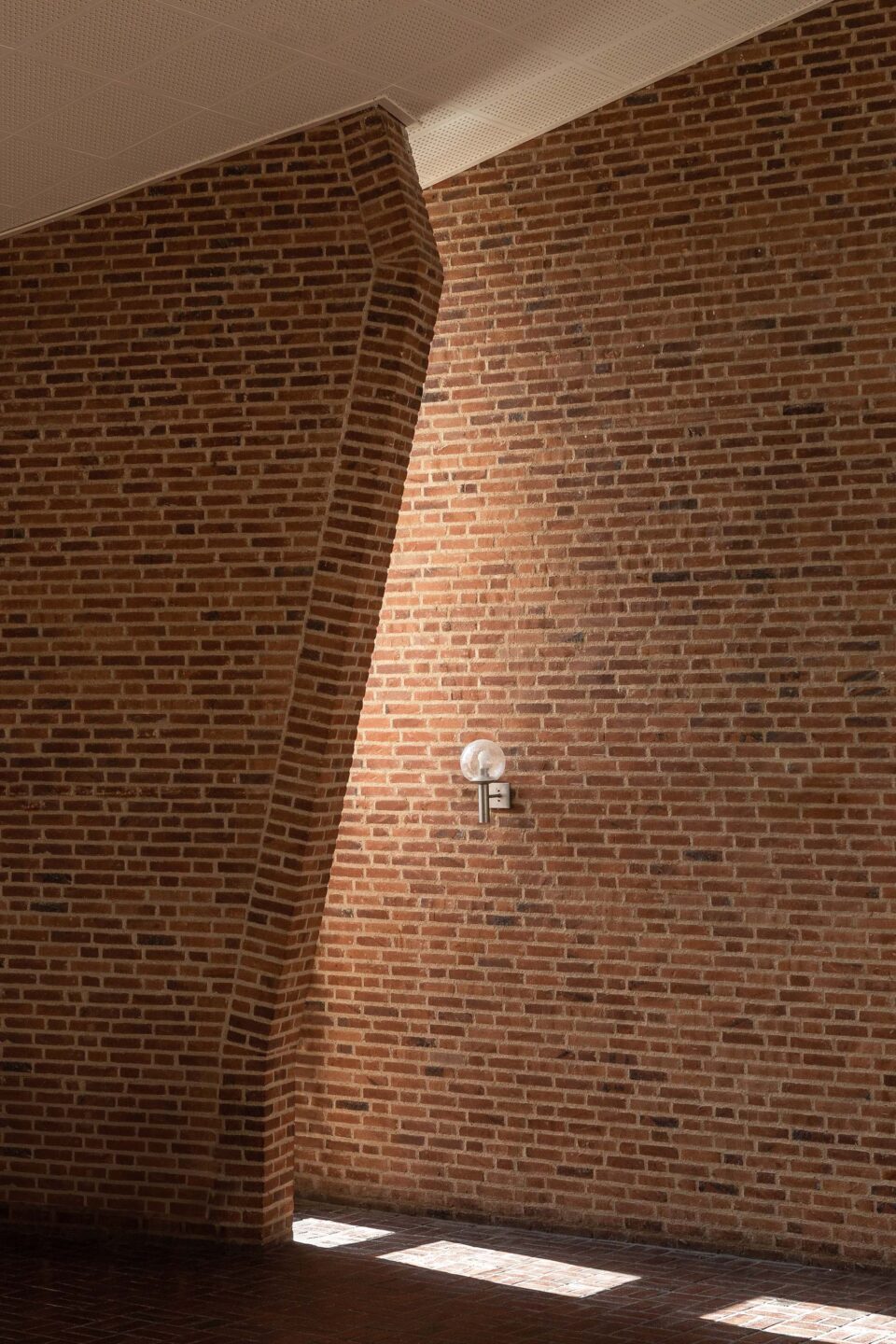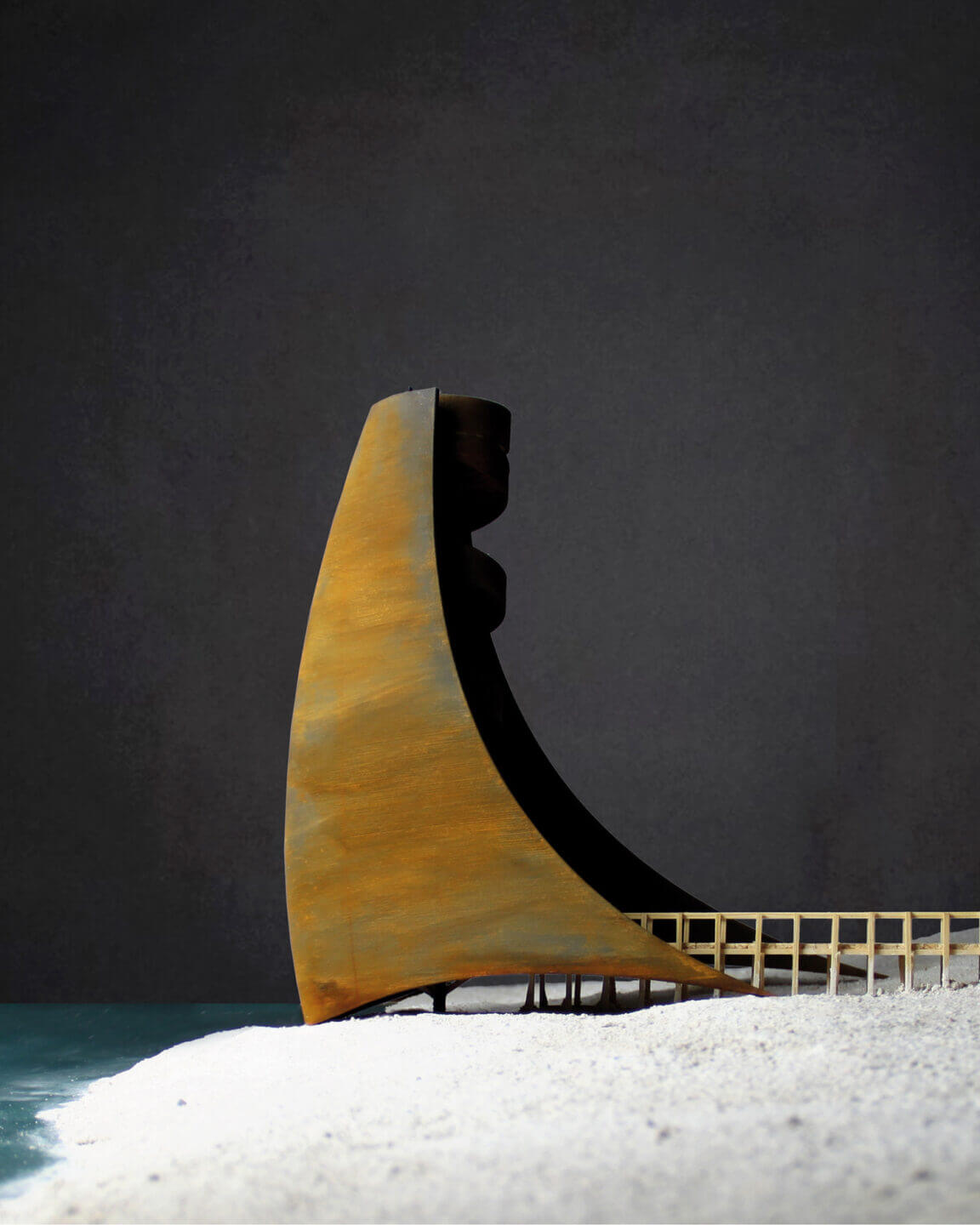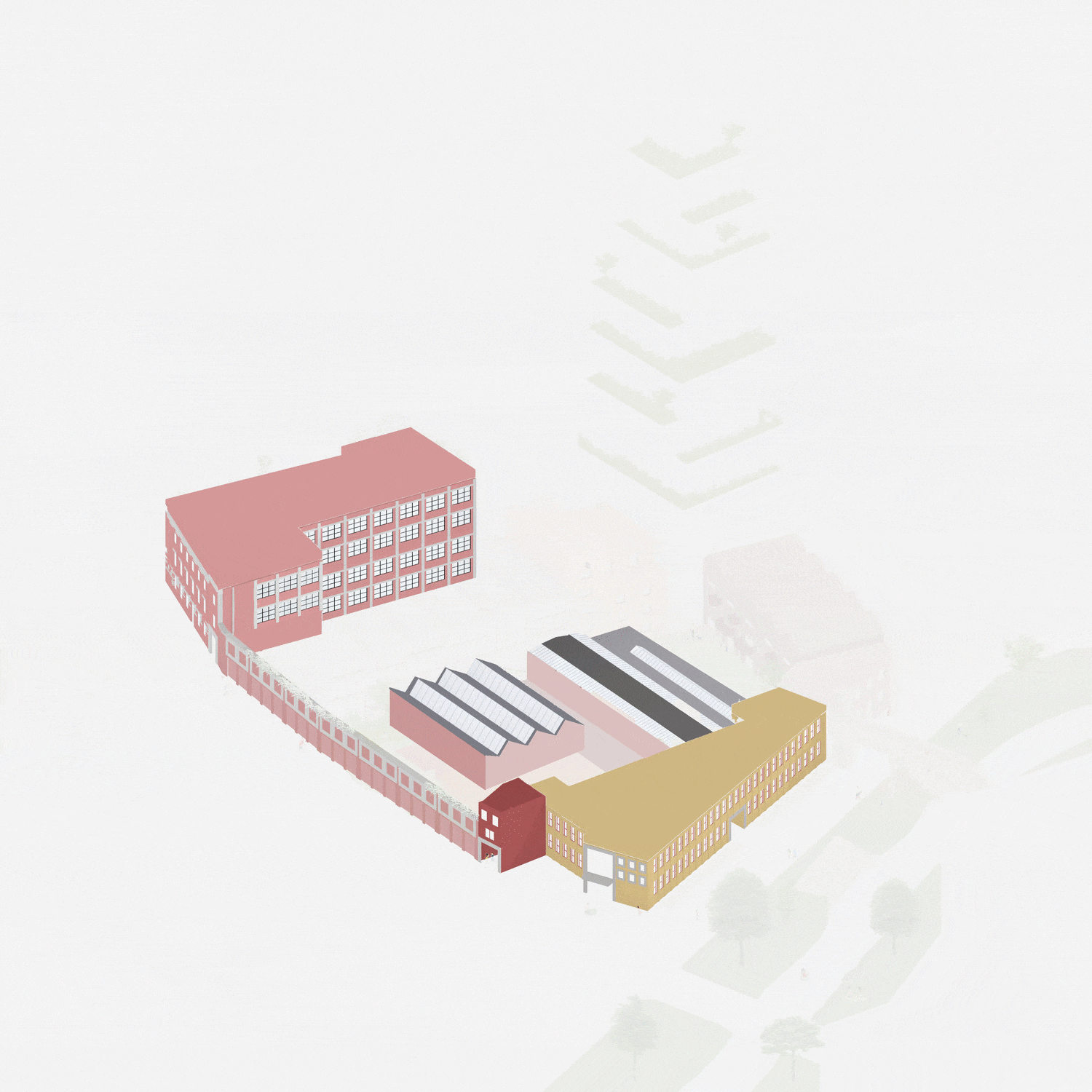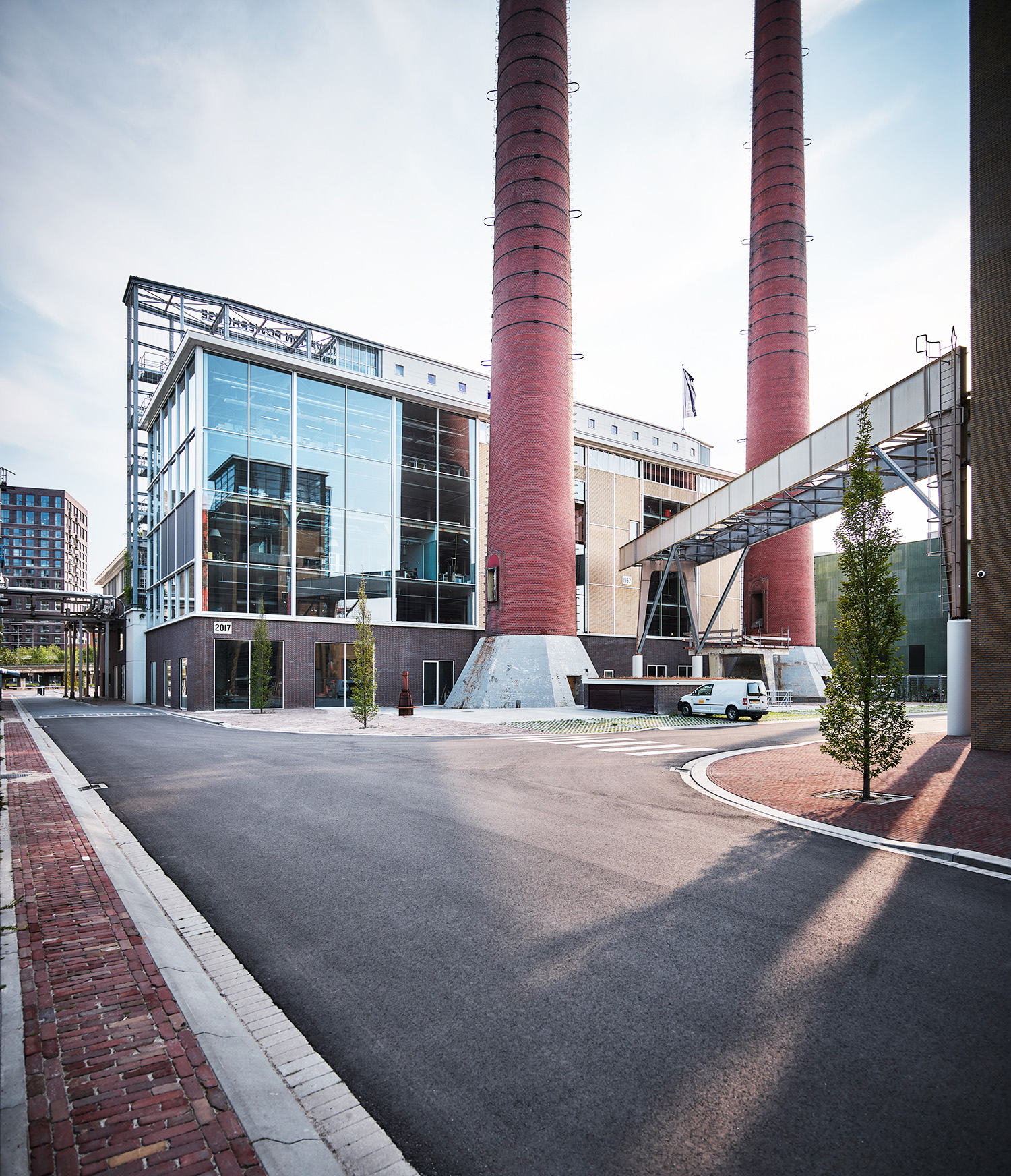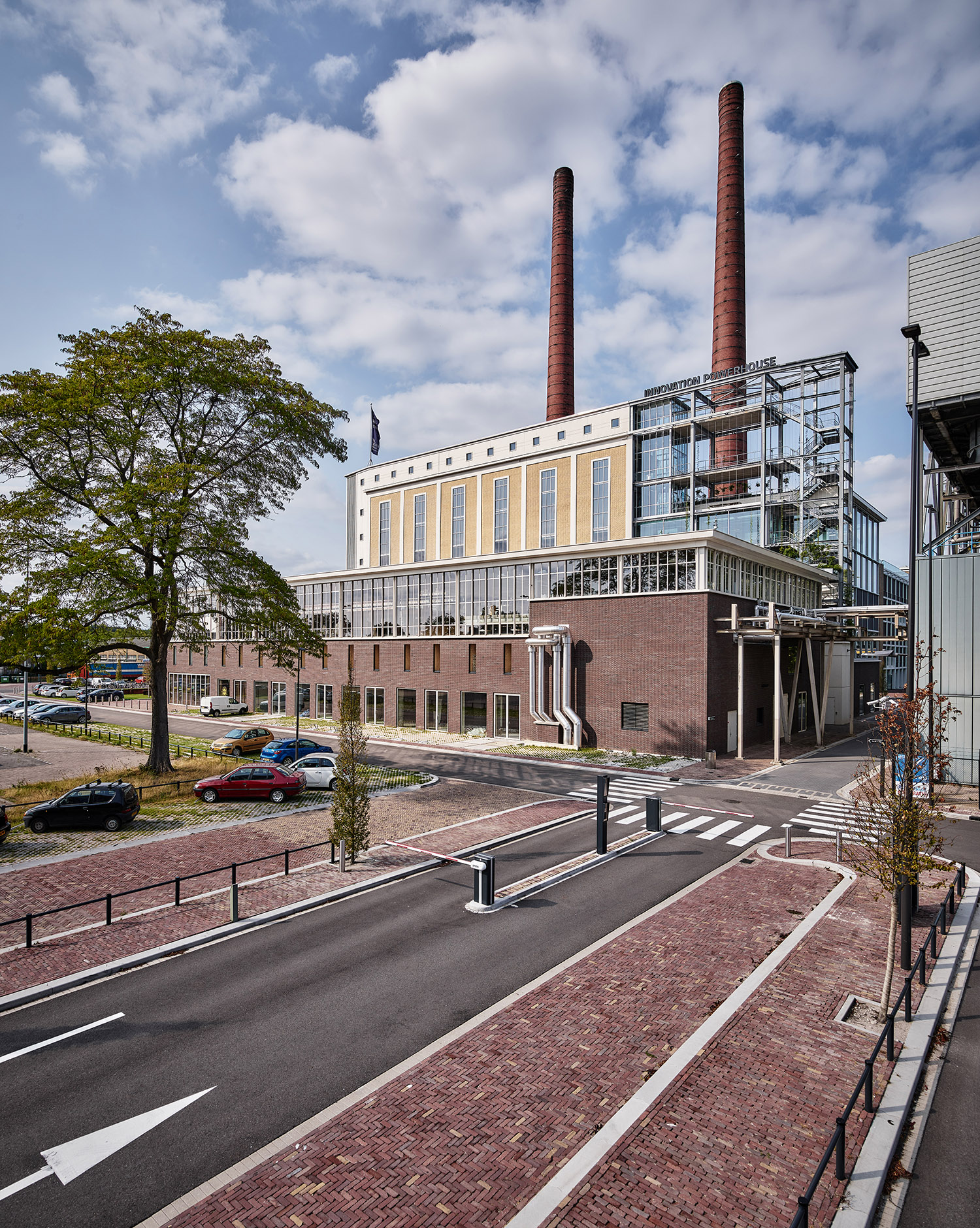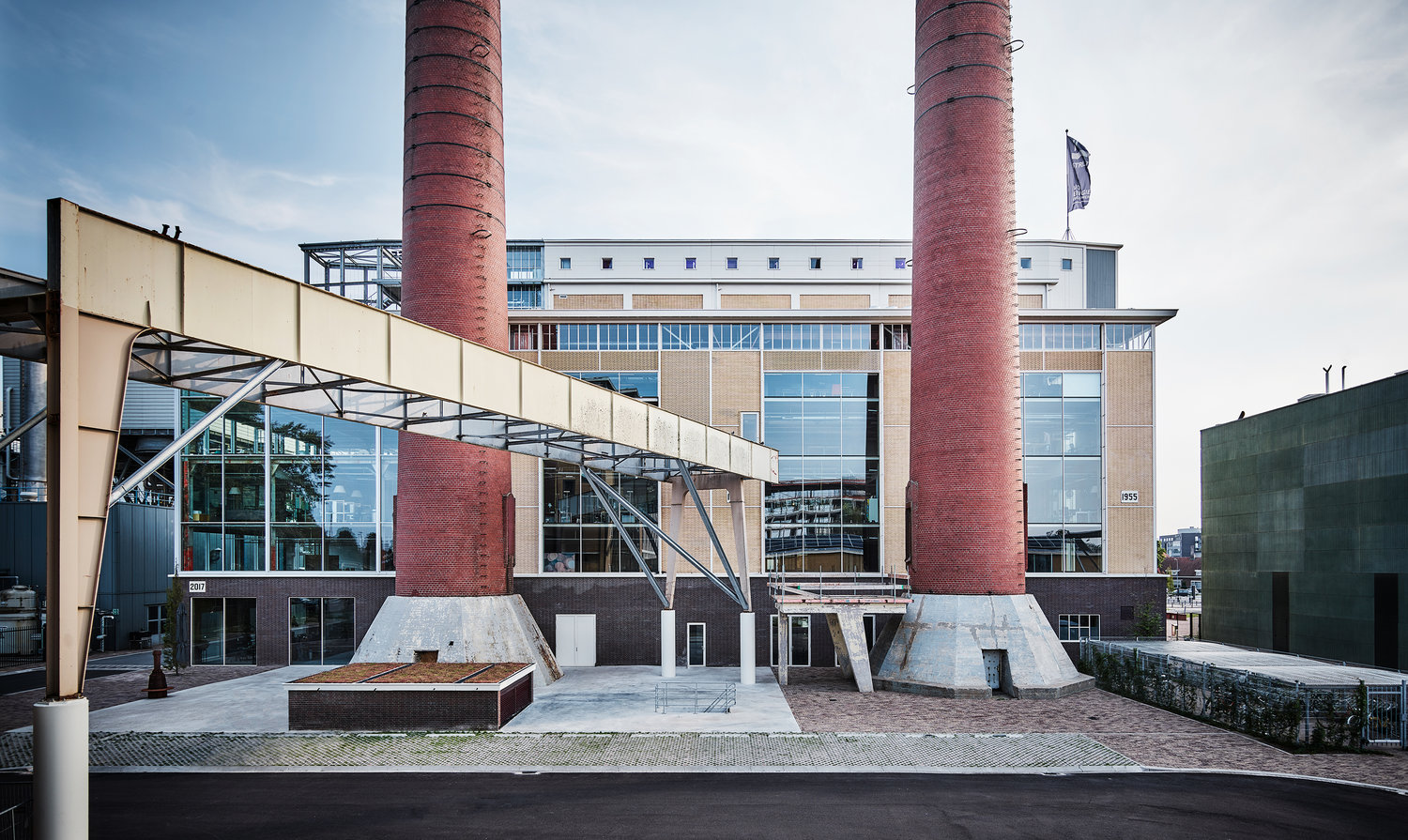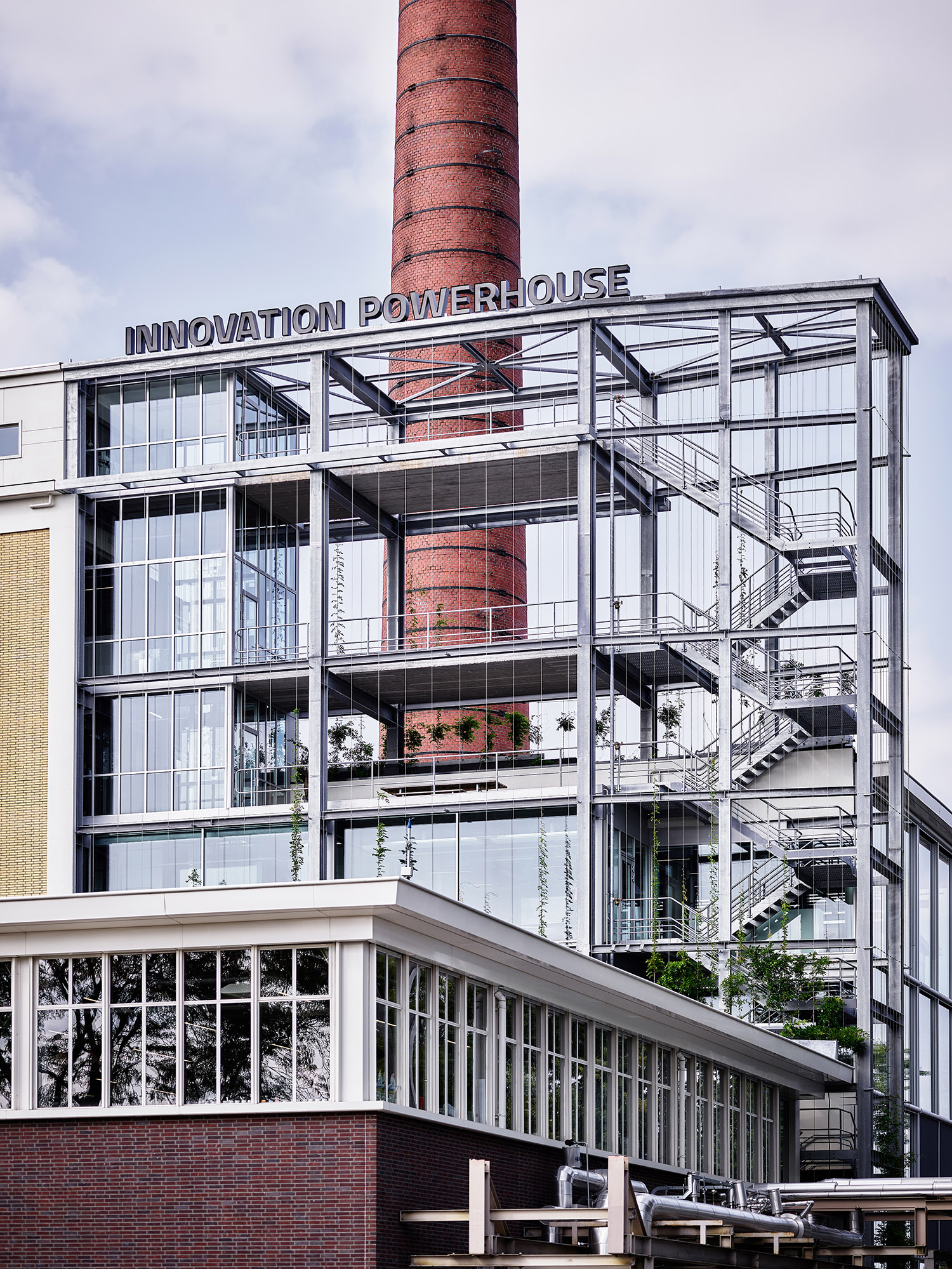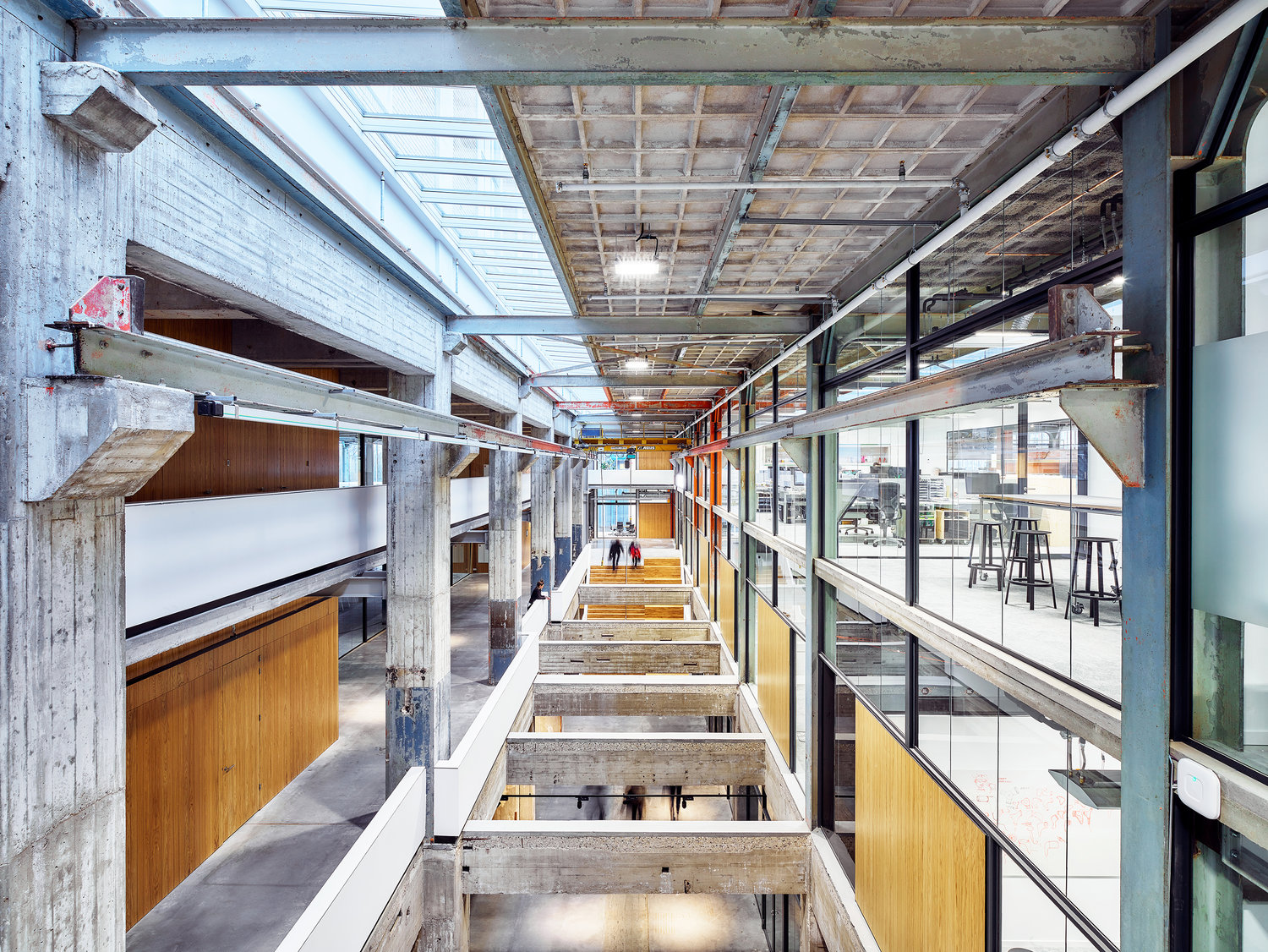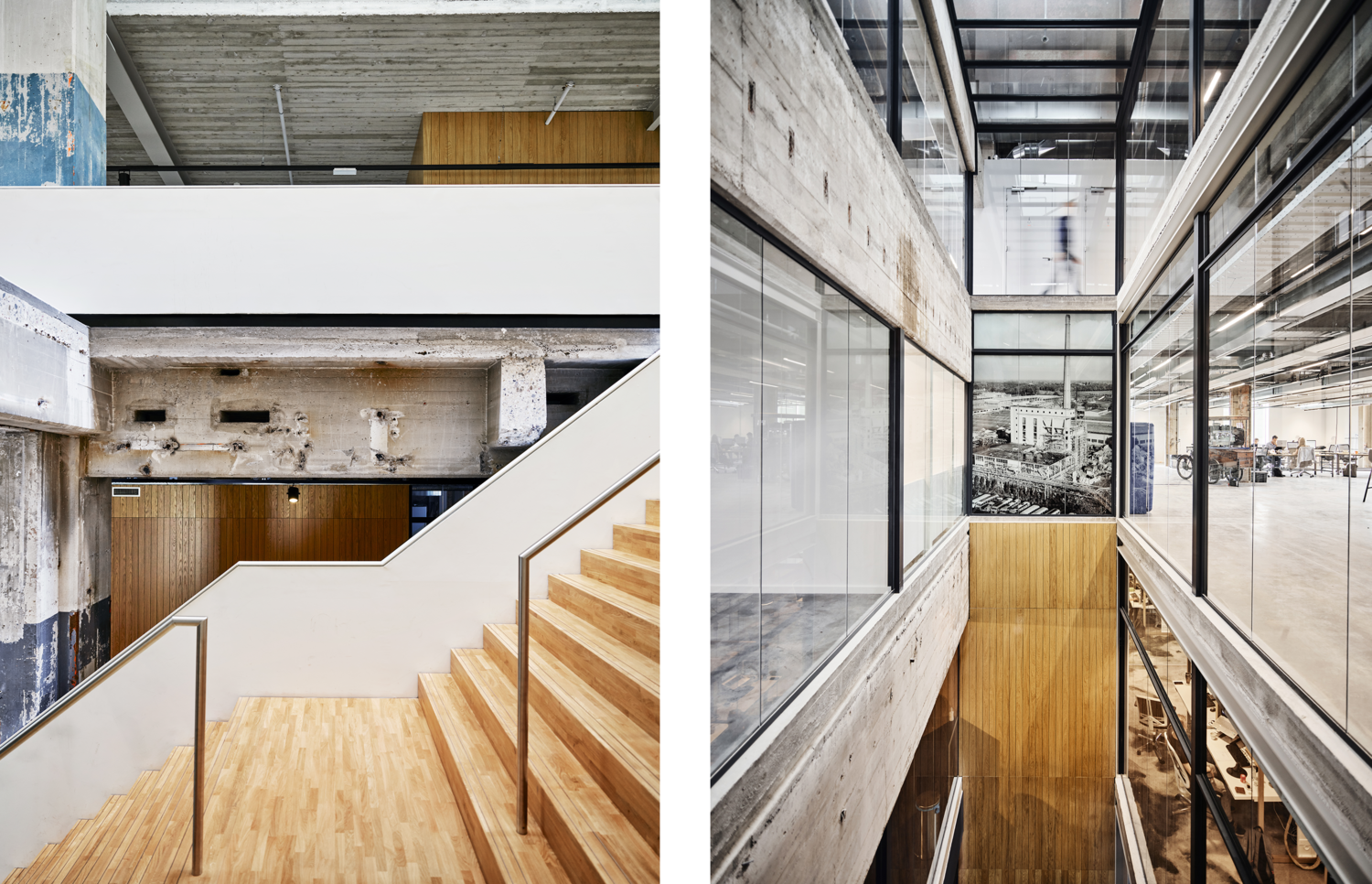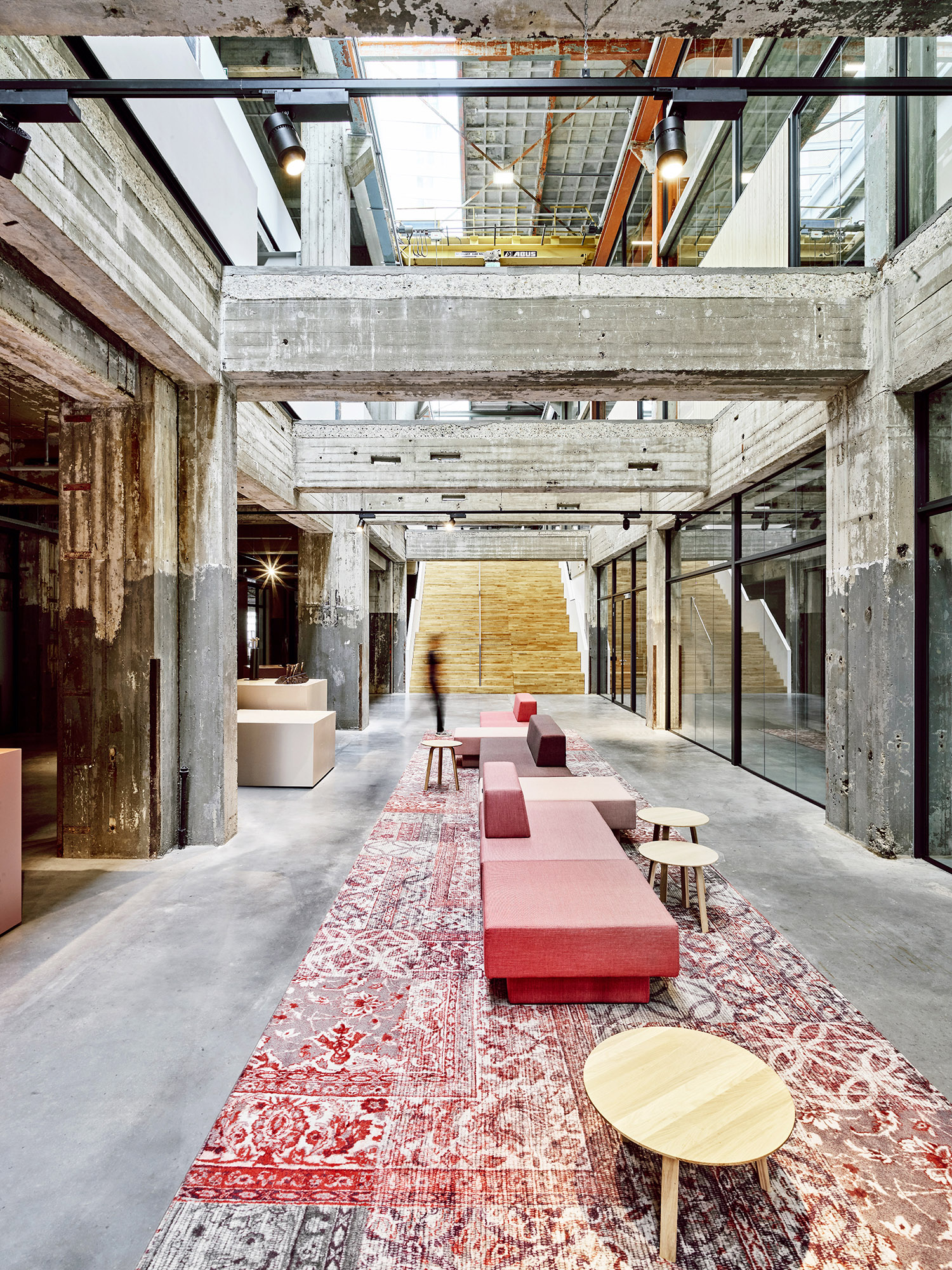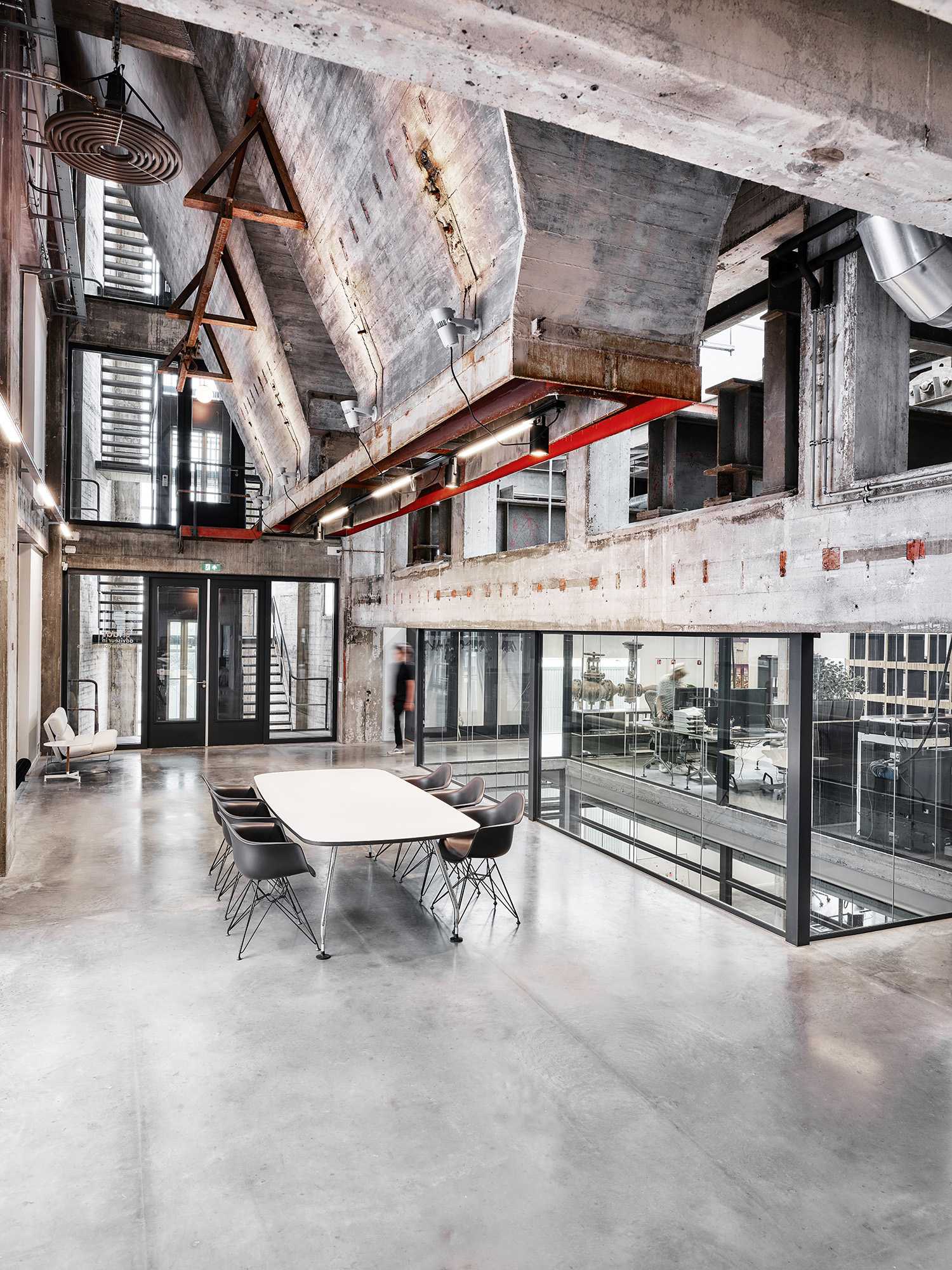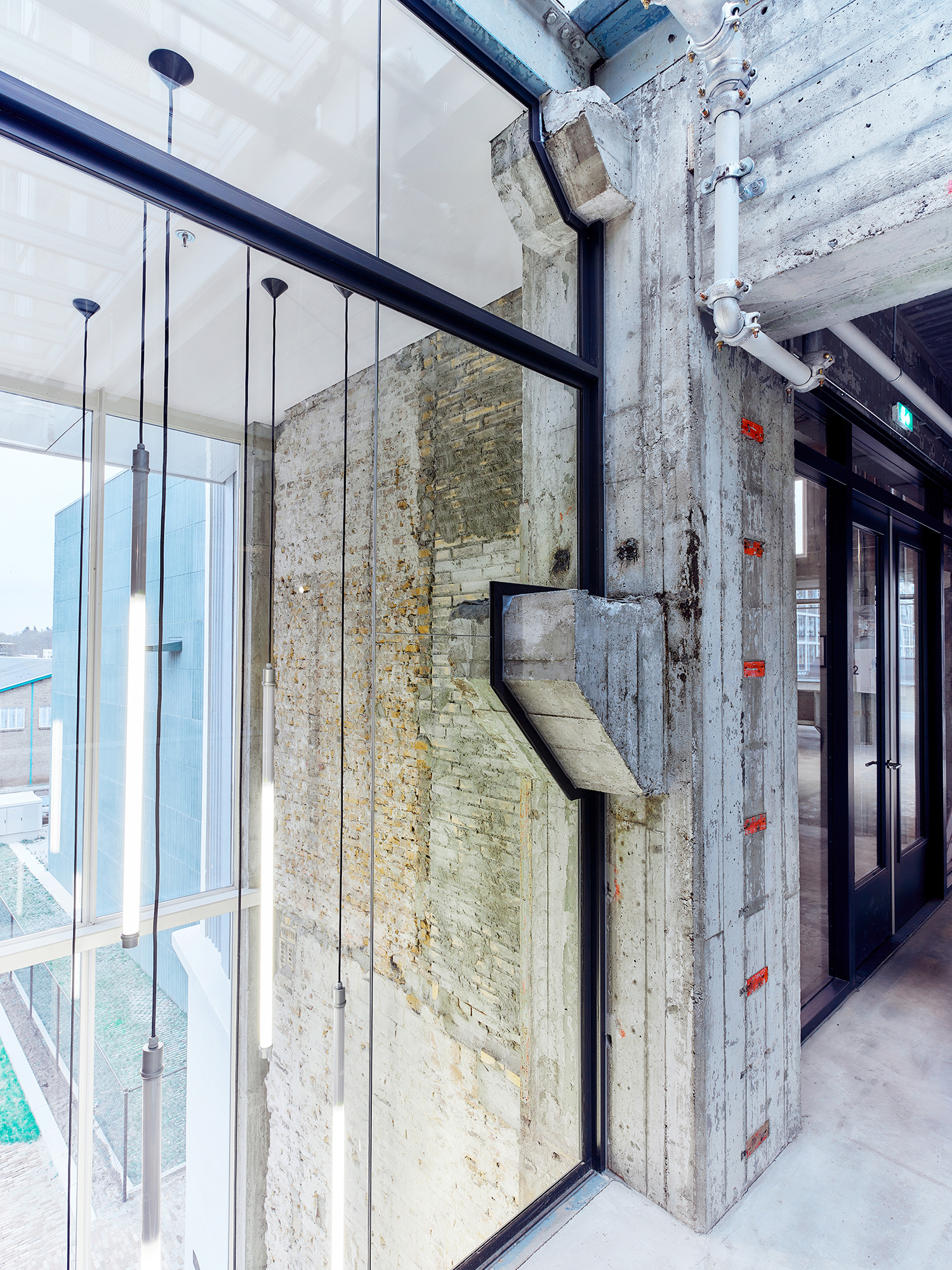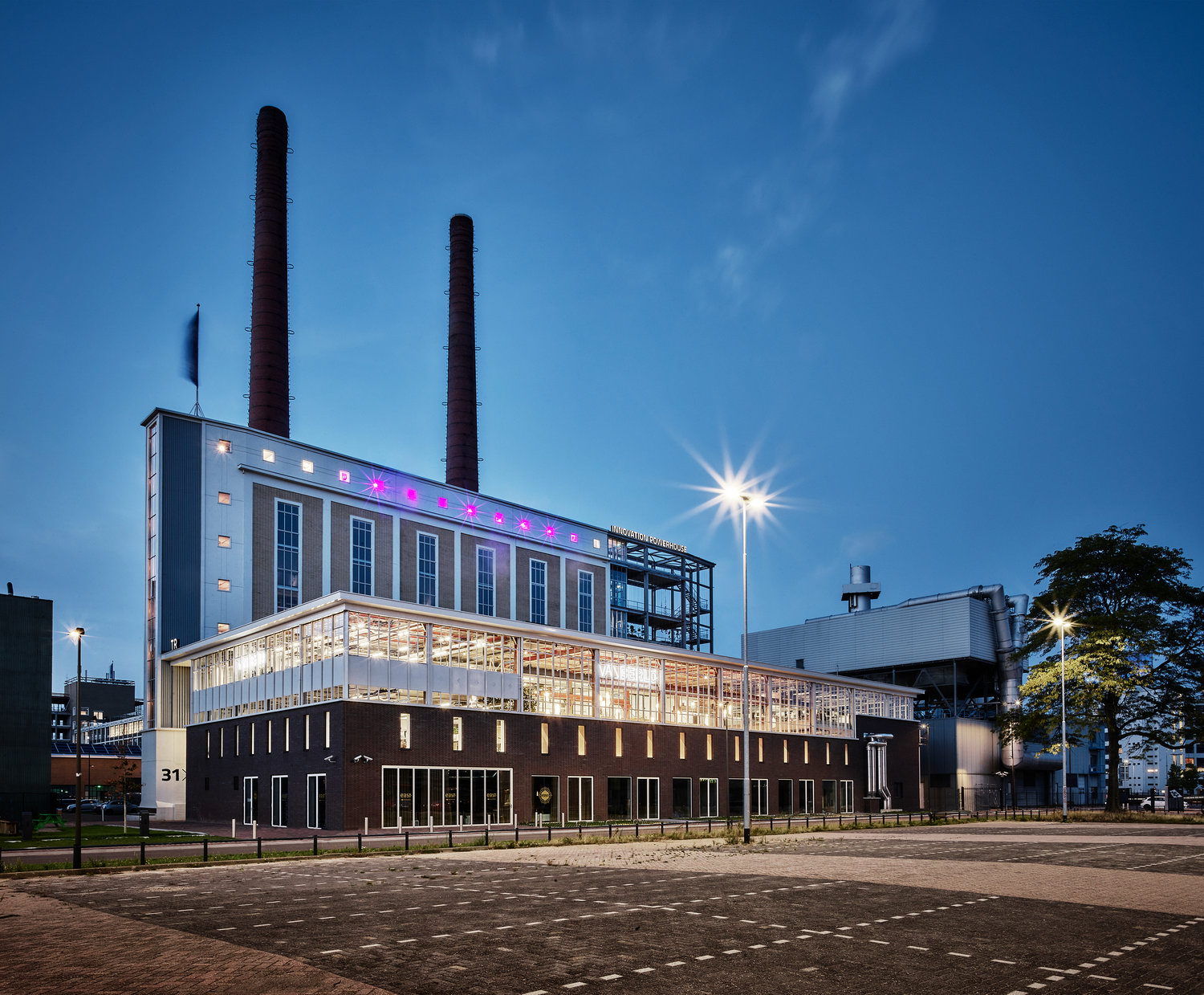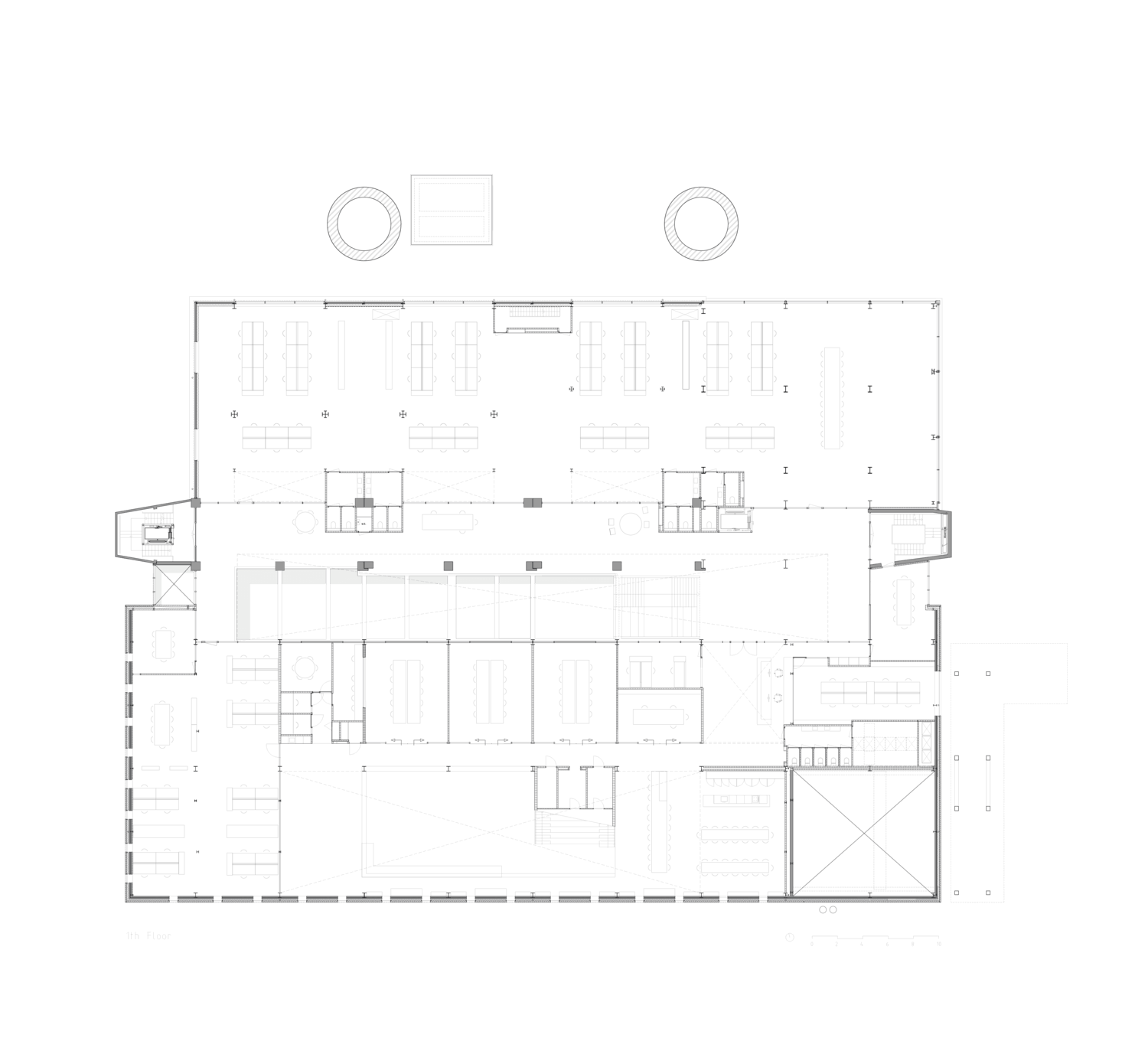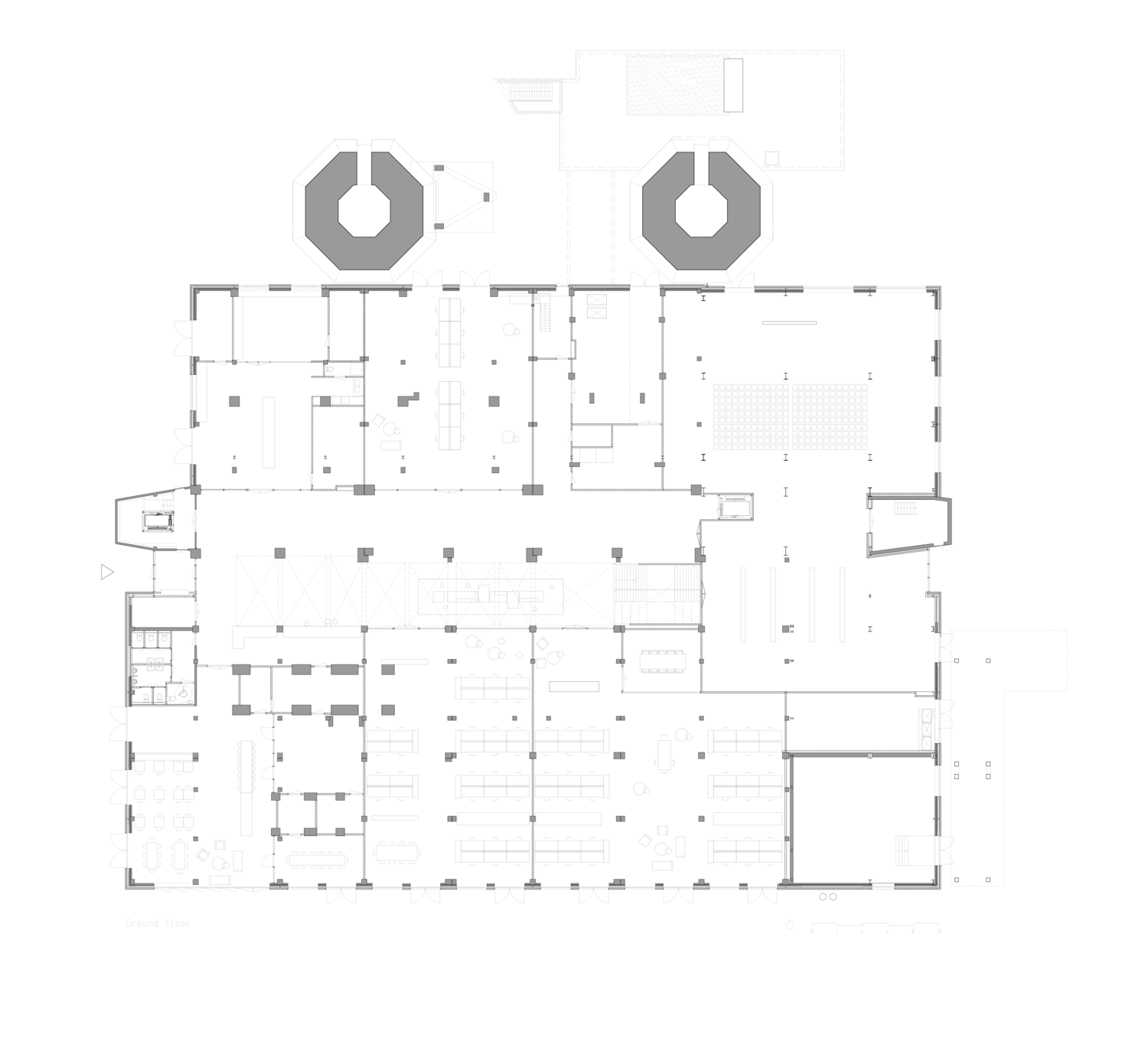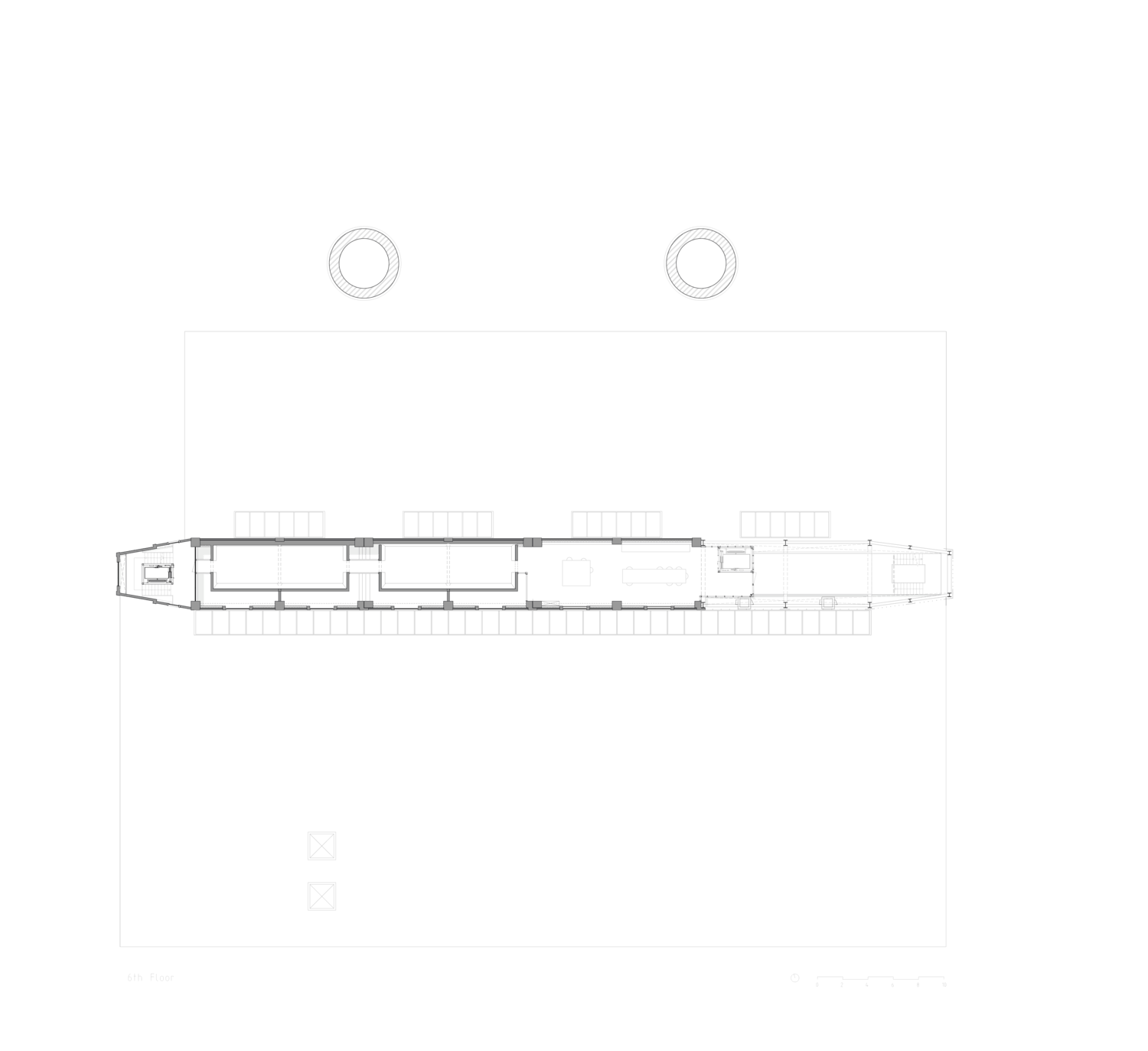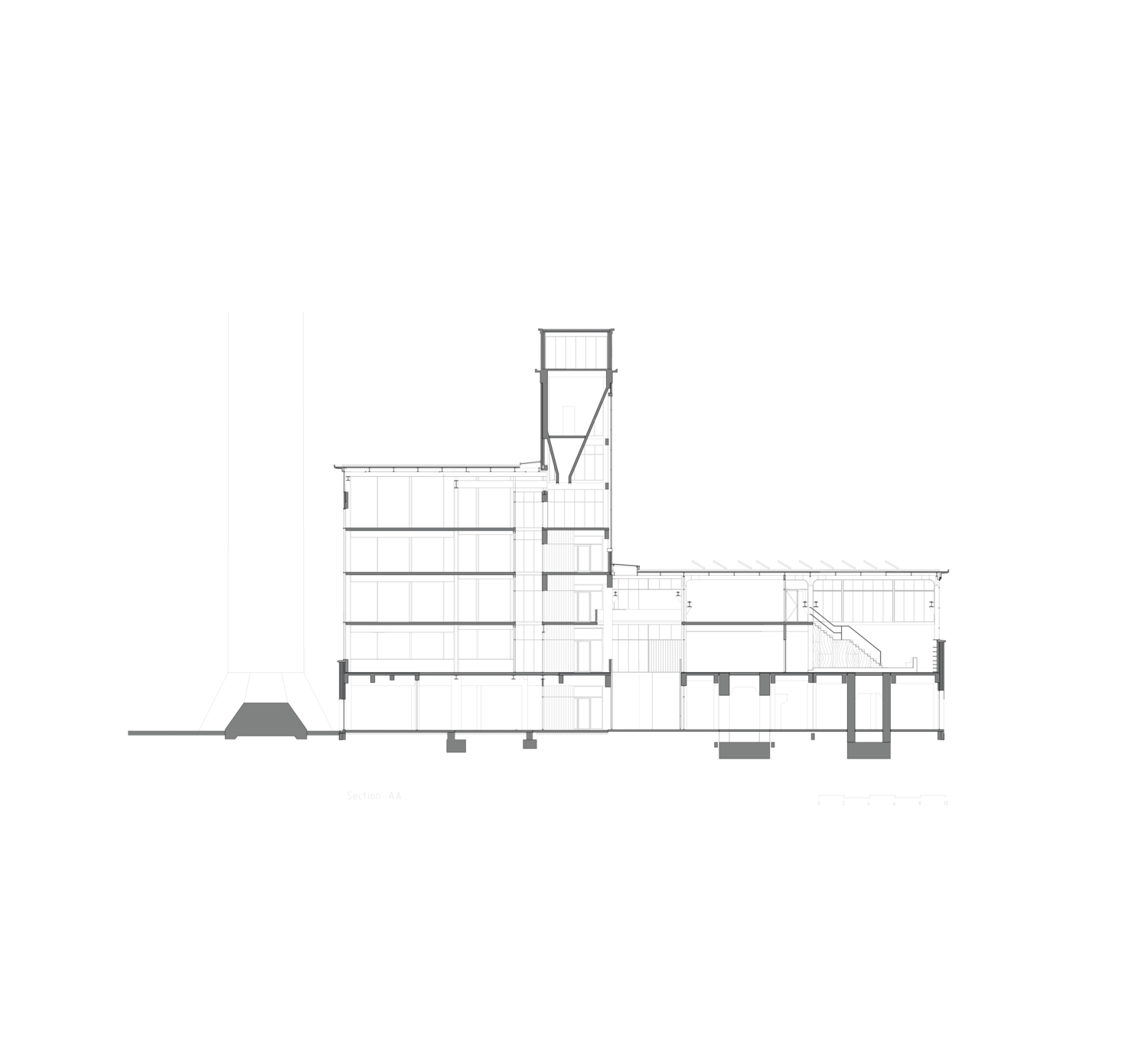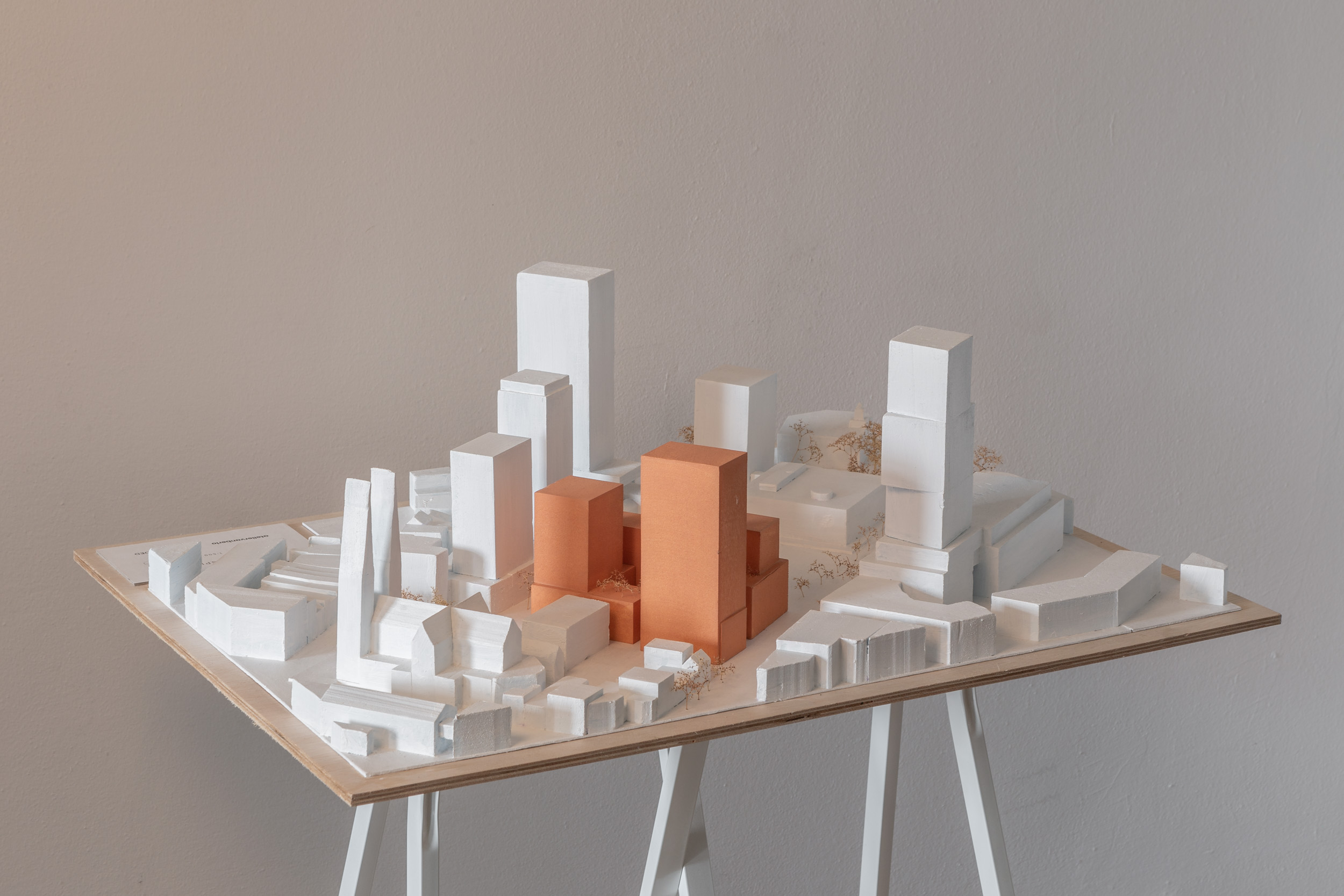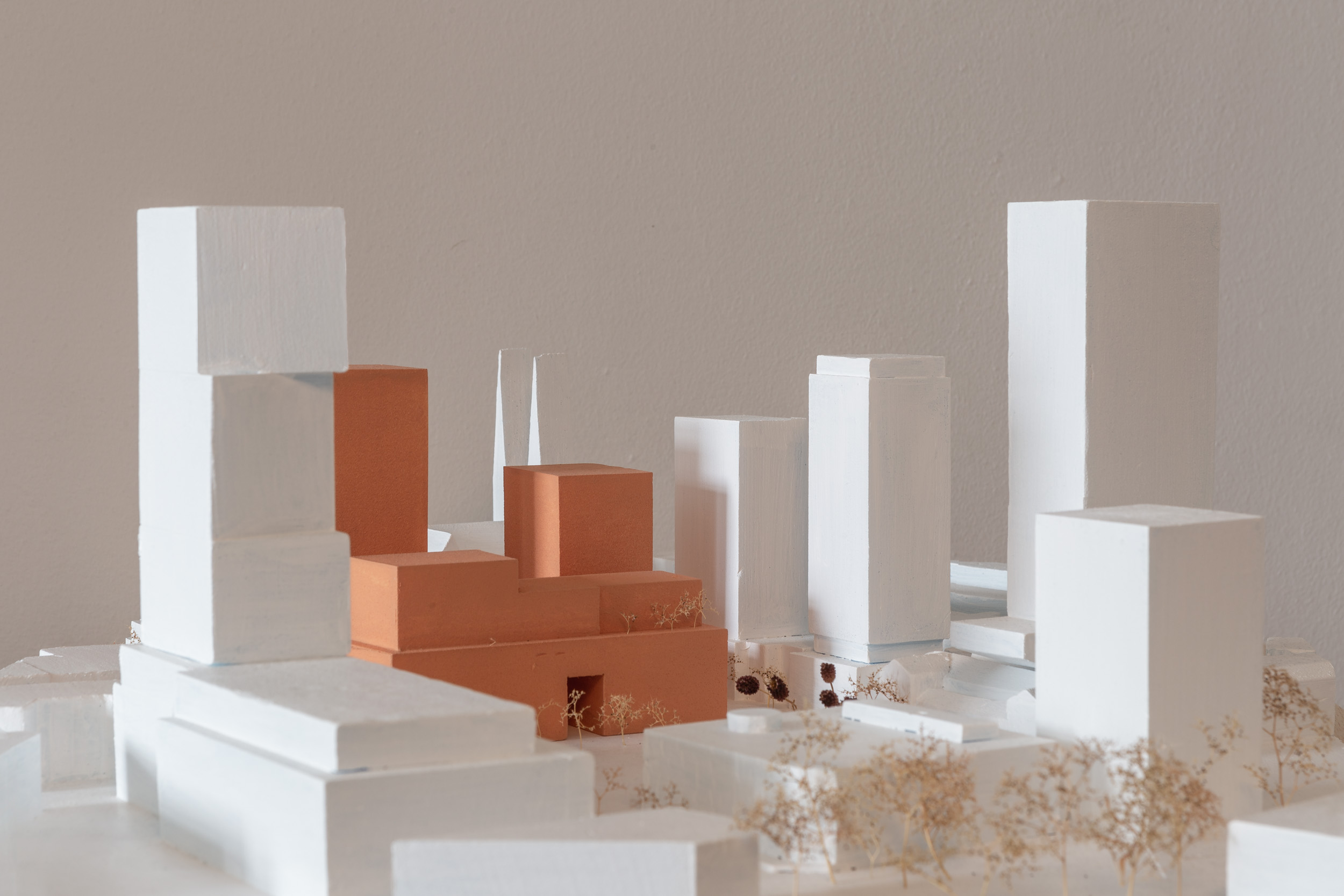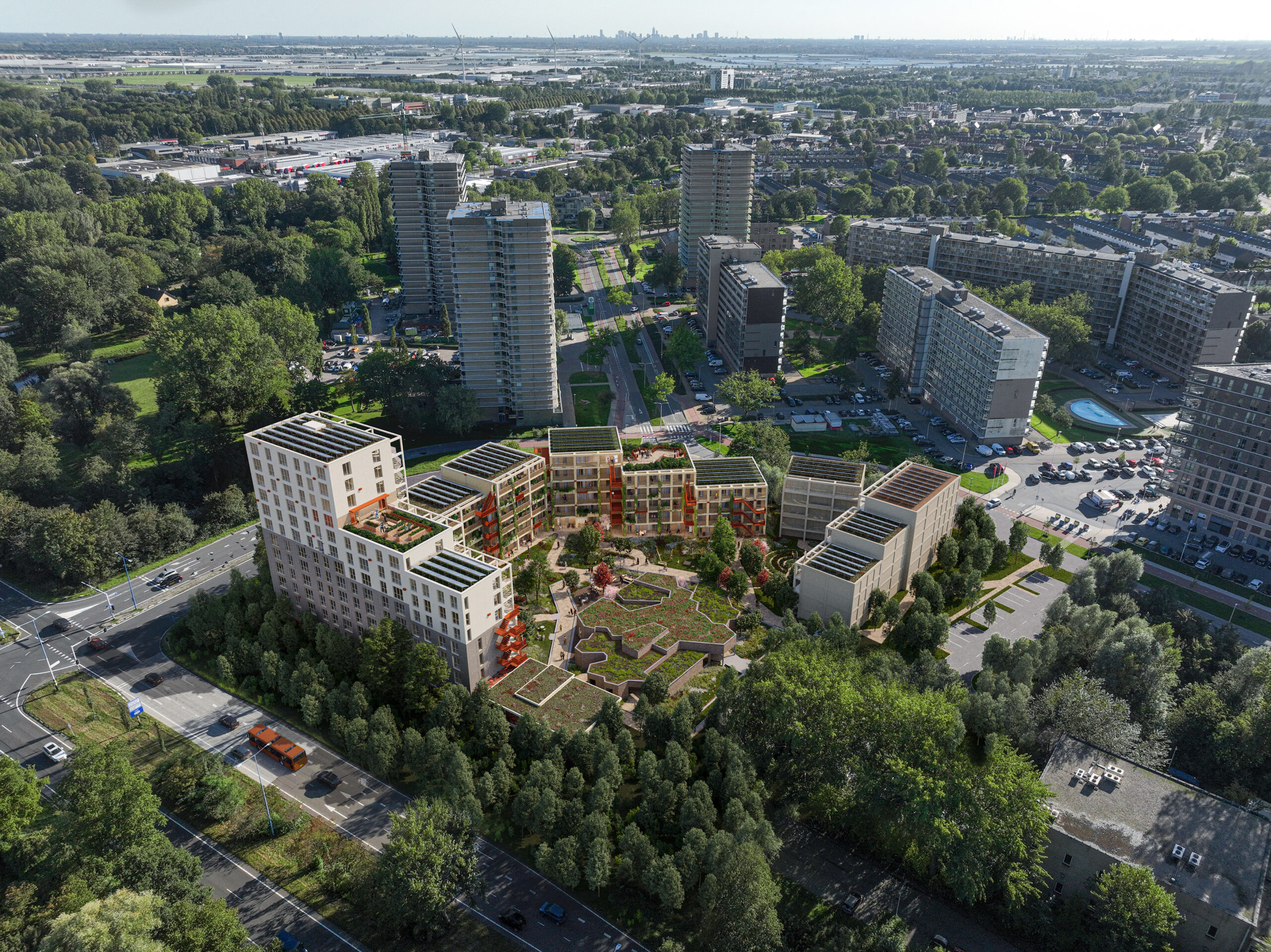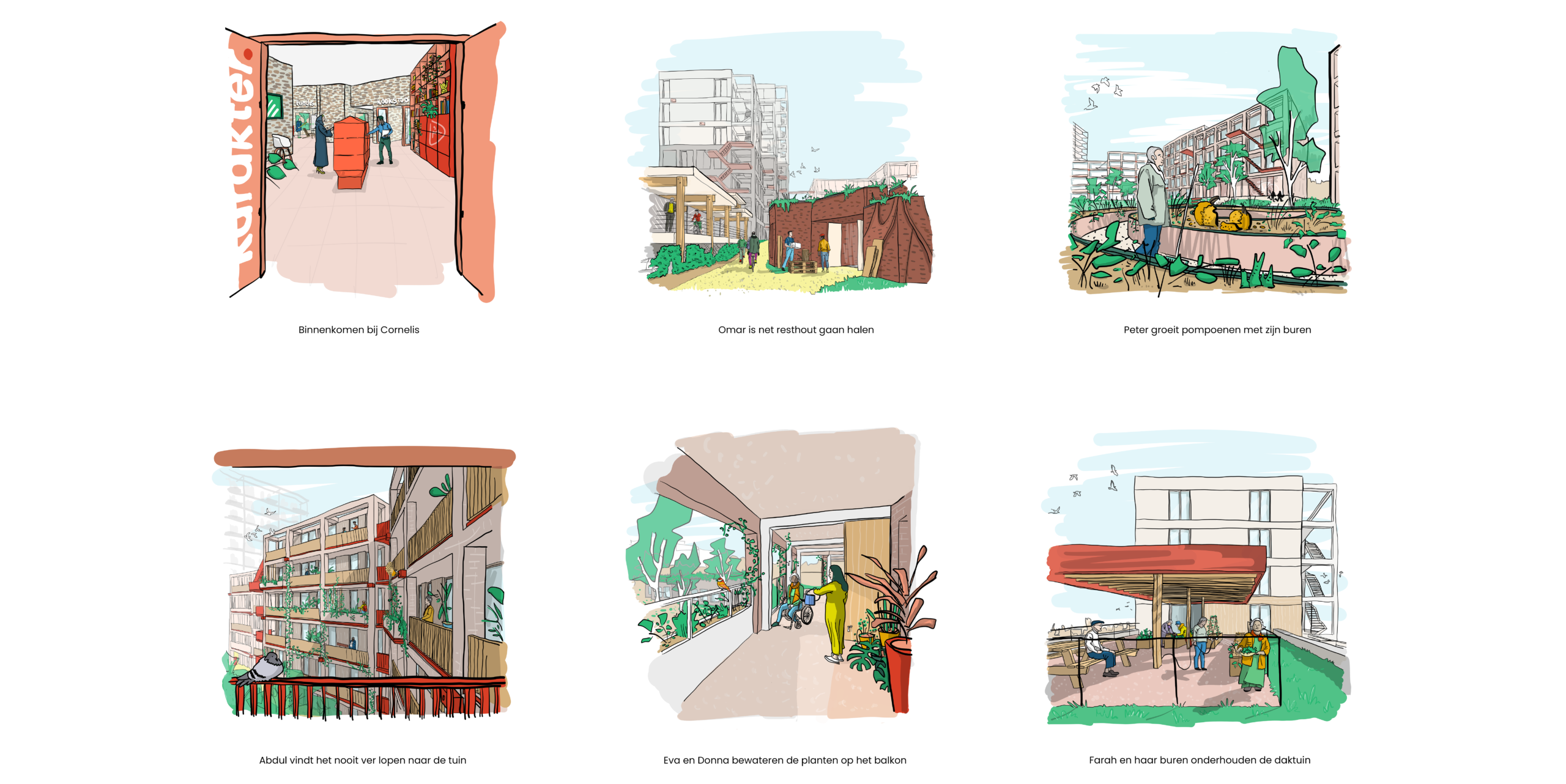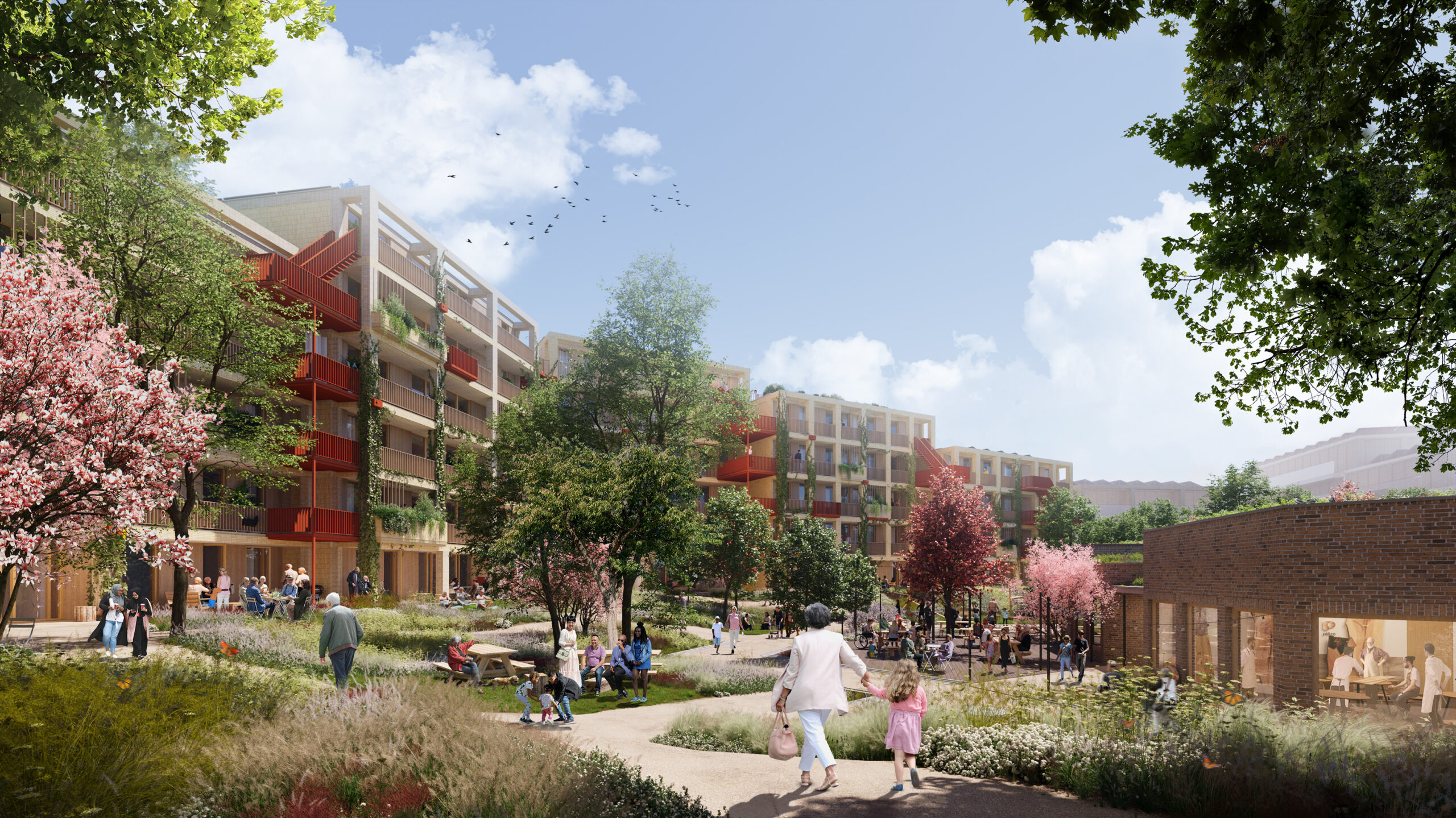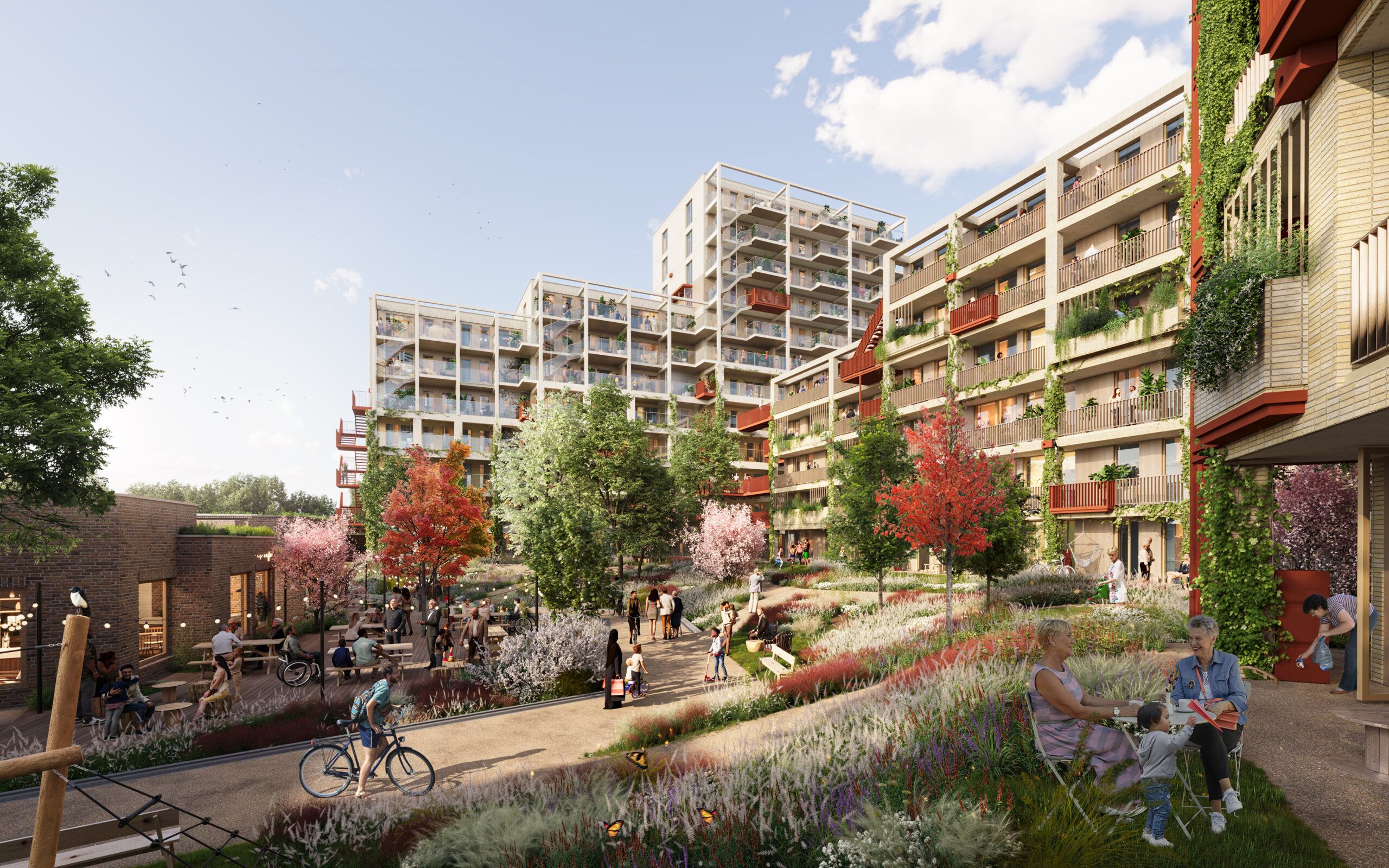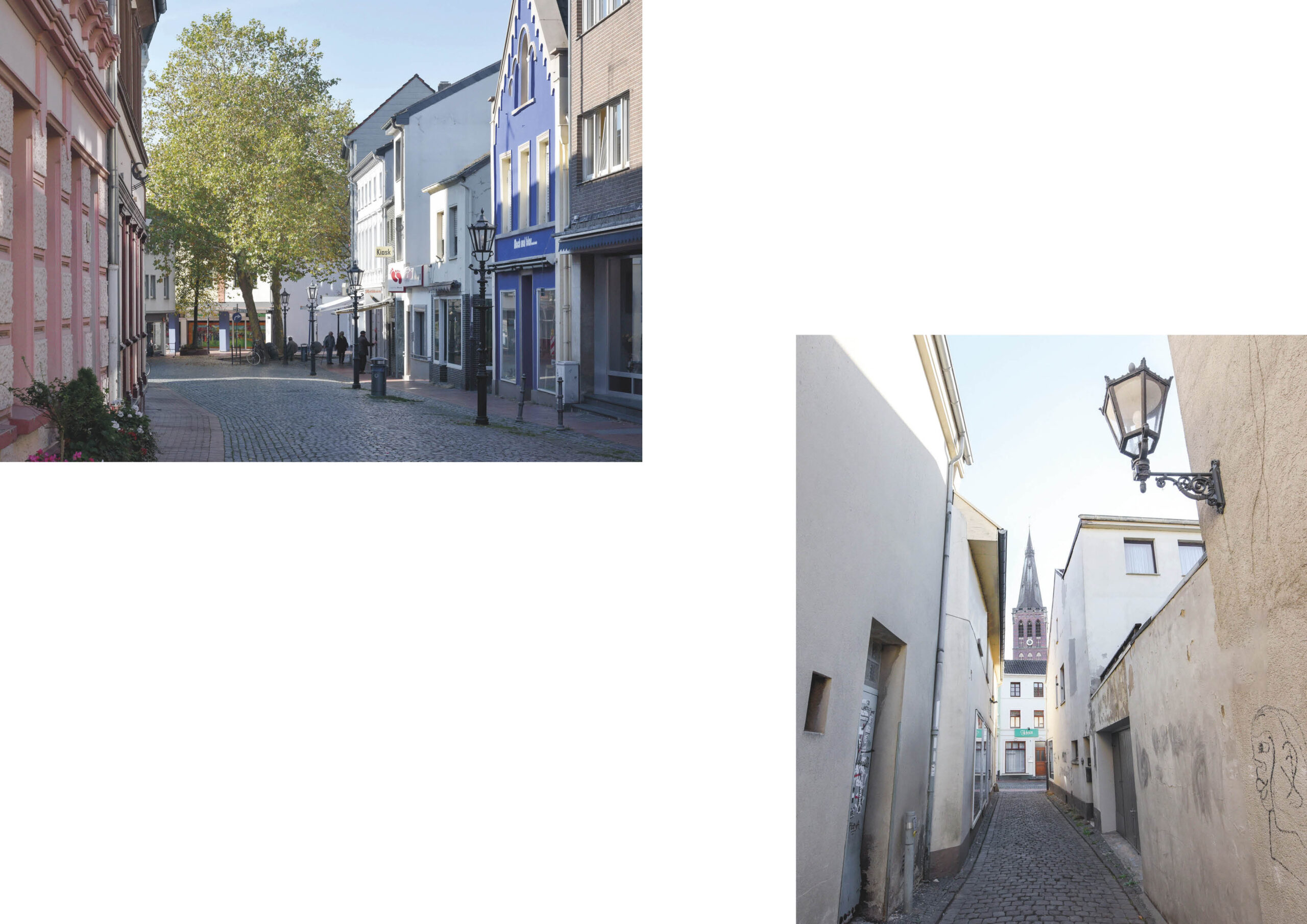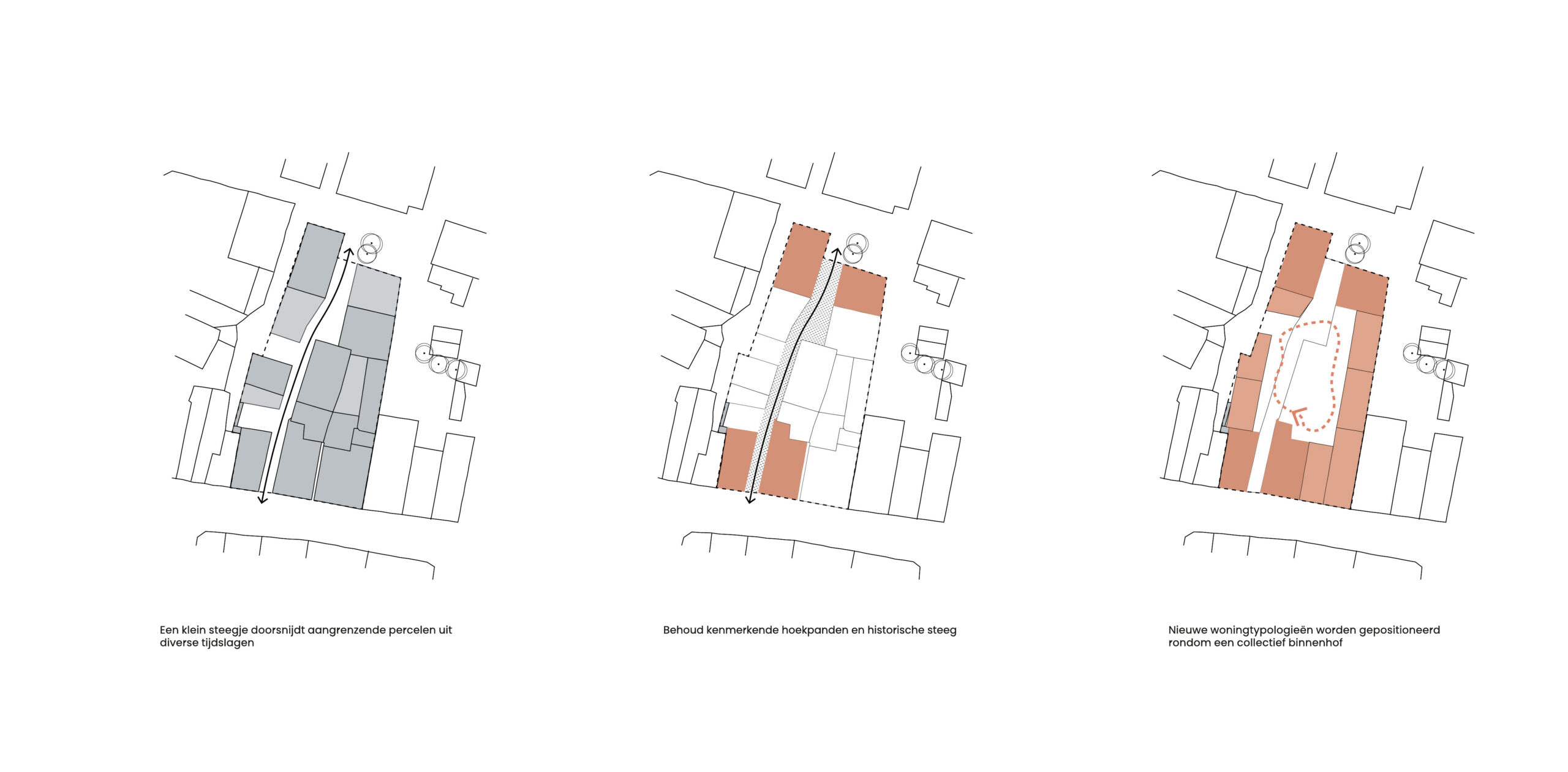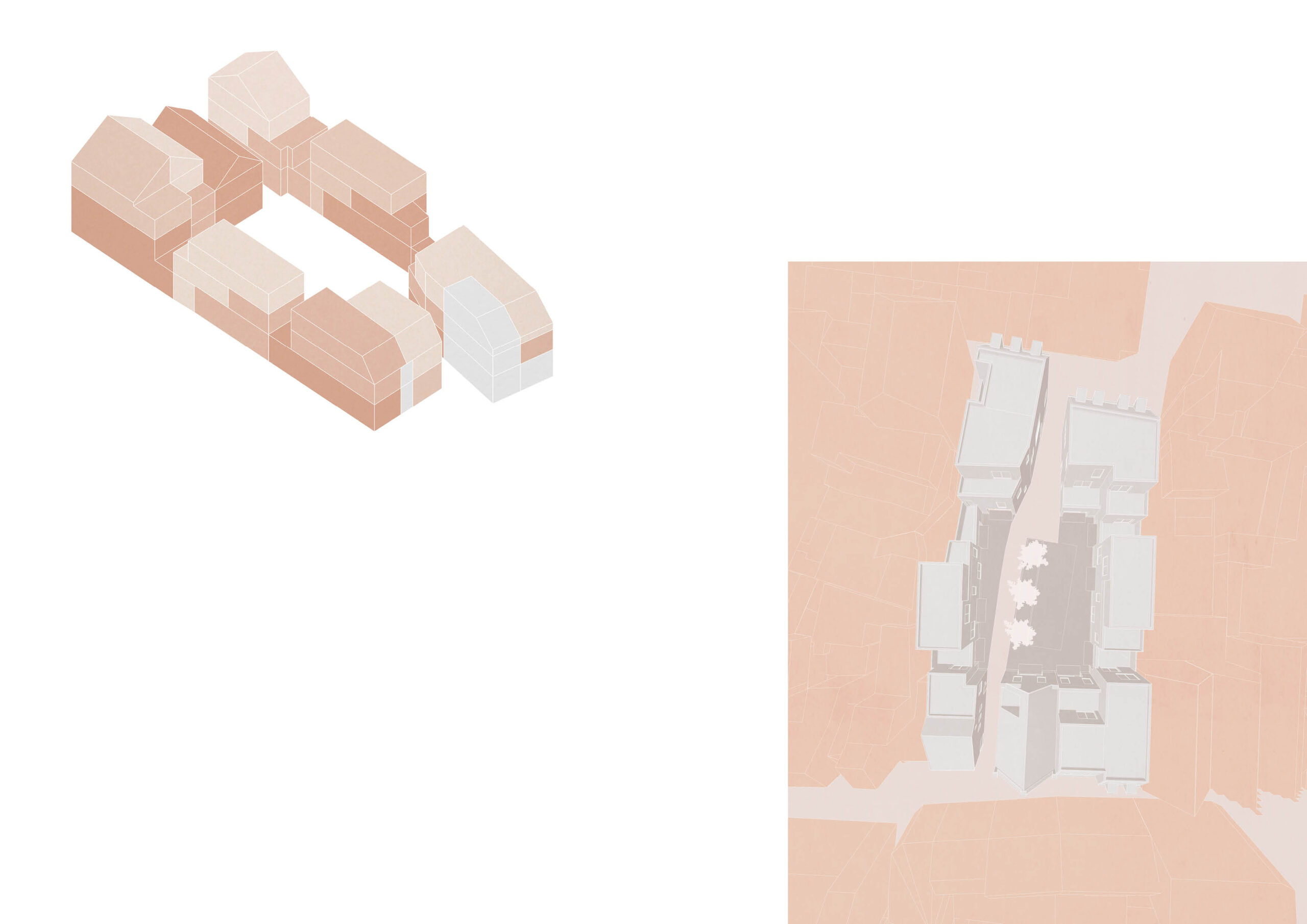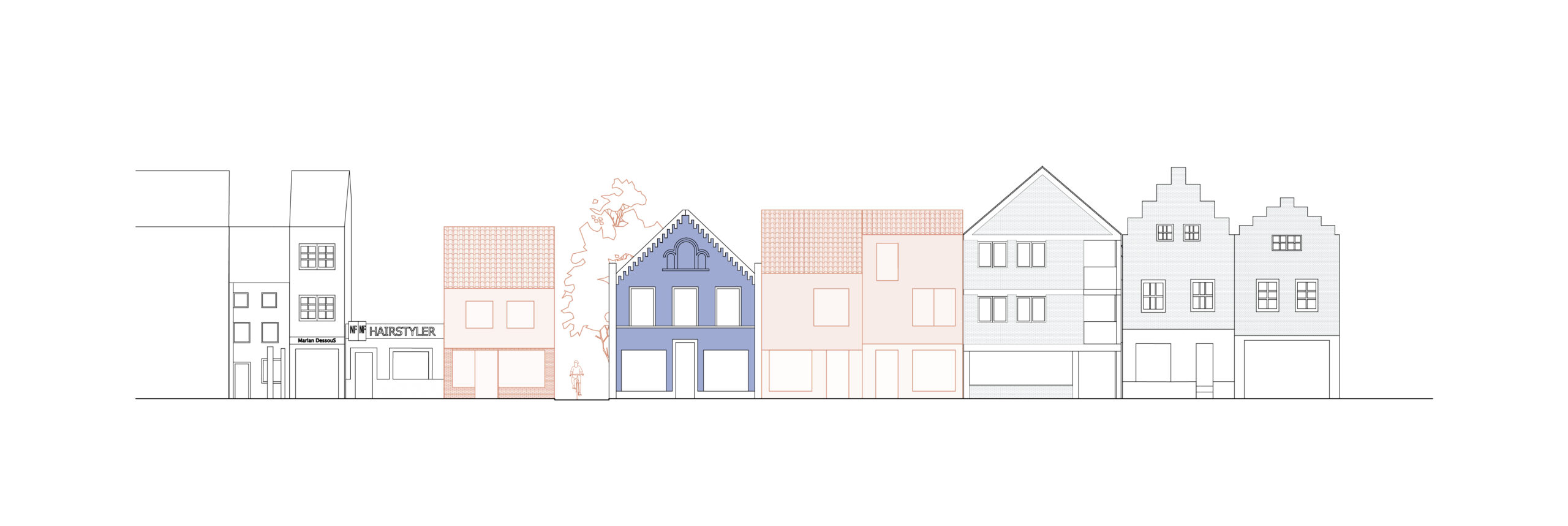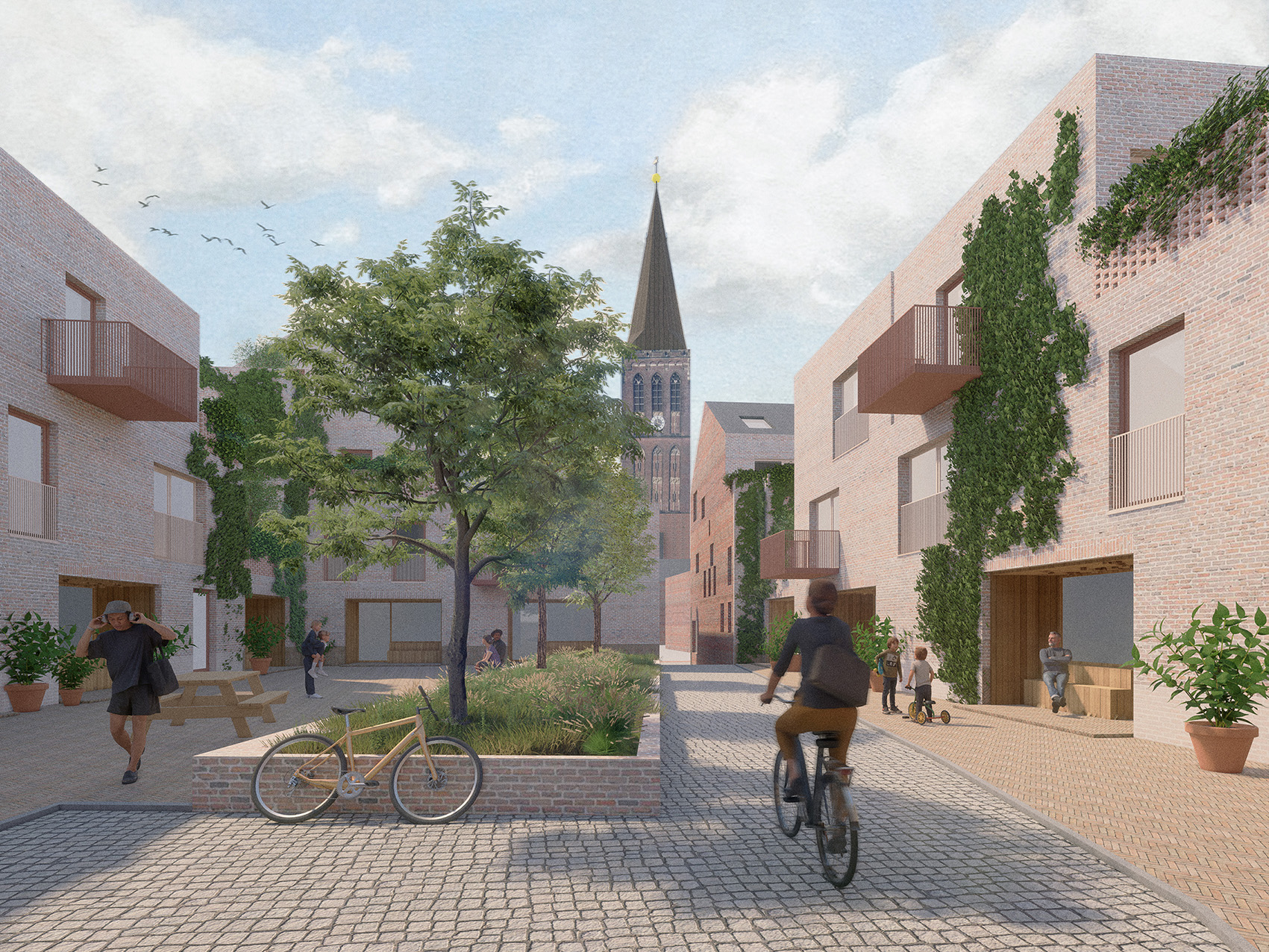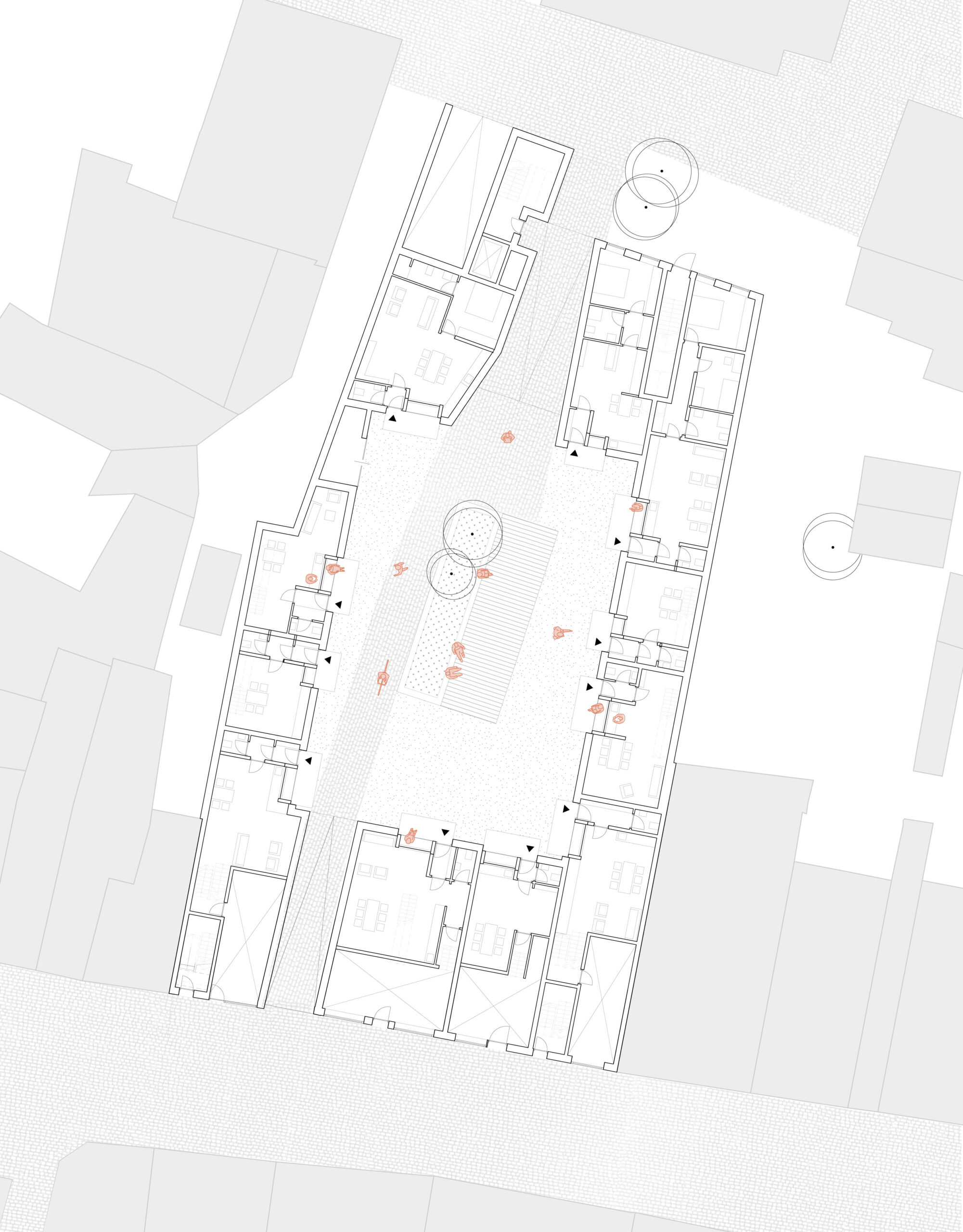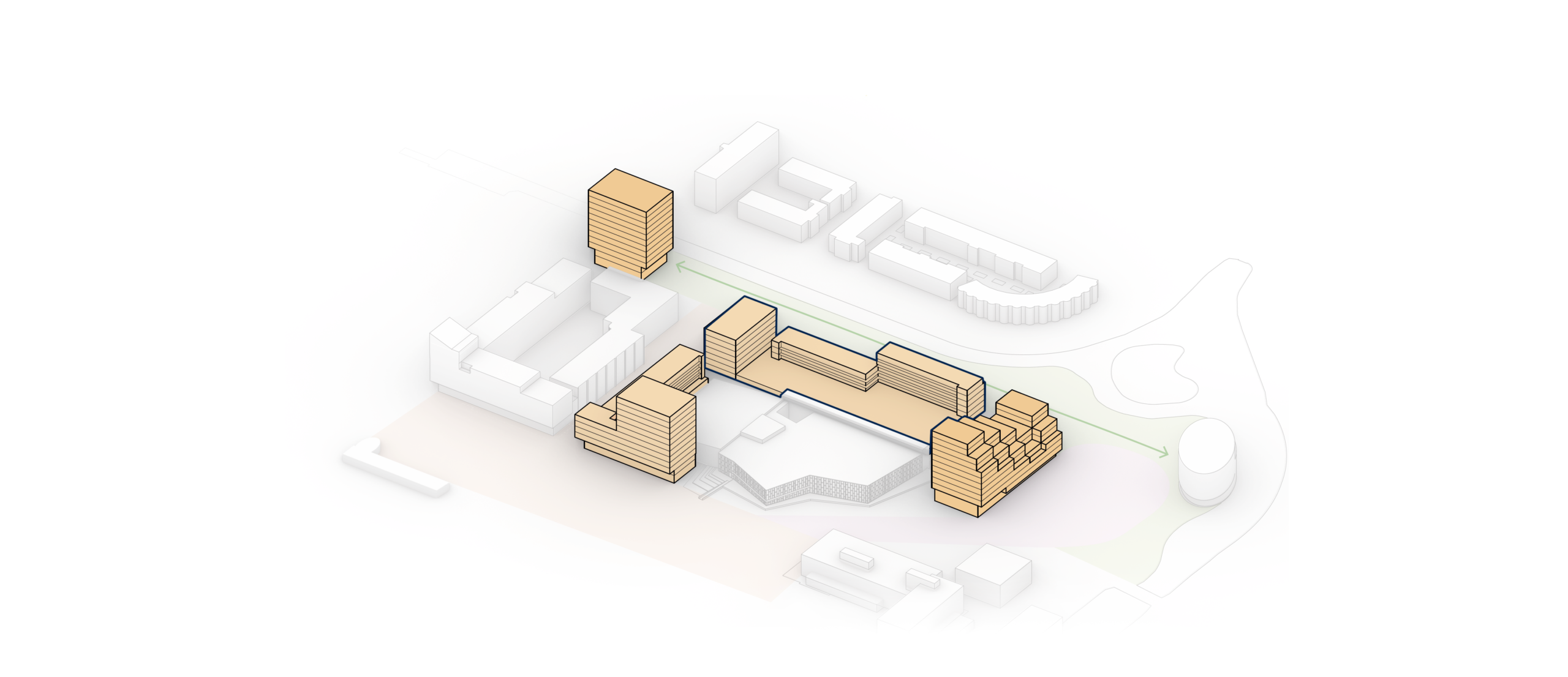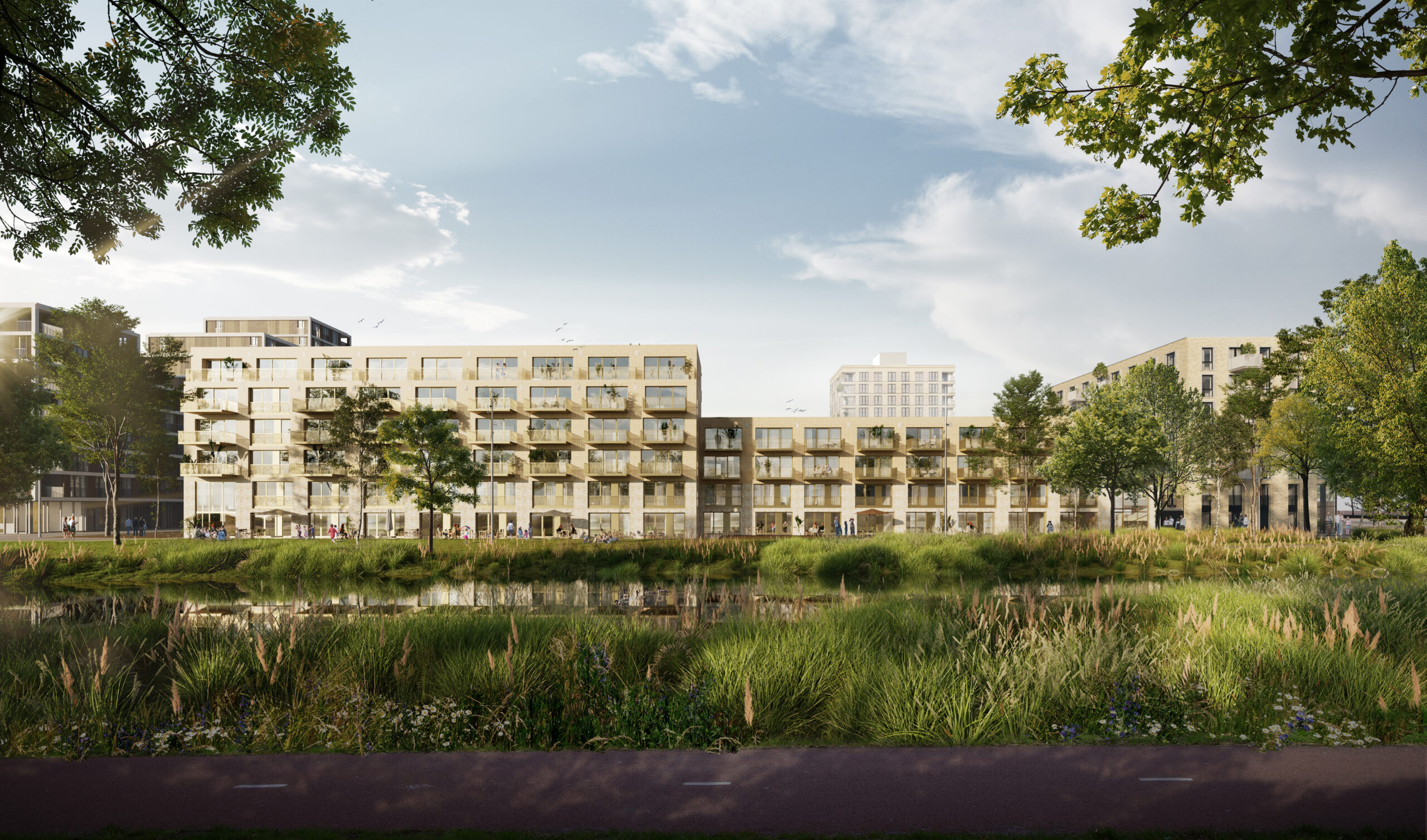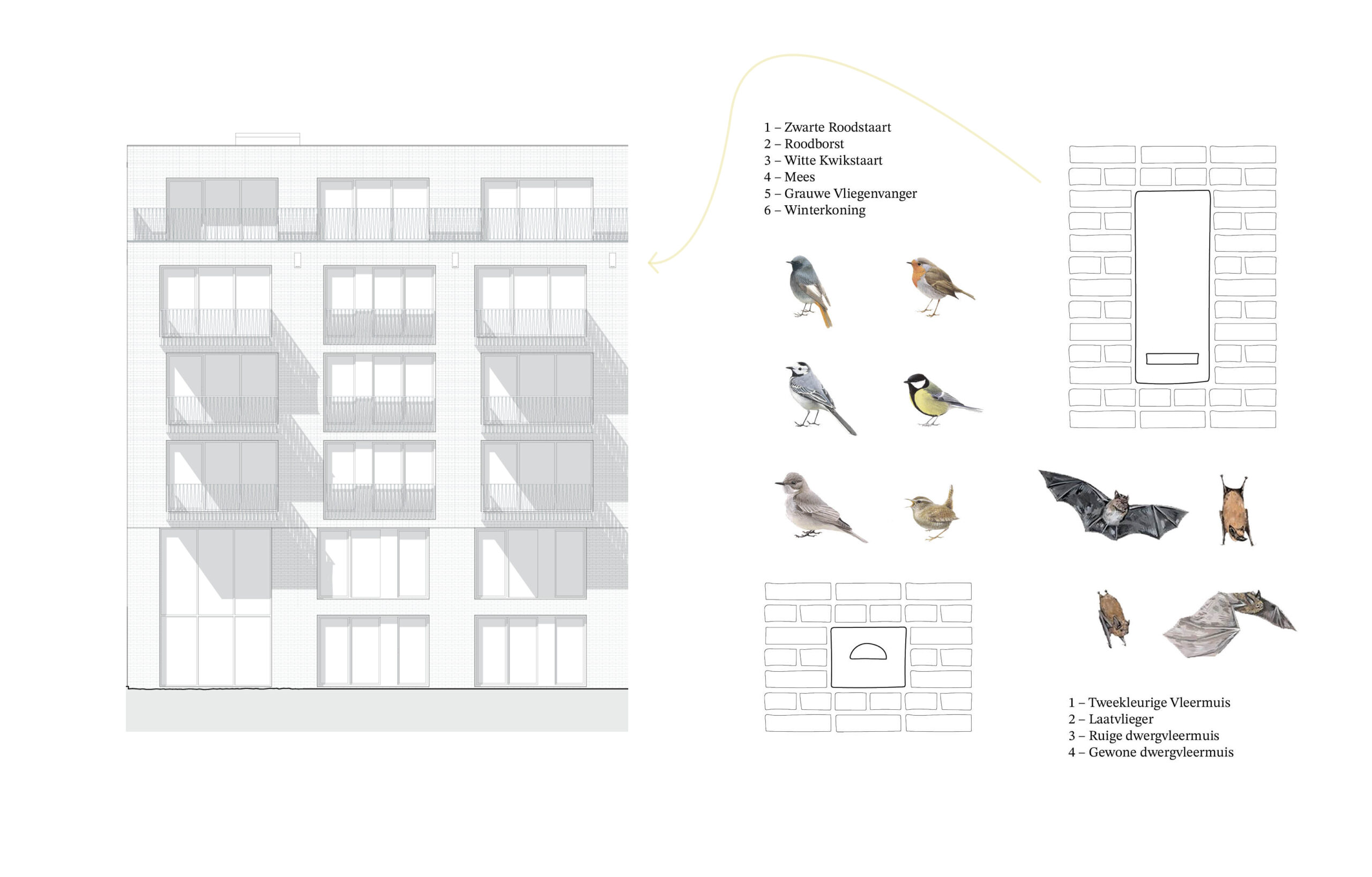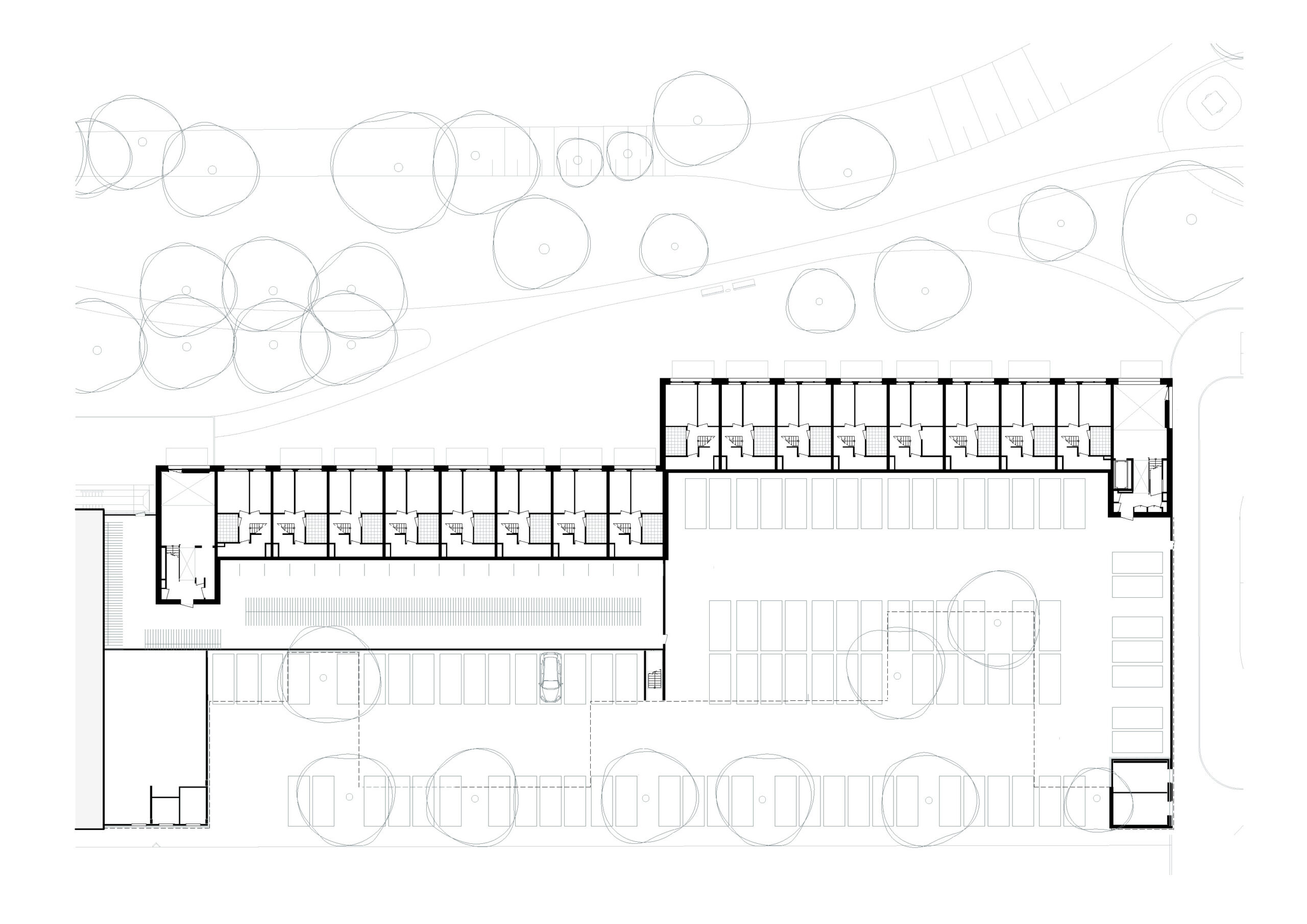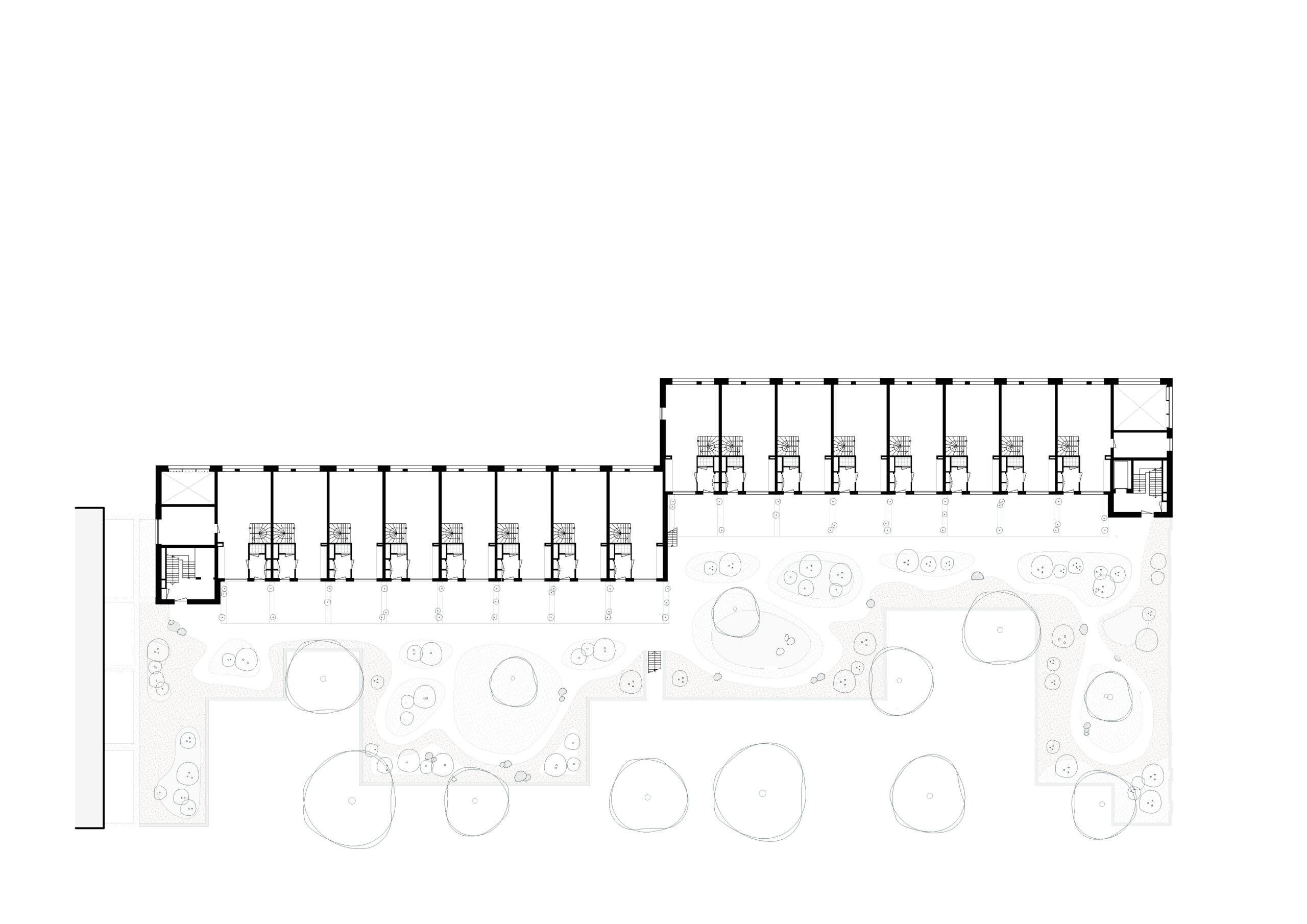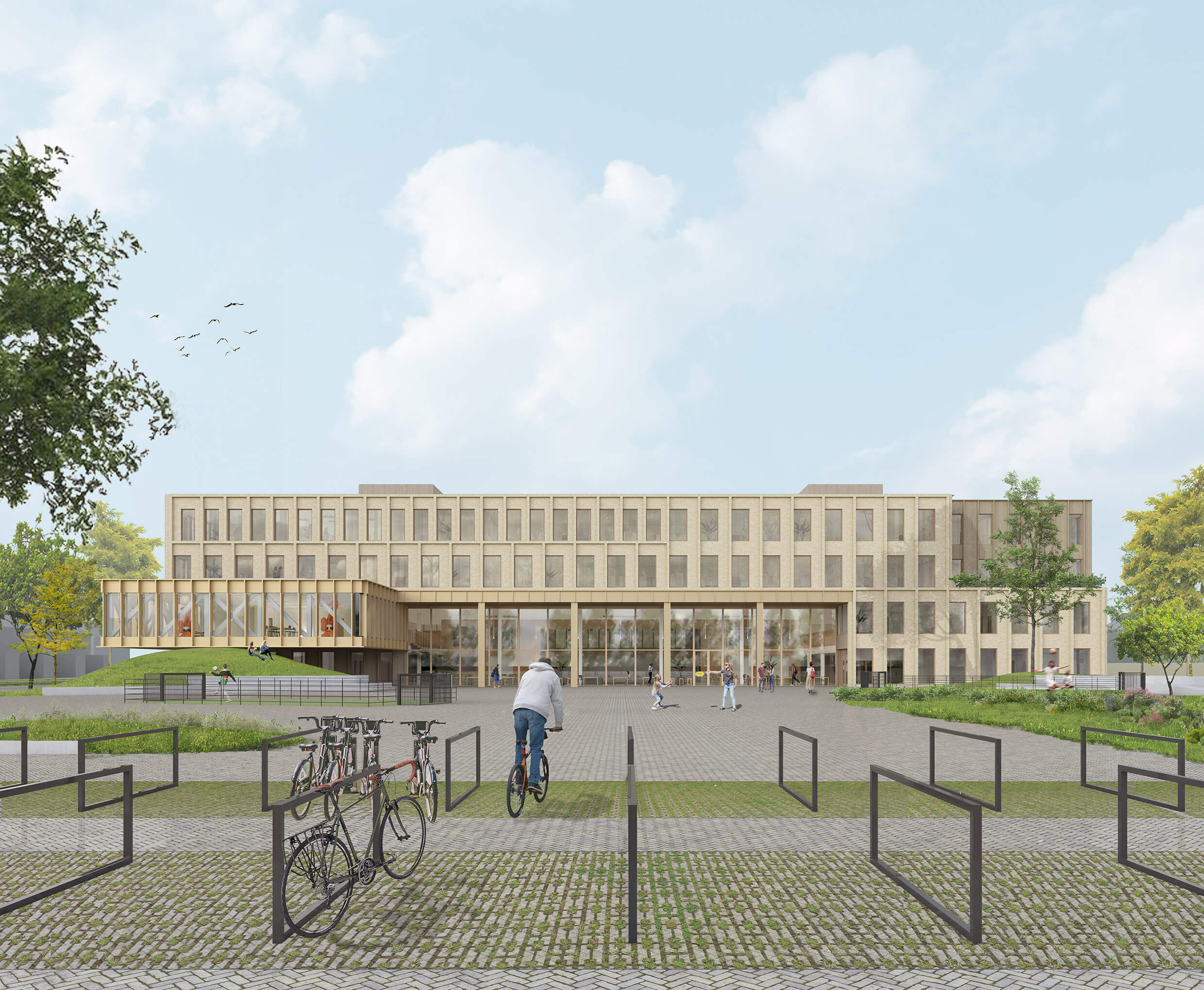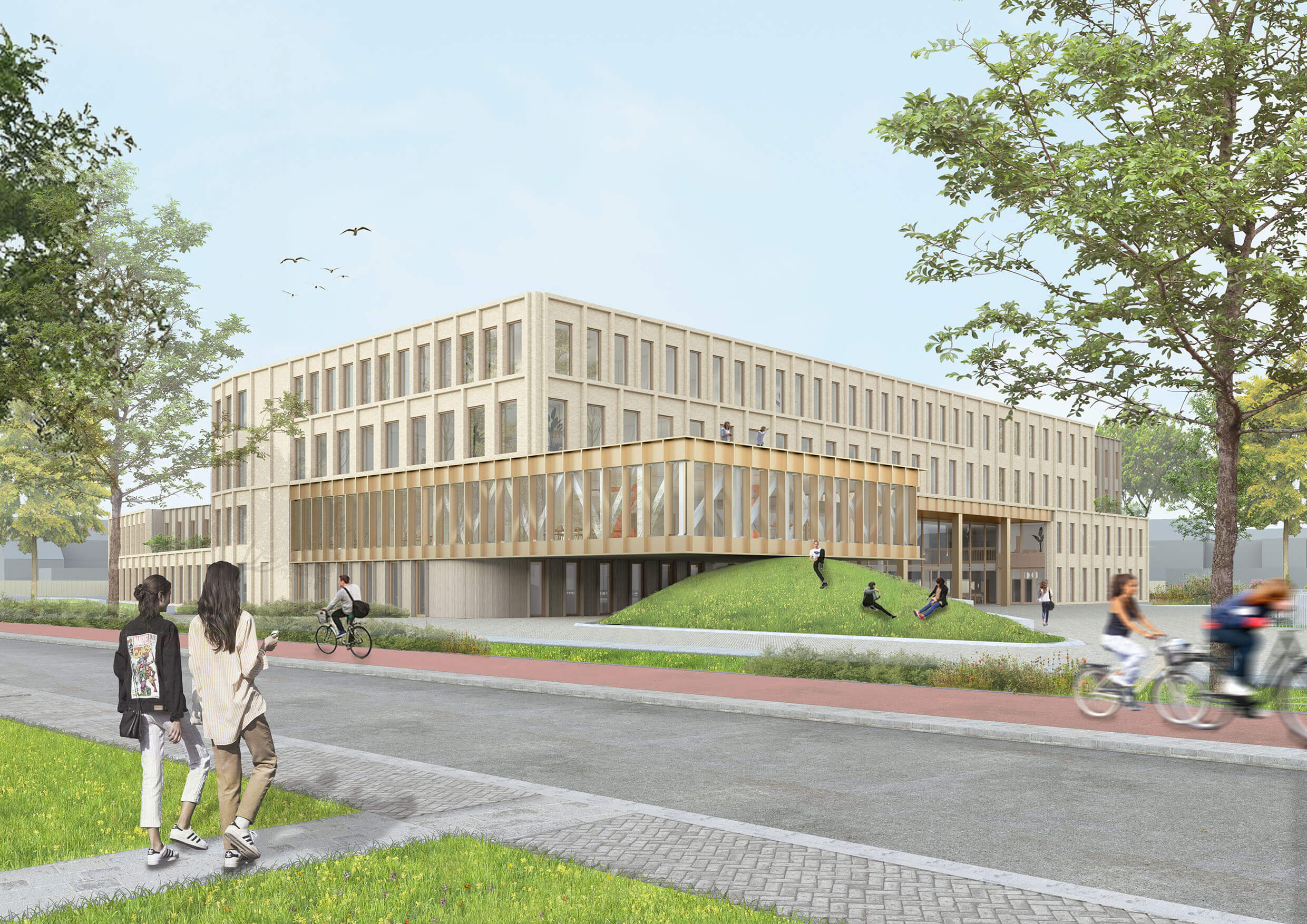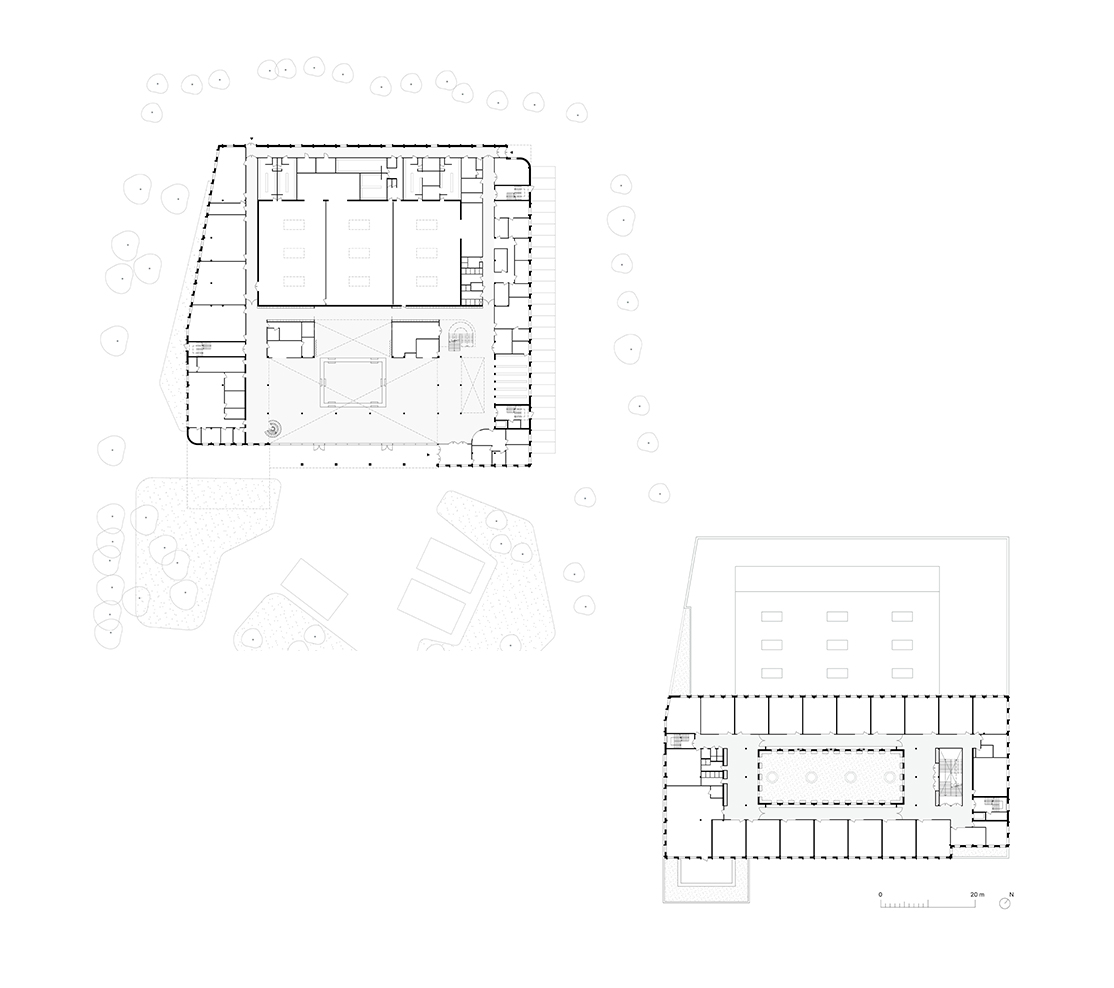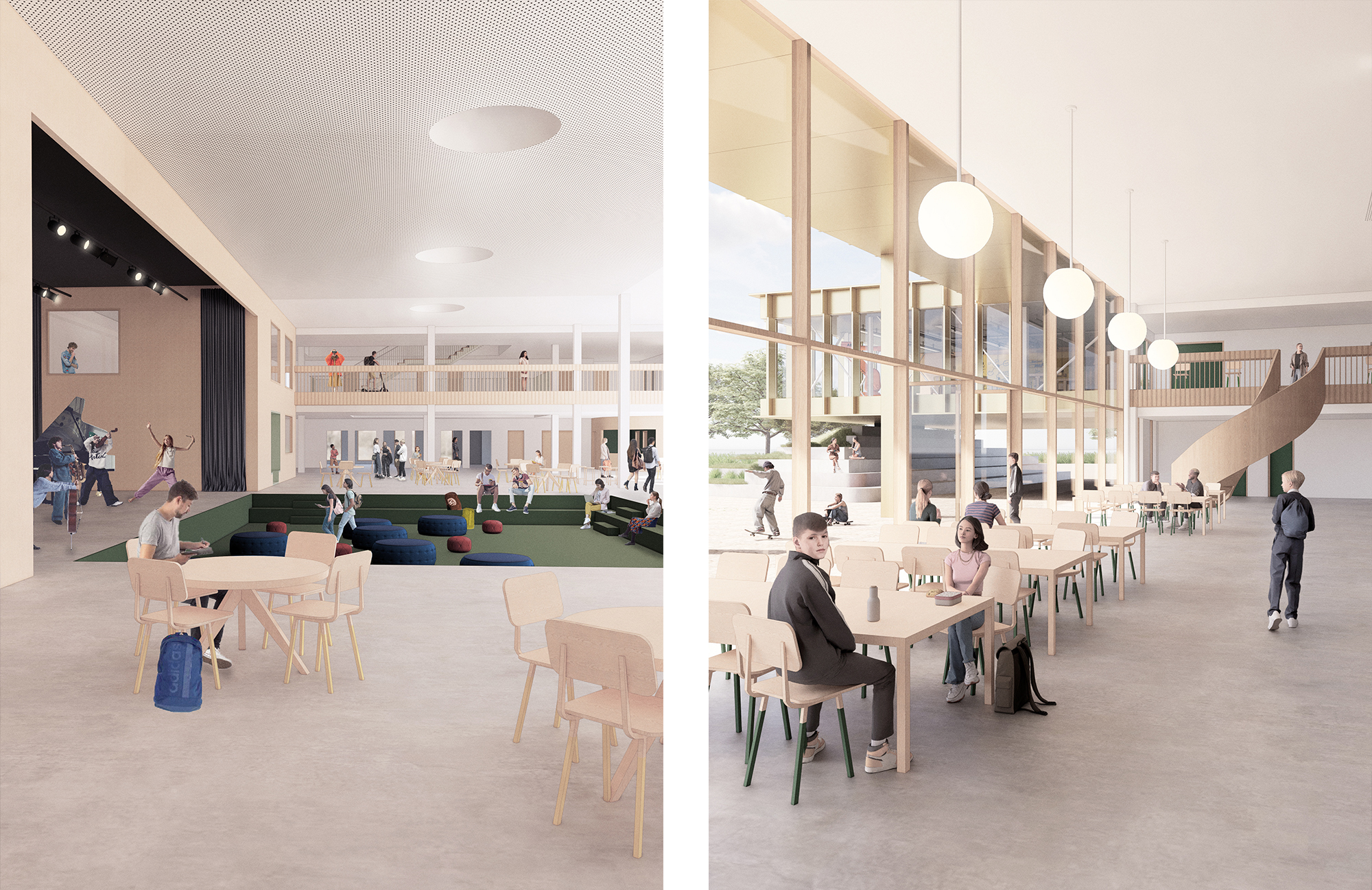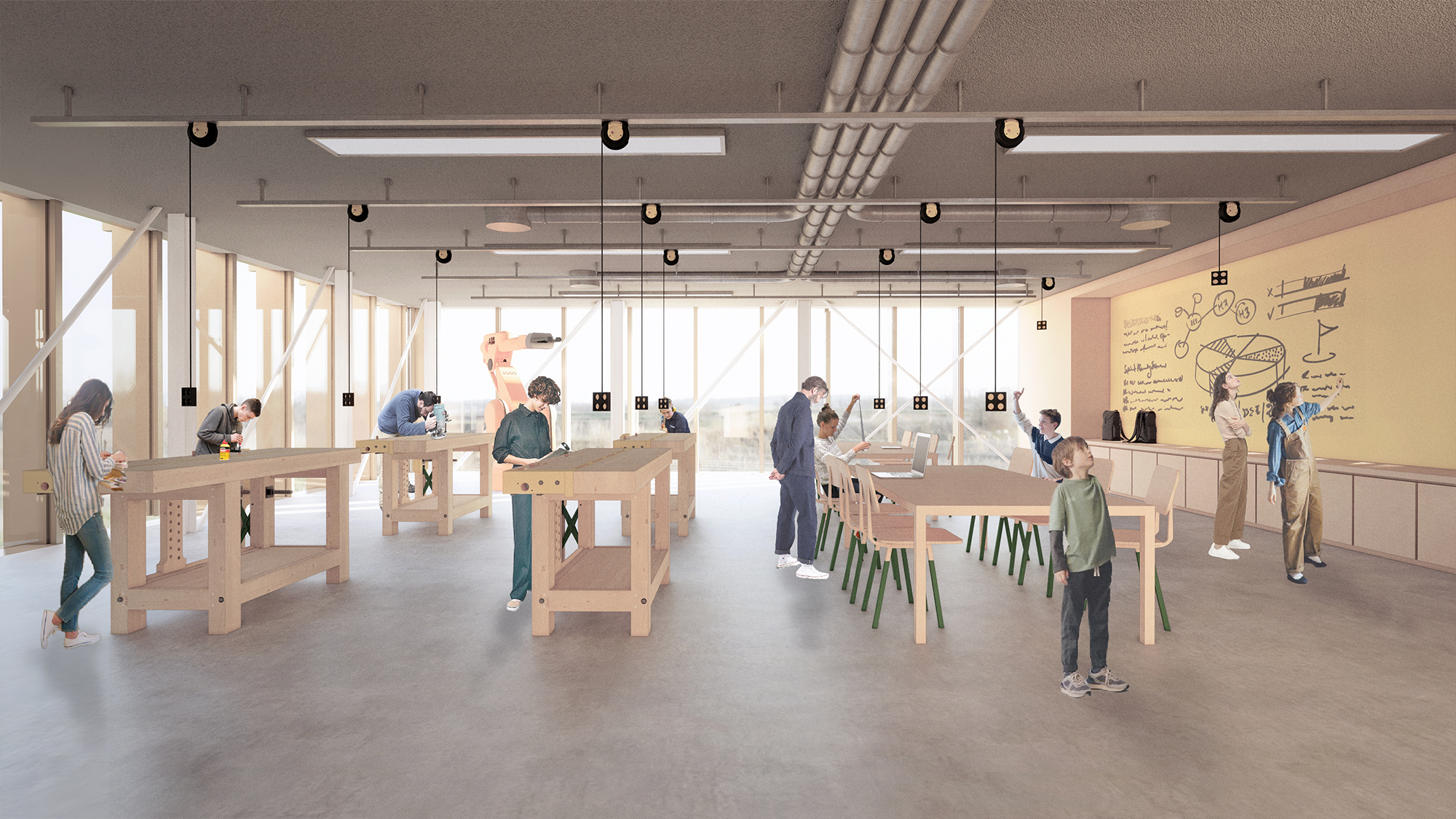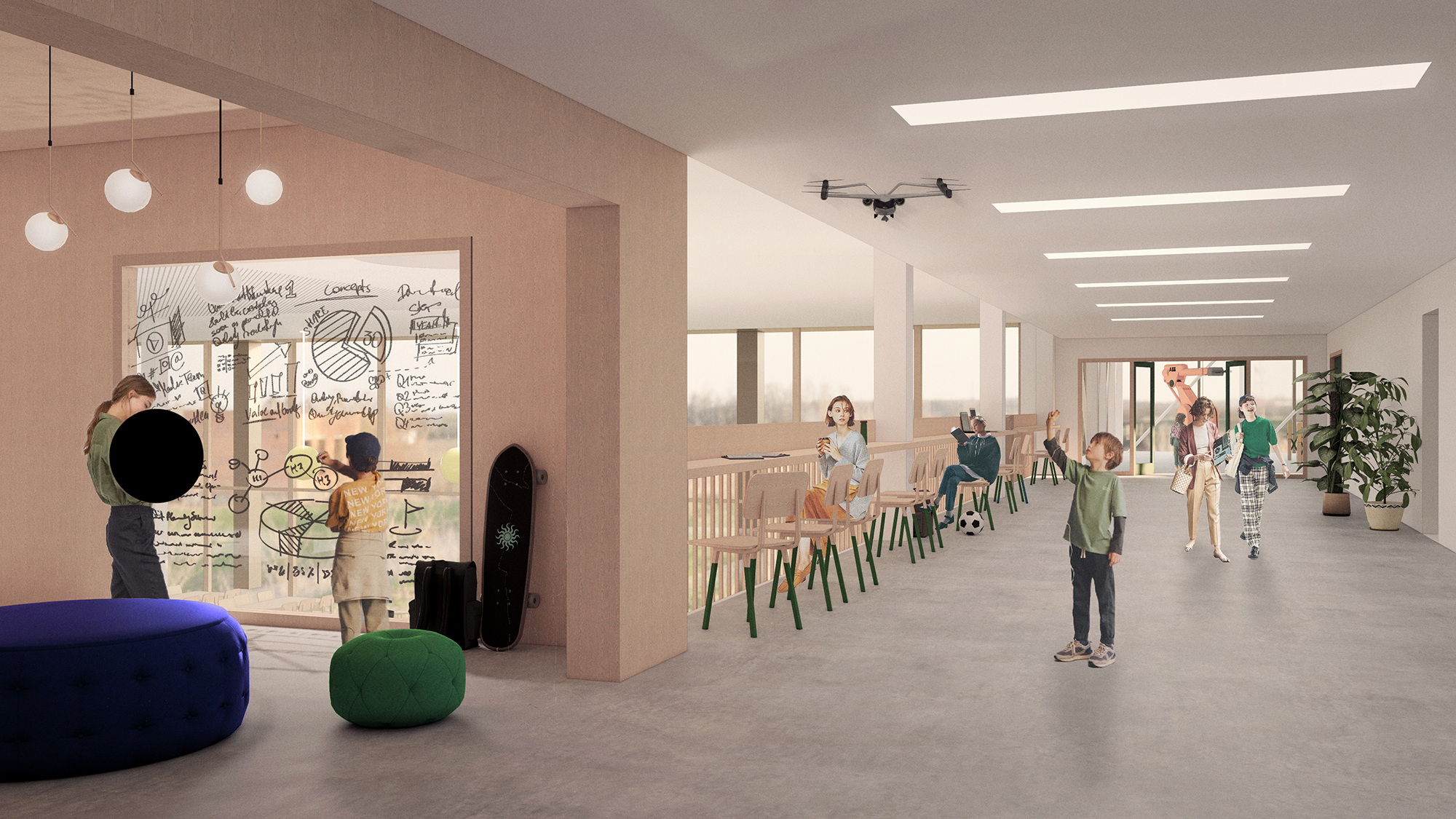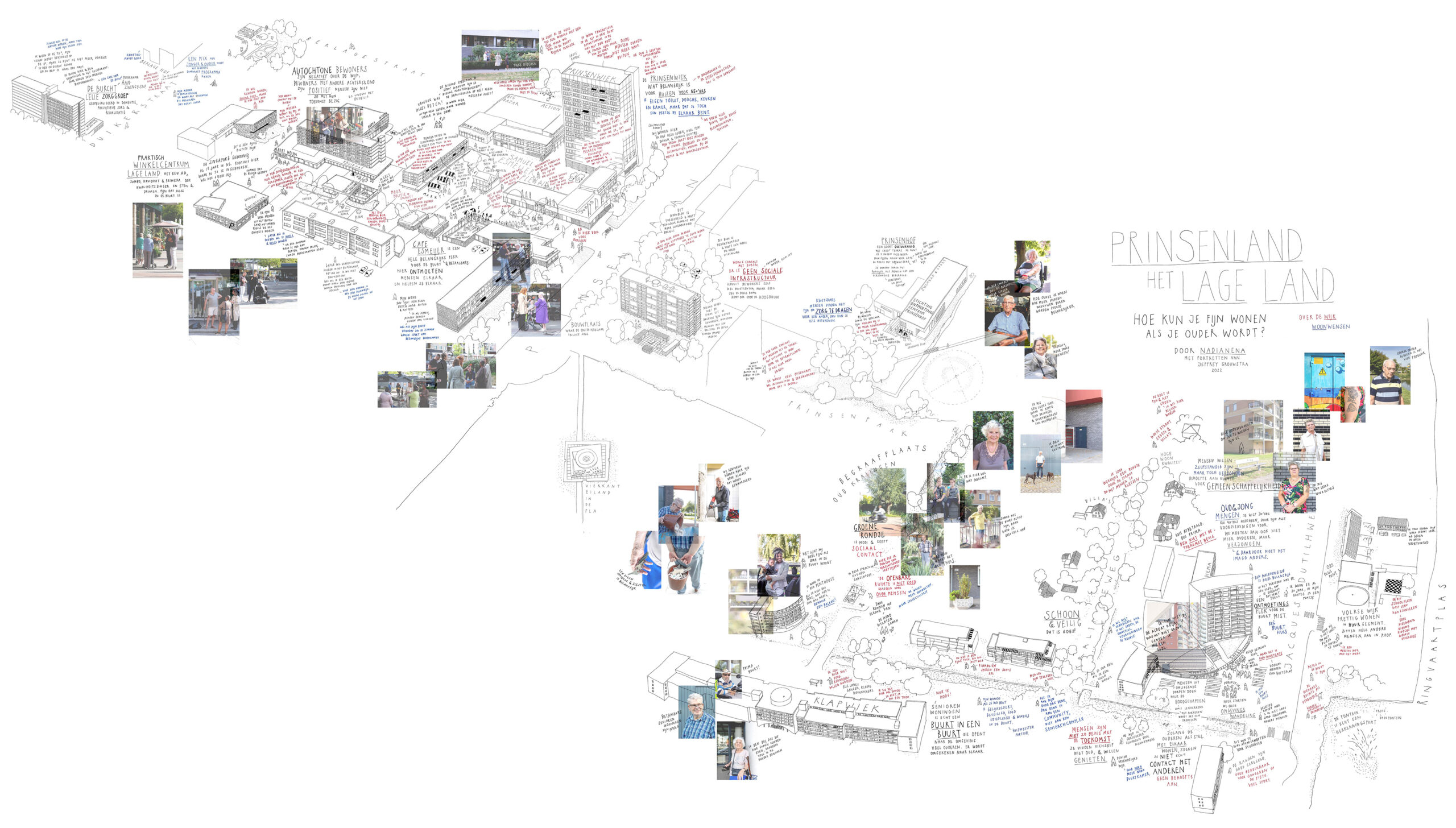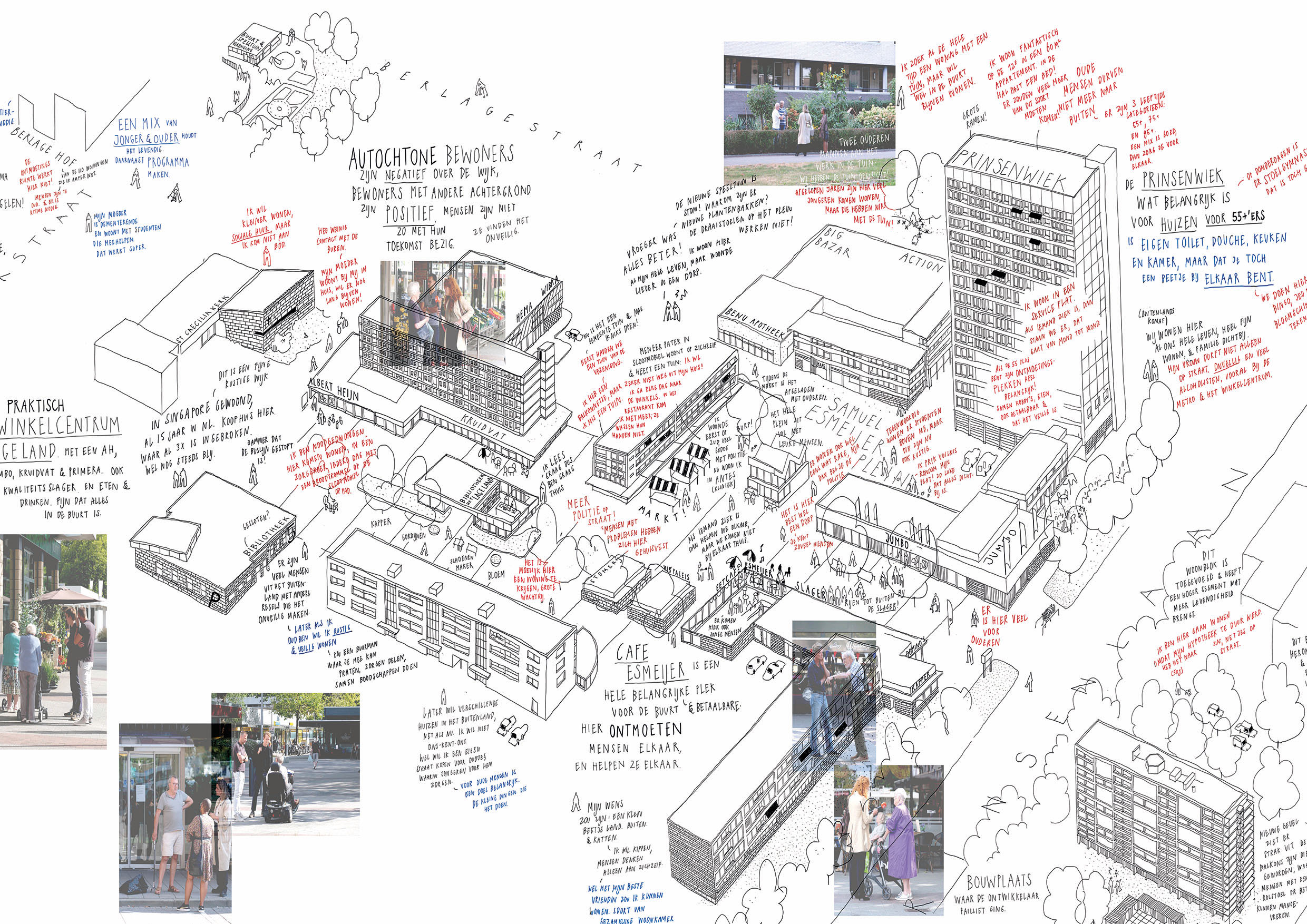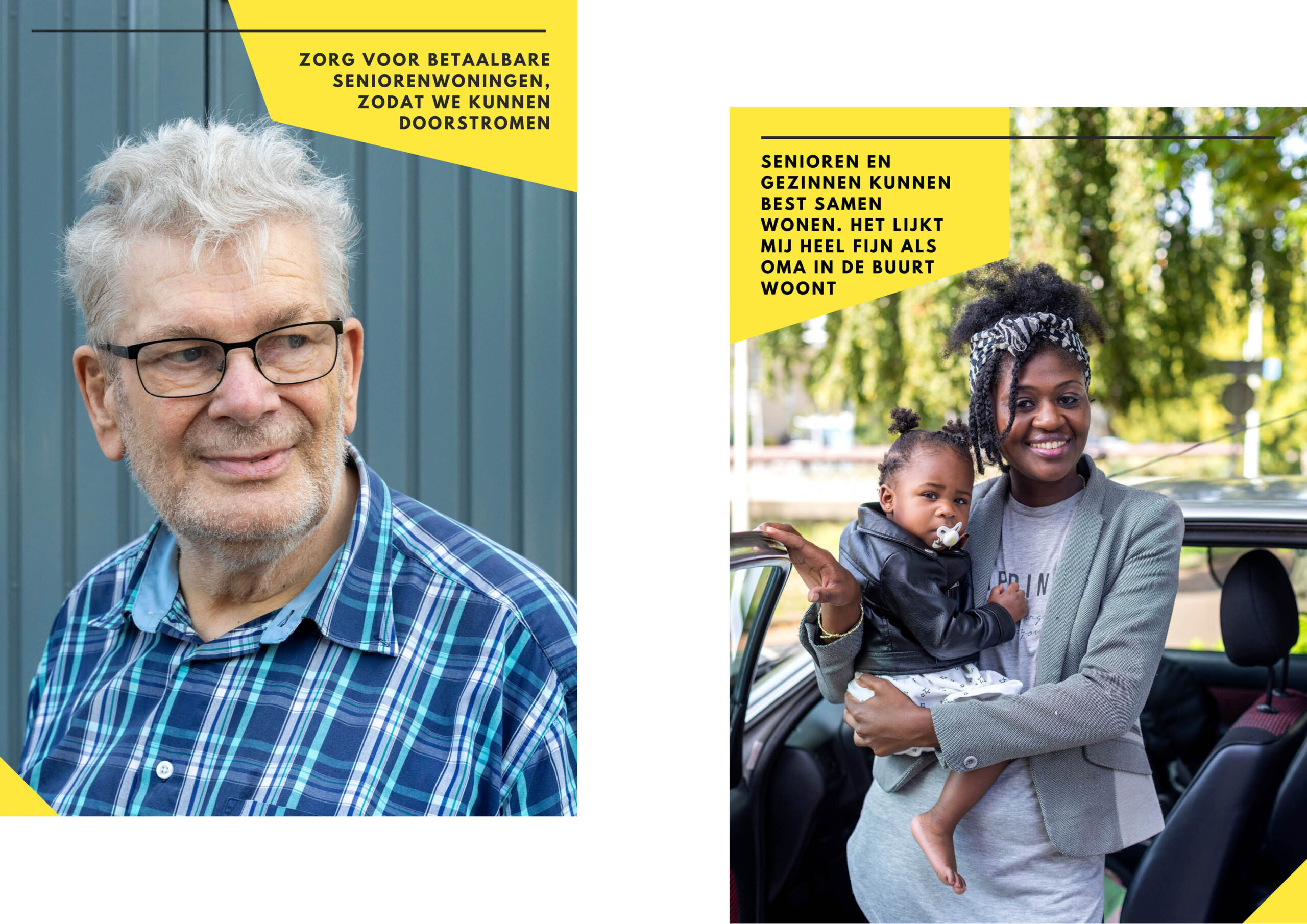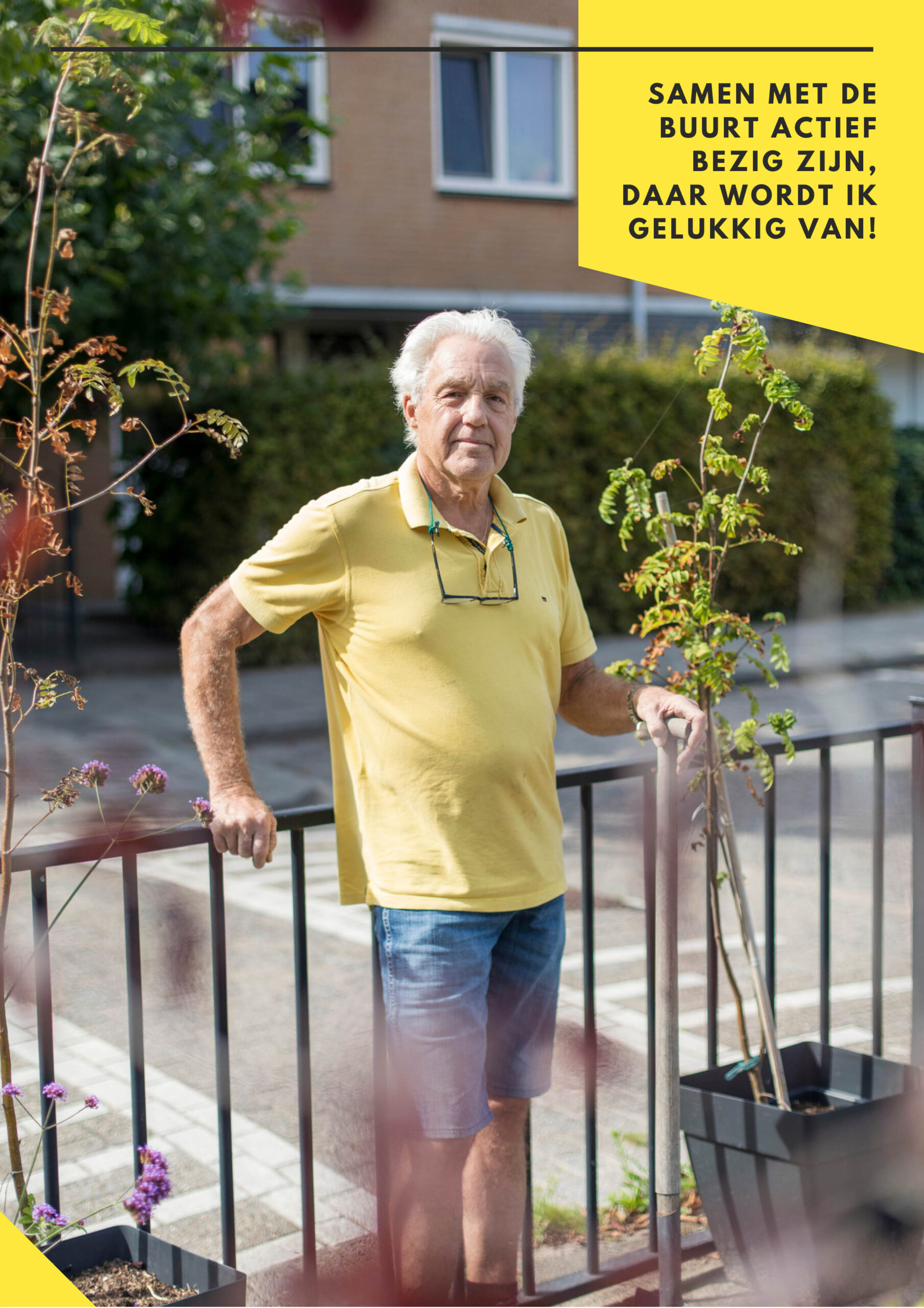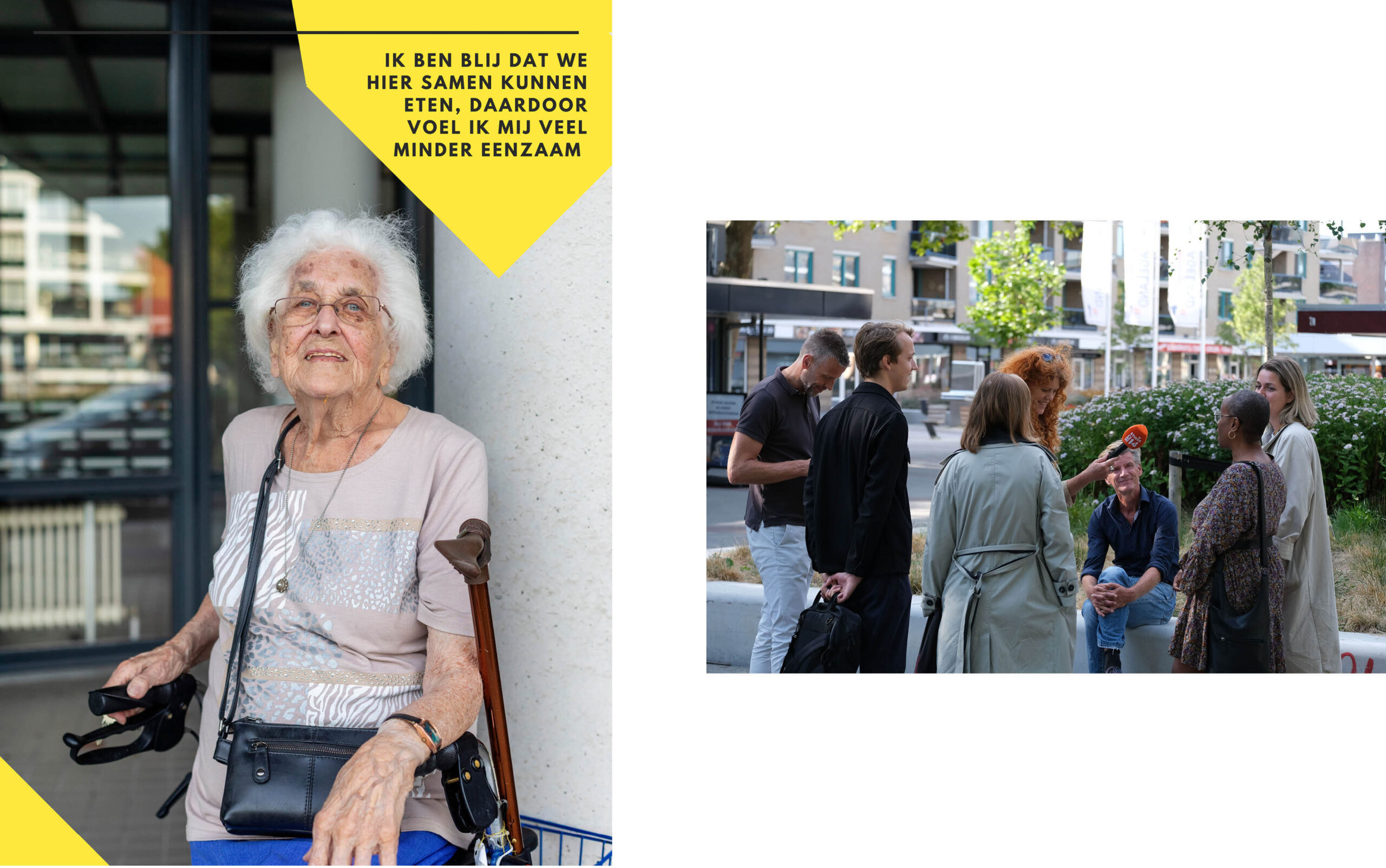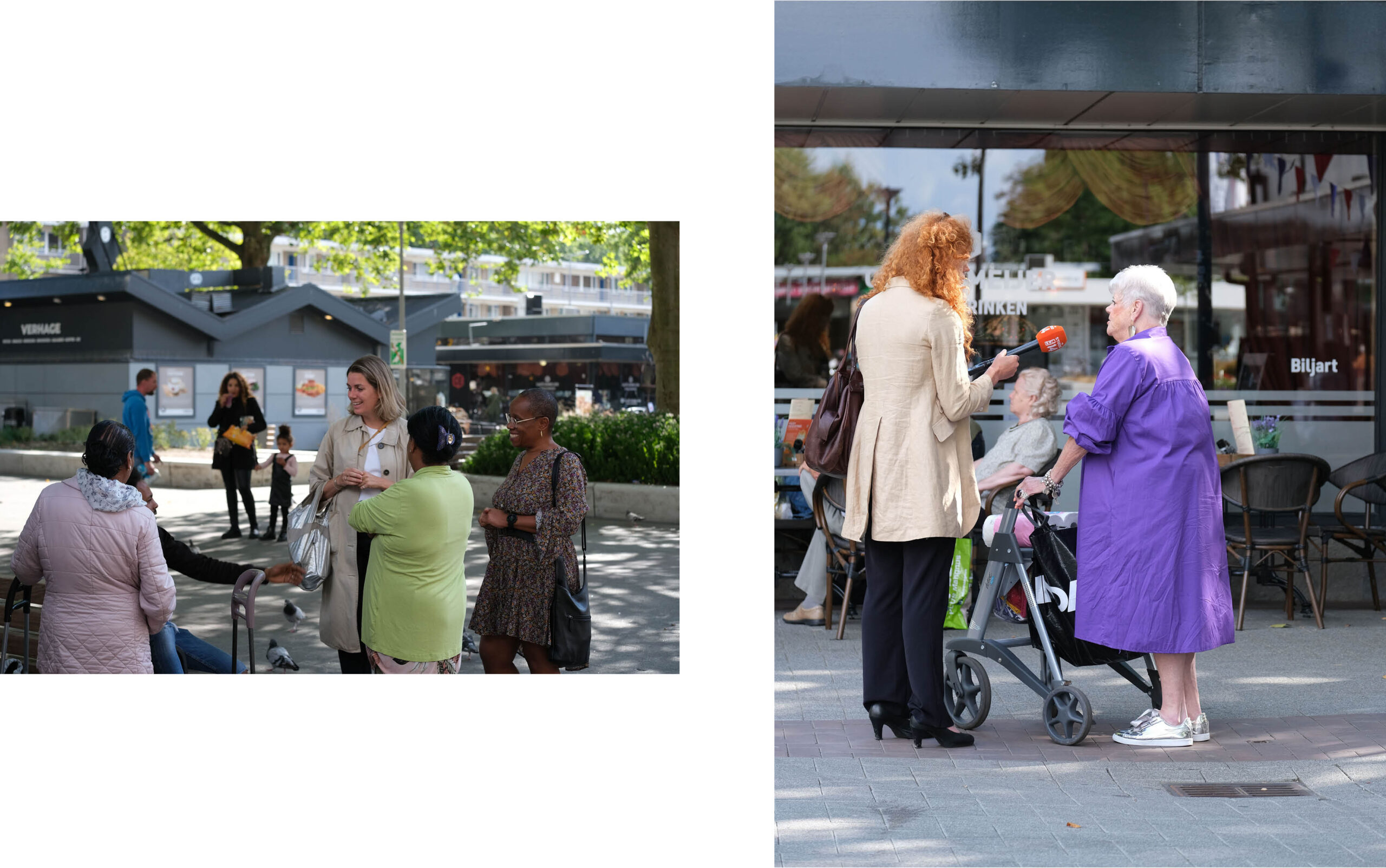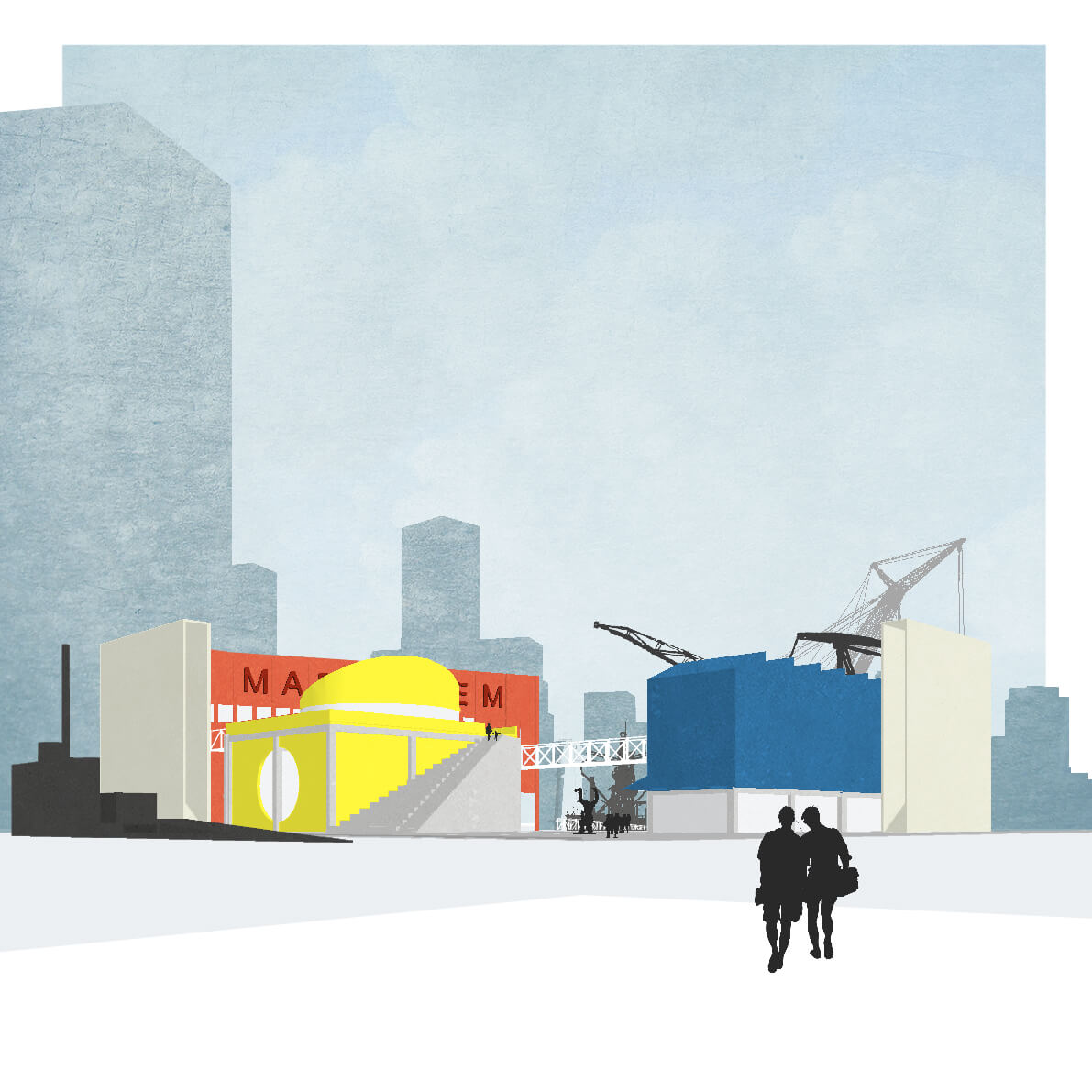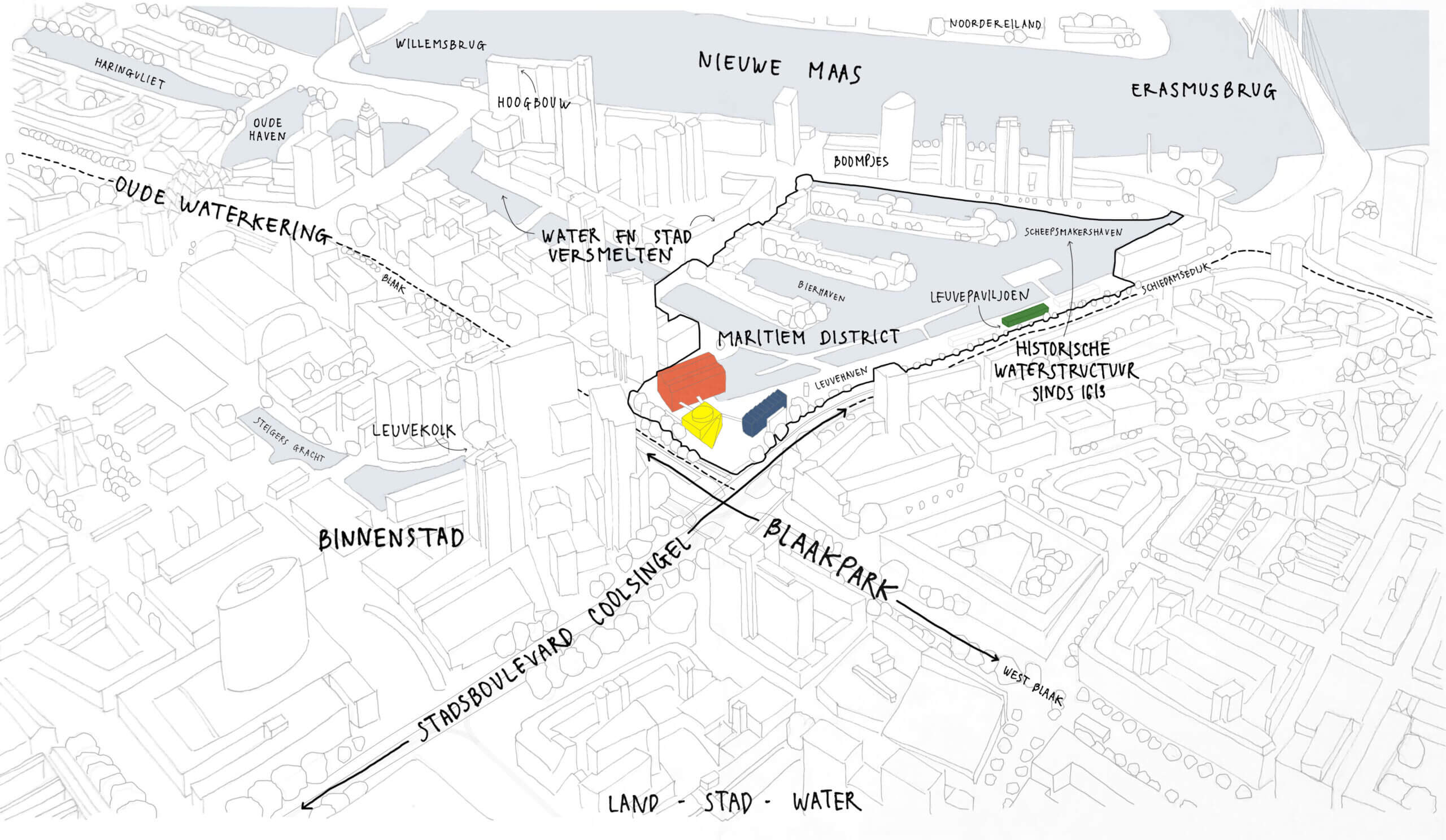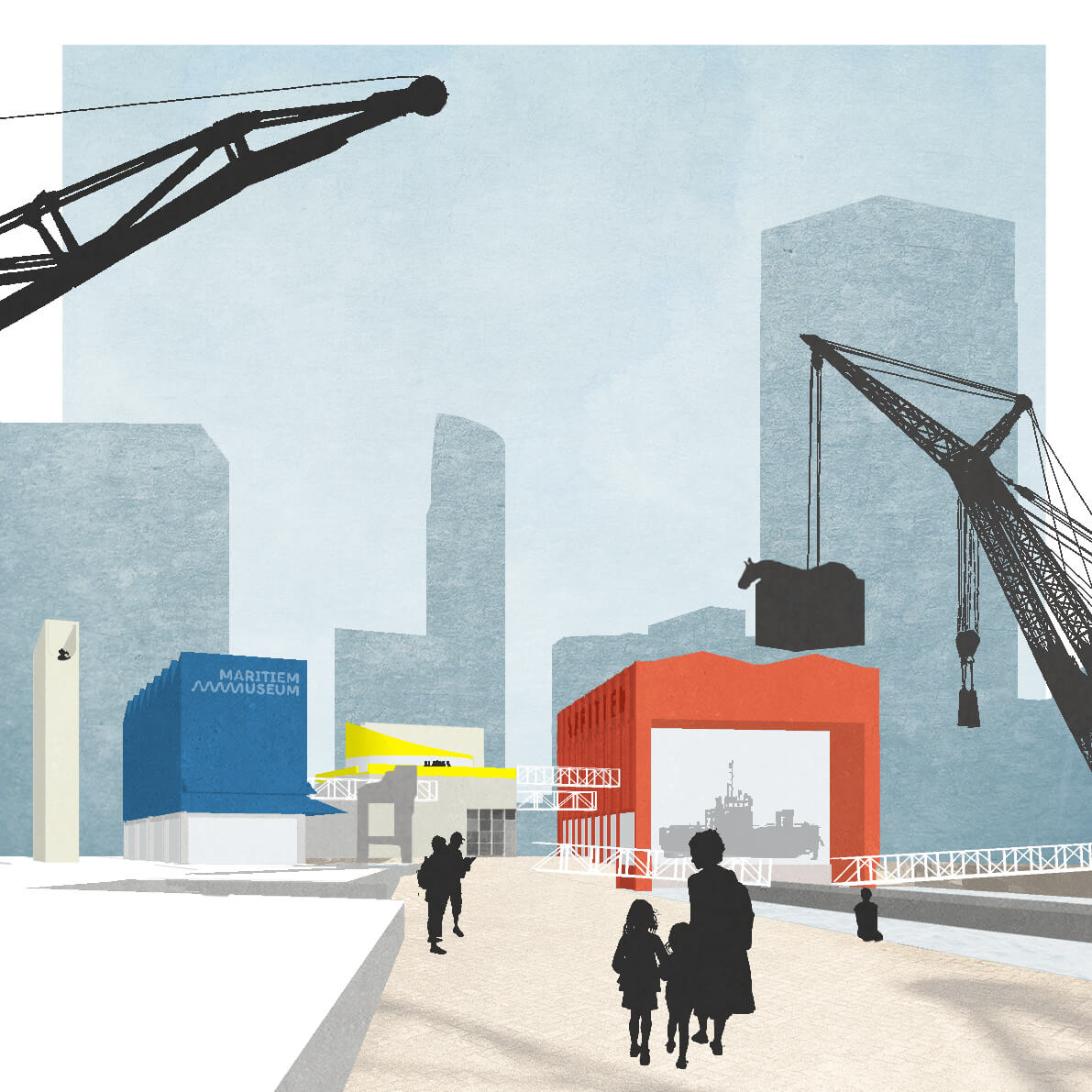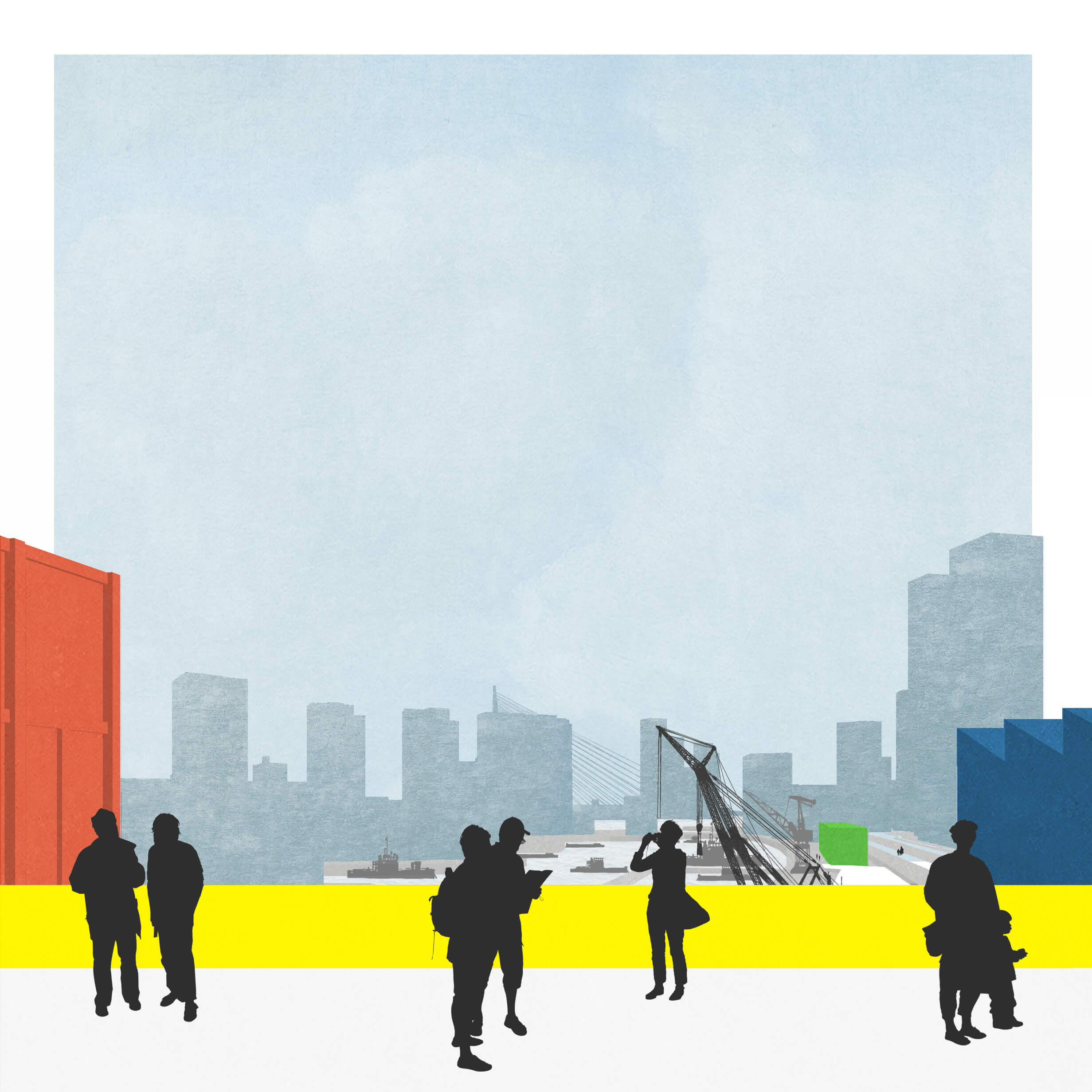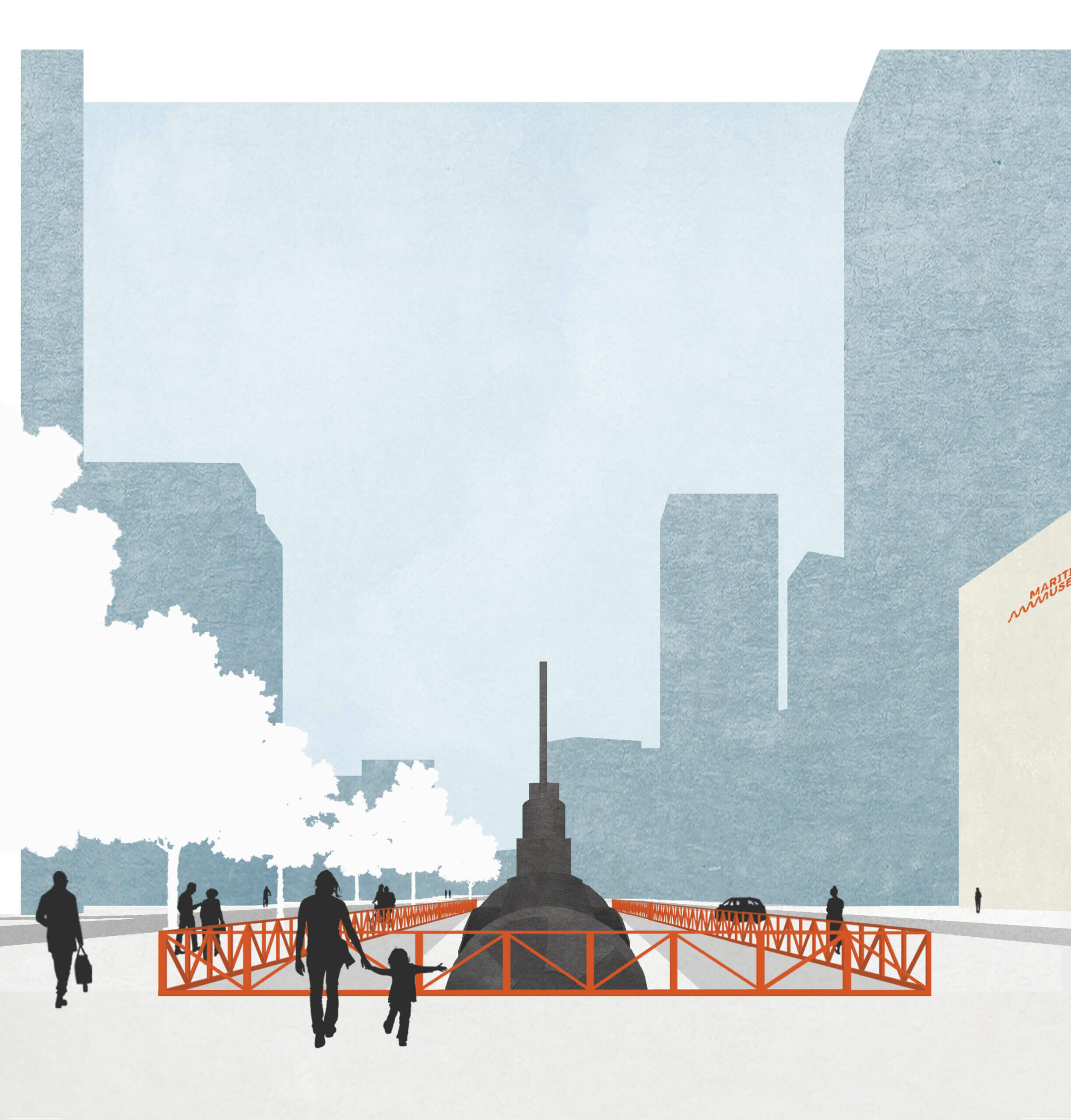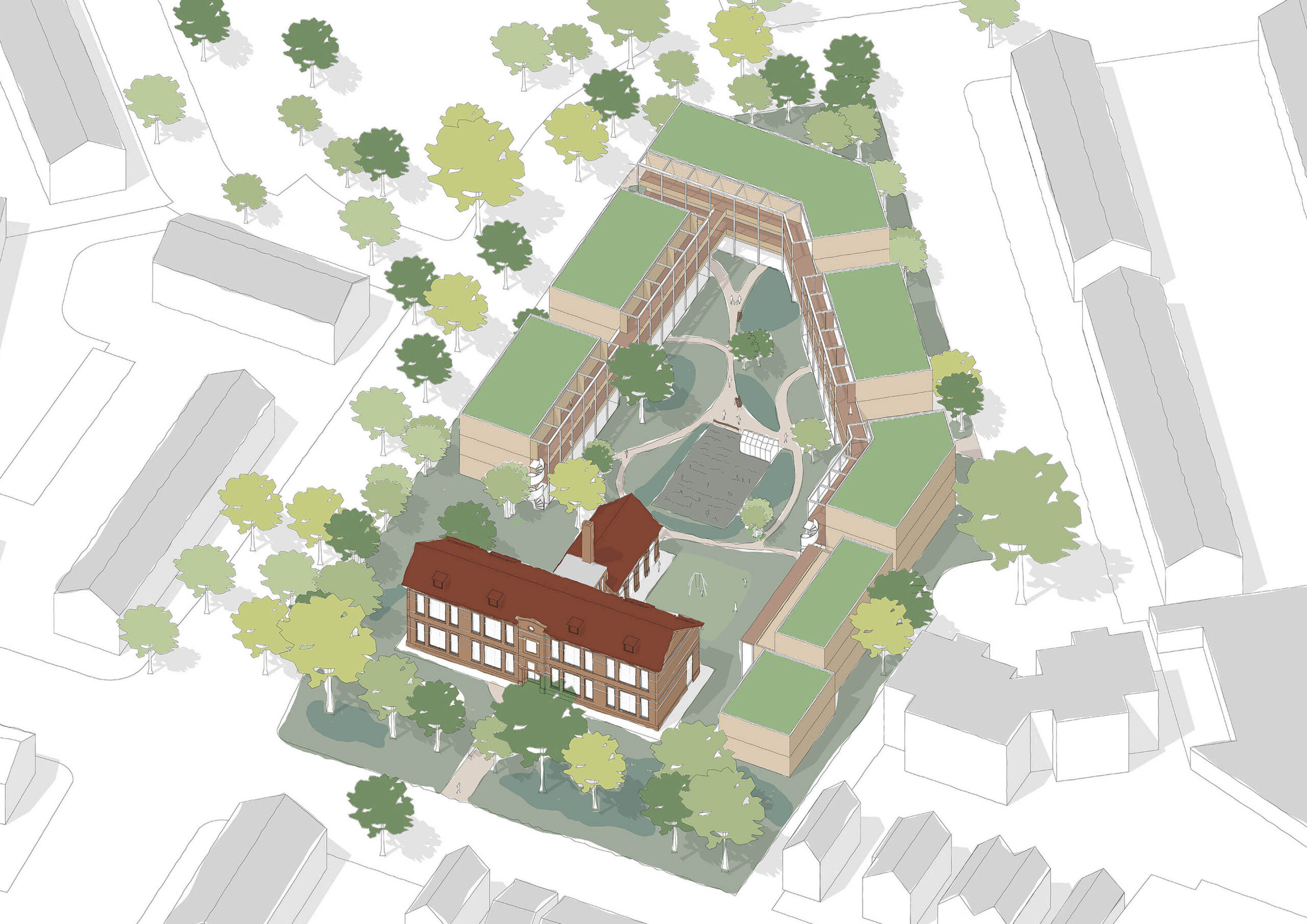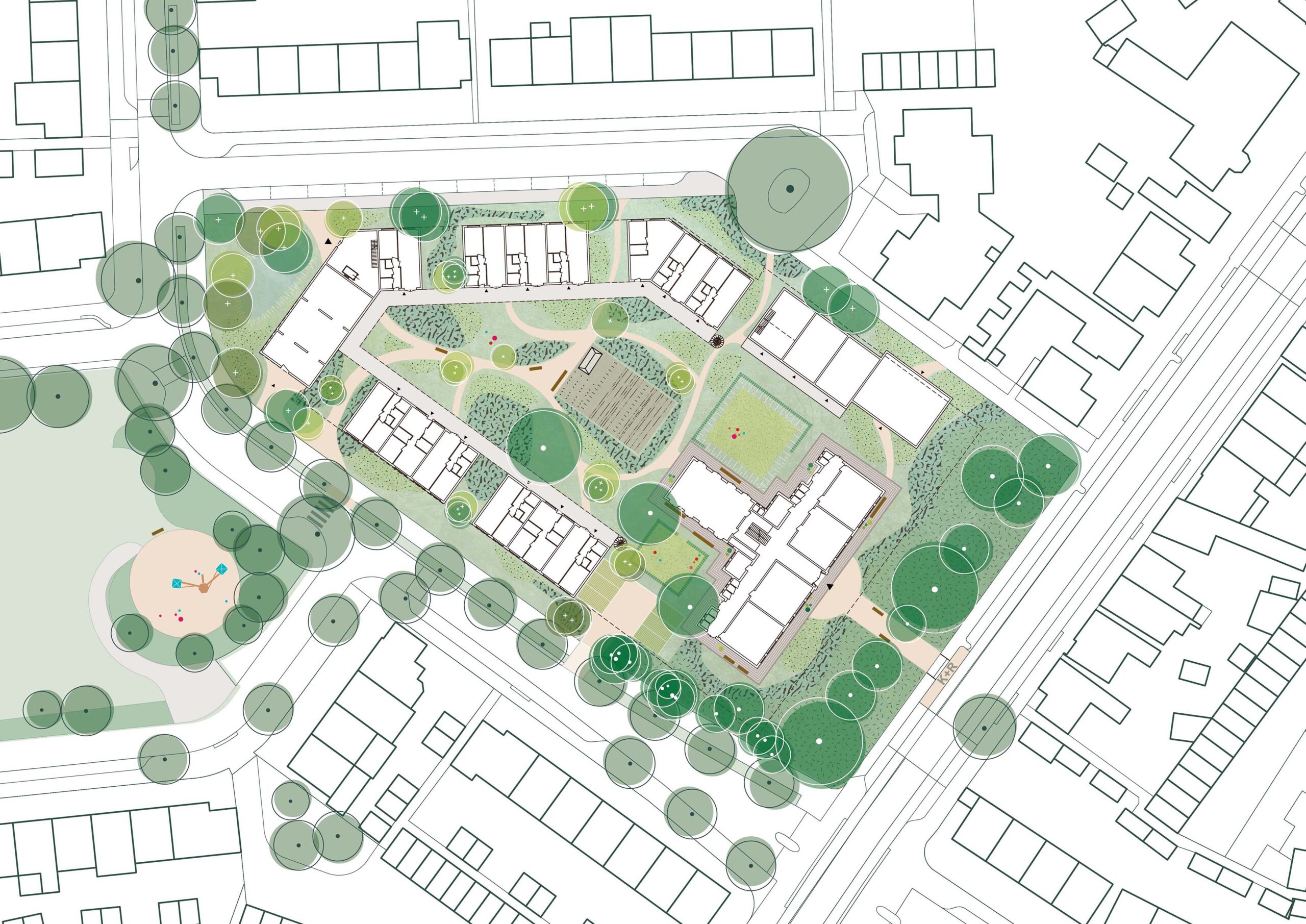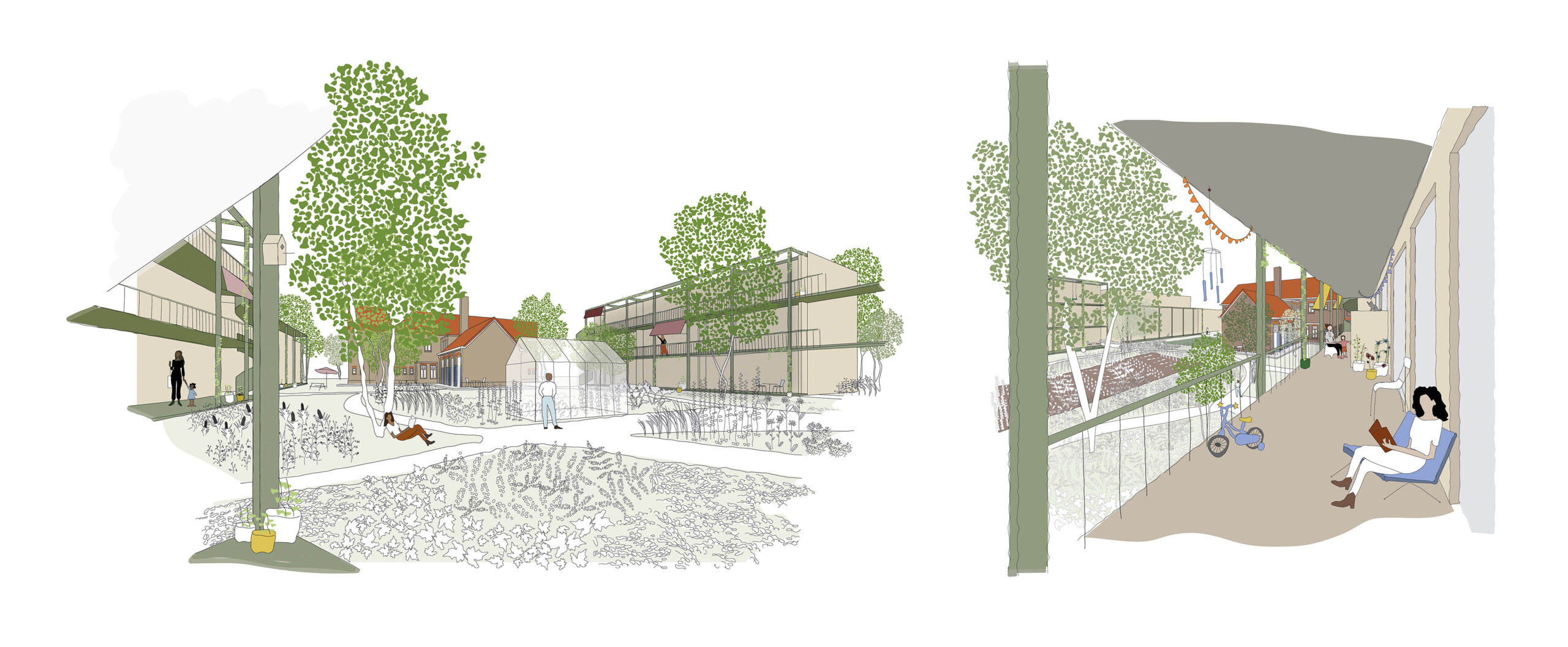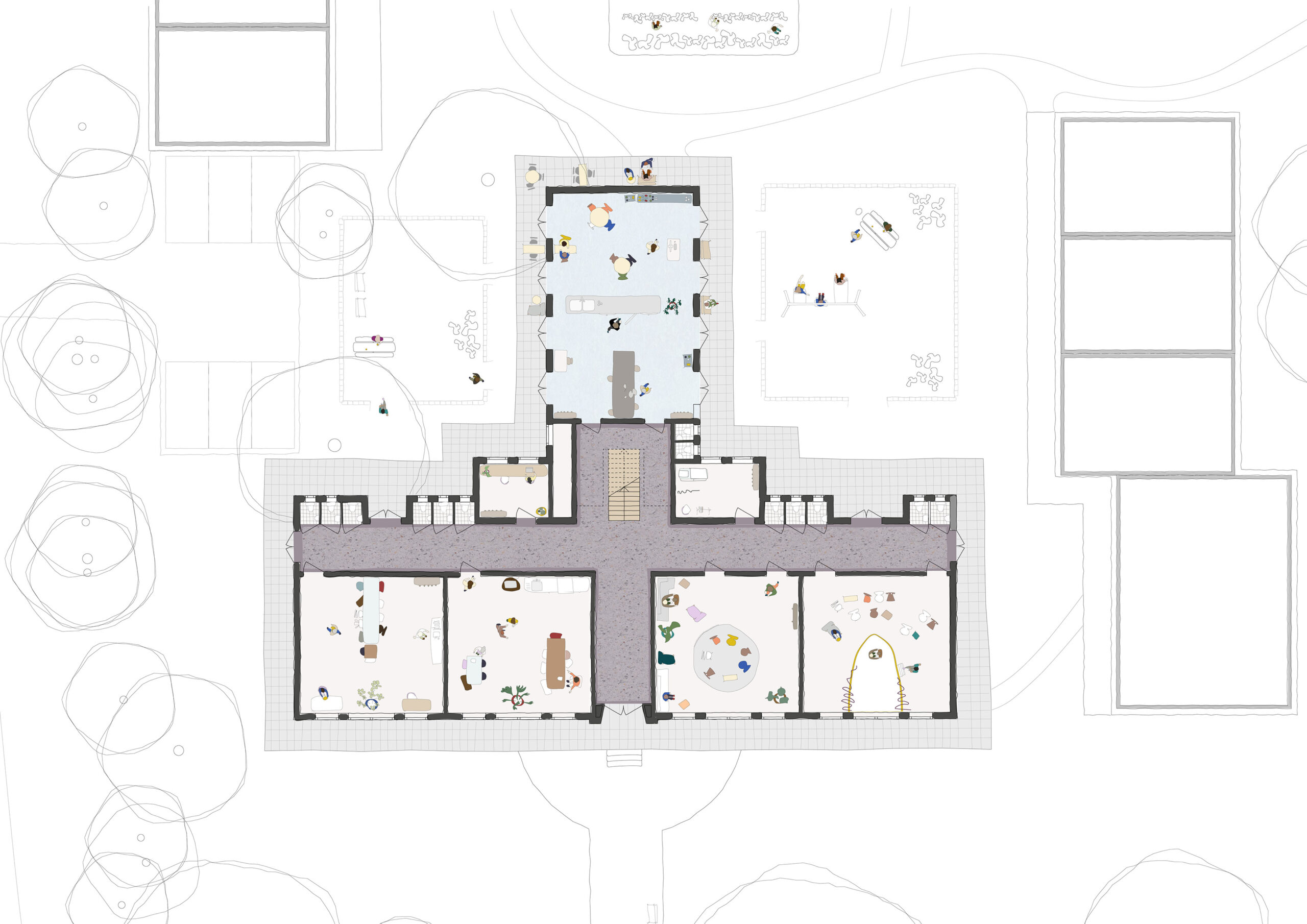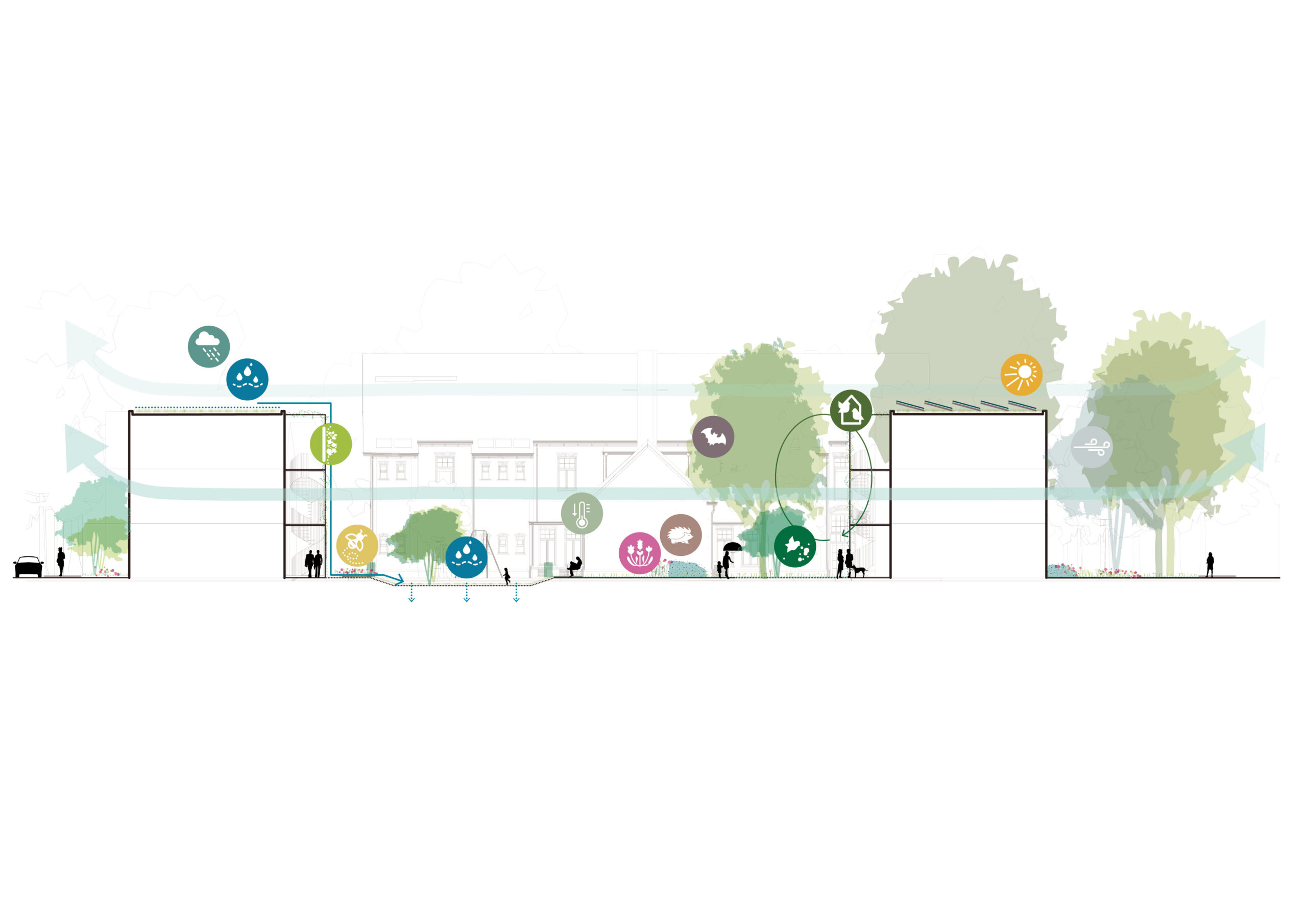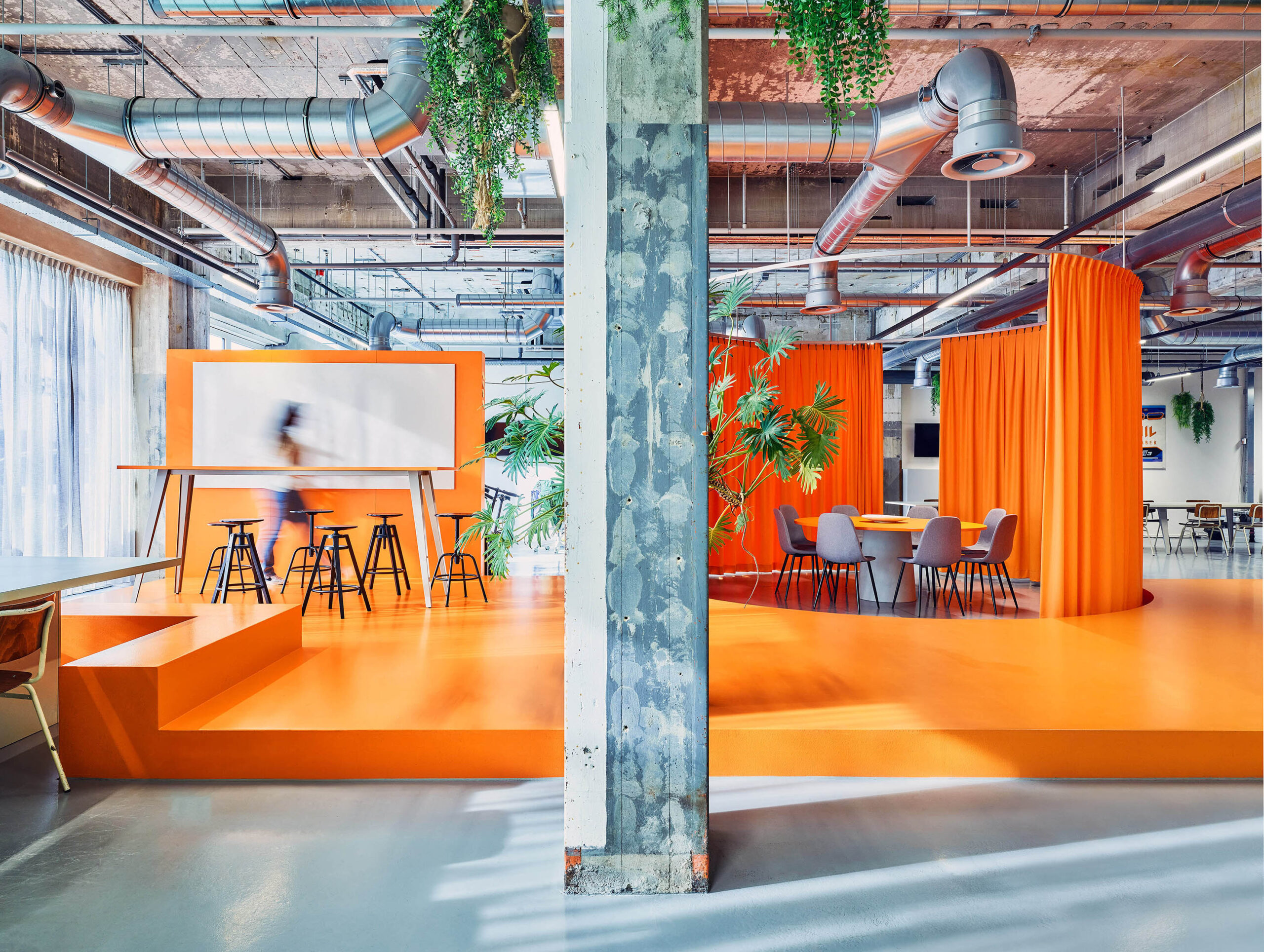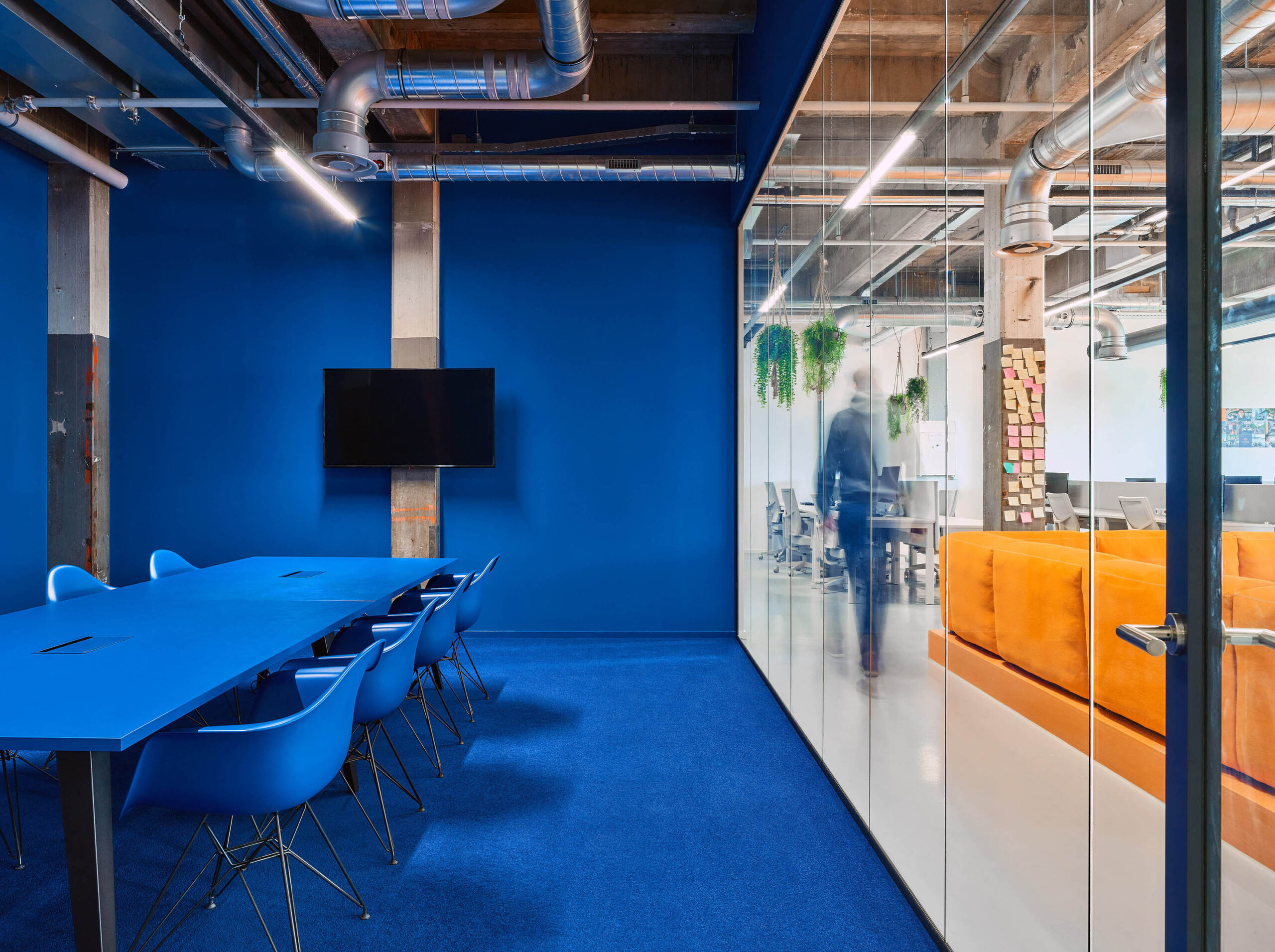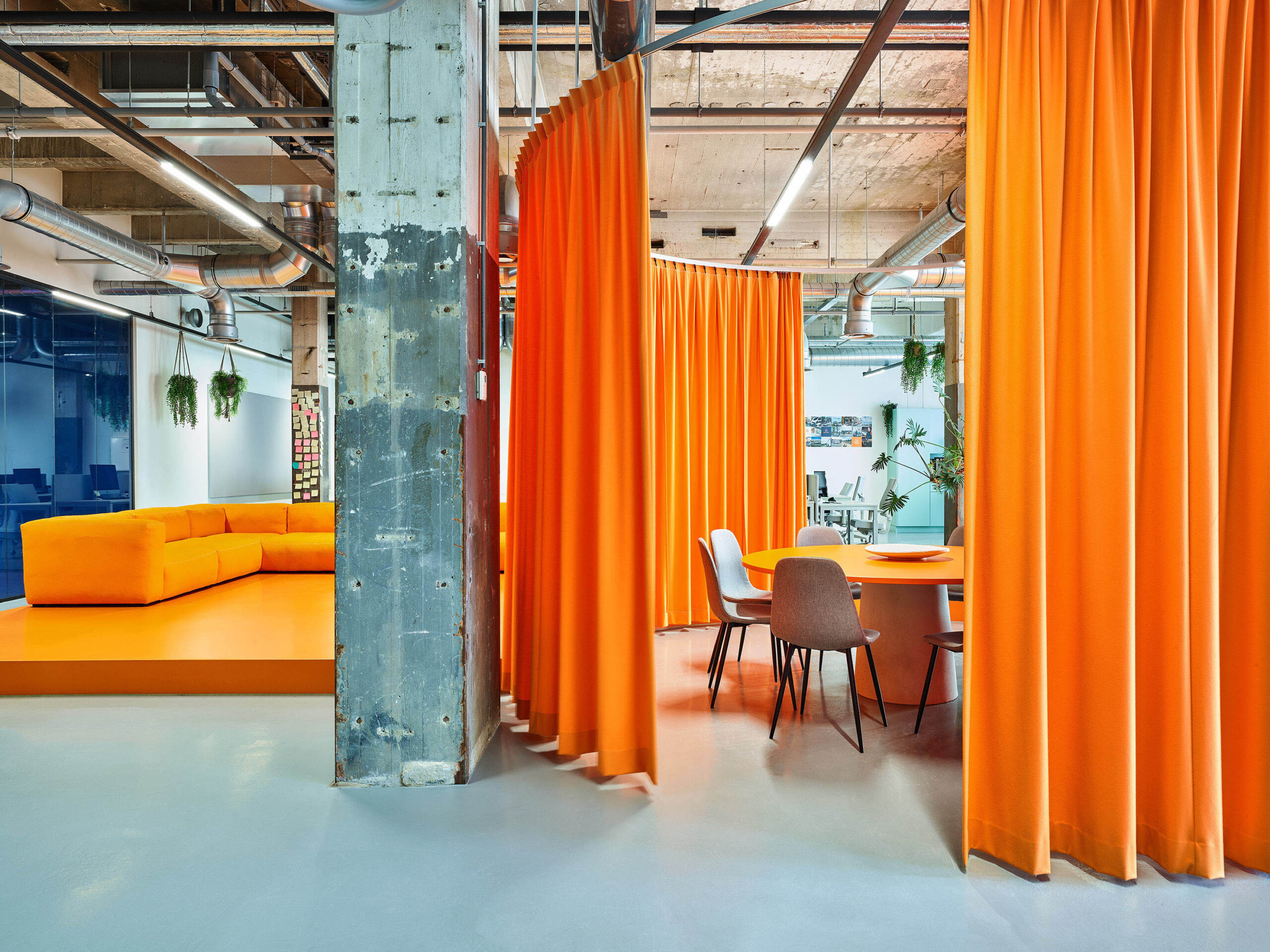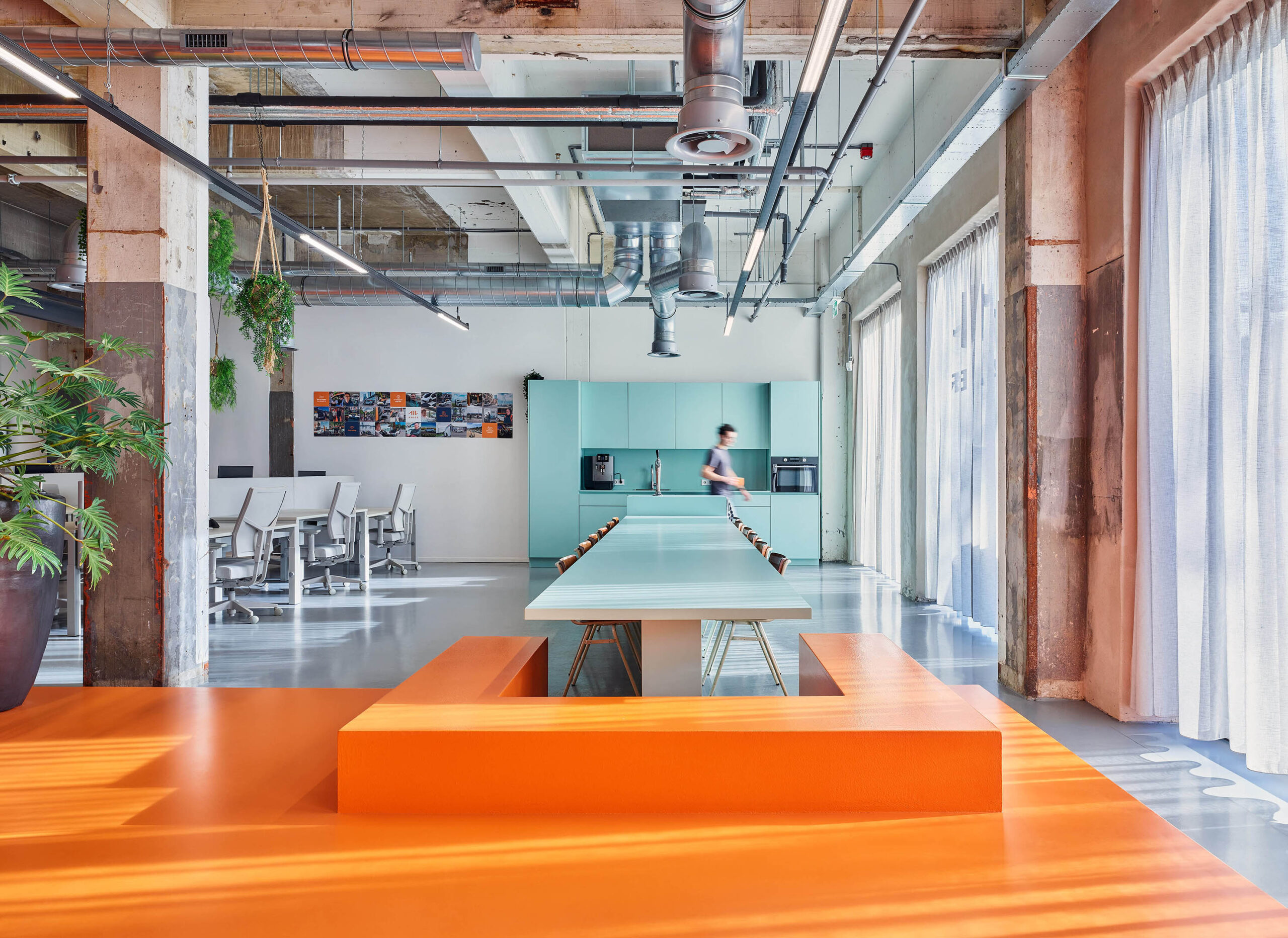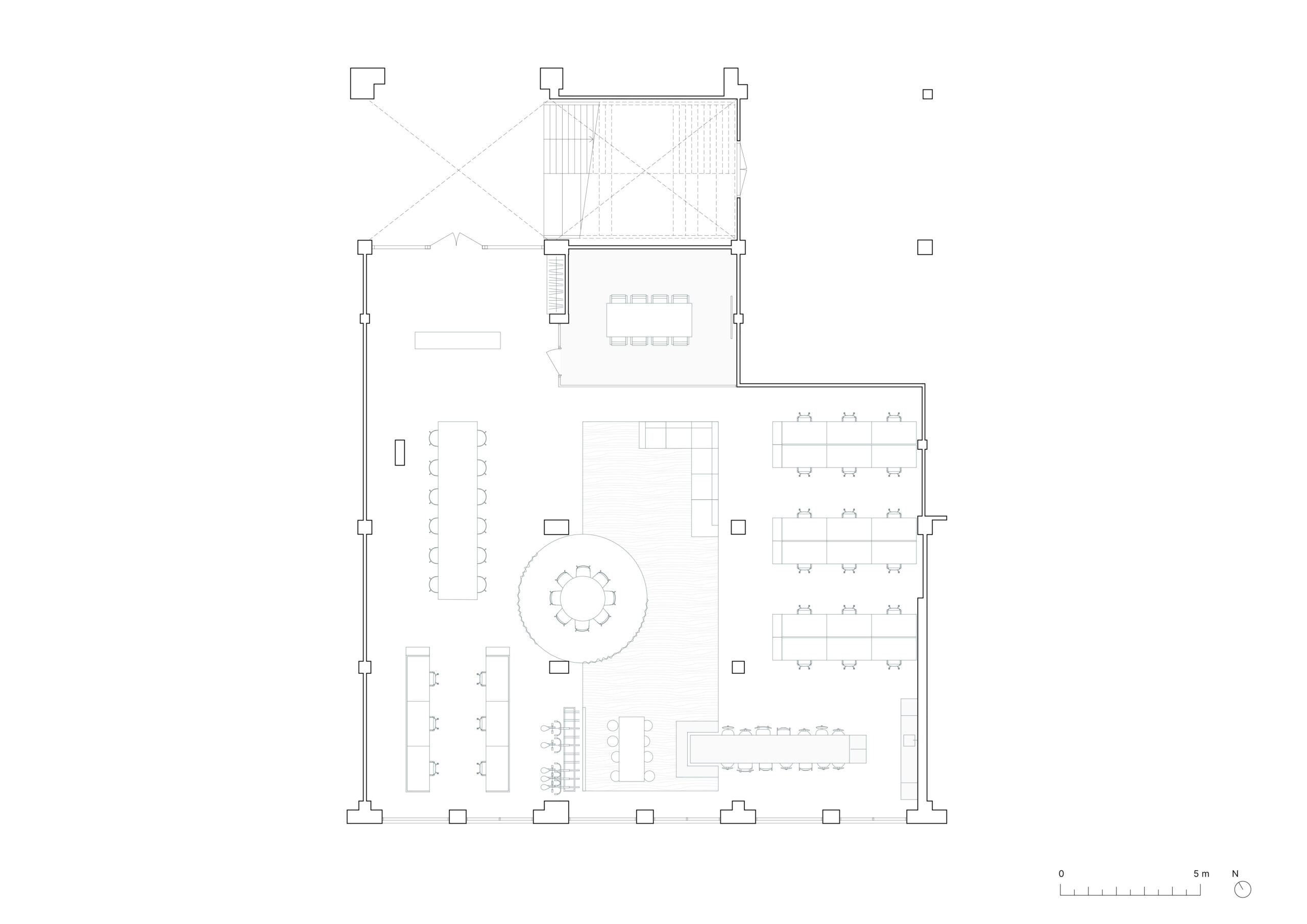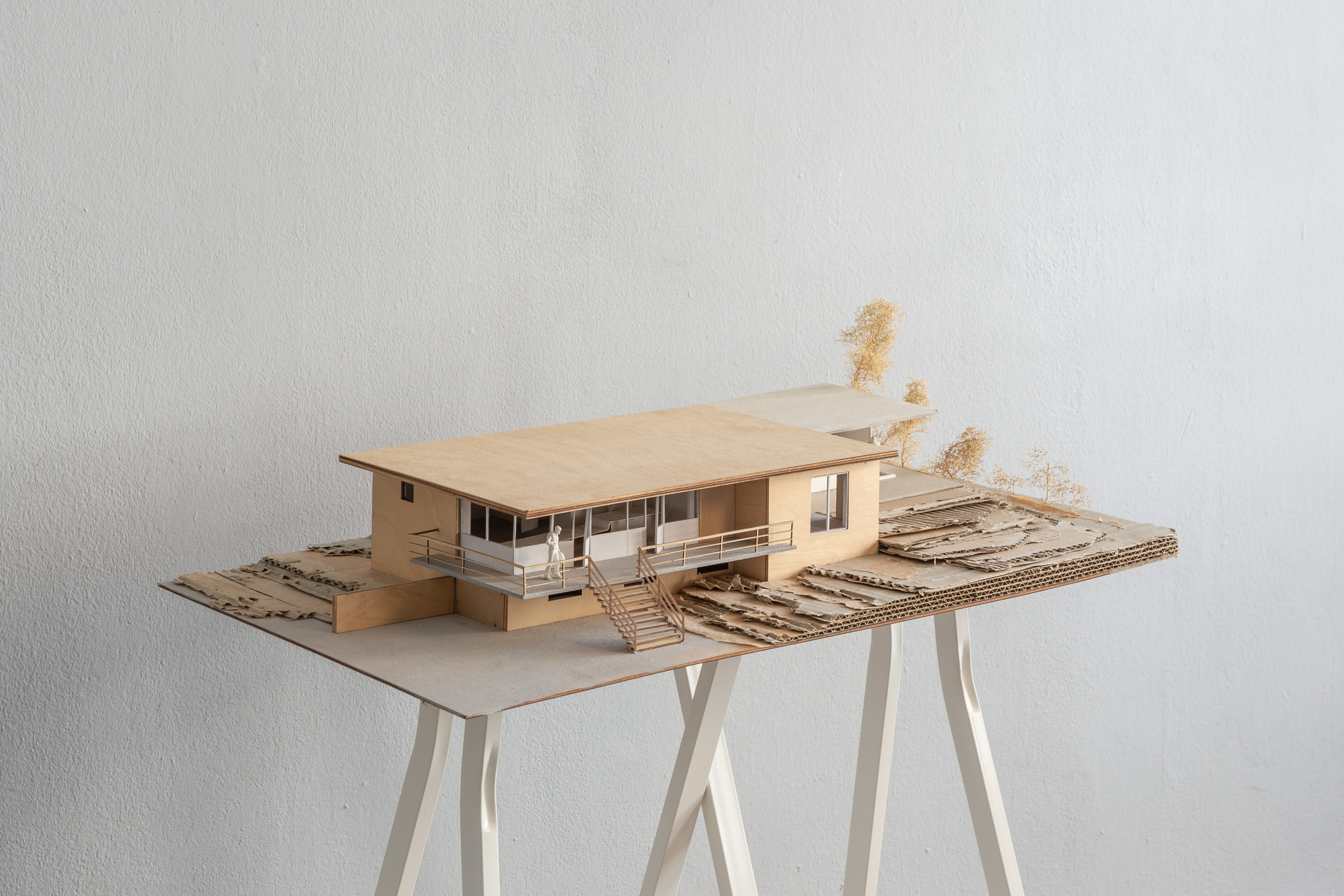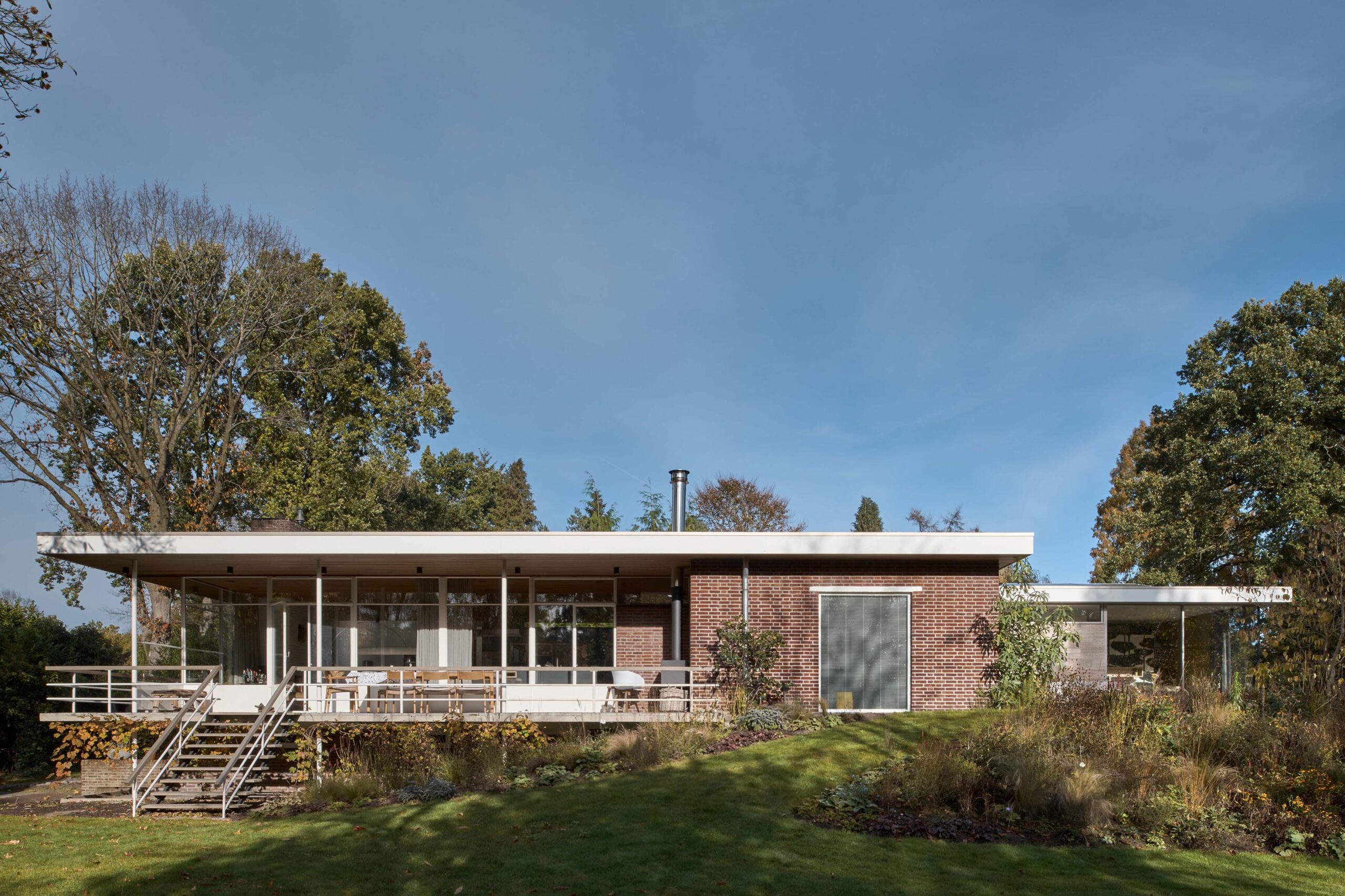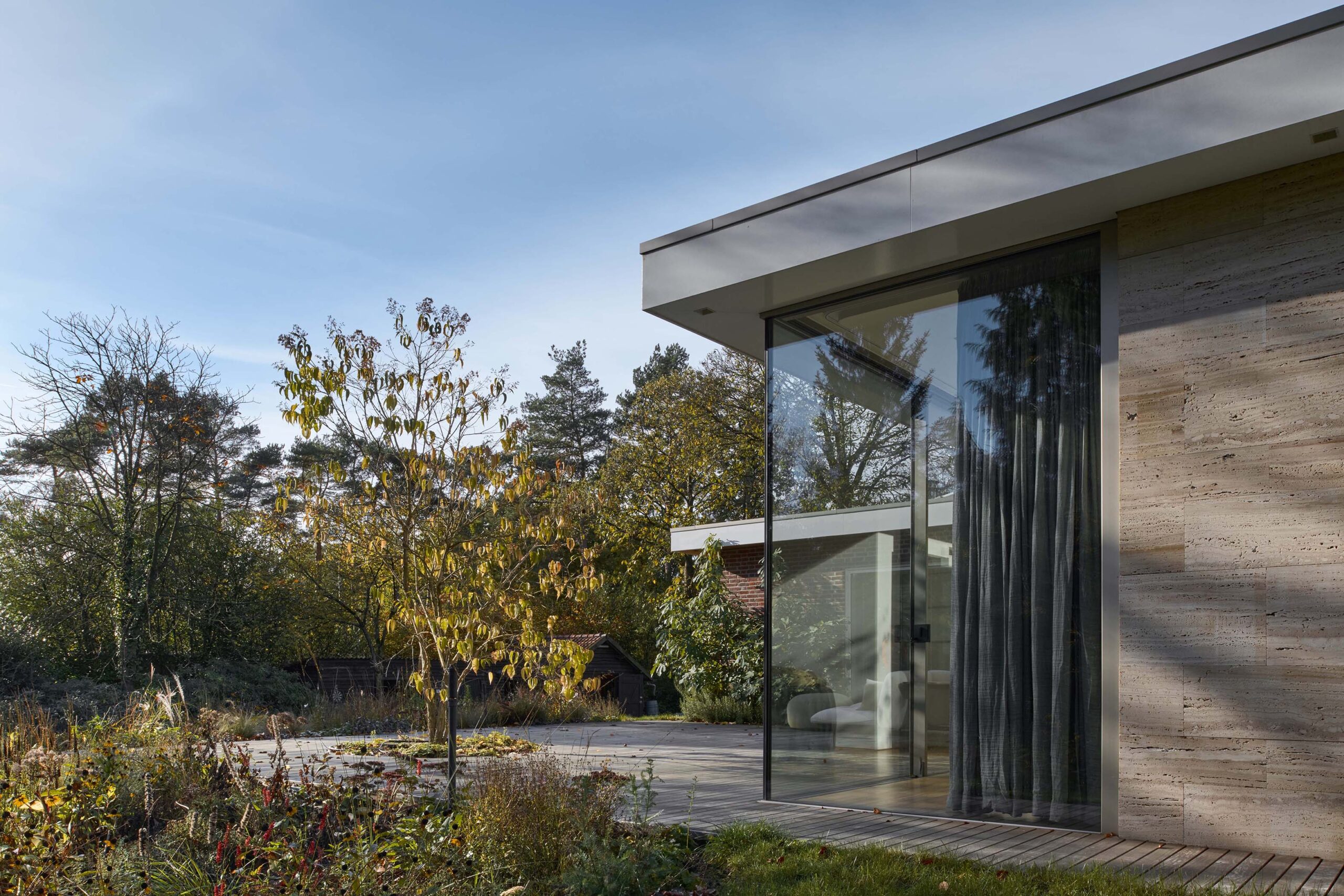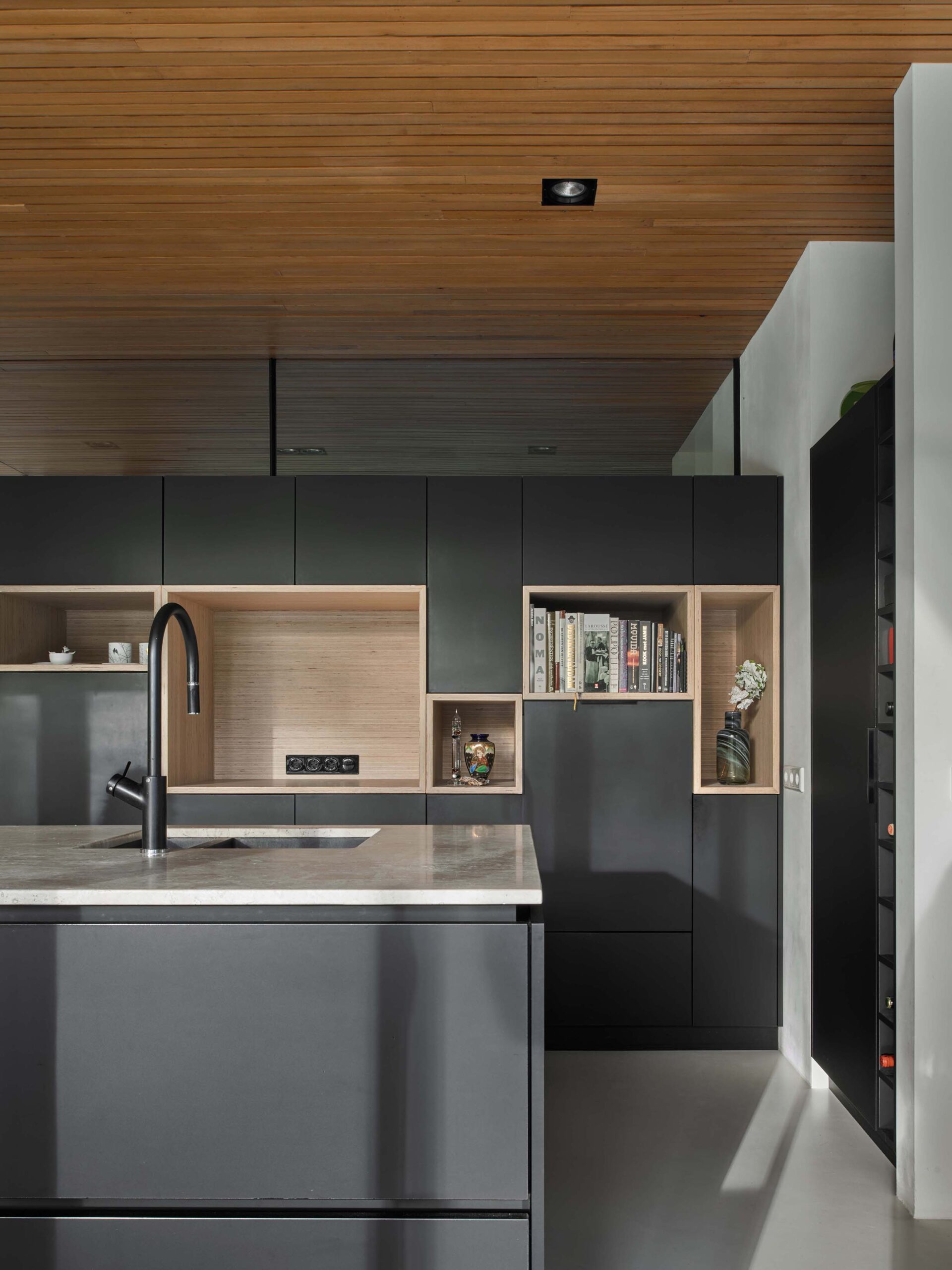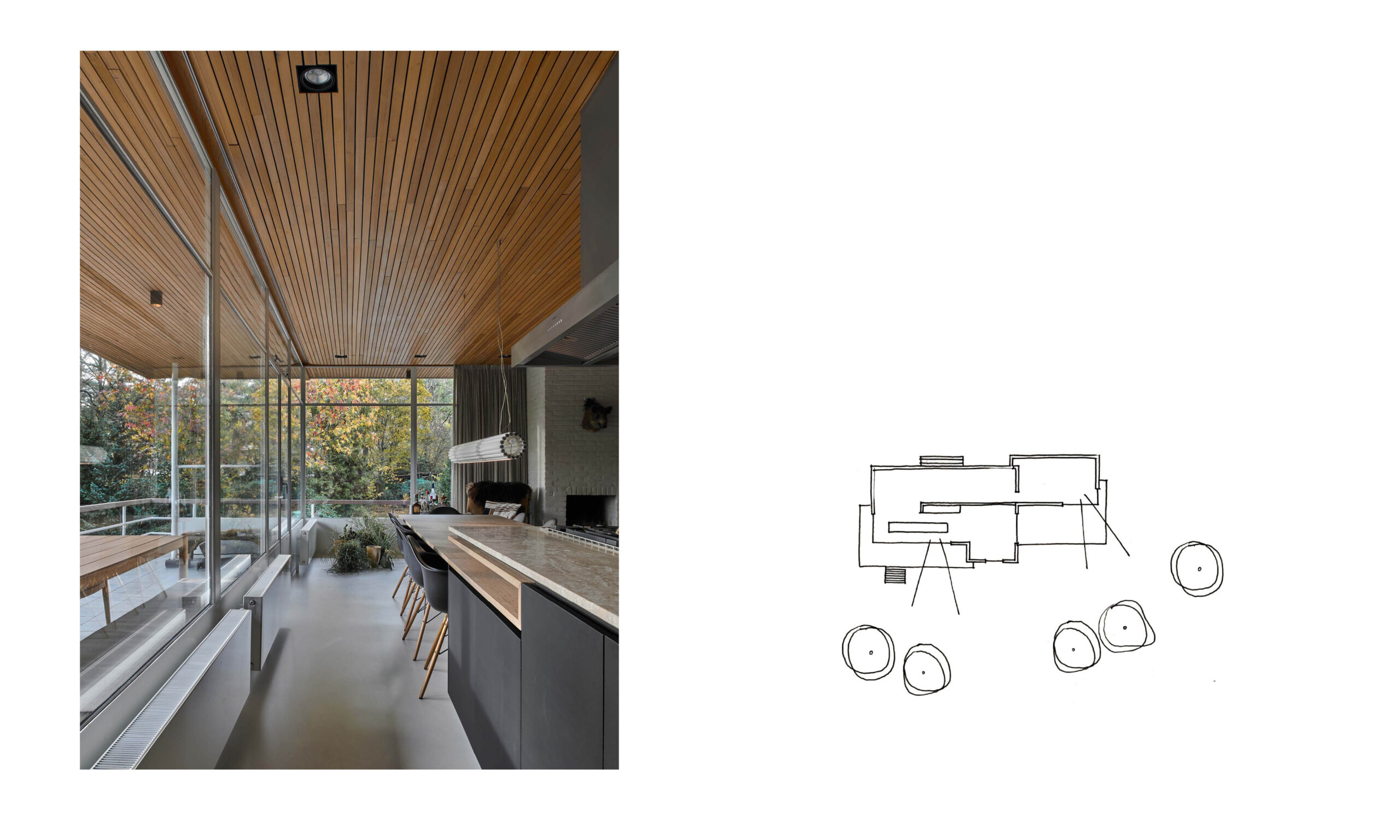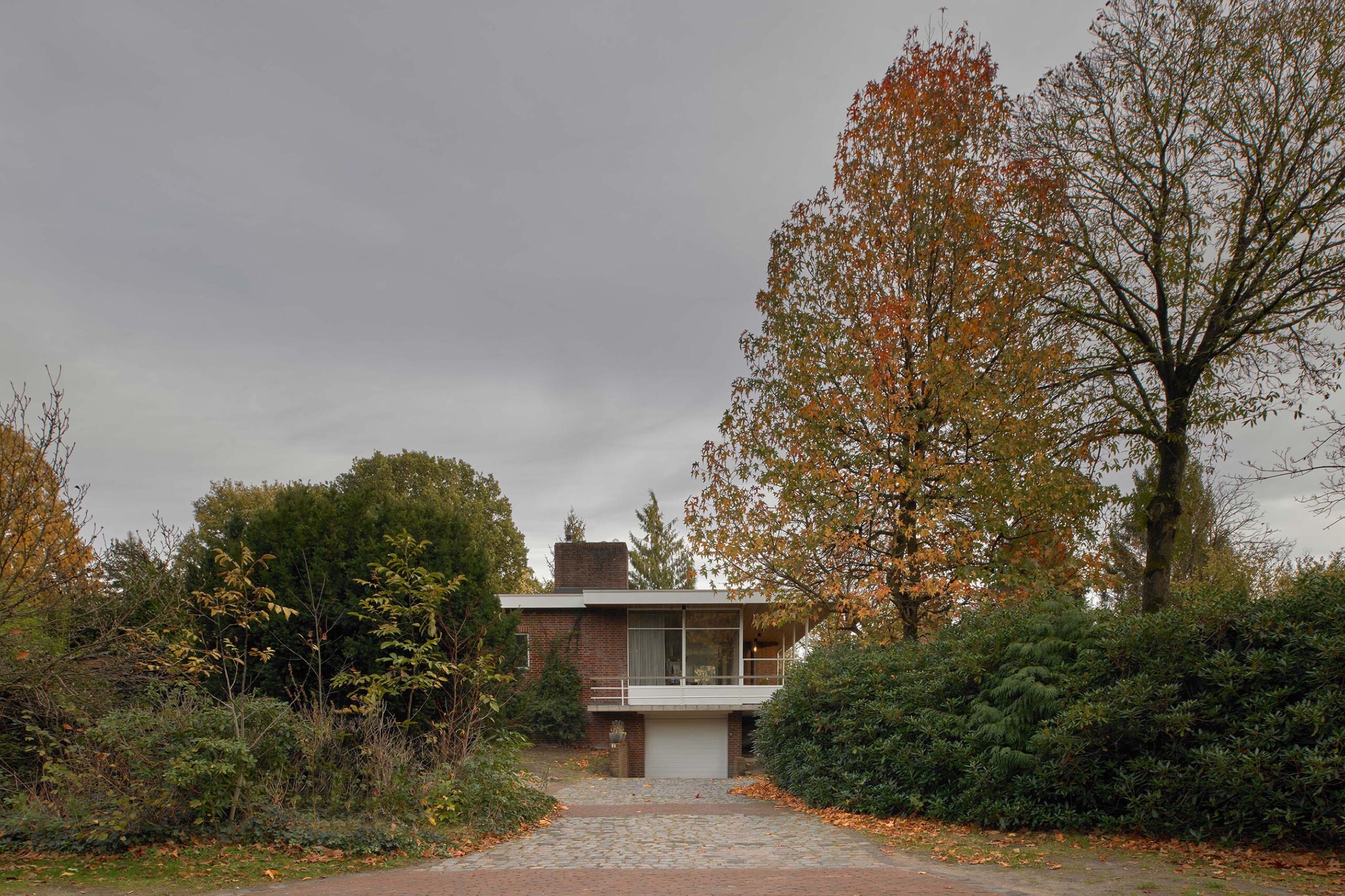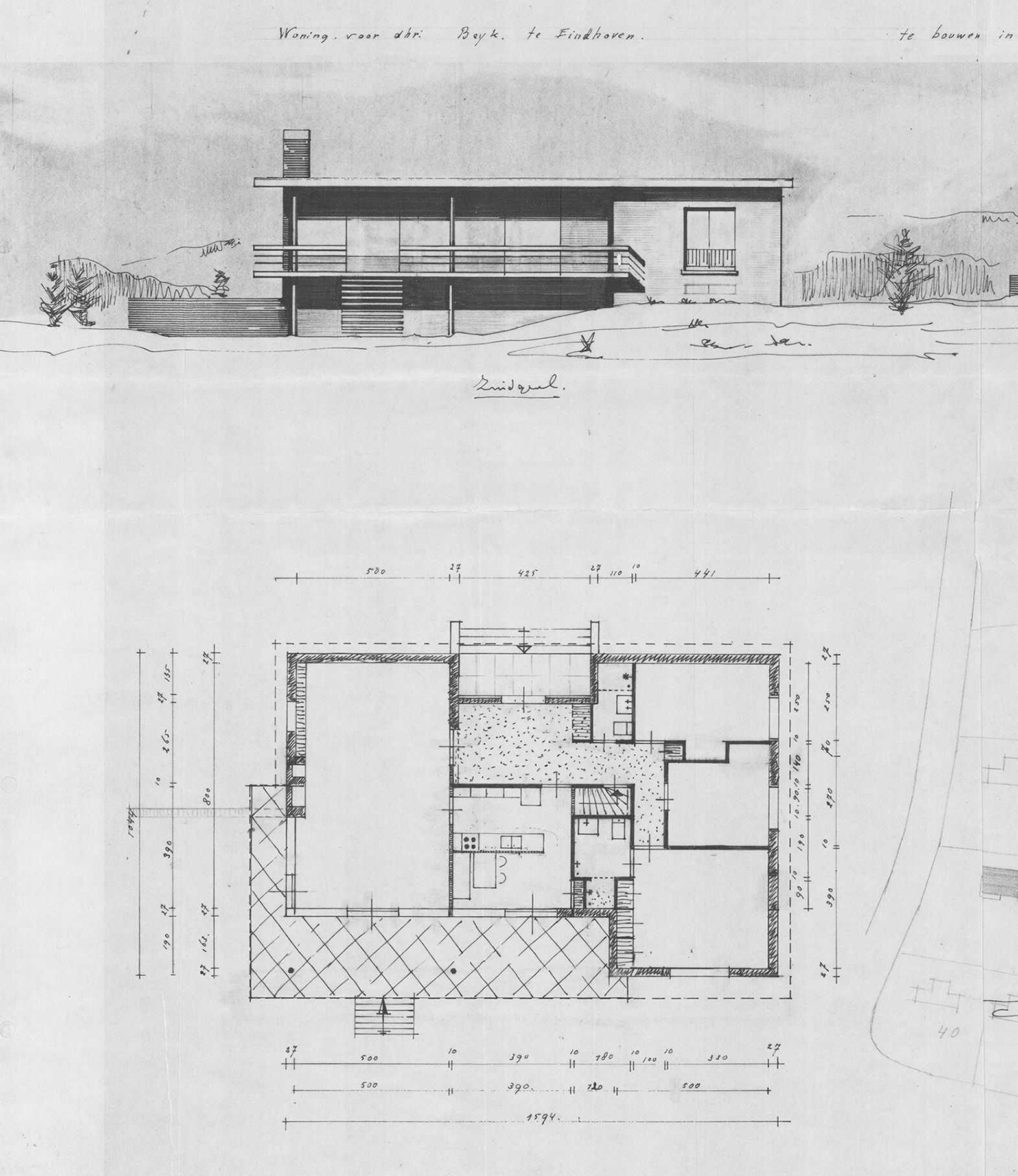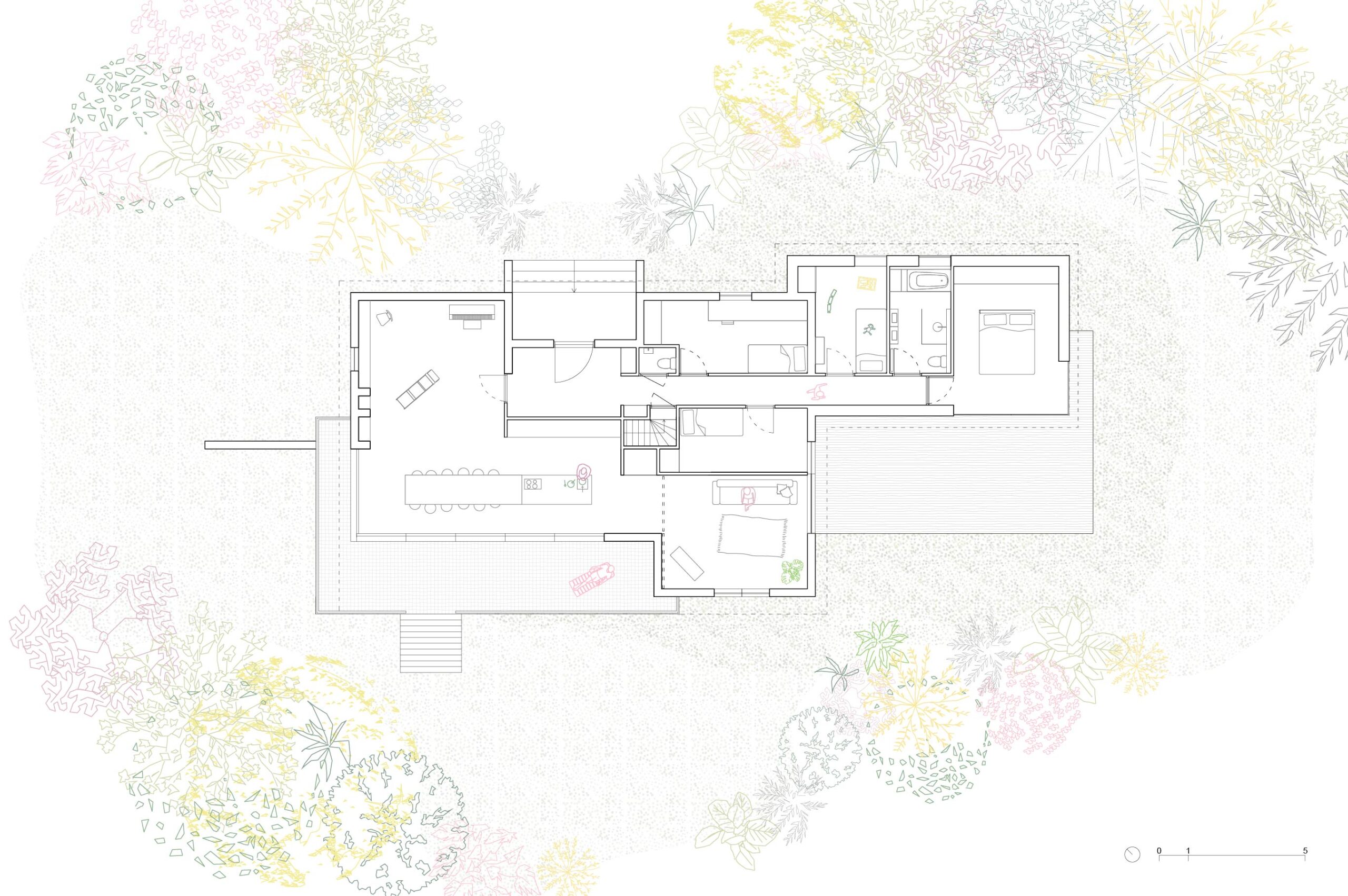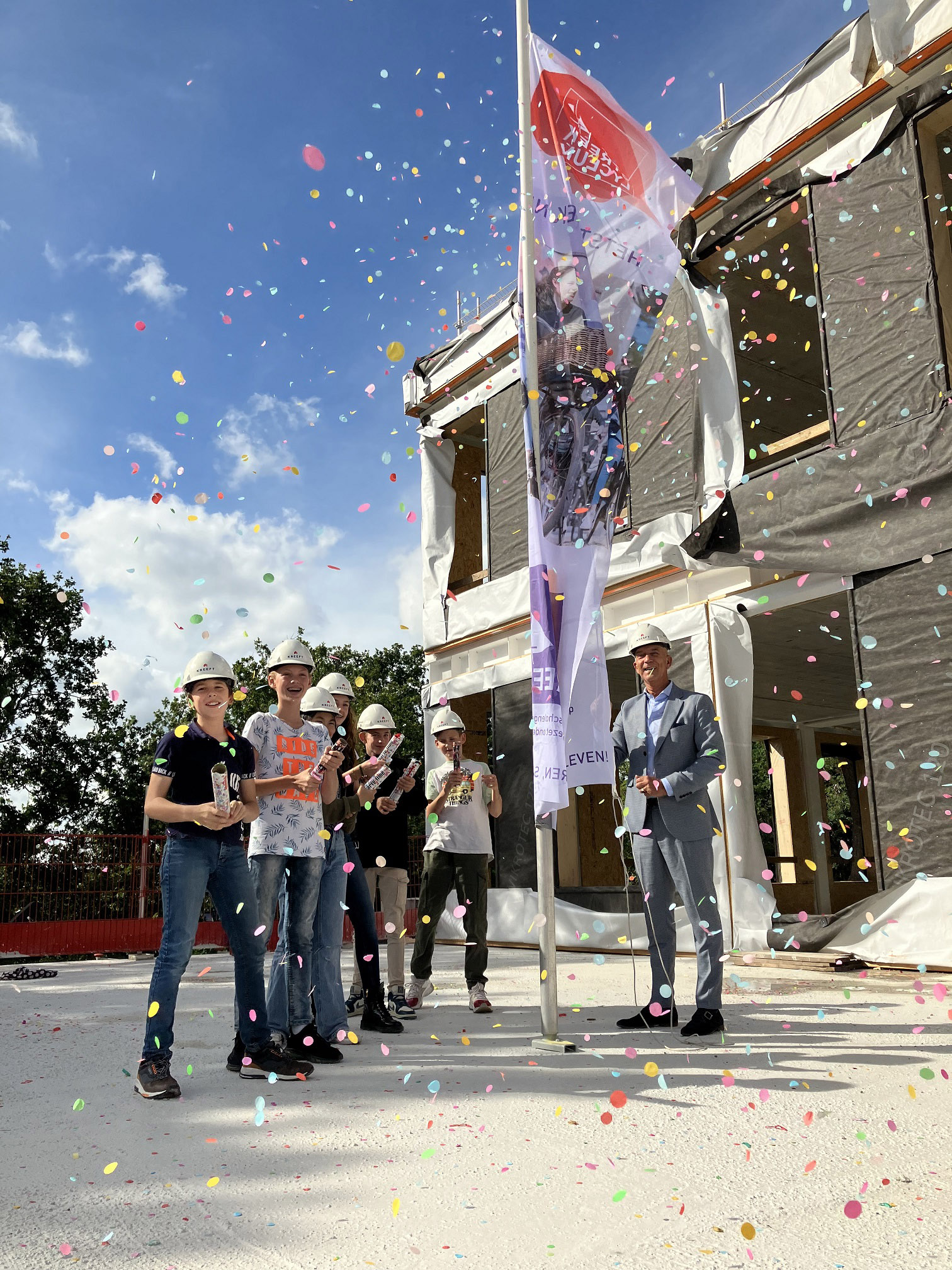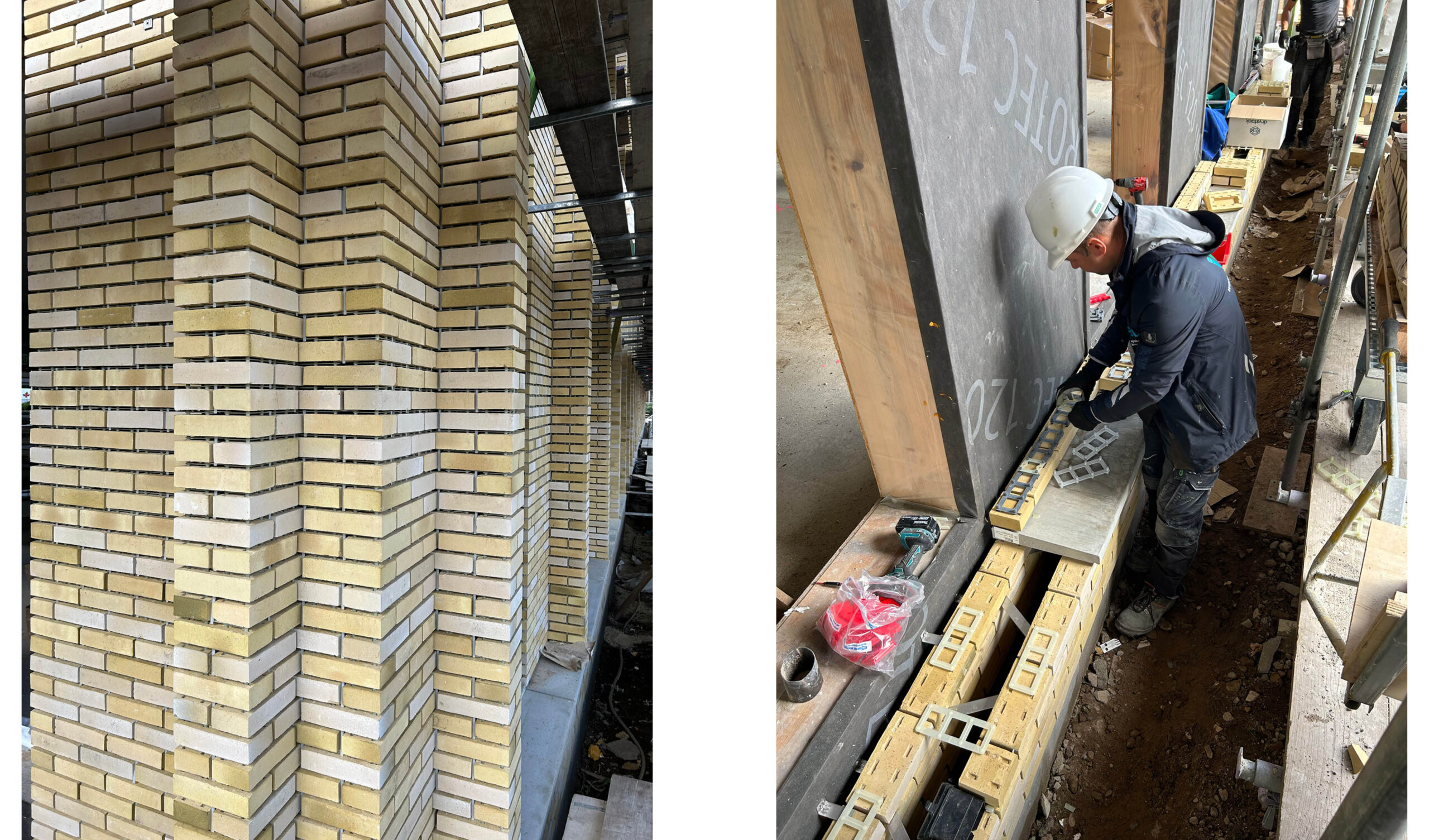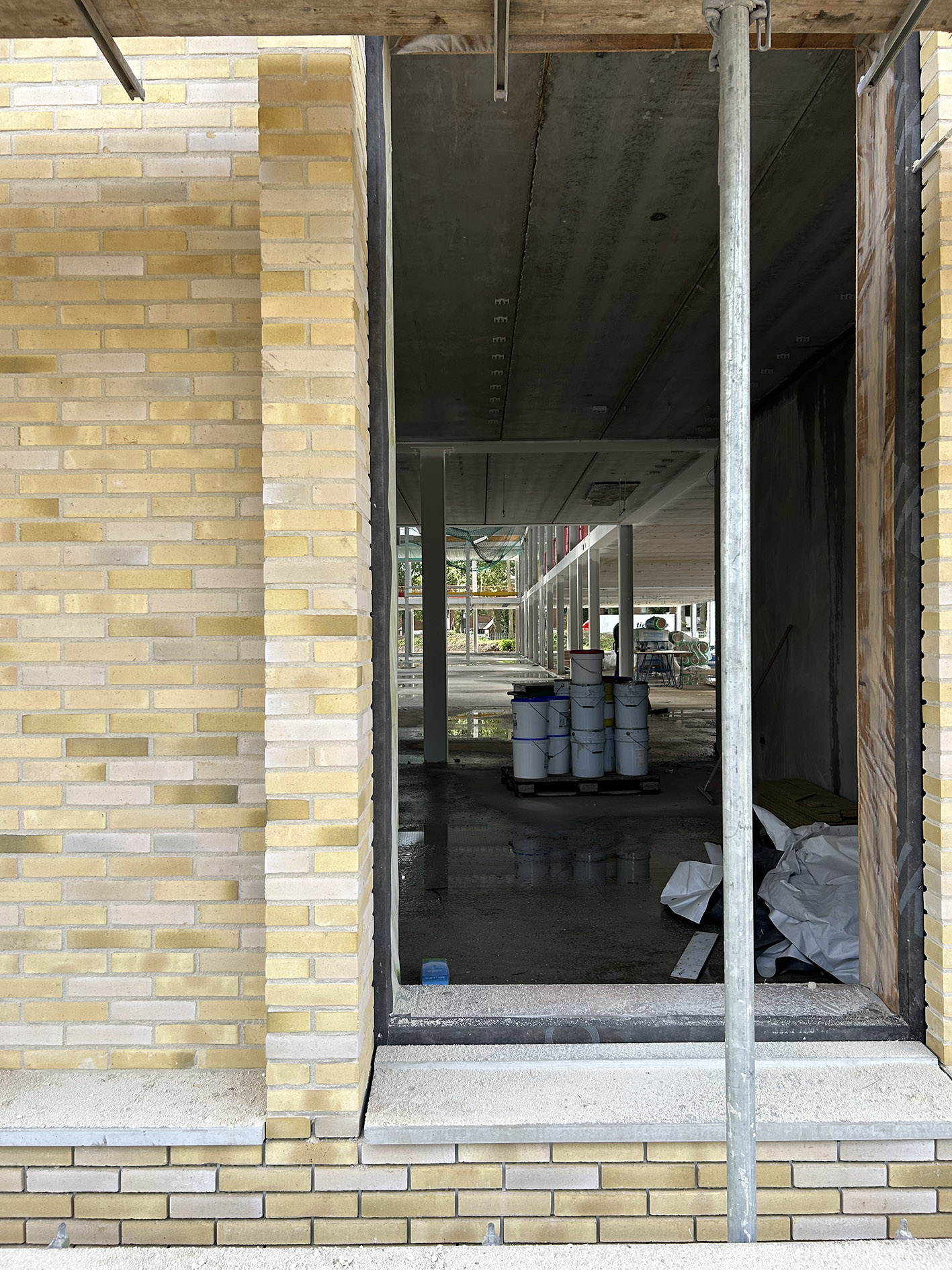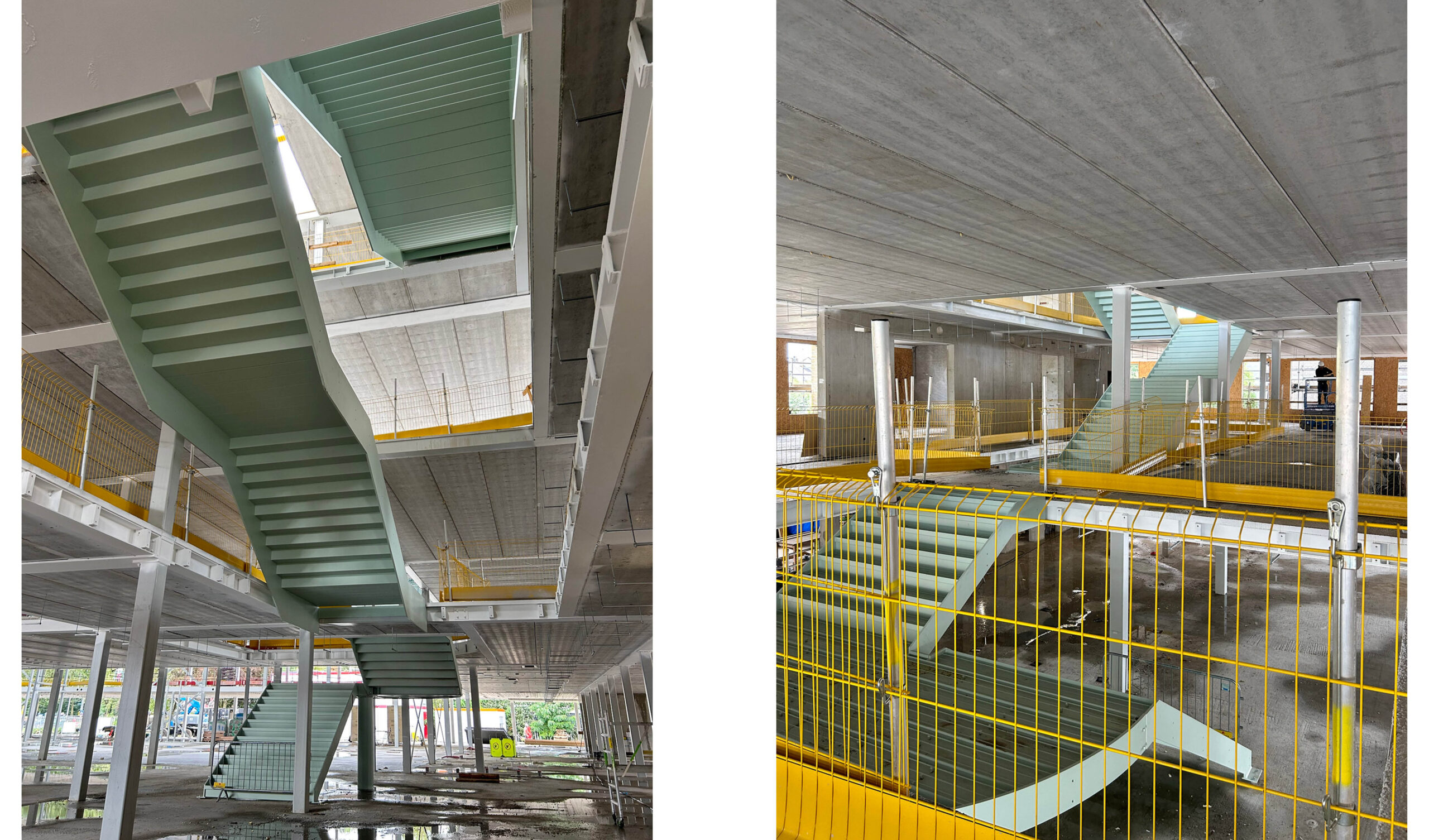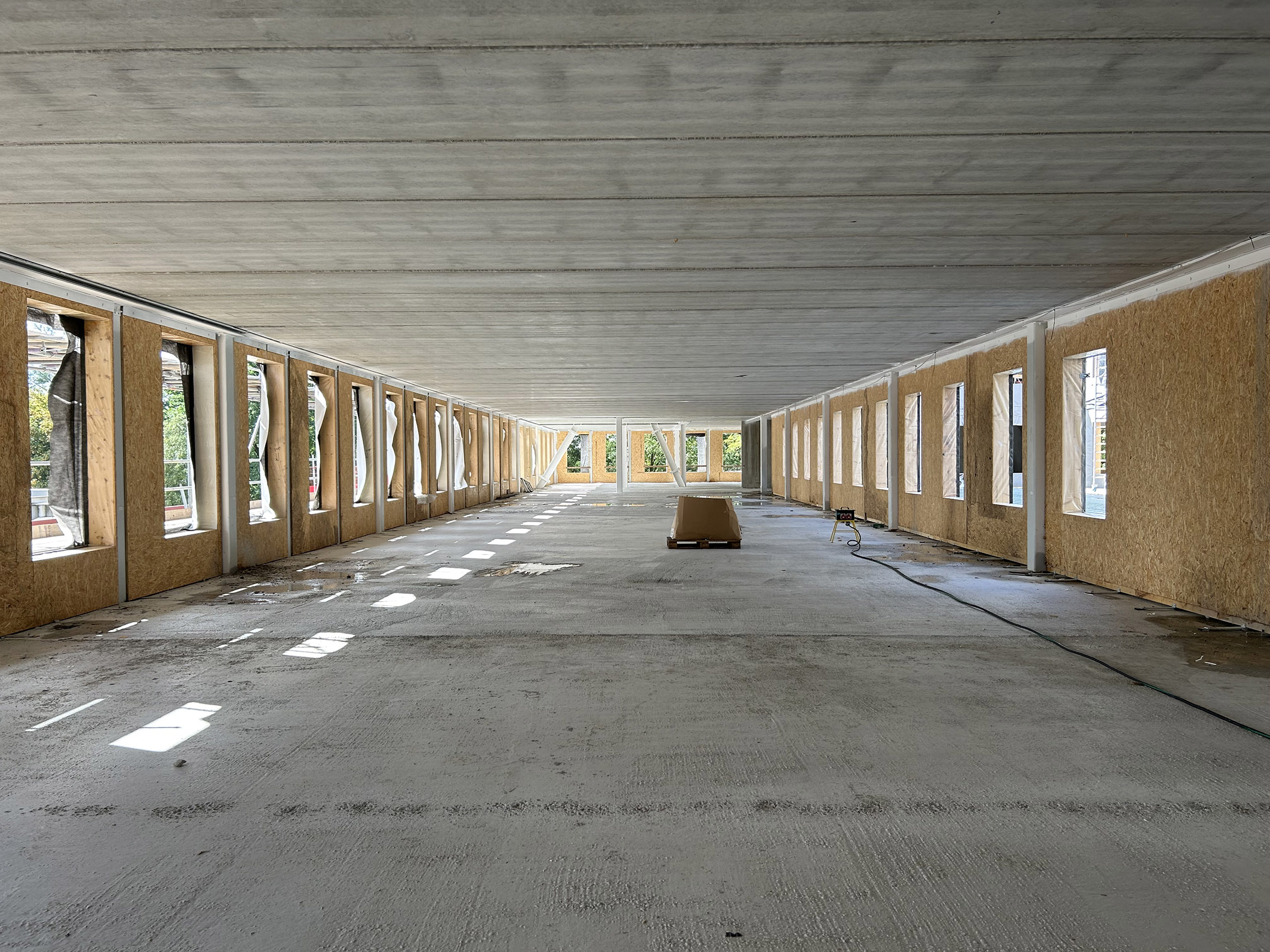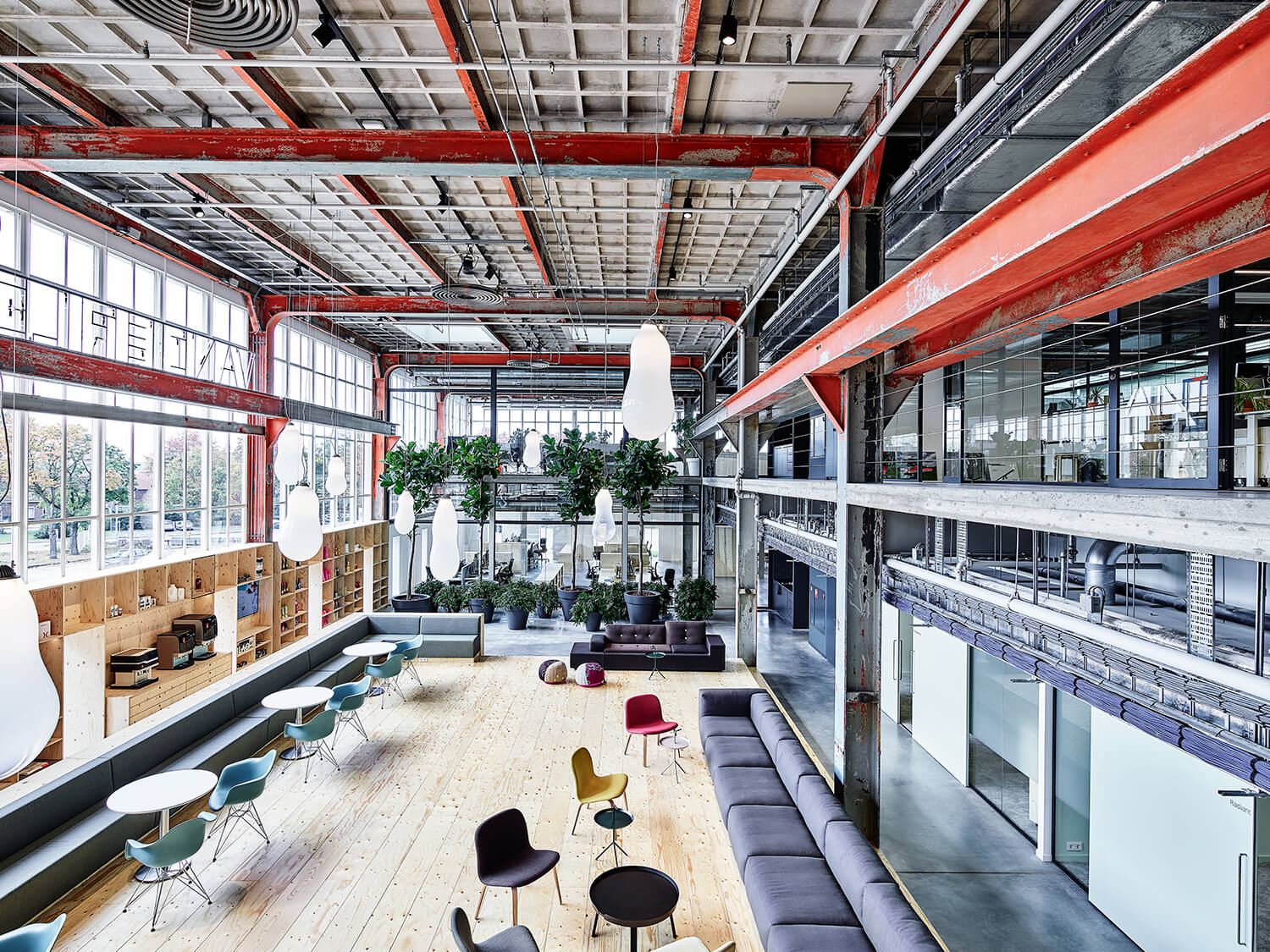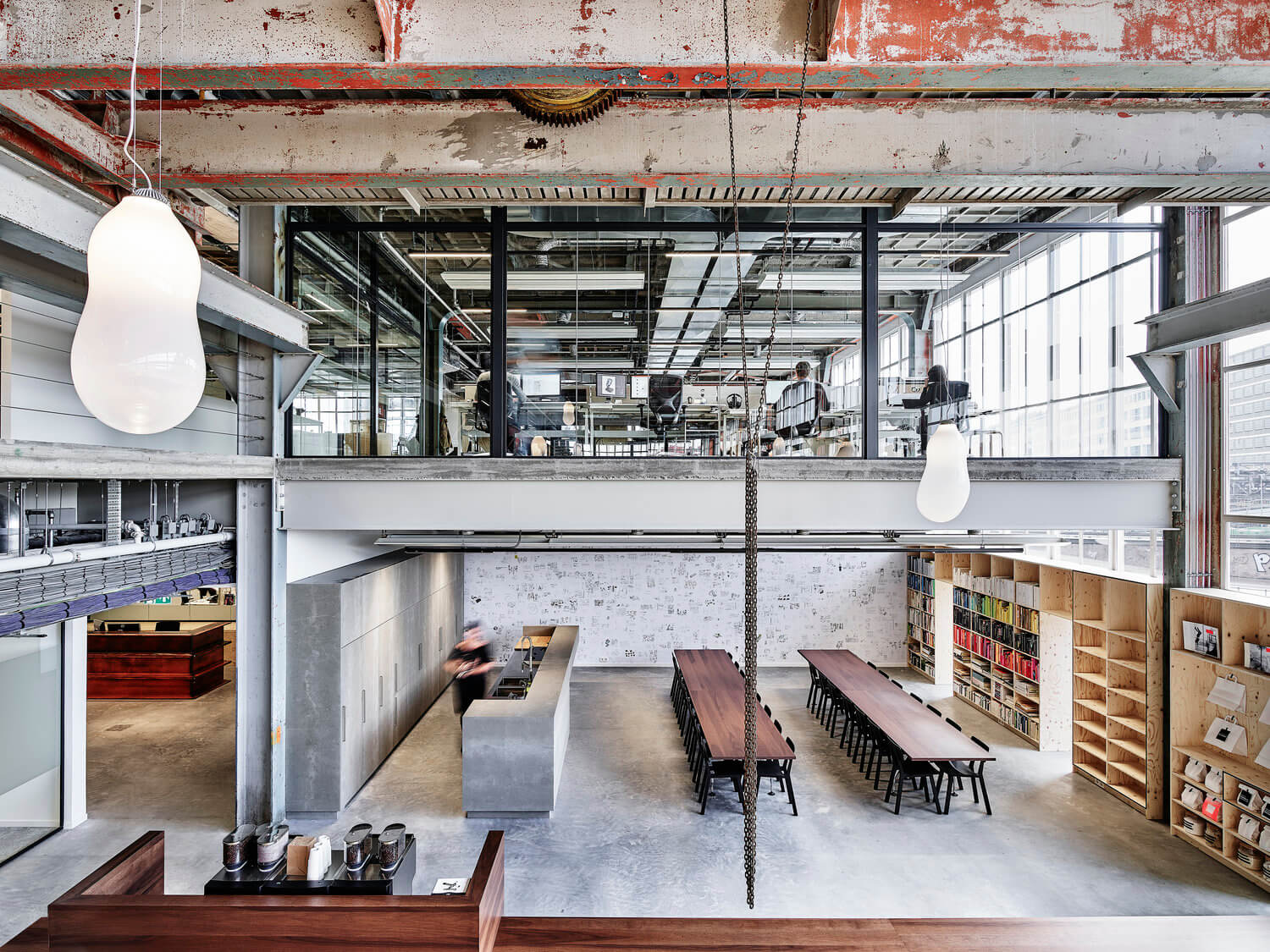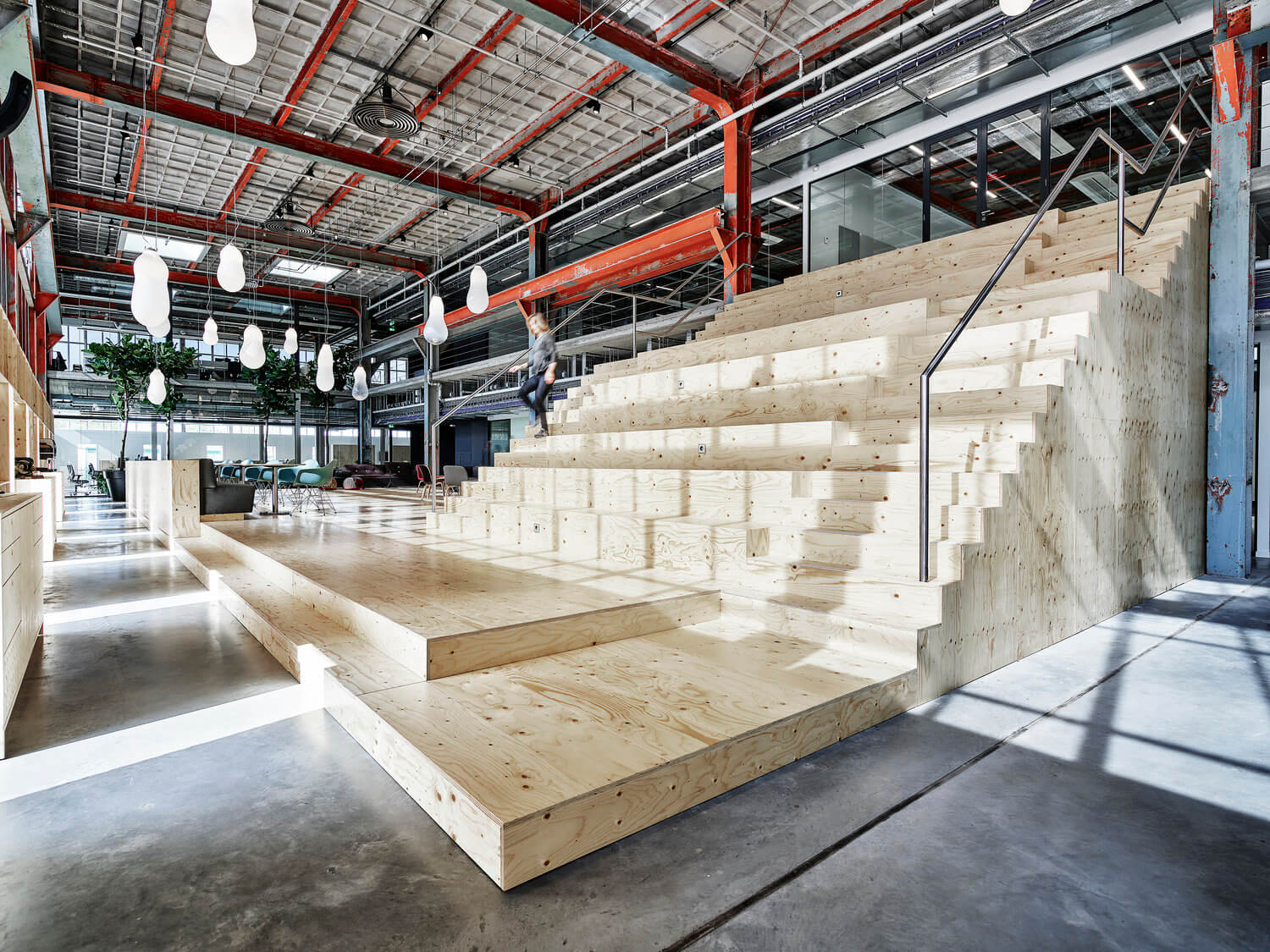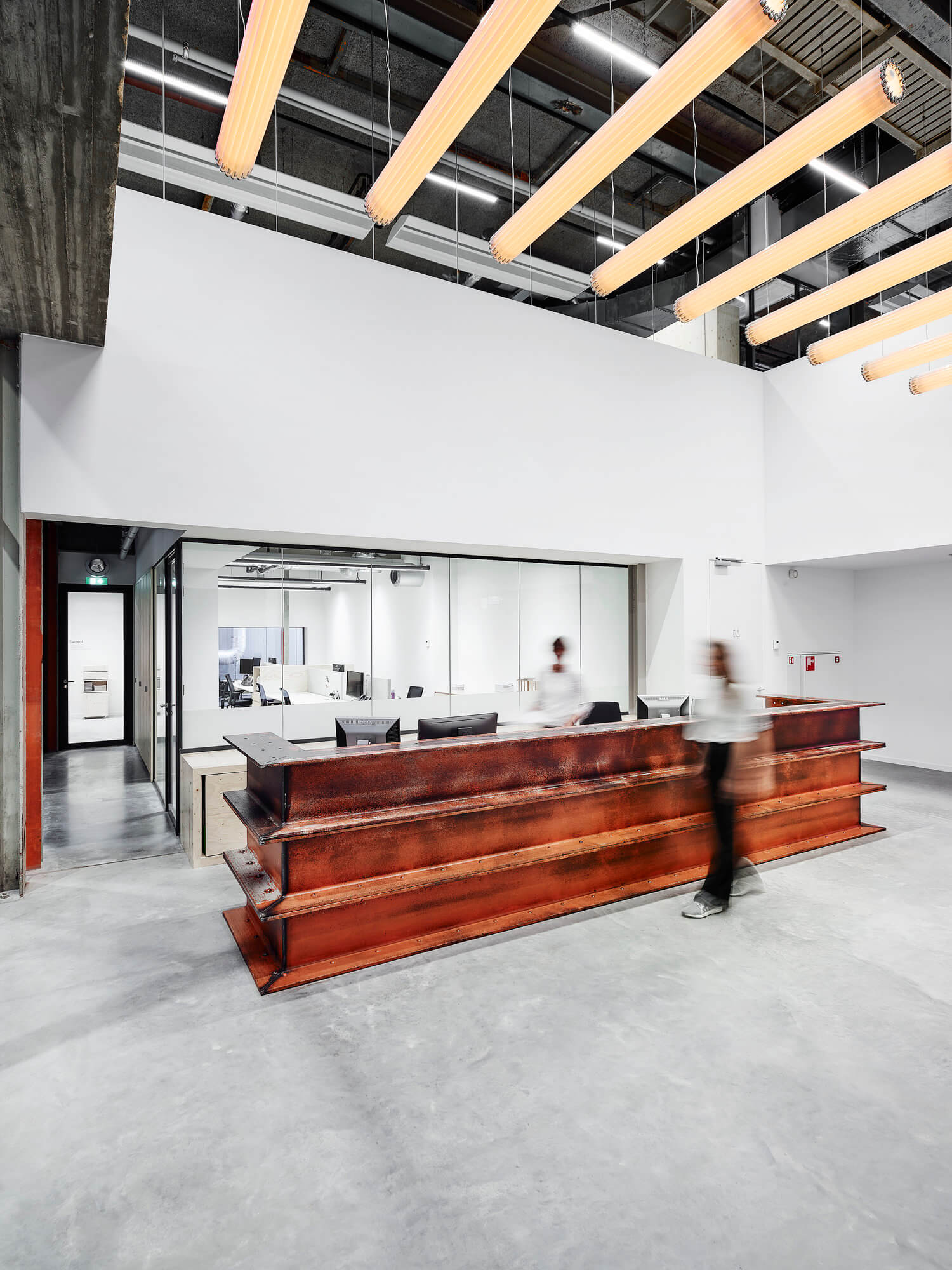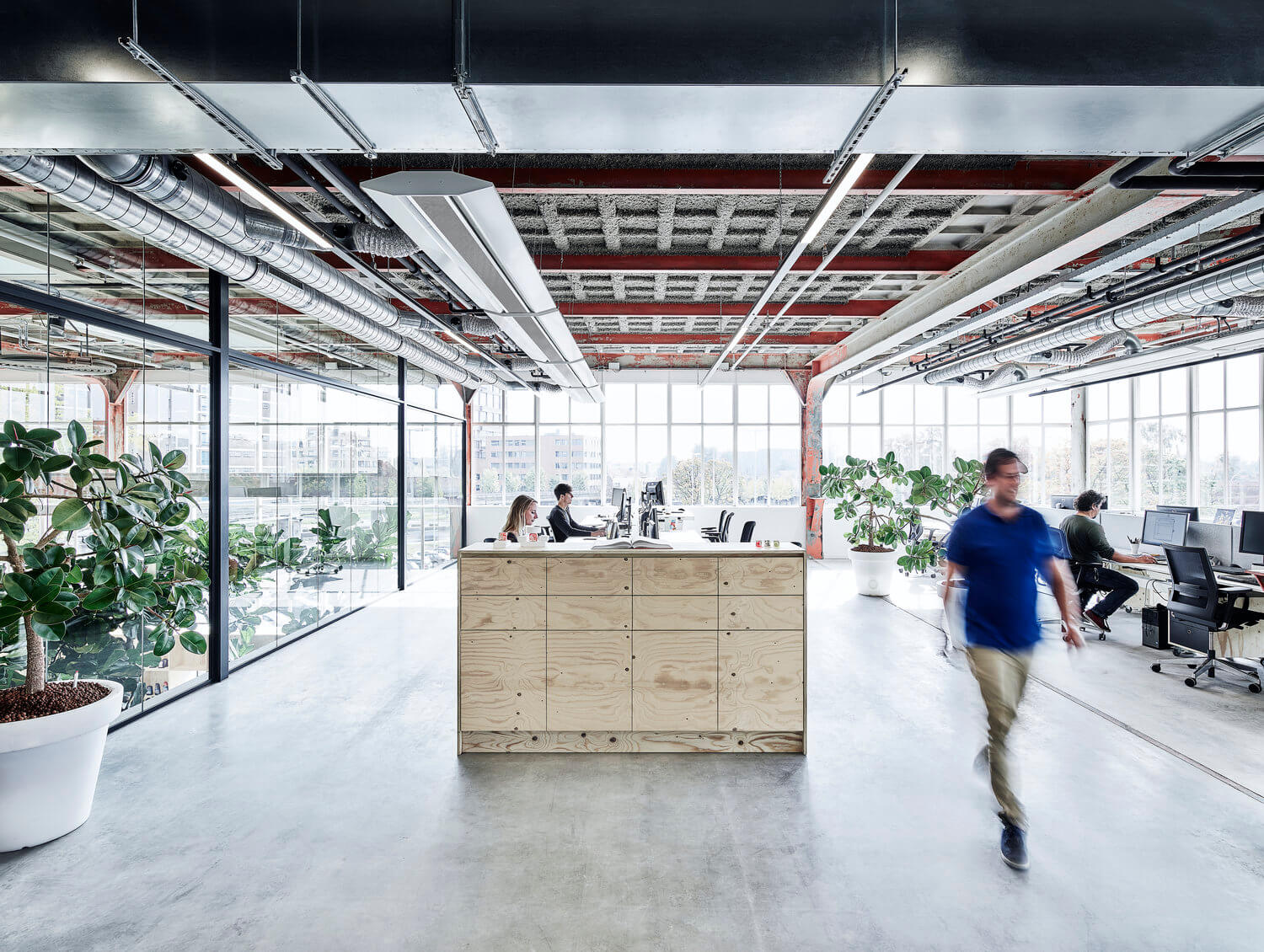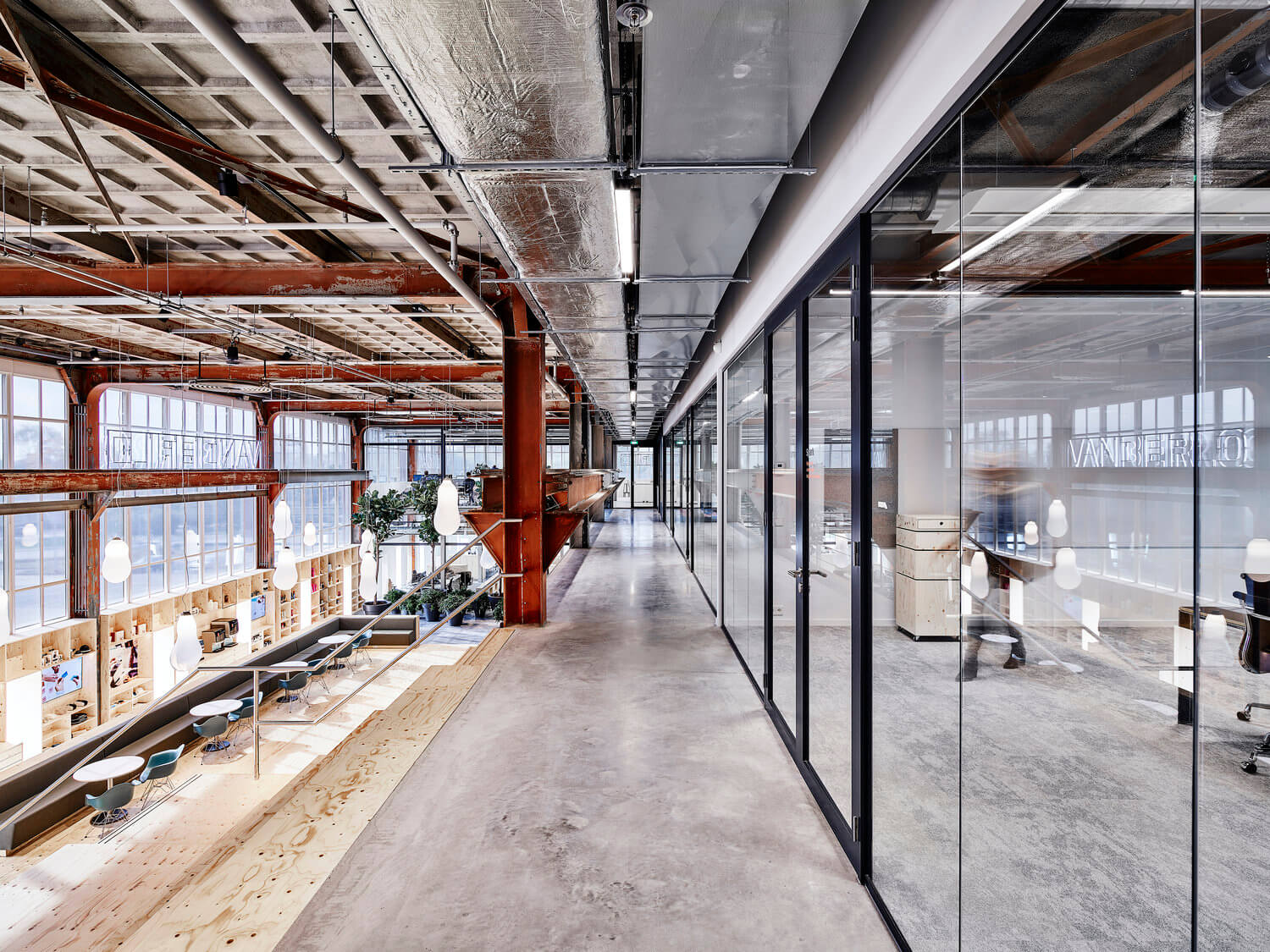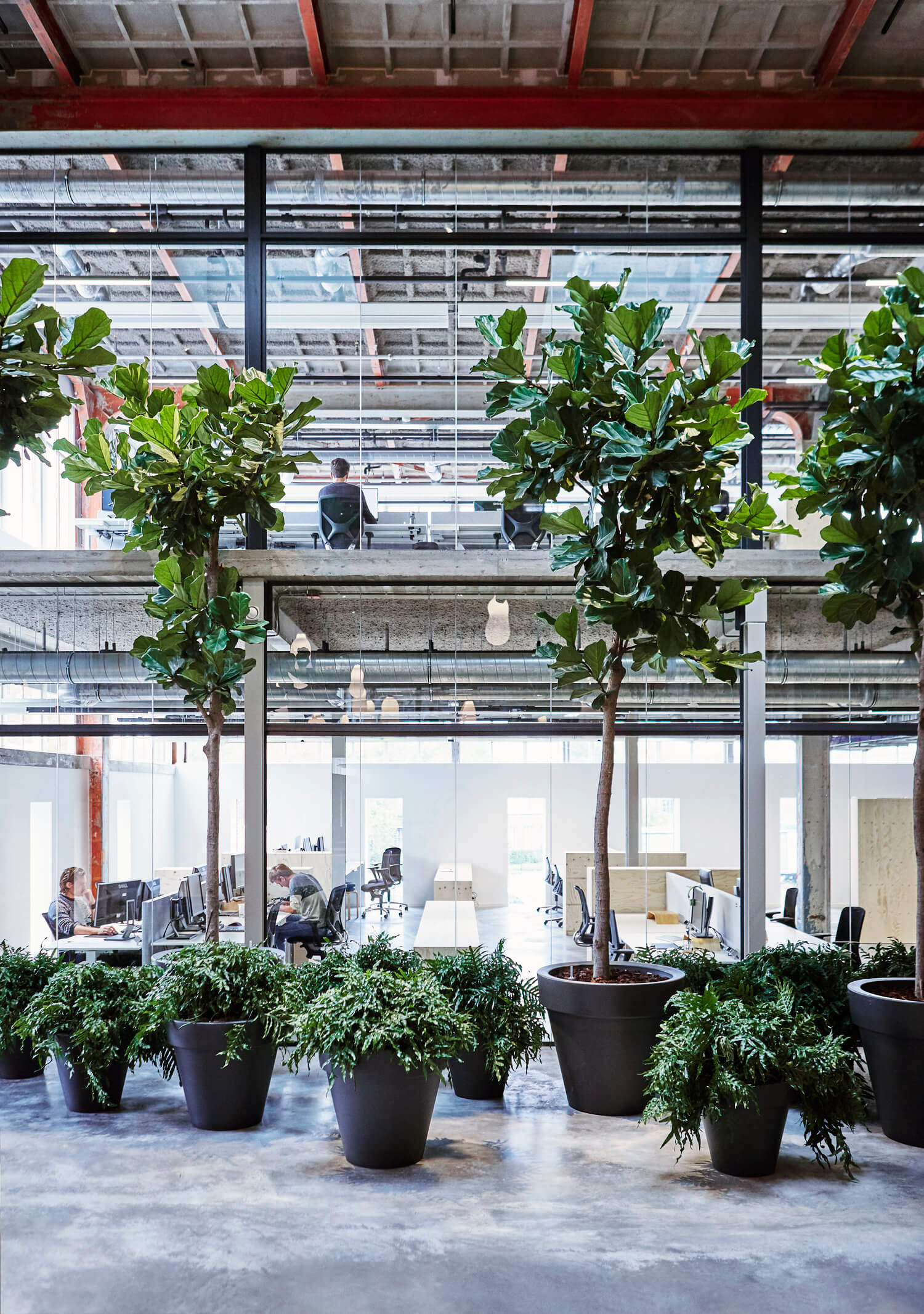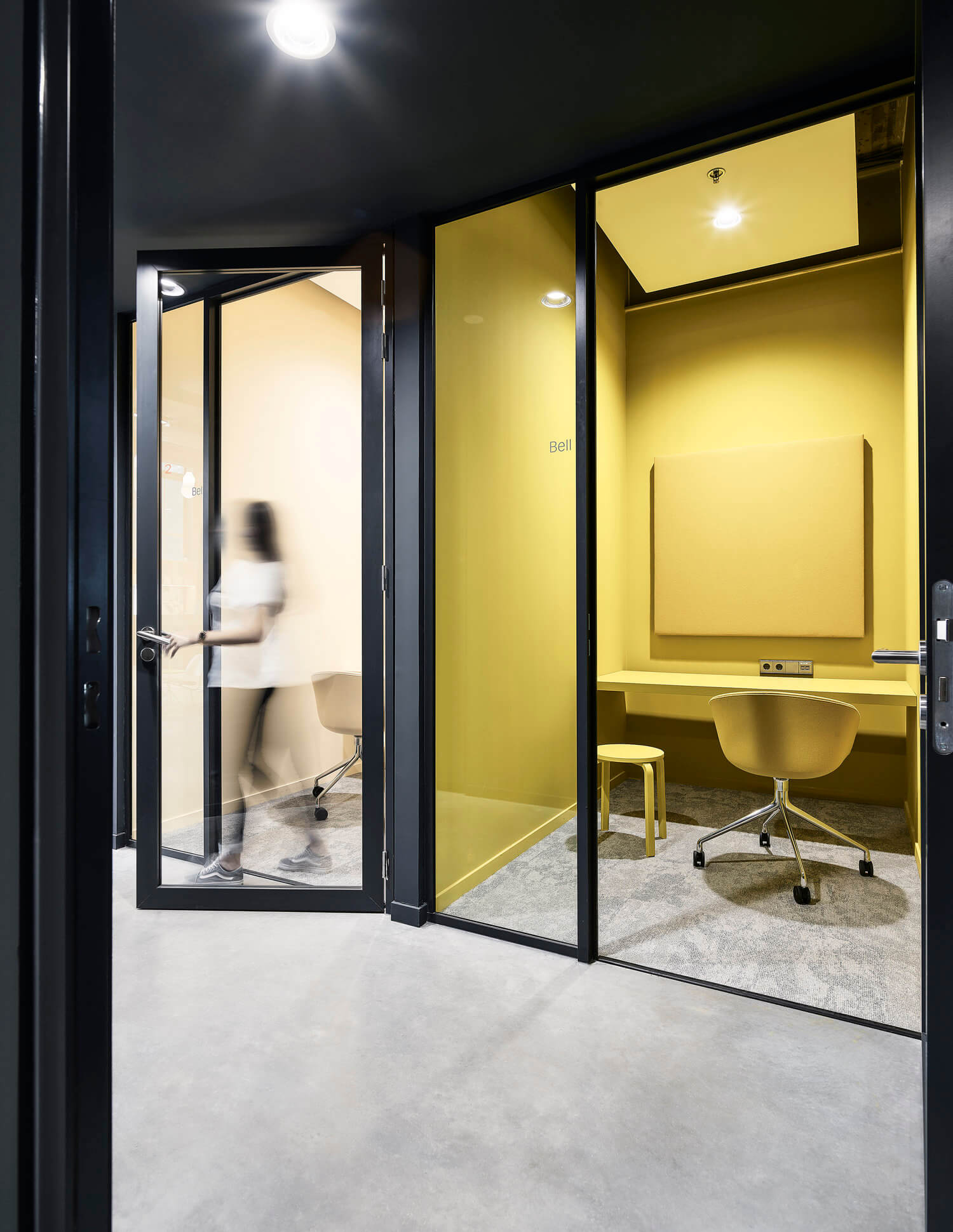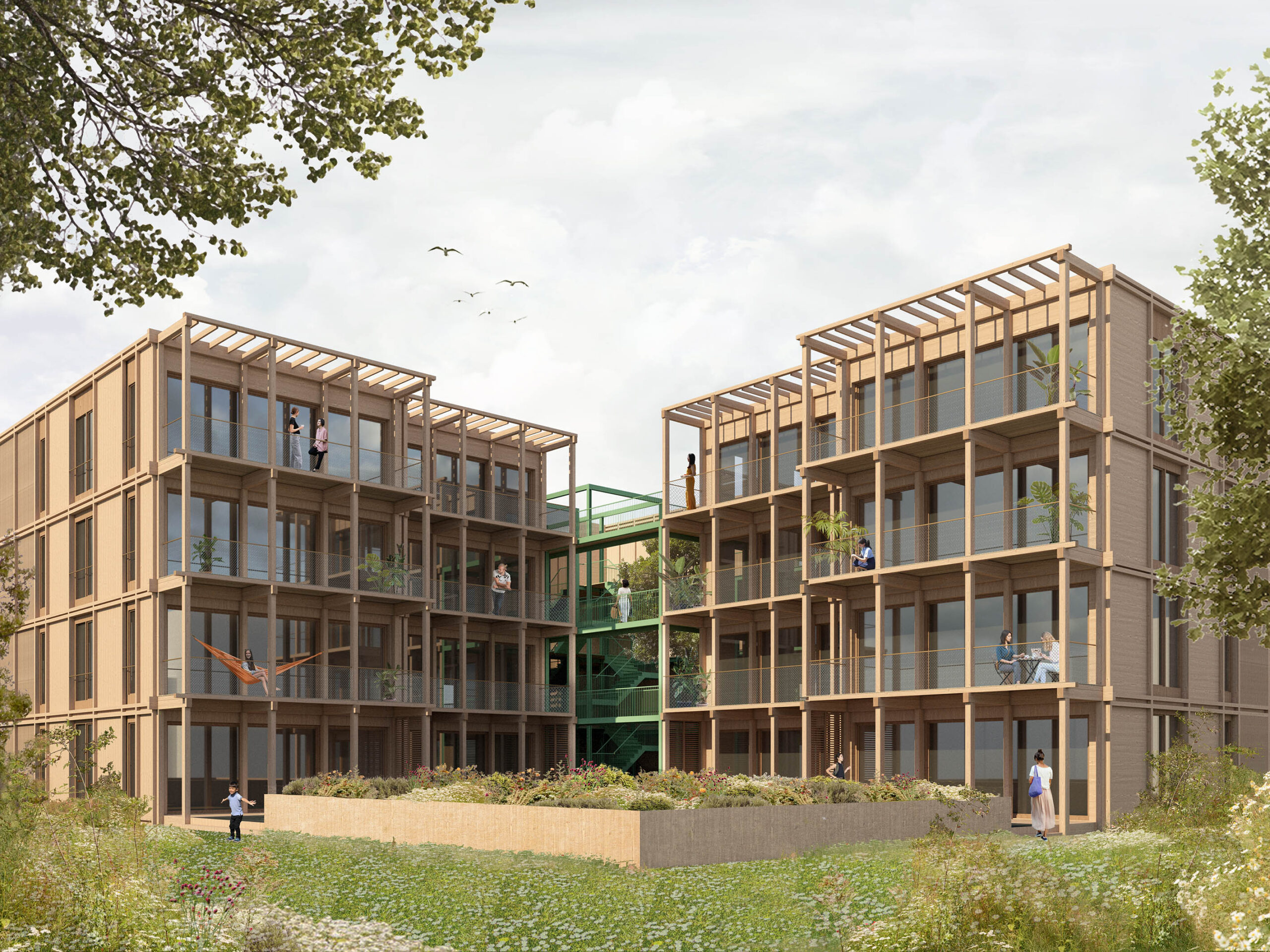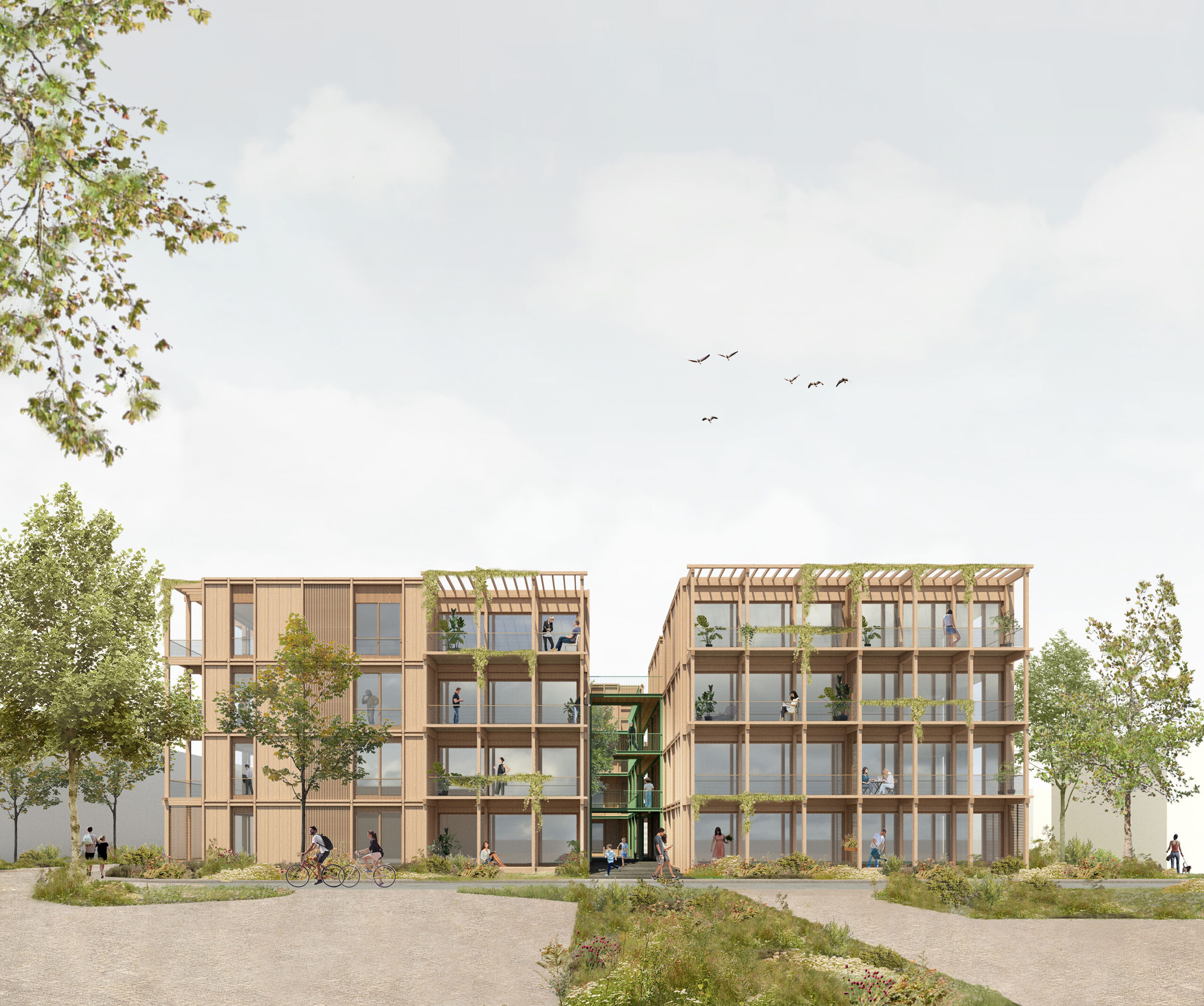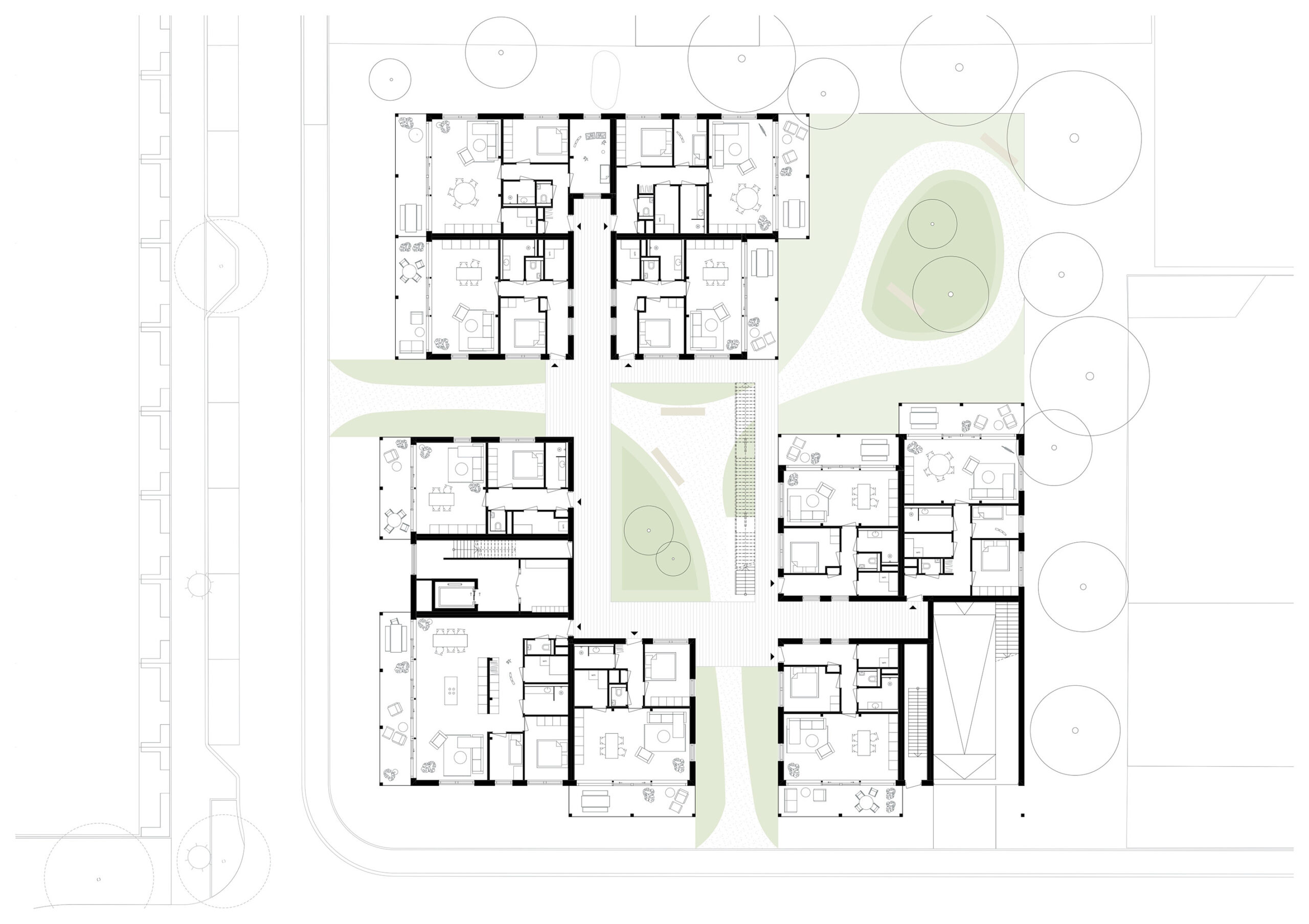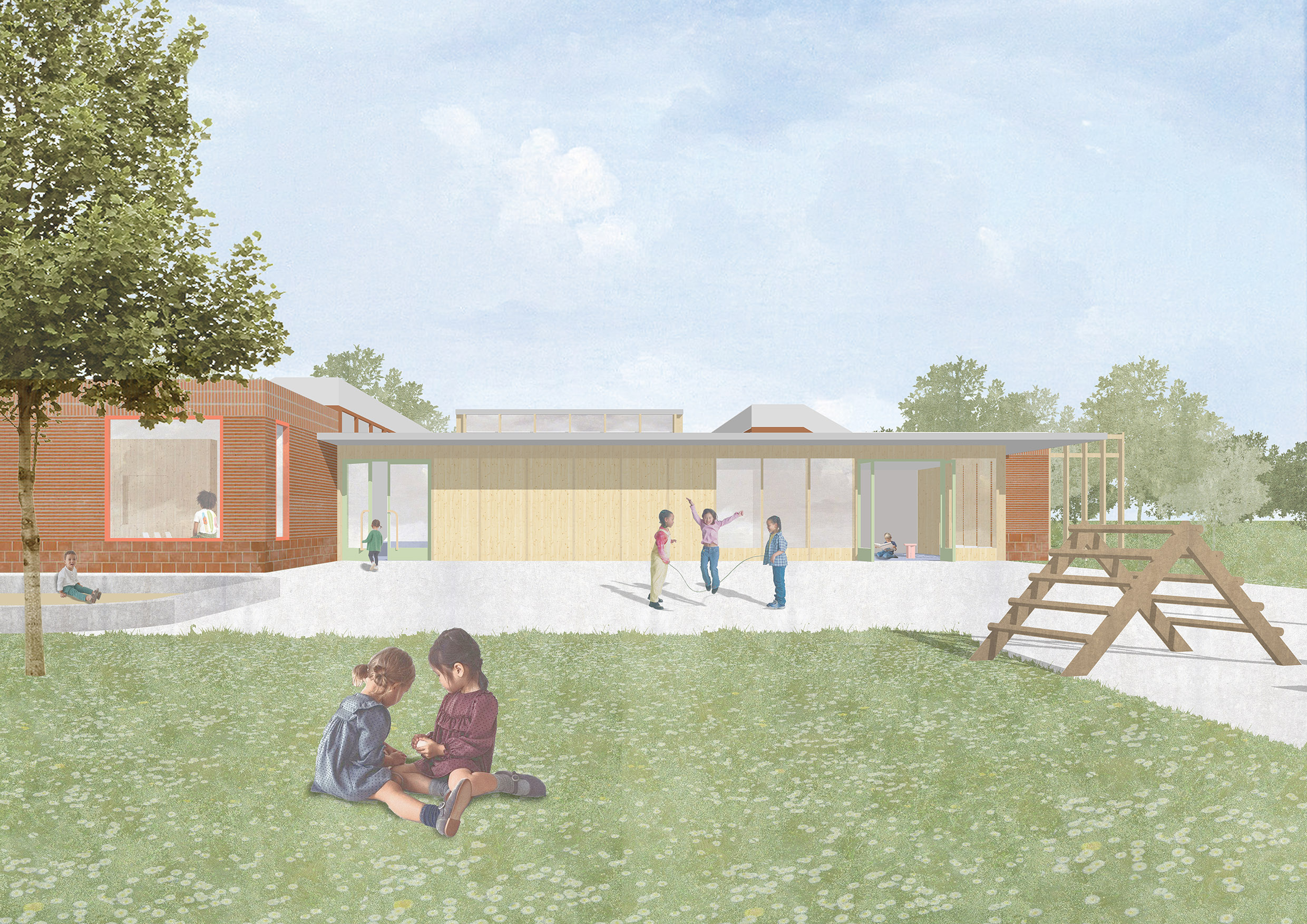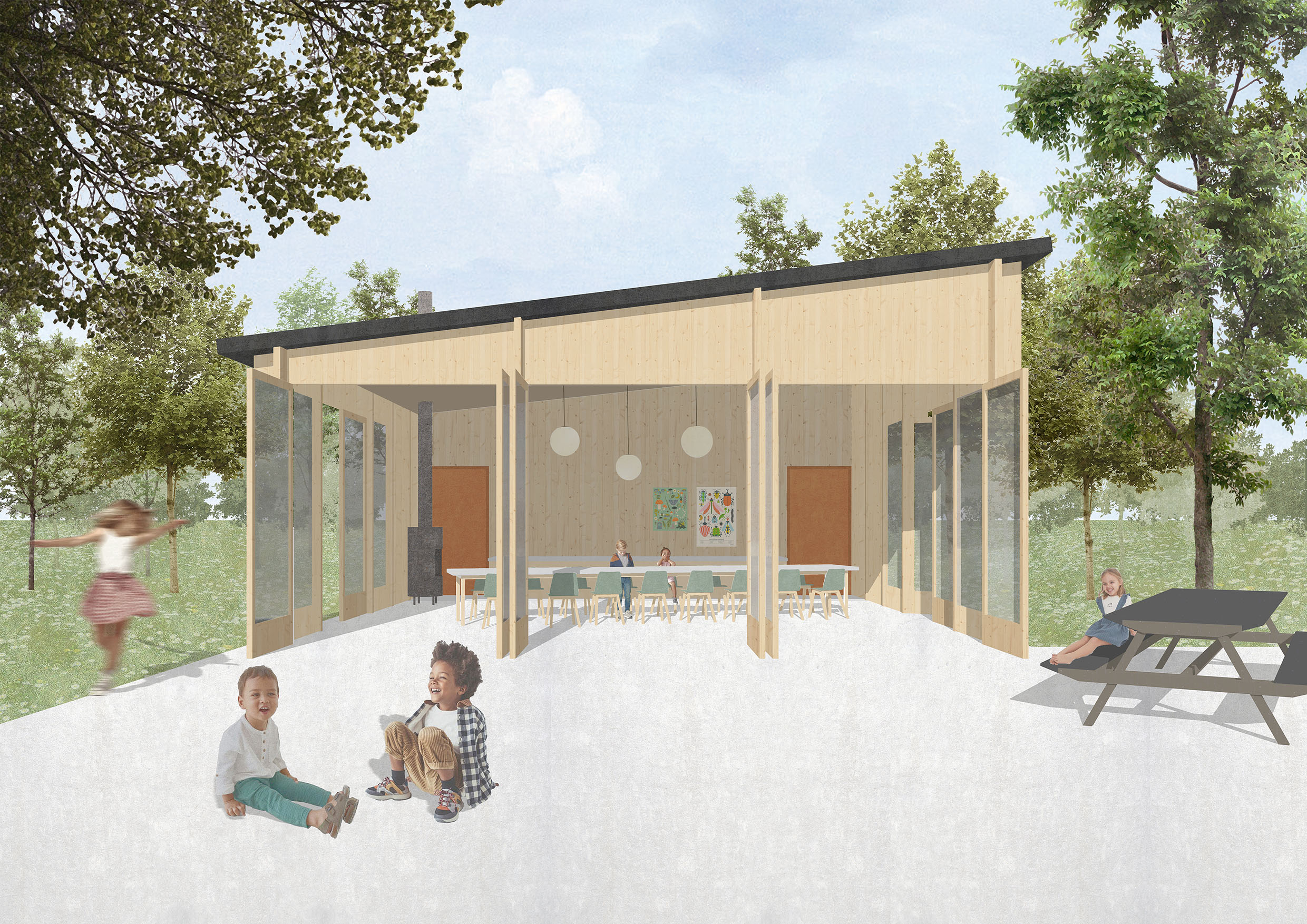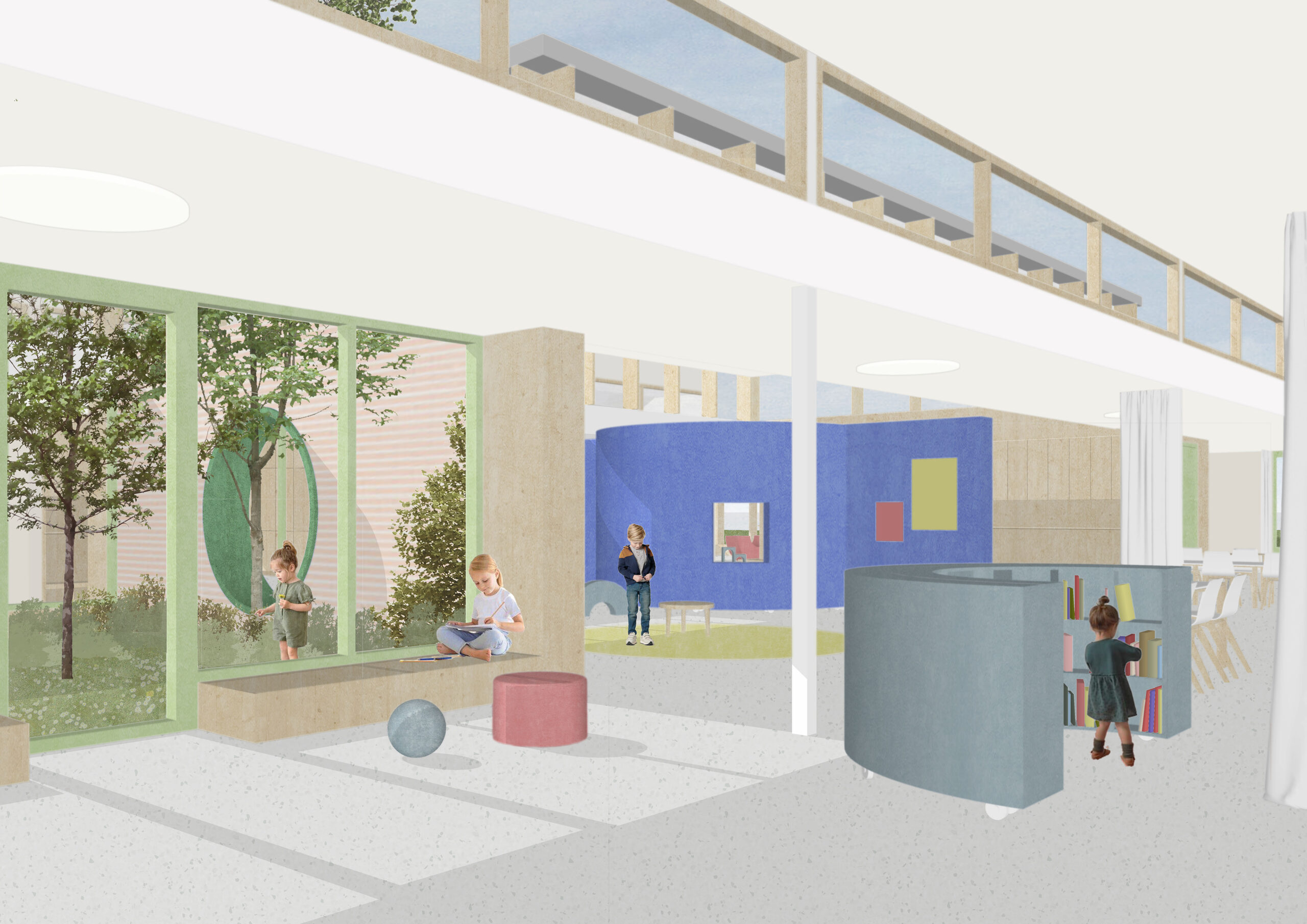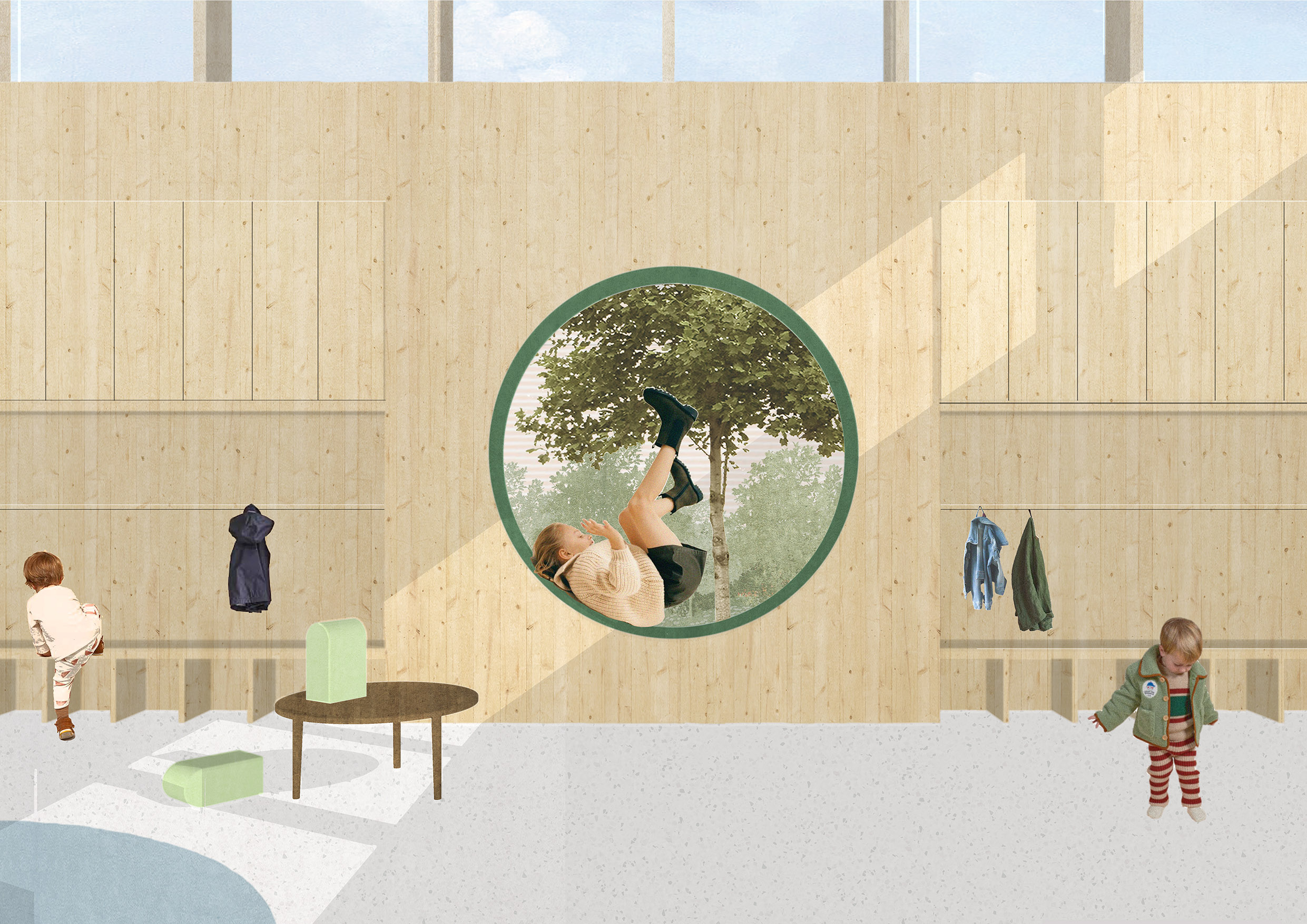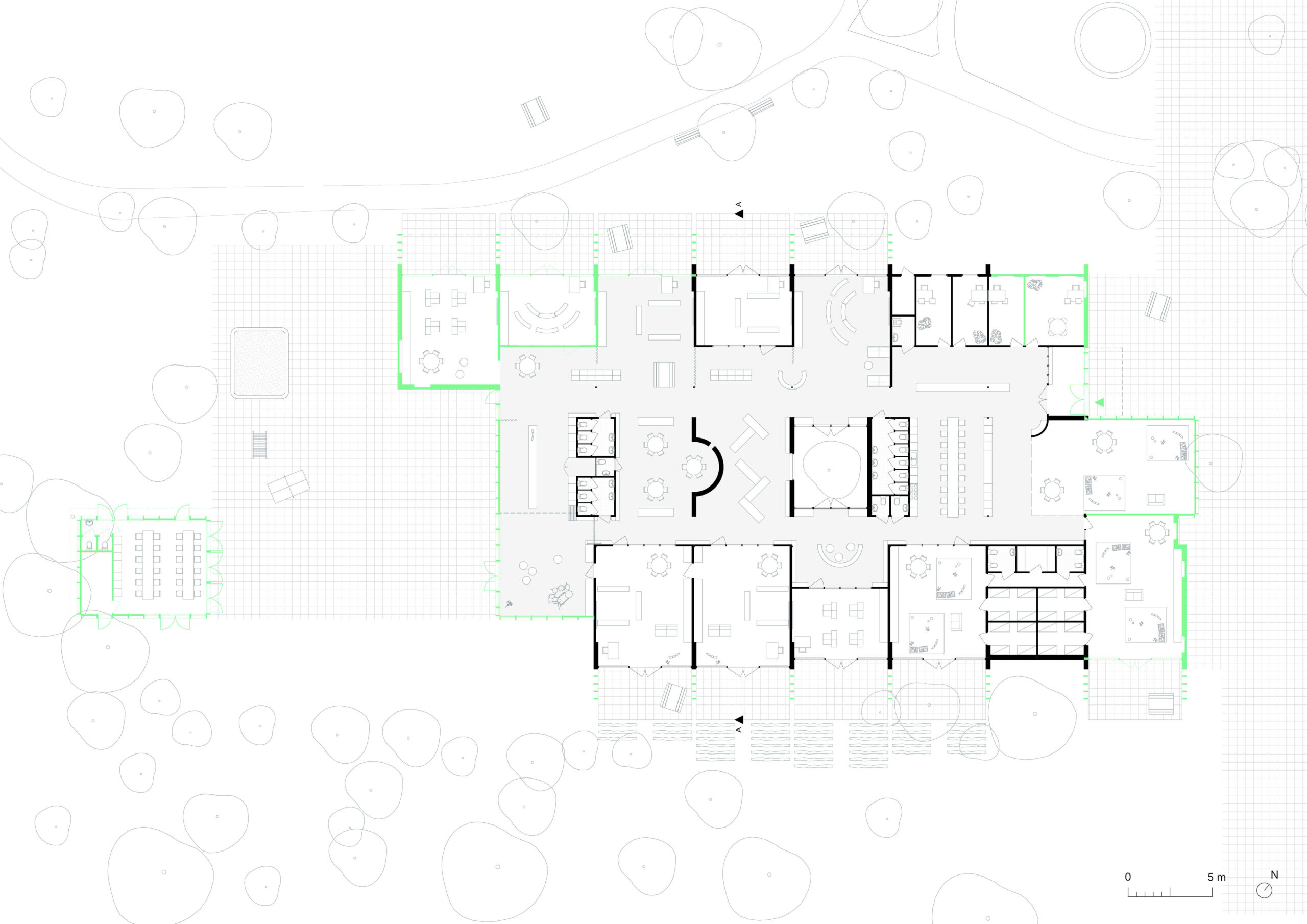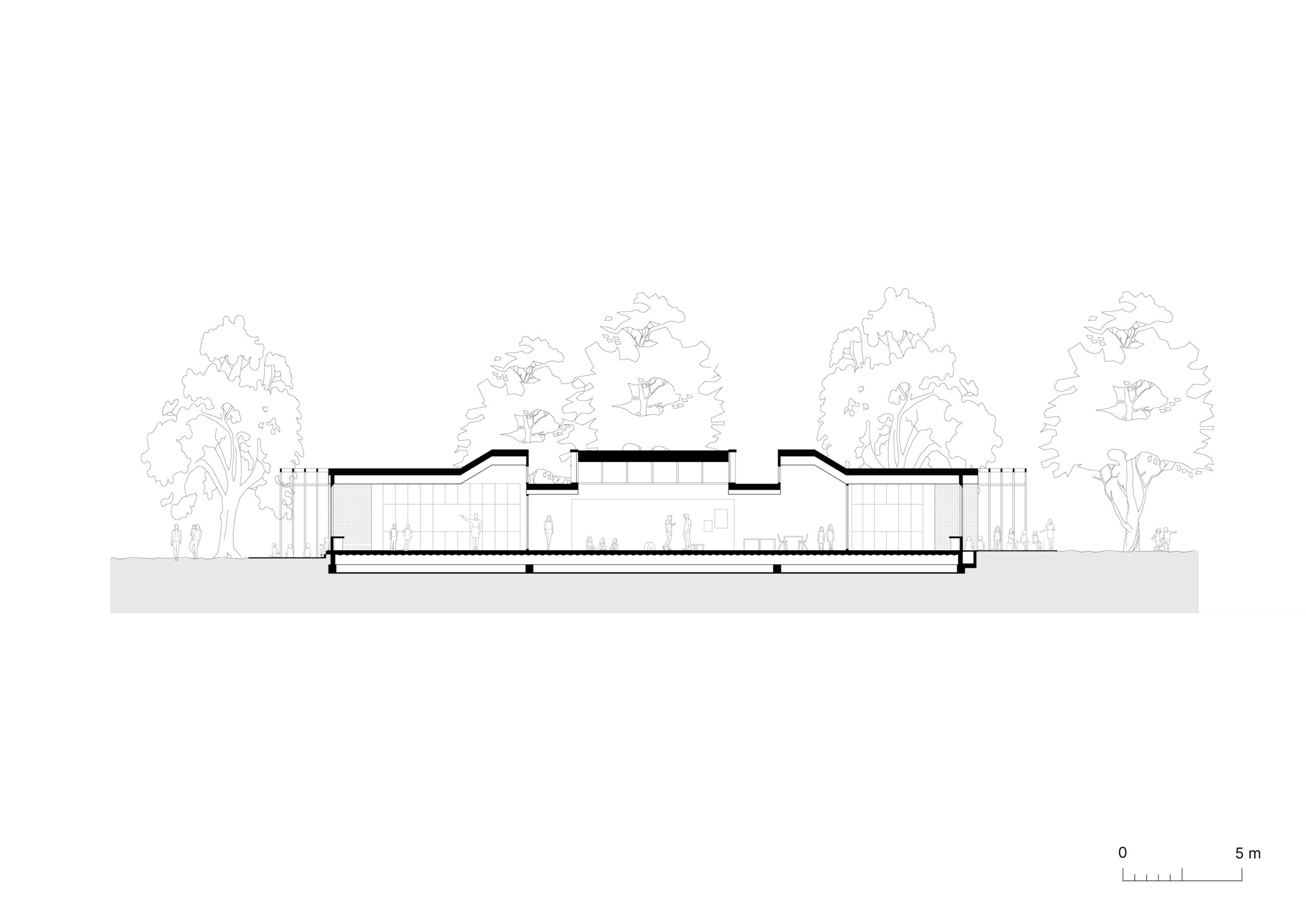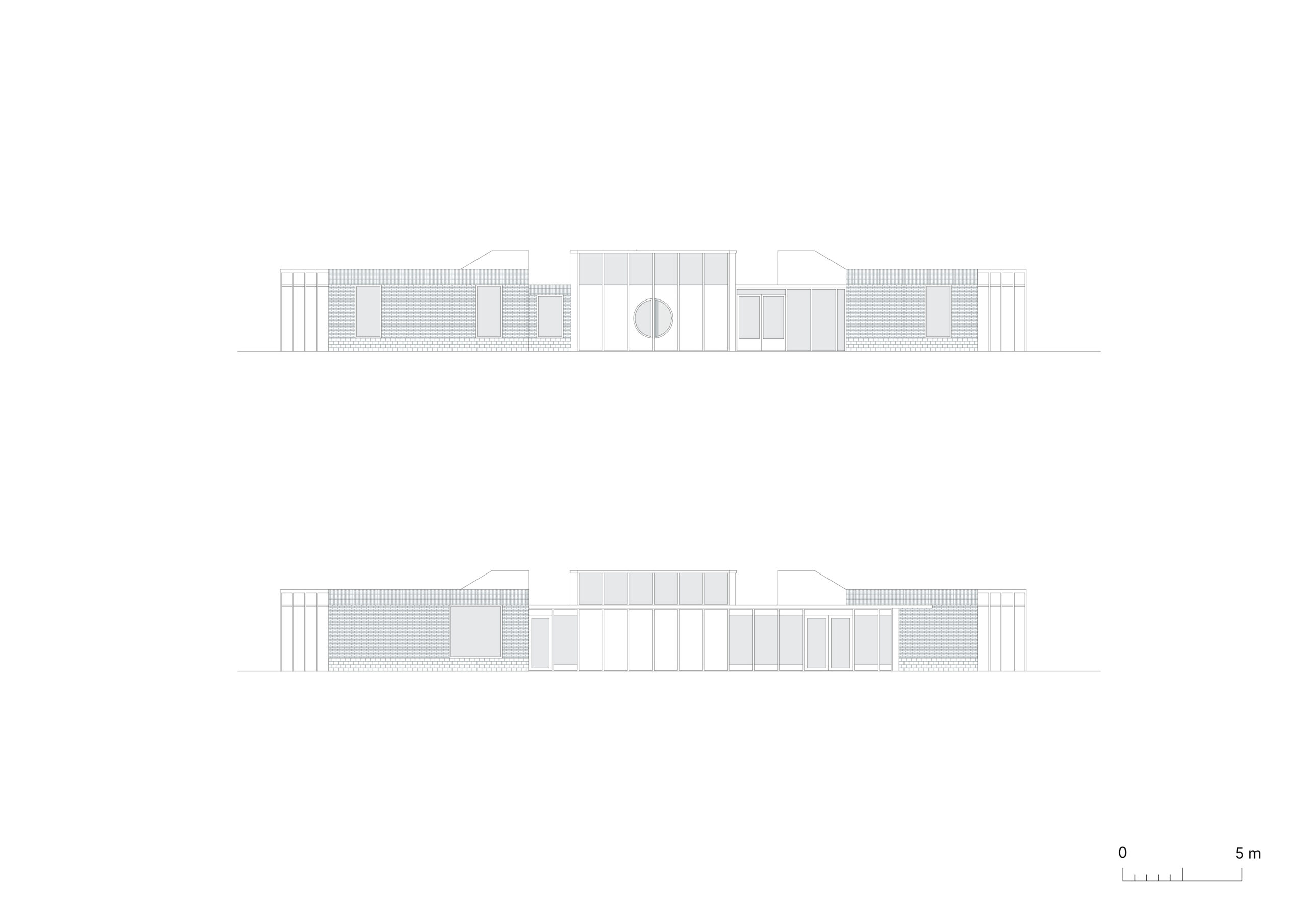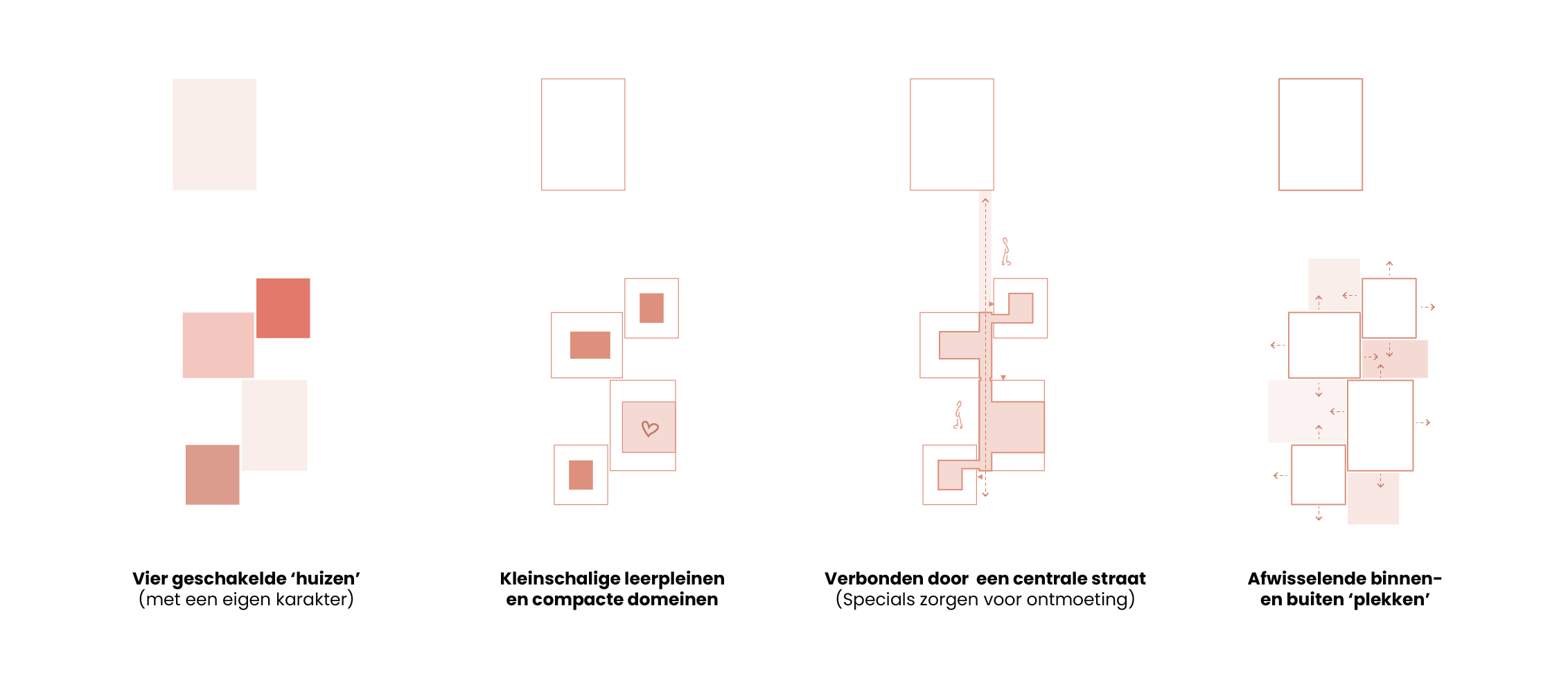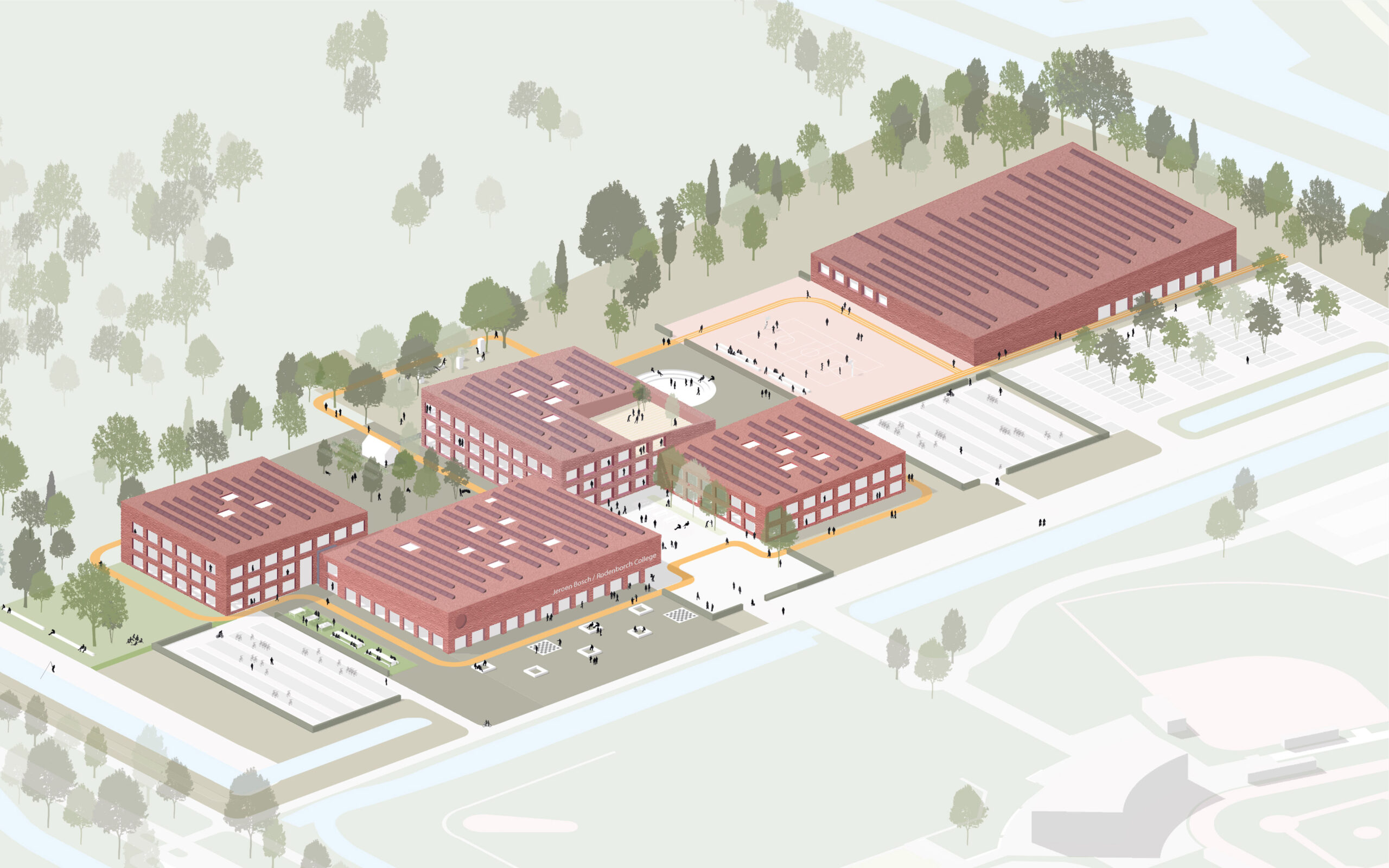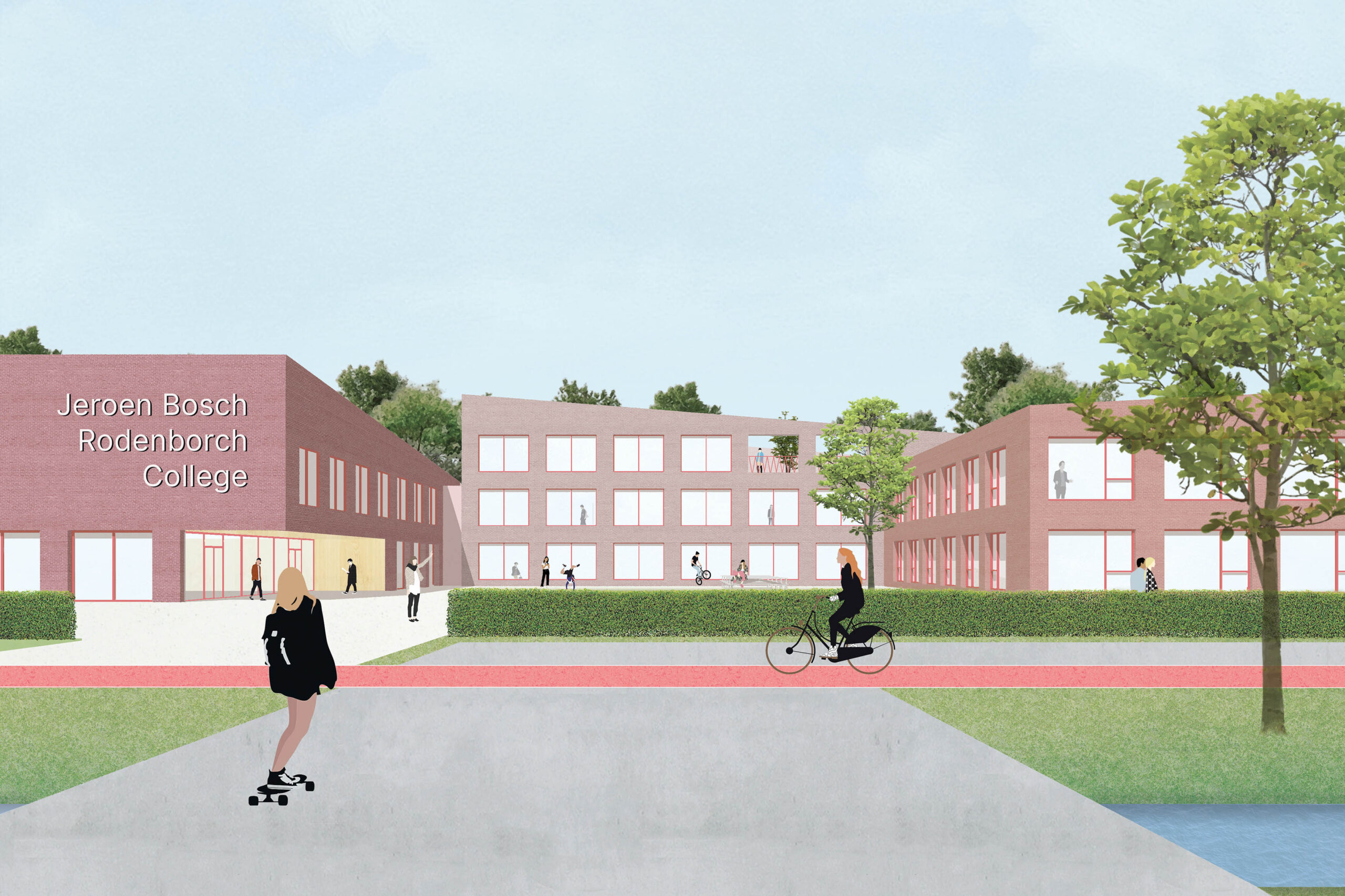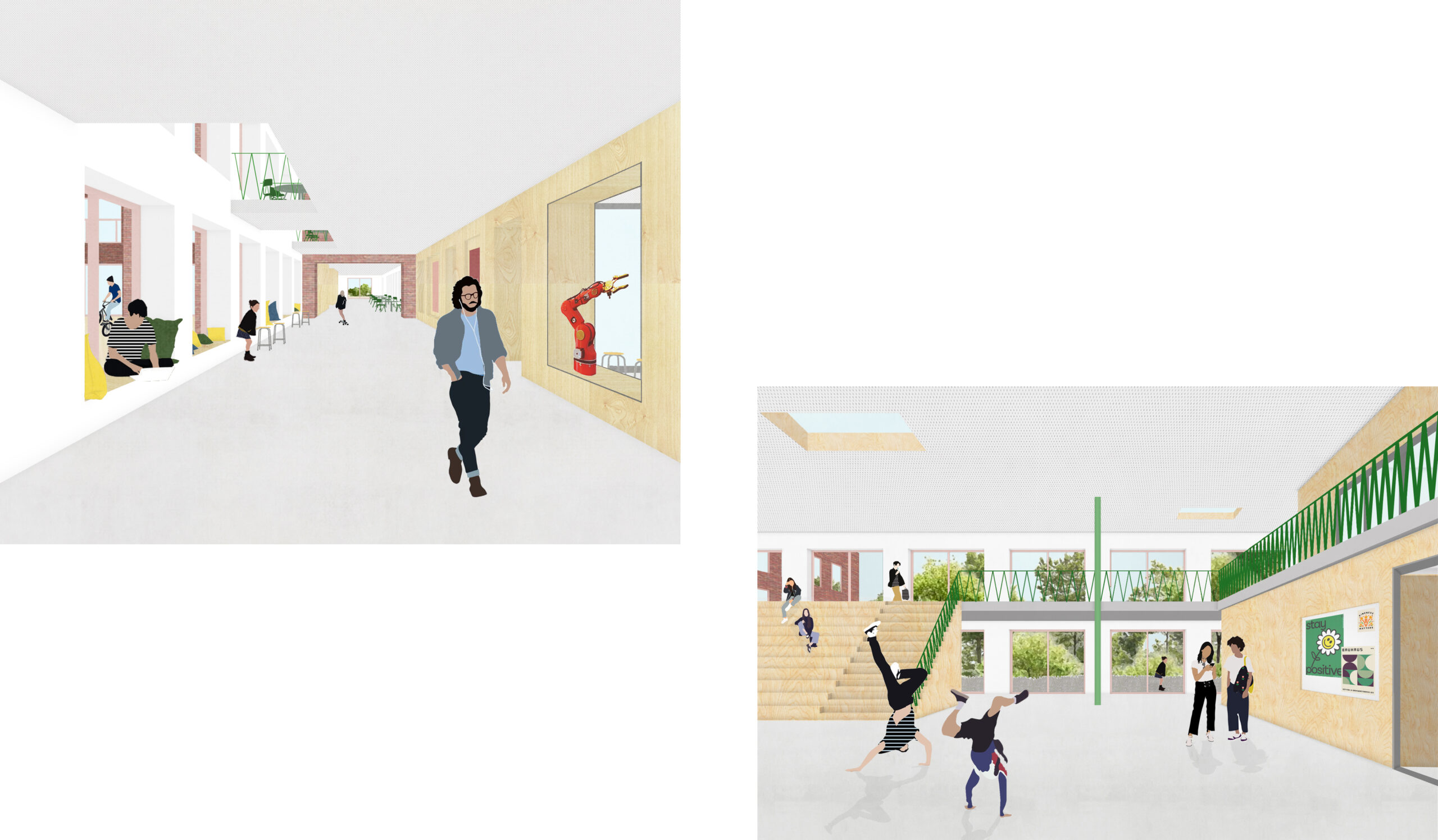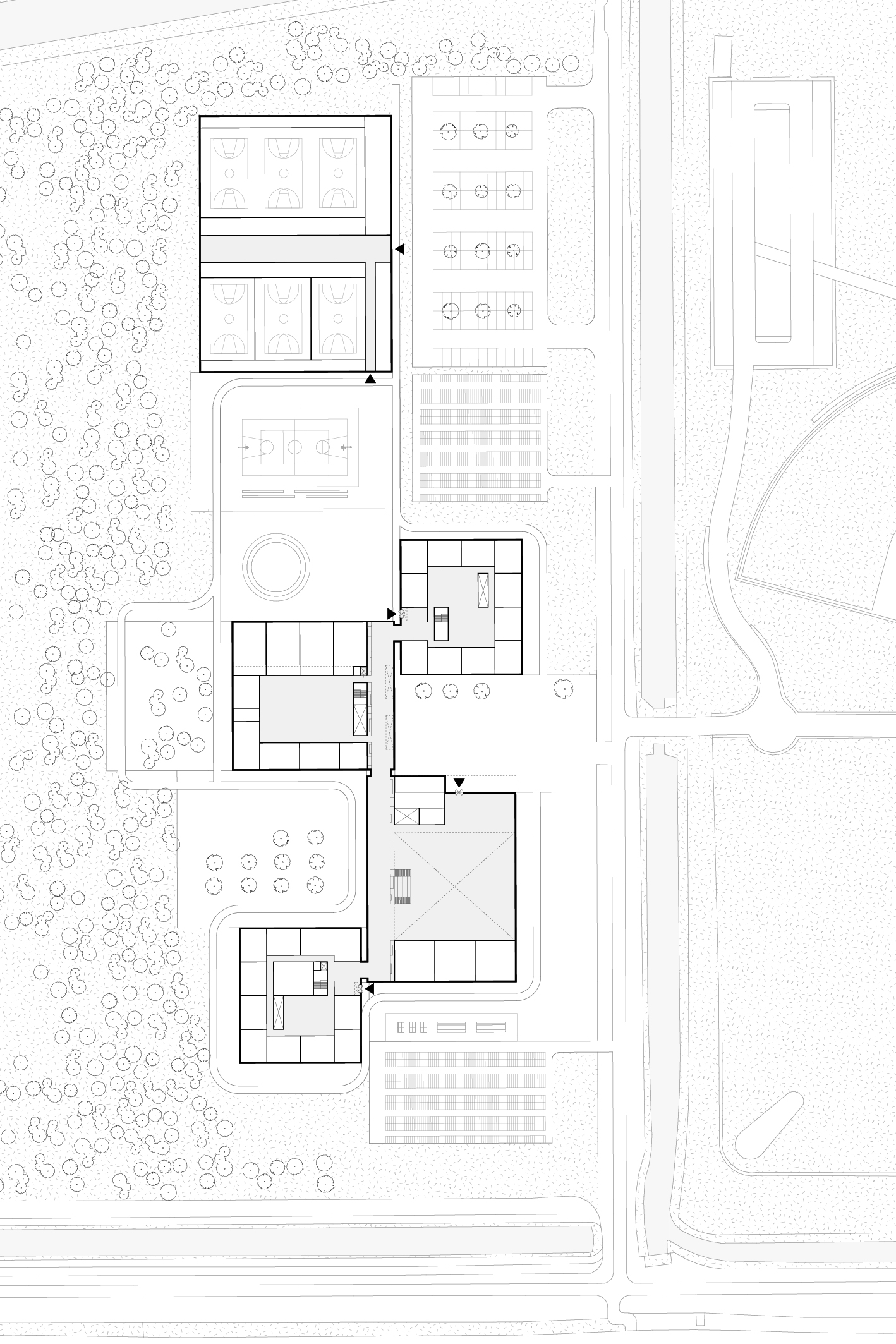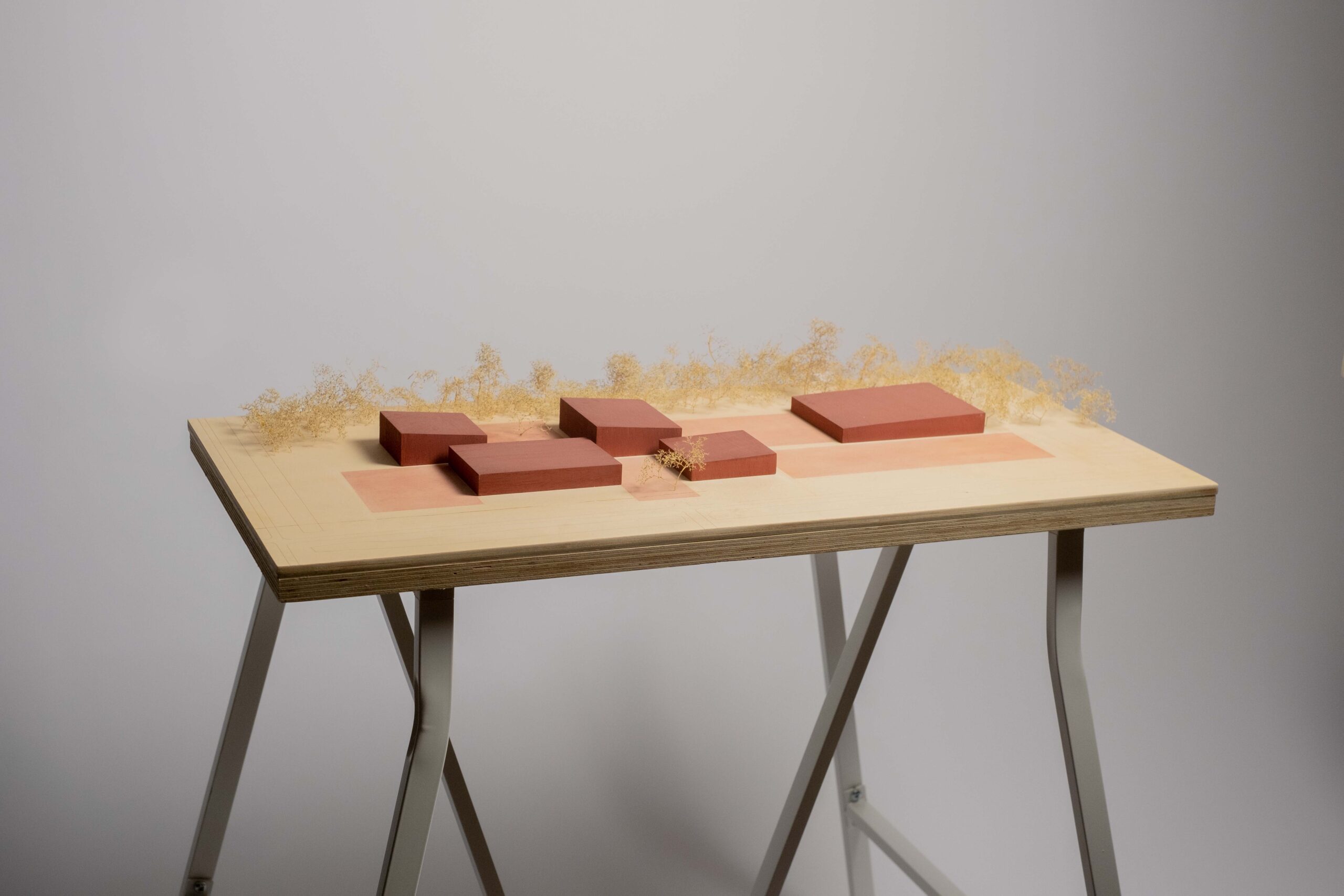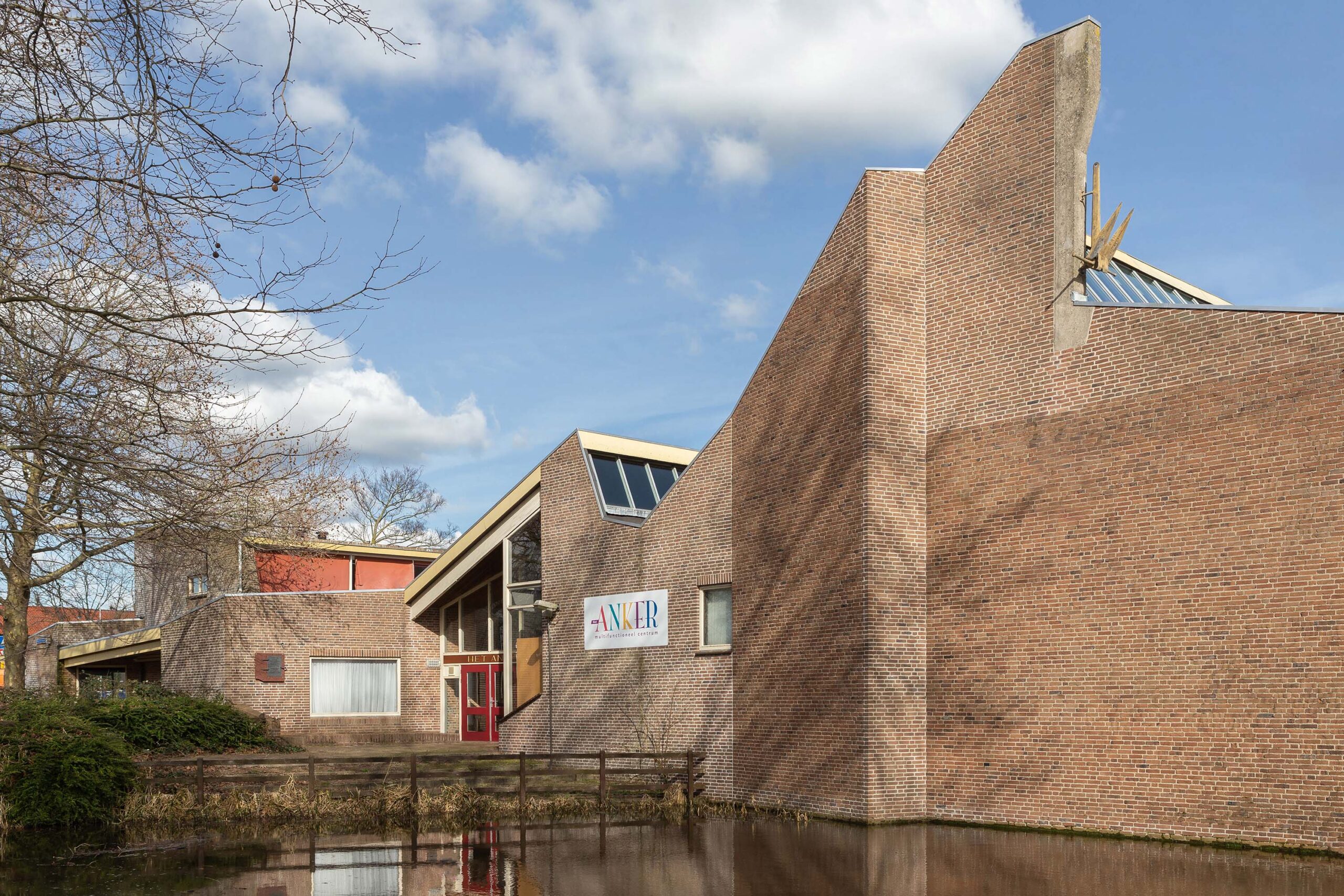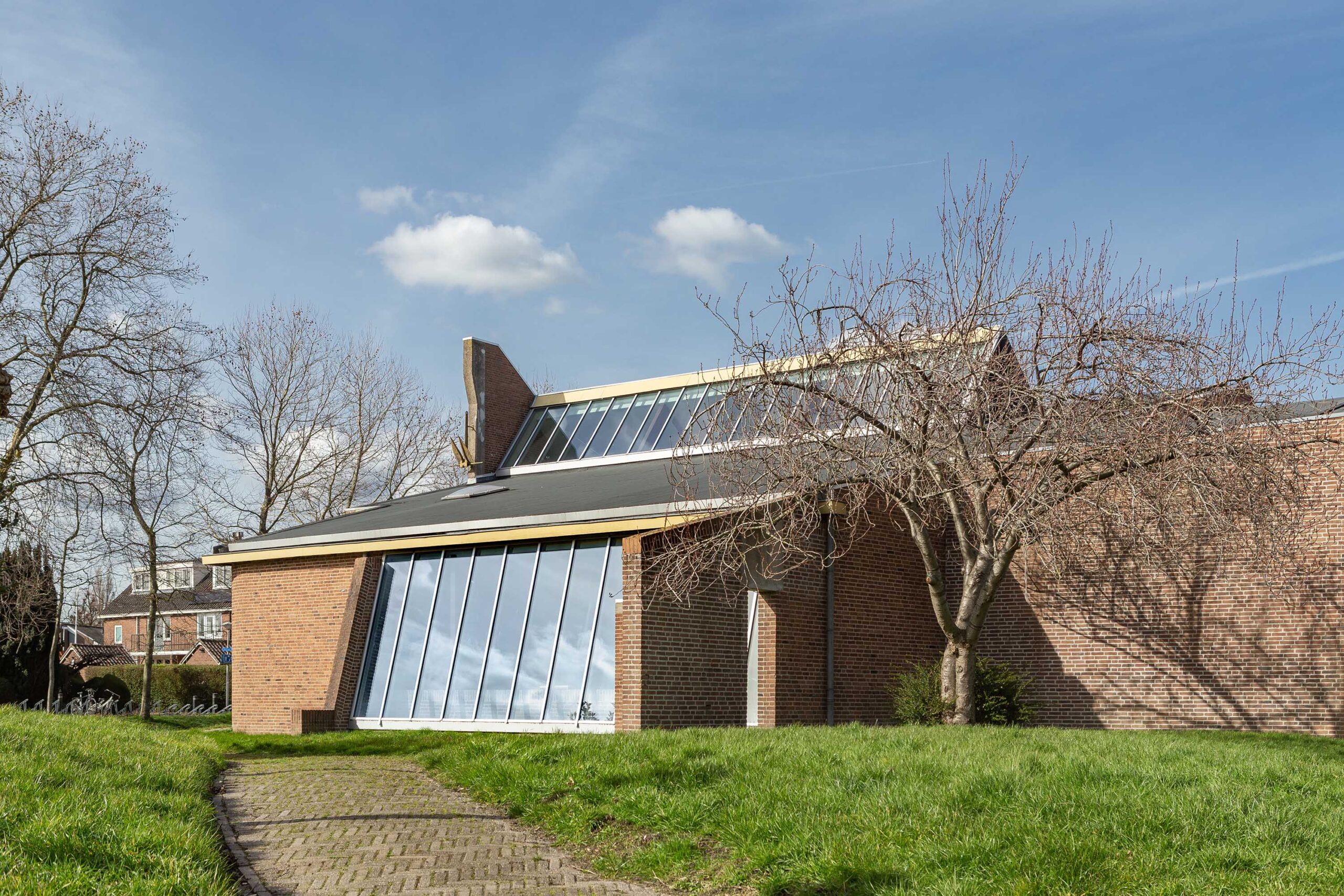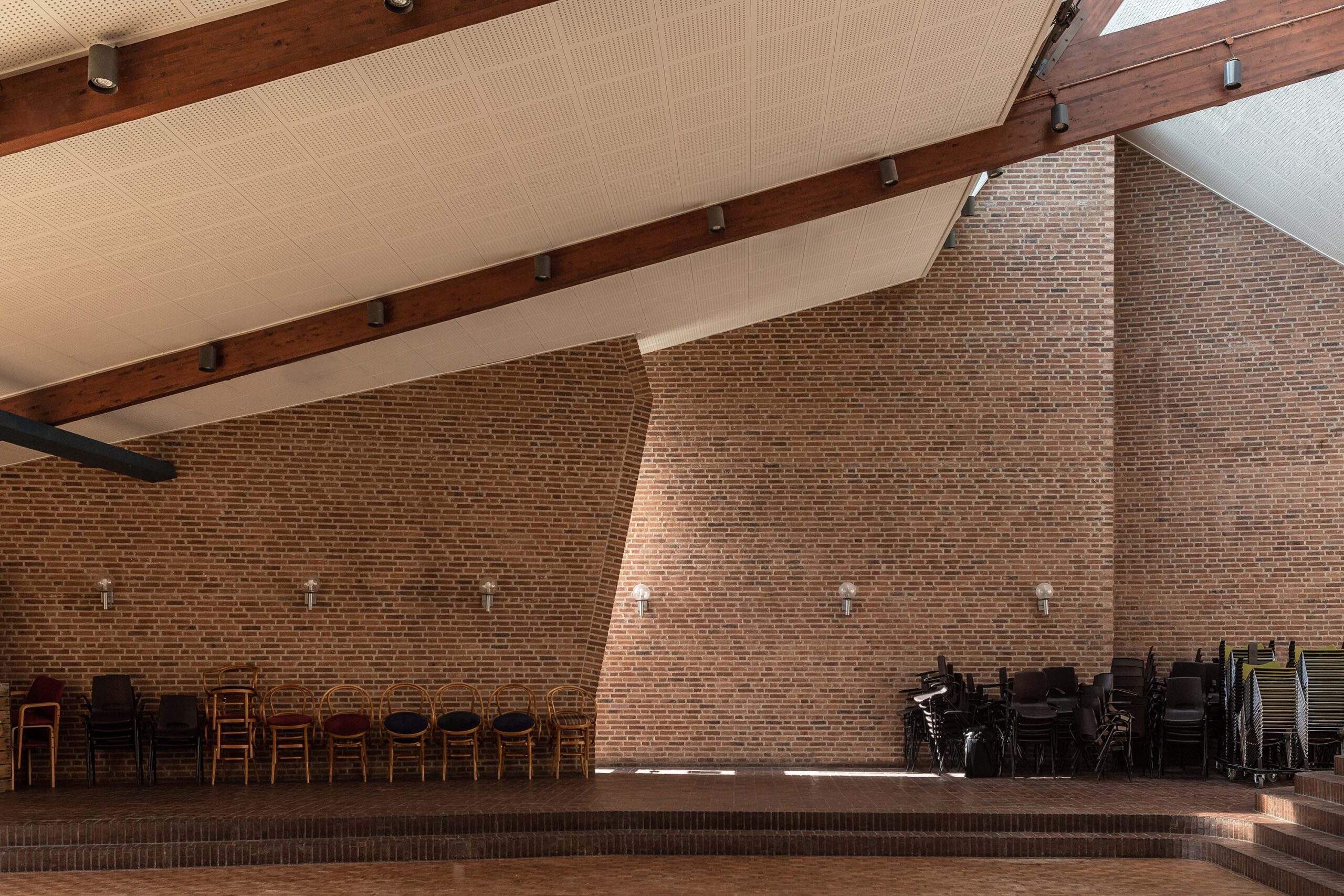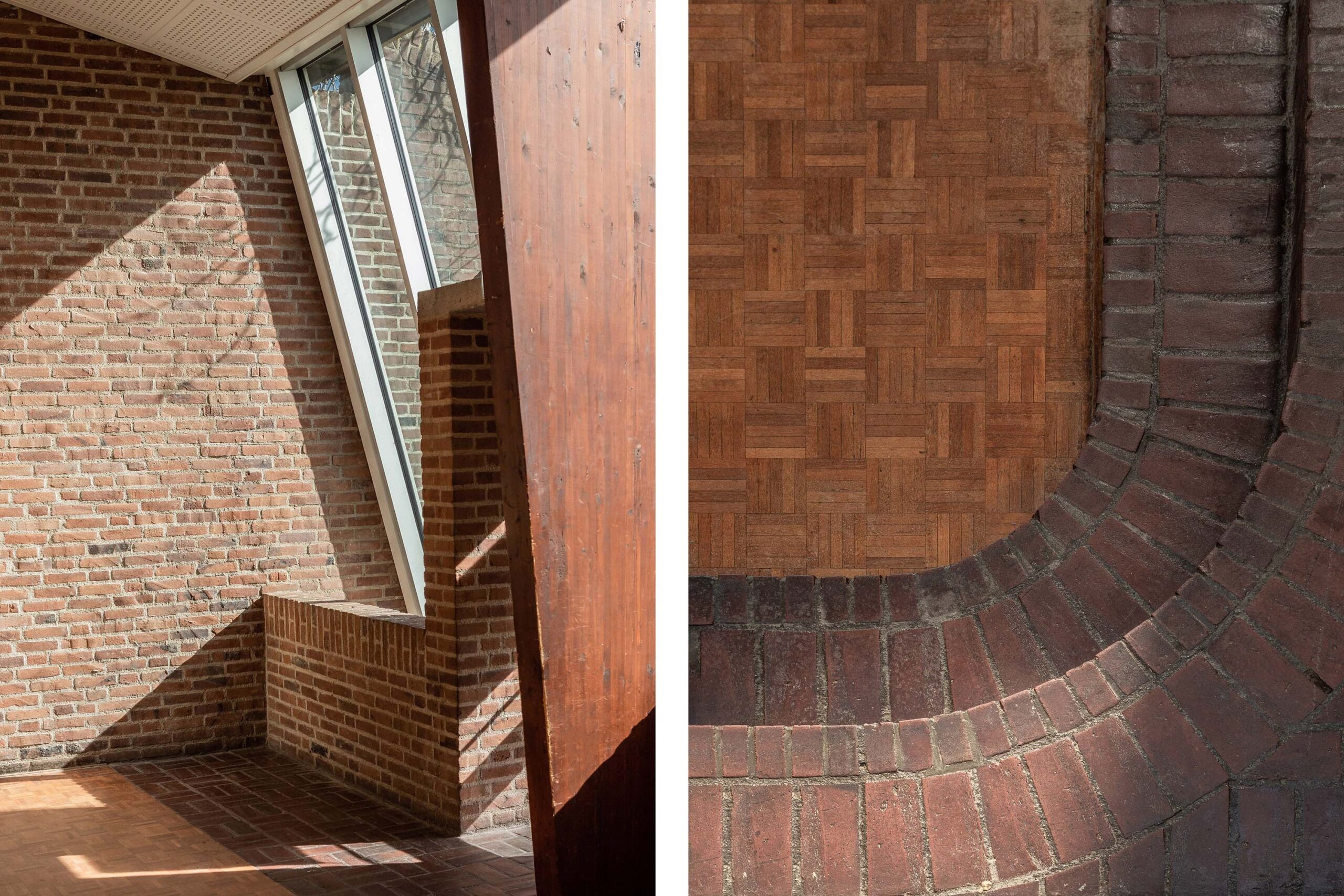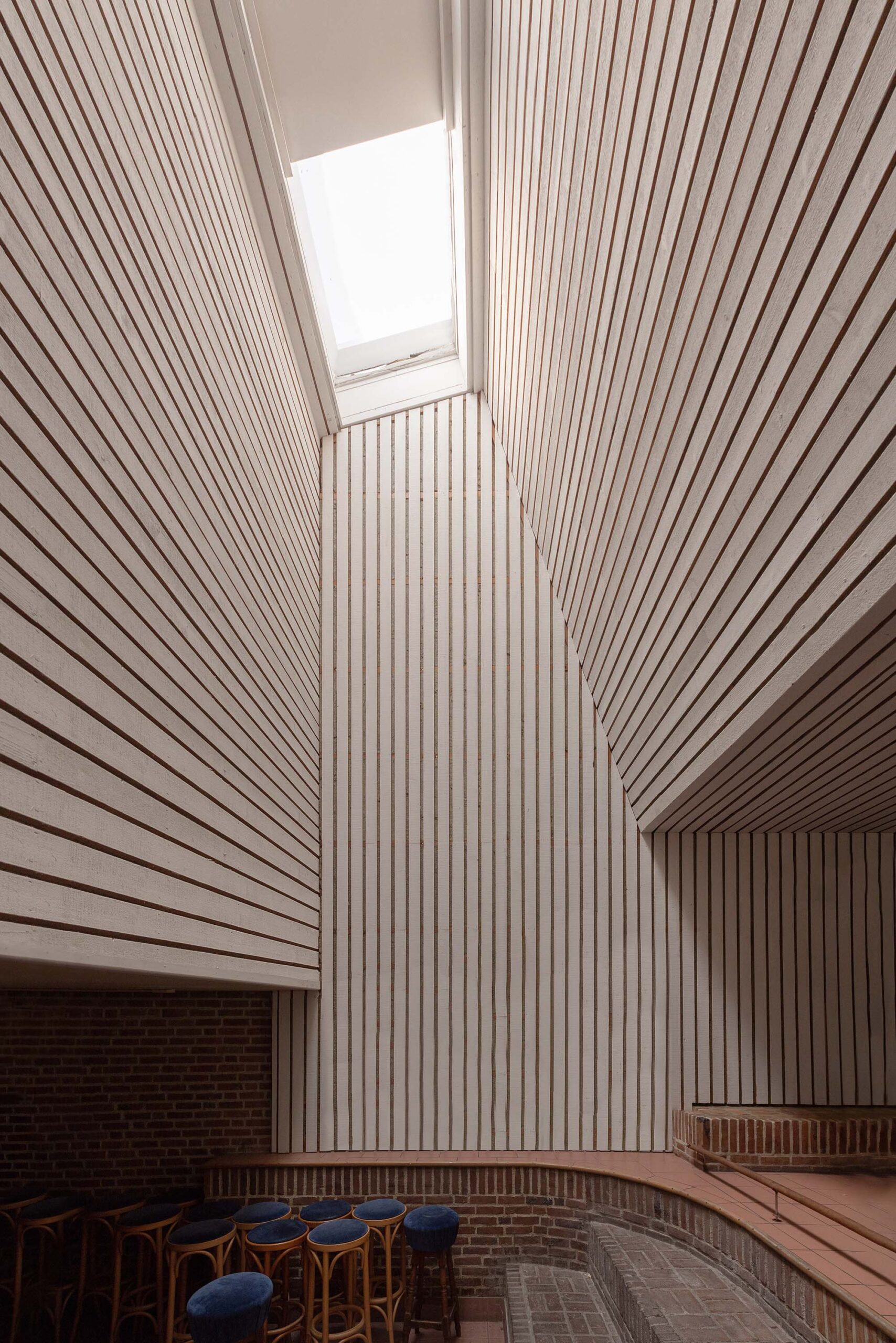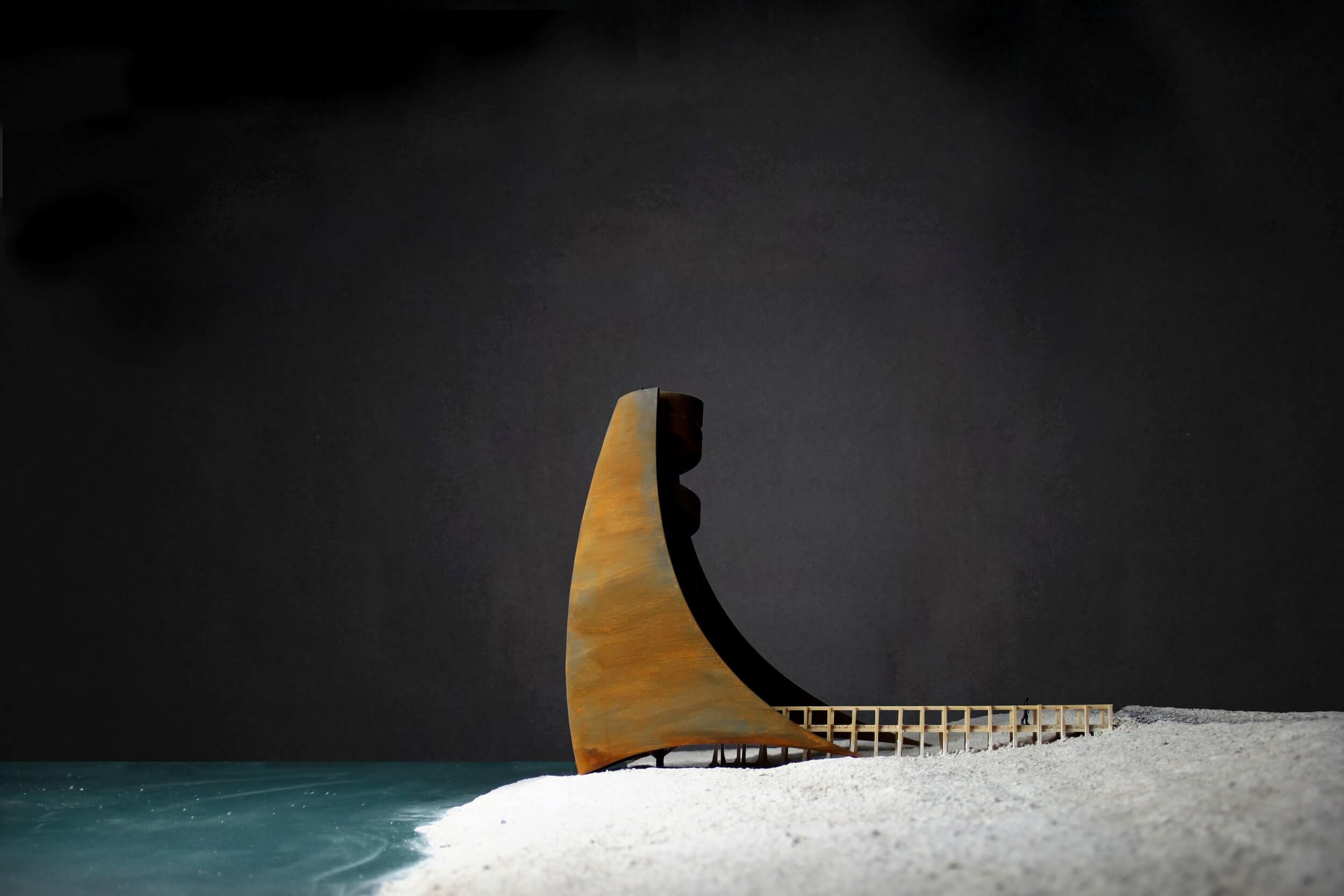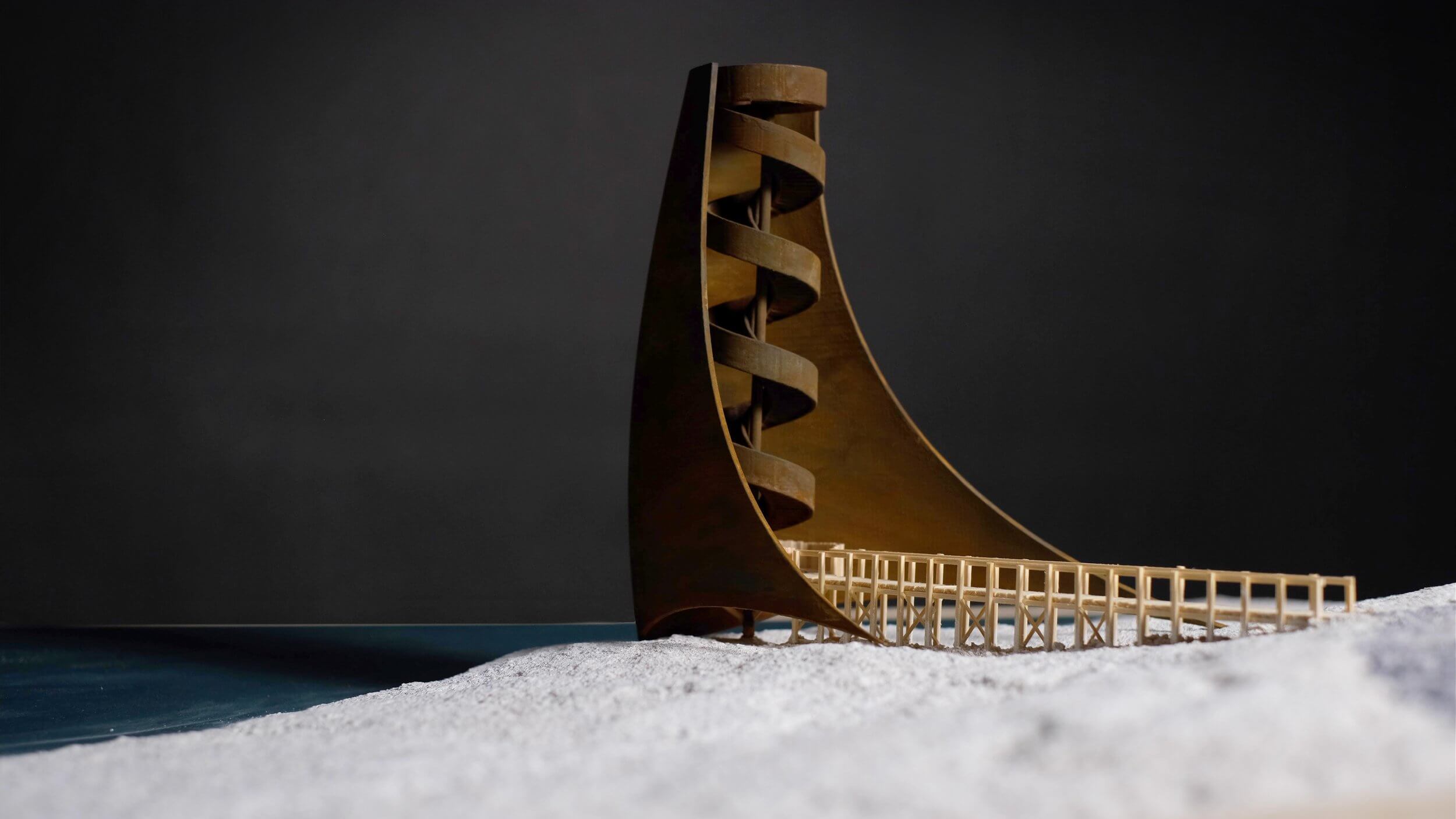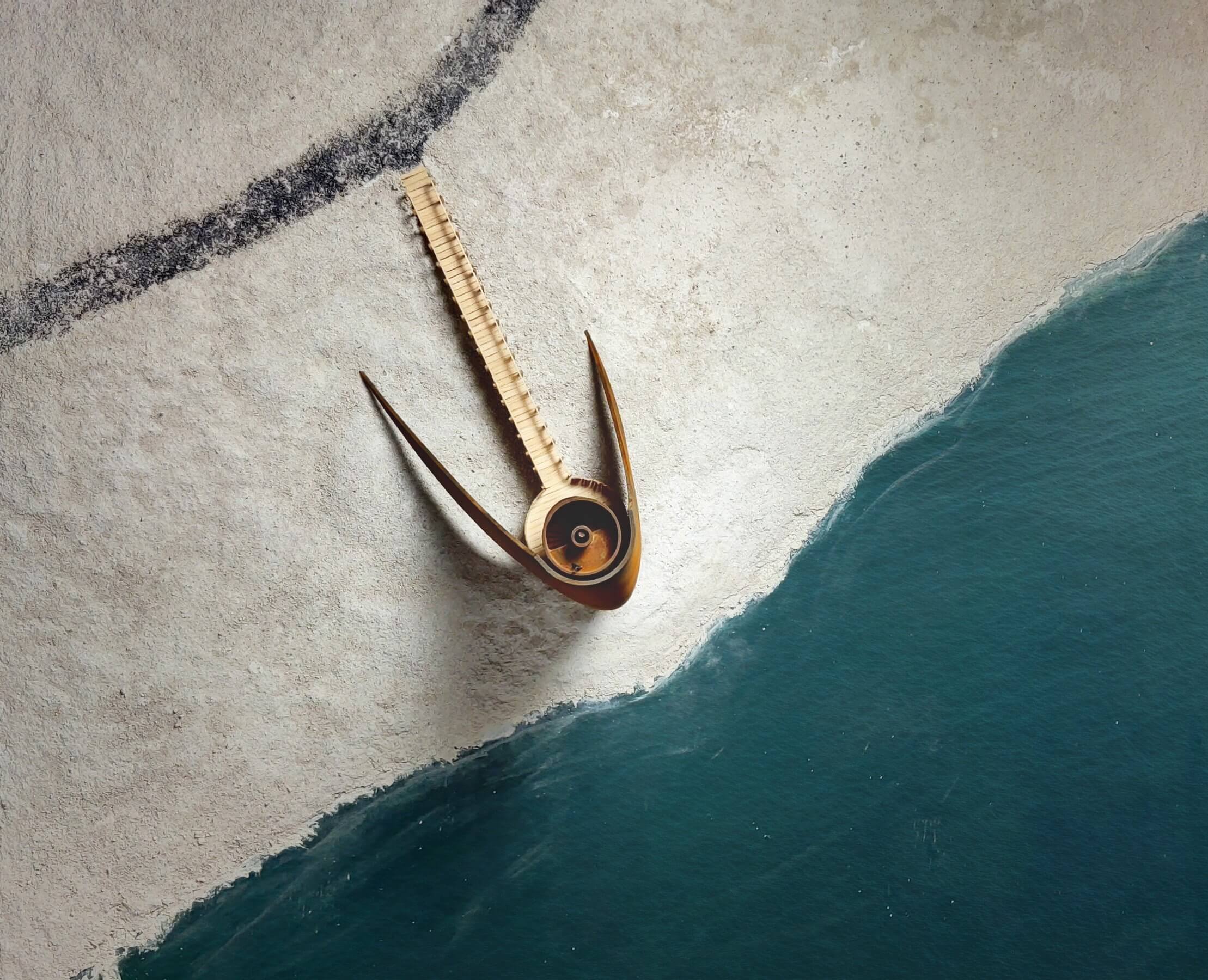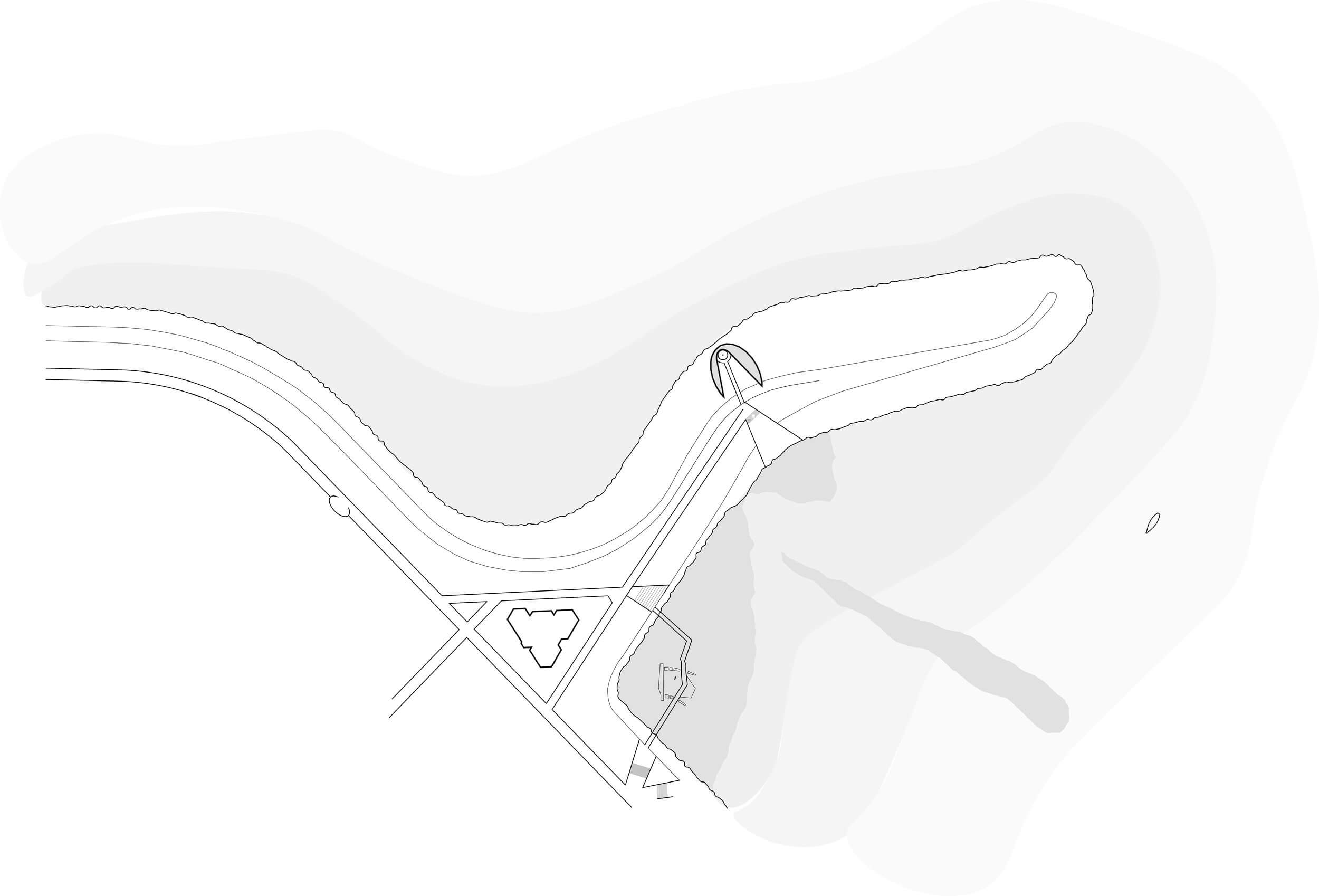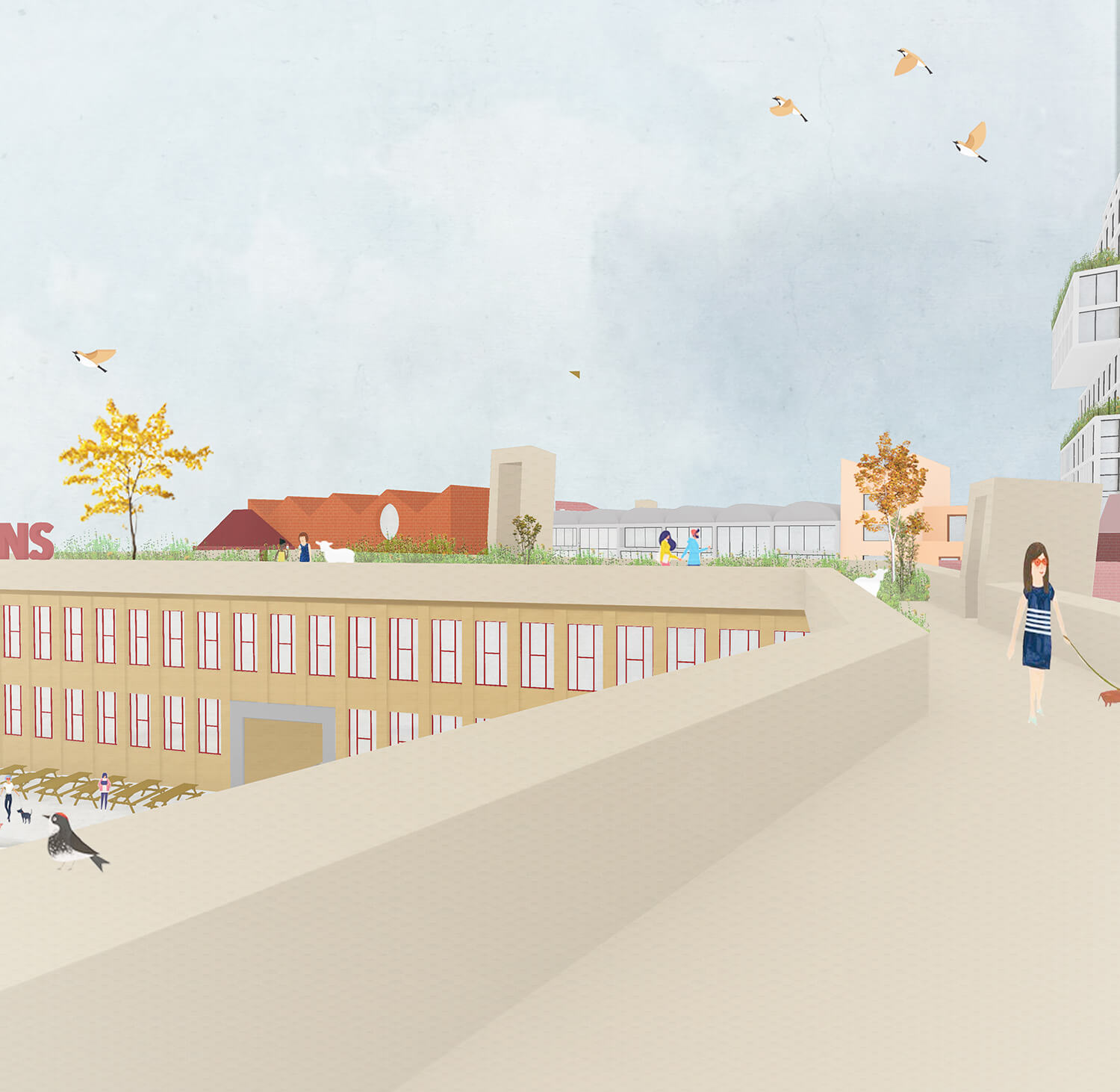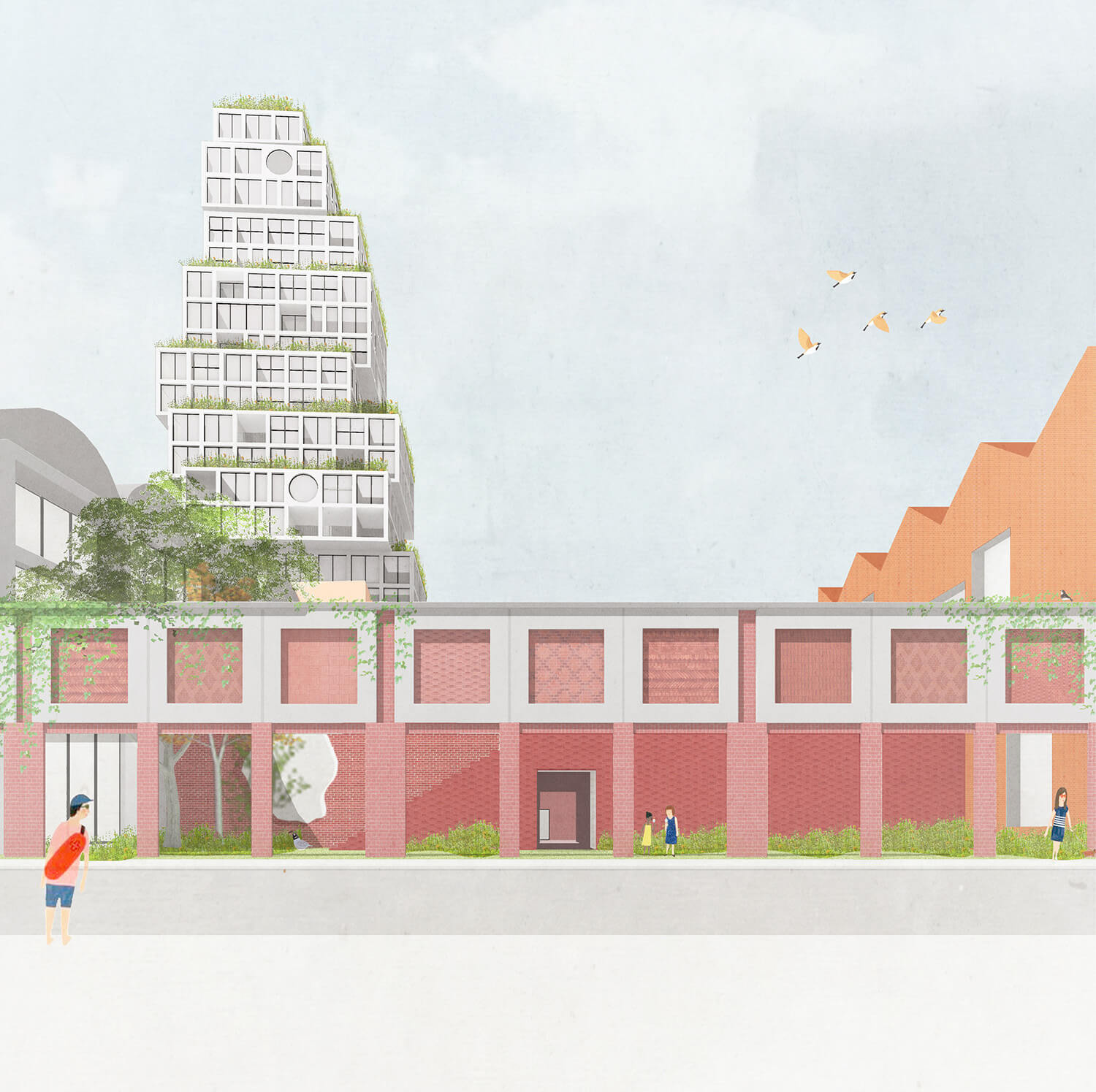ateliervanberlo
Wij zijn een atelier voor research en architectuur. Dit met een sterke focus op transformatie, leeromgevingen, ouderenzorg en de bebouwde omgeving.
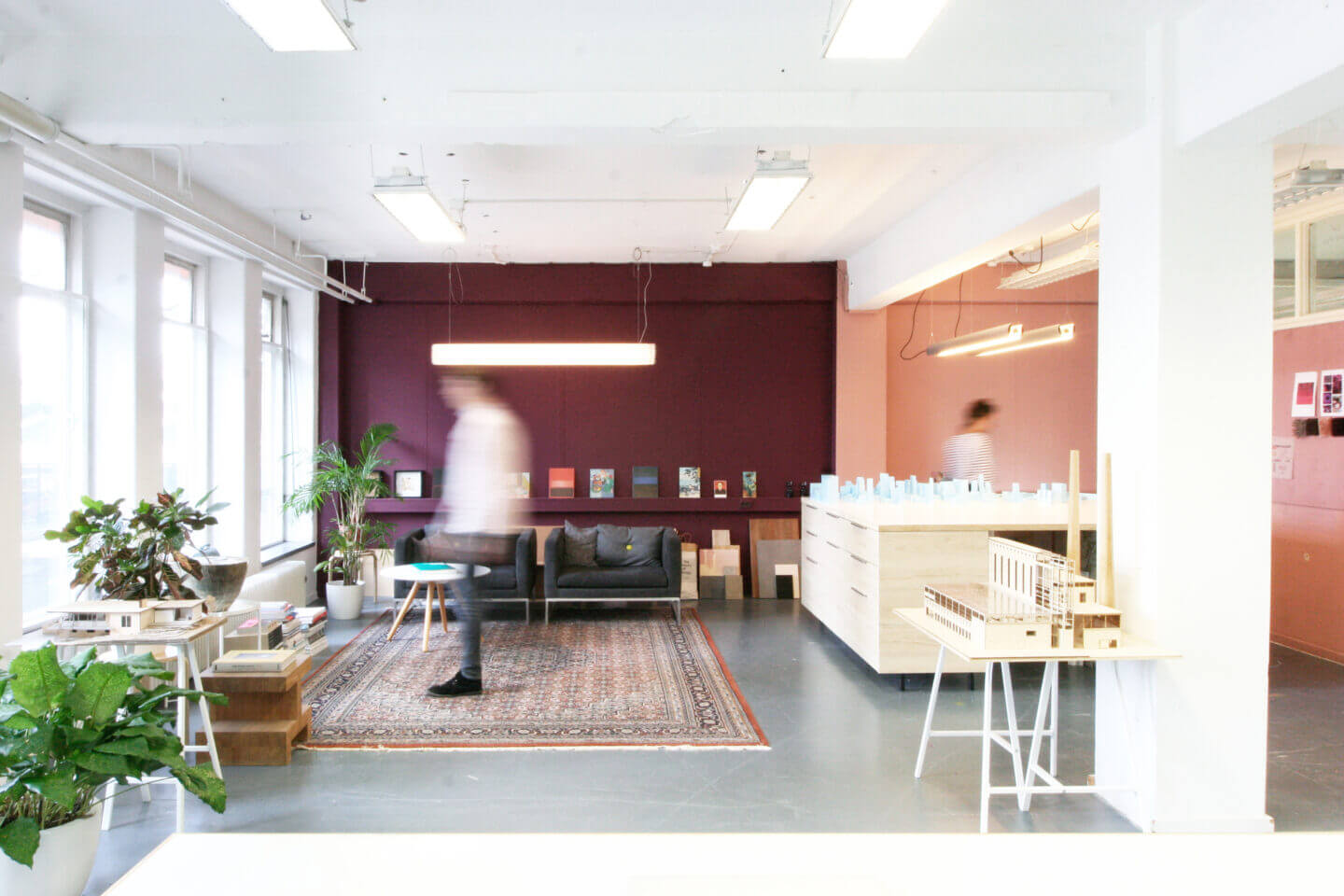
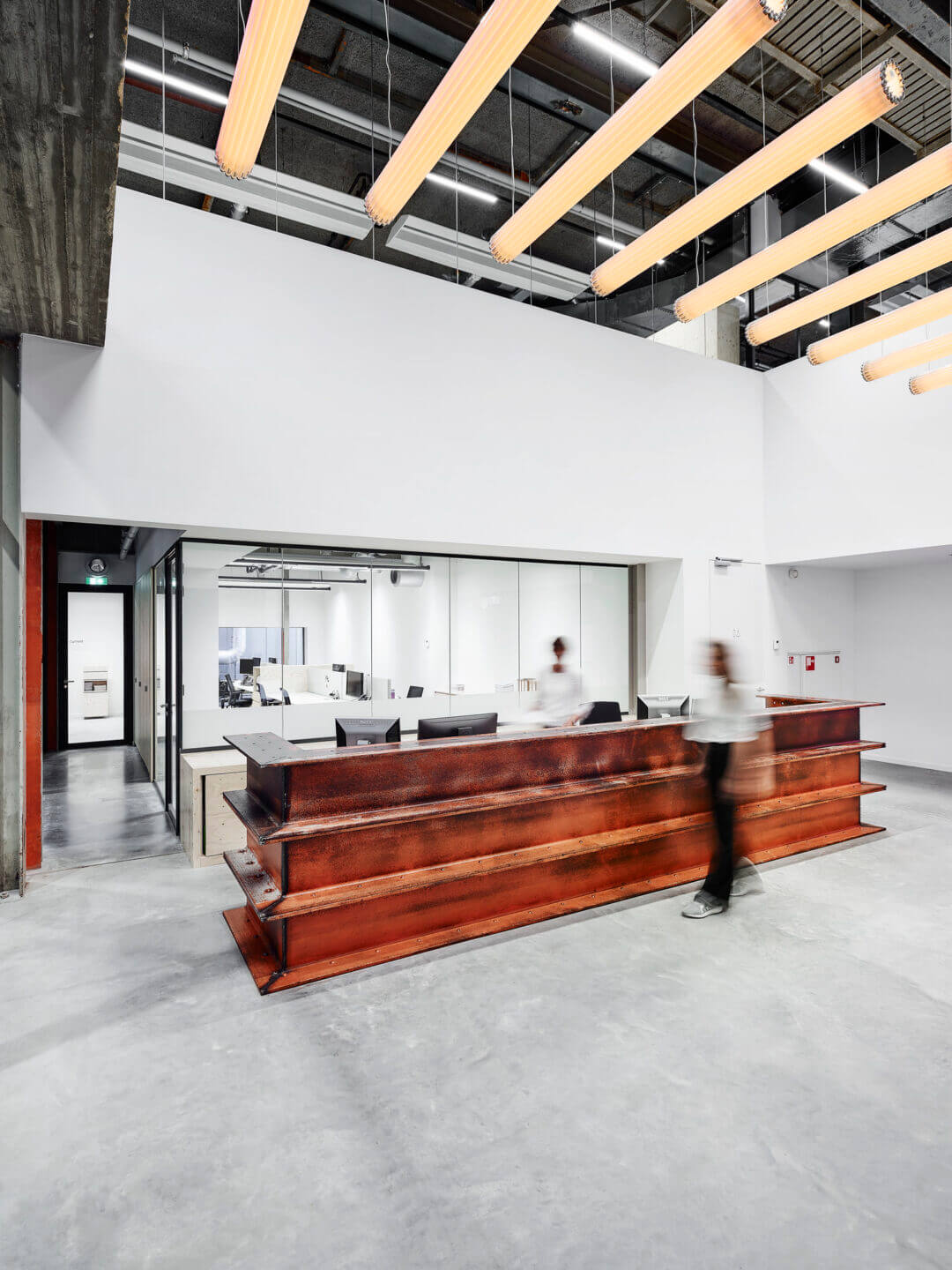
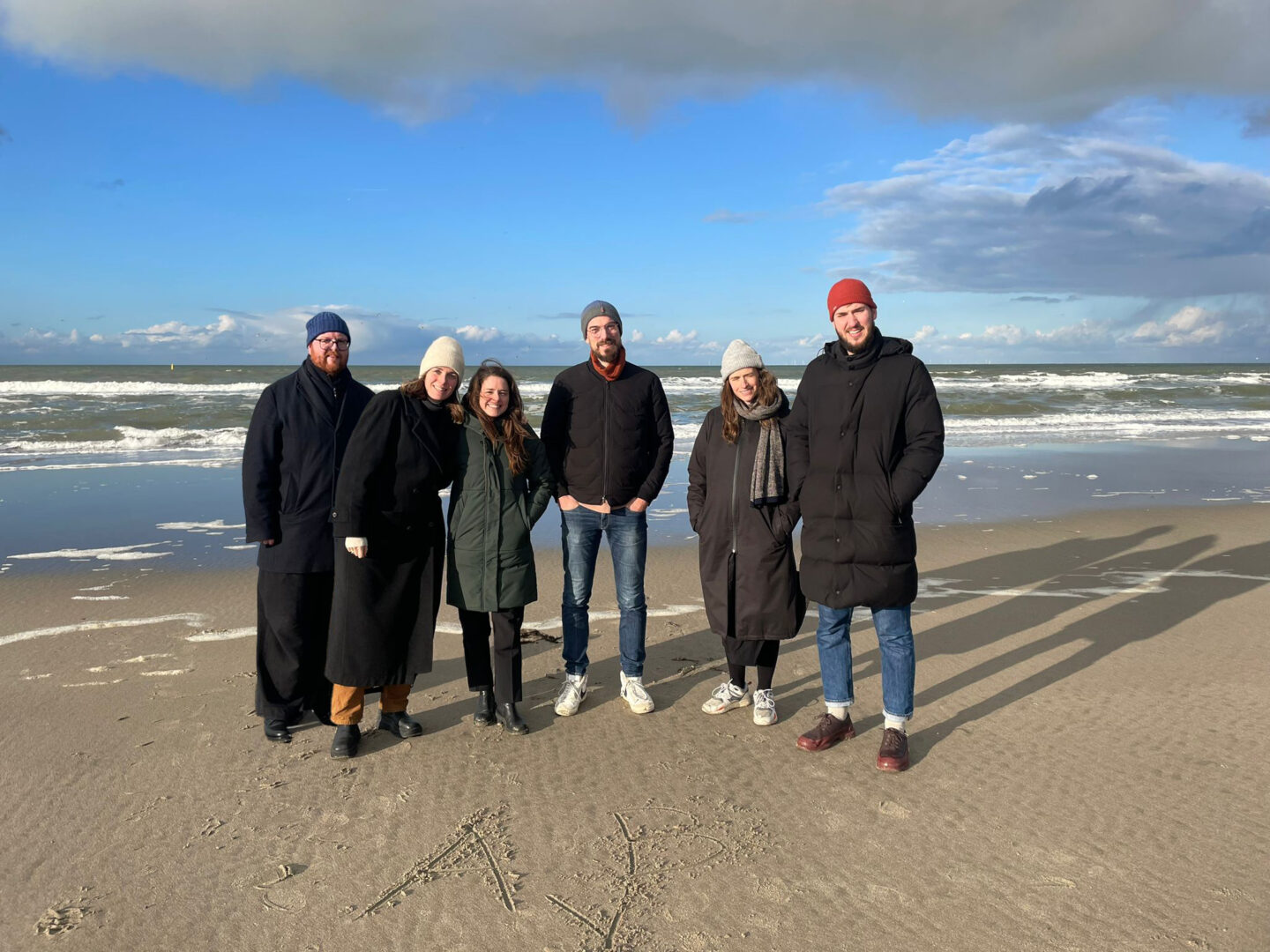
Wij zijn ateliervanberlo
Onze leefomgeving verandert in hoog tempo. Er liggen complexe vragen voor ons die inclusieve oplossingen vereisen. Als ontwerpatelier voor onderzoek en architectuur is dit ons domein. Gedreven door nieuwsgierigheid en ambitie werken we altijd met een open houding. Dit maakt ons wie we zijn: een nieuwe generatie architecten die onze eigen toekomst vormgeeft. Op elke schaal; van stoel tot stad, en alles daartussenin.
Wij geloven dat een benadering van open onderzoek de voorwaarde is voor goede architectuur. Elke opdracht is anders, elke oplossing is uniek. Onderzoek geeft ons de mogelijkheid om de opdracht te begrijpen, de vraag achter de vraag te definiëren en oplossingen te ontwikkelen voor complexe vraagstukken. We interviewen huidige en toekomstige gebruikers en betrekken zowel insiders als buitenstaanders. Het inspireren van onze klanten bij het maken van keuzes is onze kracht. Samen komen we tot oplossingen en creëren we meerwaarde voor de samenleving op onze eigen manier.
We geloven in architectuur als een ervaring; een plek die verrast, verwarmt en verwelkomt. Een plek die verankerd is in zowel de gebruikers als de omgeving, waar het ontmoeten van elkaar centraal staat. Openbare, duurzame en inclusieve plekken die mensen uitdagen en tegelijkertijd stimuleren. We proberen het verleden, heden en toekomst met elkaar te verbinden. Op deze manier creëren we leefbare en evenwichtige plaatsen, en dromen we samen van nieuwe delen van de stad.
Team
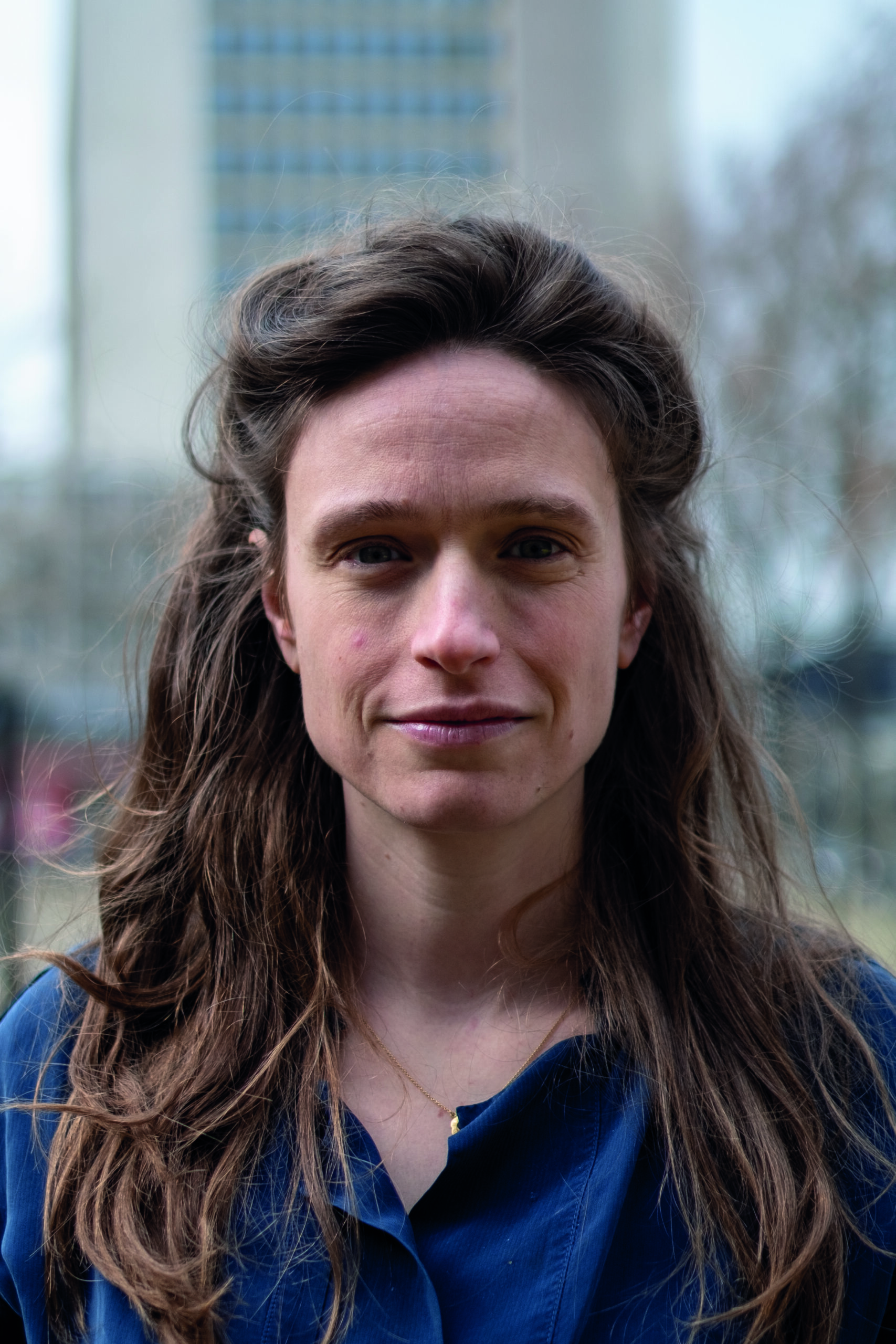
Janne van Berlo
Oprichter | Architect
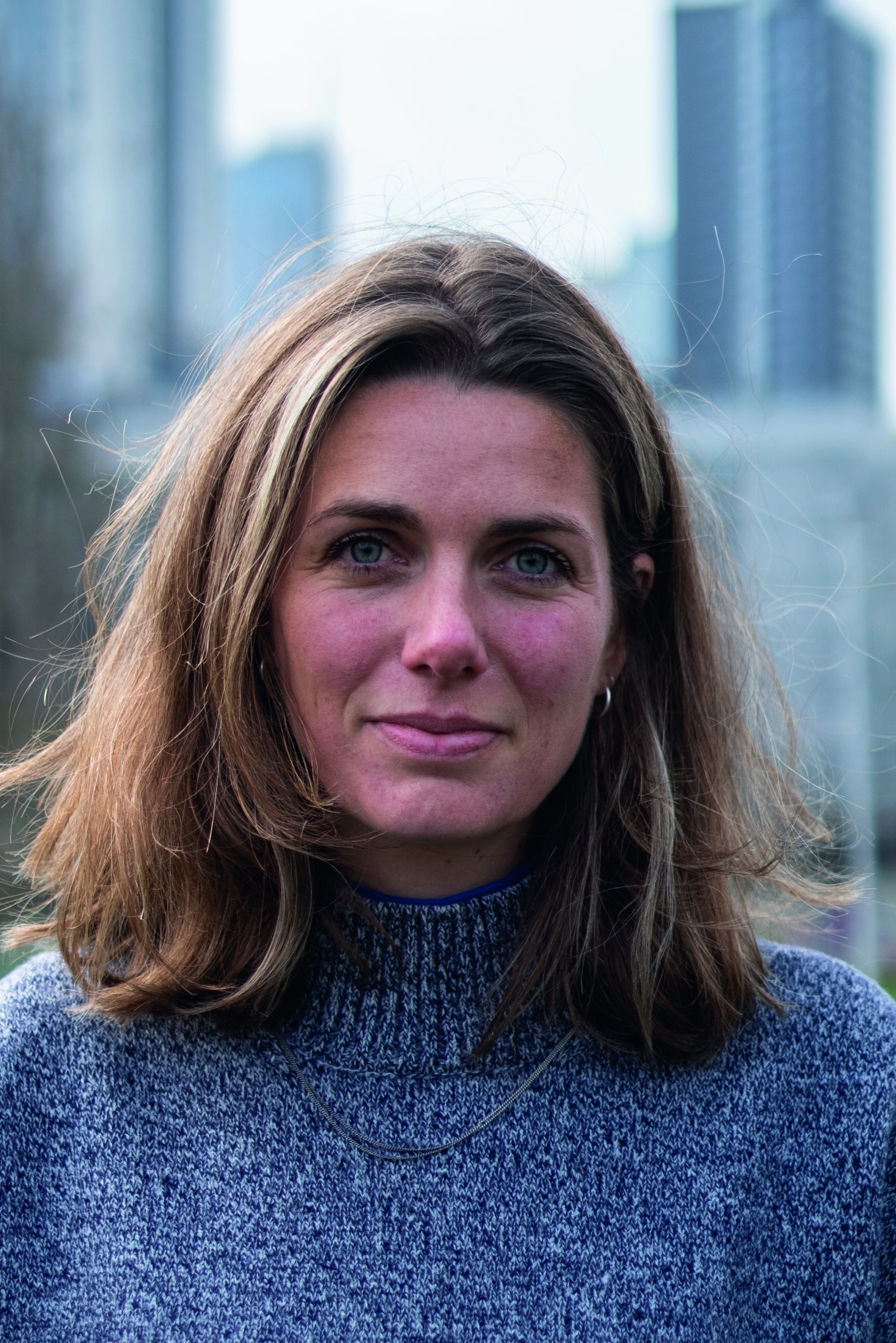
Marleen Delfos
Projectarchitect
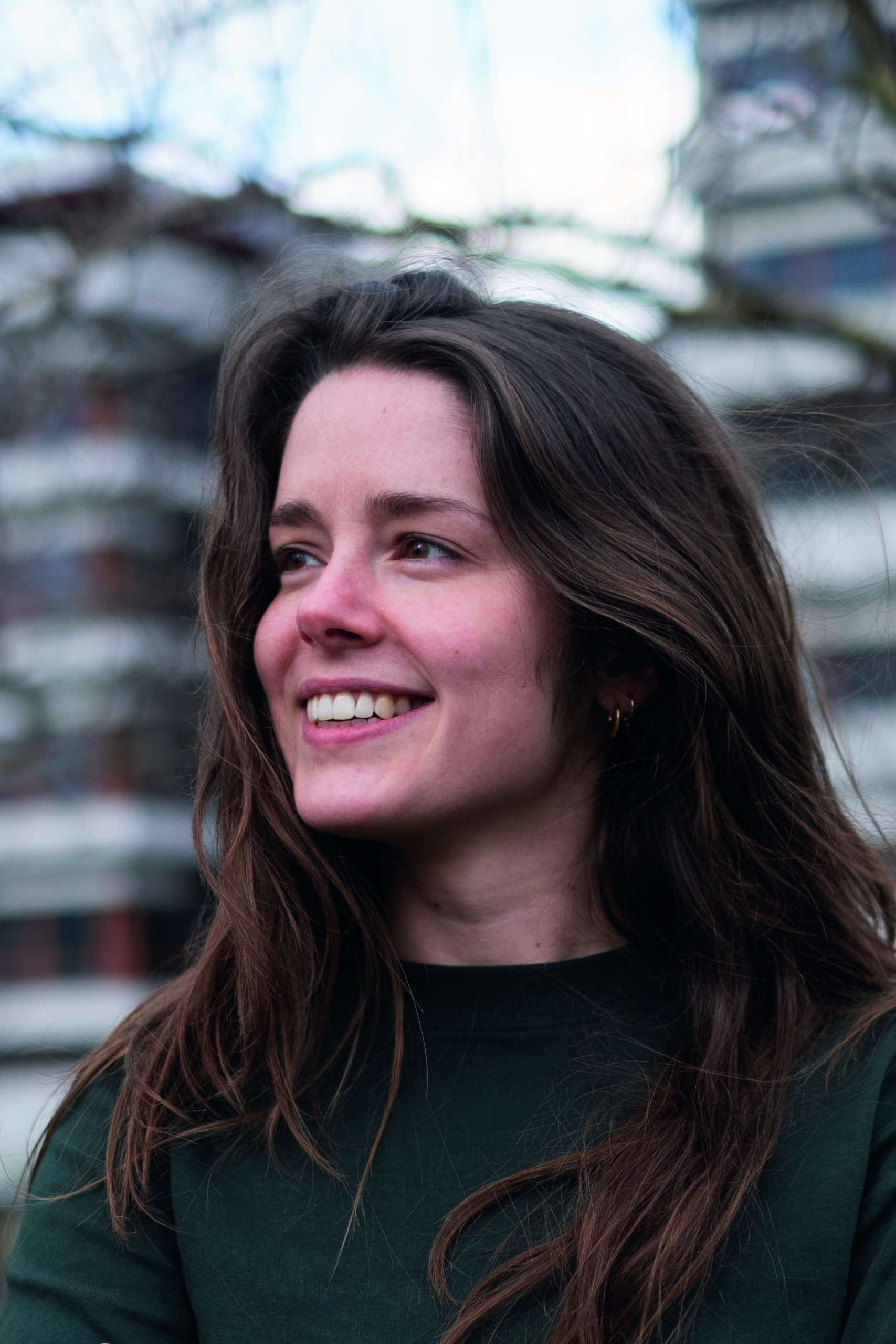
Roos van Roessel
Projectarchitect
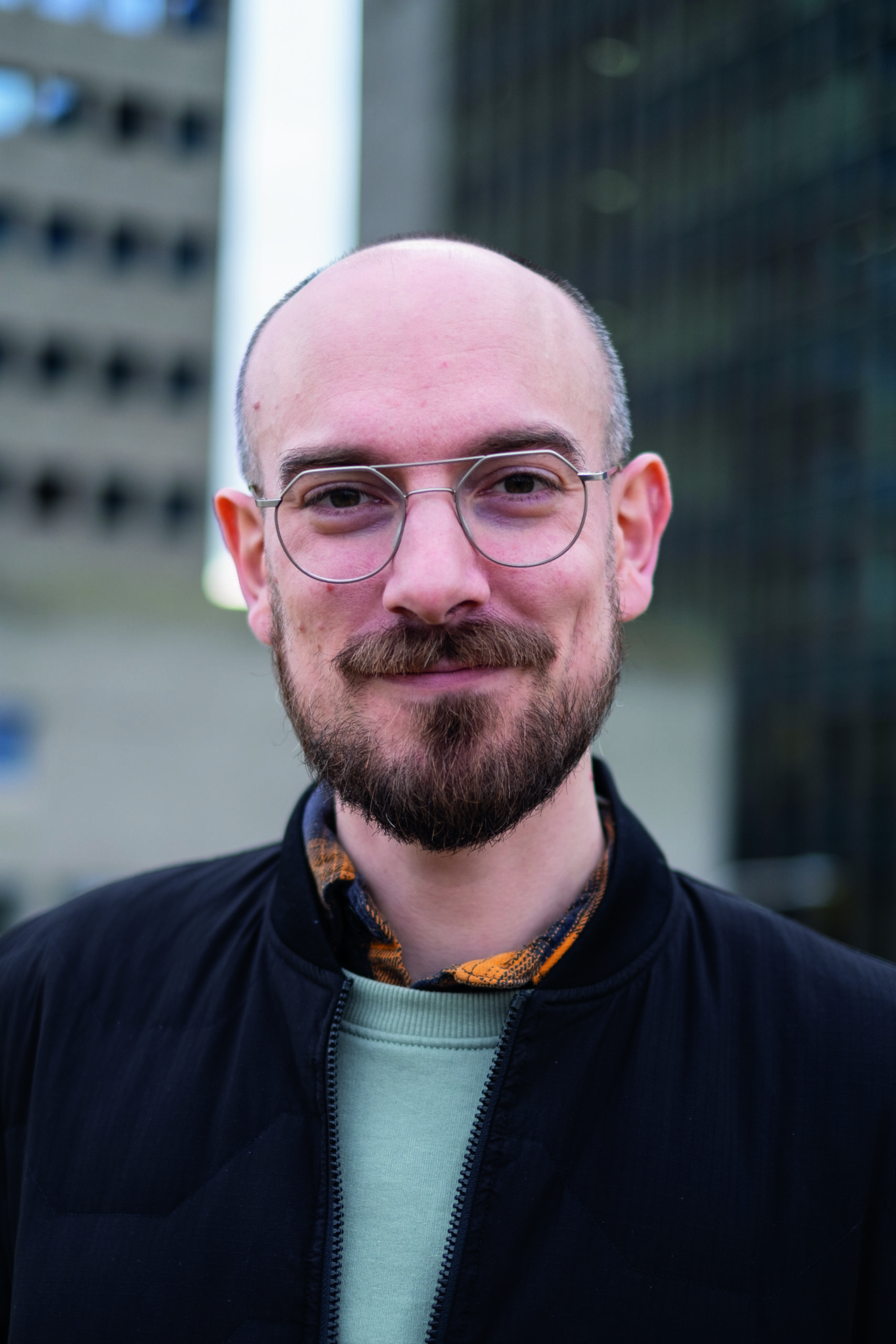
Chris Idema
Projectarchitect
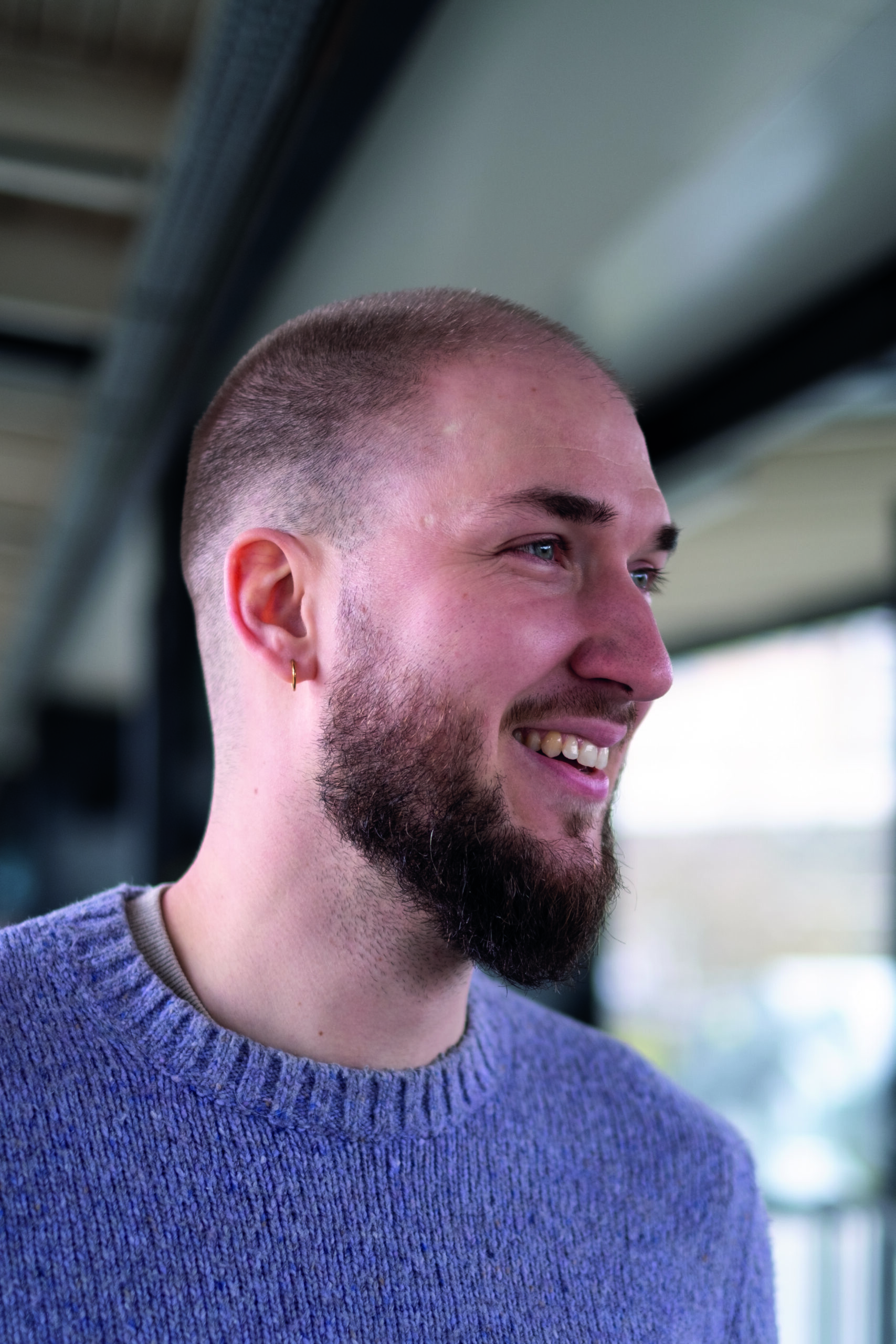
Emiel van der Vlies
Ontwerper | Huisfotograaf

Cristina Ferreiro García
Bouwkundig modelleur

Dave van Leeuwen
Ontwerper
Voorheen:
Tim Reekers – Lukas Jusas – Roel Teeken – Alain Scarpa – Tiemen Anema – Babette van Tilborg – Judith Pellicaan – Sebastiaan Brouwer – Justus Schäfer – Frederique van Erven – Jamila Perruchoud – Peter Canisius – Robine van Gaalen – Tom Thijssen – Vera Wittebrood – Veerle Rigter – Rosa Steenkamp – Eline Degenaar – Leonie Boelens – Elmer Pietersma
Awards
2019 – Next Step Award – Winner
2019 – Dezeen Awards – Large workspace interior – Shortlisted
2019 – Dezeen Awards – Rebirth project – Longlist
2019 – A+ award – Concepts + Architecture + renovation – Special Mention
2019 – A+ award – Commercial – co working space – Nominated
2019 – Dirk Roosenburg Prijs – Nomination
2019 – NRP gulden Feniks – Finalist
2019 – European Award for Architectural Heritage Intervention – Shortlist
2019 – WADA 2019, APR – VanBerlo Headquarters – Winner
2019 – WADA 2019, APR – Innovation Powerhouse – Honorable mention
2018 – Reynaers projectprijs Innovation Powerhouse – Nomination
2018 – Rethinking the Future sustainability award – Winner
Lezingen & Tentoonstellingen
2023 – Lecture: Entrepreneurship in Architecture and the Built Environment – TUDelft
2023 – Paneldebate – AFFR Rotterdam
2022/2023 – Lecturer – Transforming the City, Maritime museum Rotterdam – TUDelft
2022 – Lecture: Transforming Buildings, Transforming Cities – TH Lübeck
2022 – Exhibition: Prefigurations (The Great Transformation) – Architecture Workroom Brussels
2020 – Lecture: Building Upon – TU Berlin
2018 – Exhibition: Innovation is… – Innovation Powerhouse
2018 – Lecture: Innovation Powerhouse – ACE Sponsor Club
2018 – Lecture: Lighthouse club
2016 – Exhibition: The promise of the office – Dutch Design Week 2016
Jurypanel
2023/2024 – What Iff.. public space in Eindhoven visualised the city’s role as Dutch Design Capital
2022 – Next Step Award
2020 – Young talent award – ARC20
Publicaties Online
2022 – Architectenweb – nieuwe gezichten
2019 – Archdaily – Amber office
2019 – Frameweb – Amber office
2019 – A.zine interview
2019 – Dutch design center Innovation Powerhouse
2019 – Architizer Innovation Powerhouse
2019 – Urbannernext Innovation Powerhouse
2019 – Architectuur Bouwformatie
2019 – ArchitectuurNL Innovation Powerhouse
2019 – GOOOD Innovation Powerhouse
2018 – Vastgoedjournaal Innovation Powerhouse
2018 – Dezeen Innovation Powerhouse
2018 – Frameweb Innovation Powerhouse
2018 – Designboom Innovation Powerhouse
2018 – De Architect Innovation Powerhouse
2018 – De Architect VanBerlo Headquarter
2018 – Architectenweb Innovation Powerhouse
2018 – Architectural Digest Russia Innovation Powerhouse
2018 – Azure Innovation Powerhouse
2018 – Archello Innovation Powerhouse
2018 – Livingroom – Innovation Powerhouse, In the mirror with
2018 – Retaildesignblog – Innovation Powerhouse
2018 – Studio 040 Innovation Powerhouse
Publicaties Print
2021 – de Architect – JG 52 – P 122
2019 – Bouwwereld No4 – Cover & P 26-31
2019 – SPEECH postindustrial Russia No 32 P 26-31
2019 – ofARCH No 148 – P140-143
2019 – PI – No 4 jaargang 30 – Cover & P 8-12
2019 – Nederlands Architectuur Jaarboek editie 2018-2019
2019 – AIT – Büro und Verwaltung No 04 – P146-149
2019 – Architectuur NL No 3 – p20-23
2019 – Zink Zinc No 5 – Cover & P 9-25
2018 – Architecture Fachmagazine No 07 – P20-21
2018 – C3 No 398 – courthouses and cultural warehouses – p42-53
2018 – Azure magazine – June – p068-075
2018 – The Other Office 3 – Frame publications – 2018 – p343
2017 – Member-S Mag – VanBerlo & Strijp-T – 07-2017 – E9
2017 – ED – De Nieuwe energie van Powerhouse – 20.04.2017
2017 – ED – Strijp-T, van Steenkool naar Design – 09.11.2016
2016 – Stylos yearbook – Sense and Sensibility
Contact
Atelier van Berlo
Delftseplein 36
3013AA Rotterdam
+31(0)10 8001511
info@ateliervanberlo.com
Innovation Powerhouse
De voormalige elektriciteitscentrale van Philips is getransformeerd het Innovation Powerhouse; een multi tenant kantoorgebouw. Van een oorspronkelijk puur, grof, rauw en zwaar industrieel complex, dat zowel qua omvang als volume volstrekt ongeschikt was voor kantoorruimte, naar een comfortabele, ademende, ruime, frisse en speelse werkomgeving.
Het Innovation Powerhouse fungeert als een ecosysteem voor de innovatieve industrie, een centrum van creativiteit. Het is een hypermodern, multi-tenant gebouw waar verschillende bedrijven samenkomen, elkaar inspireren en innovatie stimuleren. Gelegen op Strijp-T is deze voormalige elektriciteitscentrale een iconisch gebouw en een landmark van Eindhoven. Gebouwd in vier fasen, van 1953 tot 1972, voorzag de centrale oorspronkelijk de Philips-fabrieken van energie via kolen, gas en later olie.
De twee belangrijkste ontwerpprincipes waren het behouden van de intrinsieke architecturale kwaliteiten van het gebouw en het integreren van de visie van open innovatie. Het idee van openheid en verbondenheid was essentieel voor het gehele ontwerp, waardoor verschillende bedrijven elkaar spontaan tegenkomen, wat zorgt voor moeiteloze interactie, uitwisseling en inspiratie.
Om dit levendige centrum te creëren, is een duidelijke snede in het gebouw gecreëerd, een rechte straat door het hart, inclusief de originele centrale ruggengraat, een 5 meter brede hoogbouw waar de kolen schachten nog steeds op 28 meter hoogte hangen. Naast deze centrale ruggengraat werd het dak geopend door een lichtstraat die de volledige lengte overspant, waardoor licht binnenkomt in het anders donkere centrum van het gebouw. Dit licht onthult de originele zware betonstructuur van de begane grond en biedt een blik op de gevel van de centrale hoogbouw. Zo is het volledige gebouw te ervaren in deze straat.
In het verleden is het gebouw nooit volgens het oorspronkelijke ontwerp afgebouwd. De energieproductie ging over van kolen naar gas en olie, waardoor kolen schachten overbodig werden en in de laatste fase ook niet meer gebouwd zijn. De centrale hoogbouw was daarmee incompleet. Geïnspireerd door de oorspronkelijke tekeningen is een verticale tuin van staal toegevoegd, waardoor het gebouw zijn oorspronkelijk bedoelde symmetrische uiterlijk kreeg. Deze verticale tuin, met vergaderruimtes, een glazen lift en nooduitgang, volgt de lijnen en het ritme van de originele architectuur en straalt een nieuwe duurzame groene energie uit.
Het symmetrische uiterlijk wordt vervolledigd door een glazen uitbreiding aan de noordkant van het gebouw die de lijnen en ritme van het gebouw volgt, maar met minimalistische details en moderne materialen duidelijk een nieuwe fase aangeeft voor dit indrukwekkende gebouw. Andere ingrepen, zoals de ramen voor licht in de kantoren en de hoofdingang,zijn bewust klein gehouden om het monumentale industriële karakter van het gebouw zichtbaar te houden. tijdens de renovatie was er ook veel aandacht voor duurzaamheid, met HR+ glas, zonnepanelen en ruimschootse isolatie, wat het gebouw nu een energielabel A+ heeft opgeleverd.
Type: Transformatie
Locatie: Eindhoven
Opdrachtgever: GeVa
Status: Voltooid
Architecten: Atelier van Berlo in samenwerking met Eugelink Architectuur & De Bever Architecten
Interieurarchitect: Atelier van Berlo
Team: Janne van Berlo | Veerle Rigter
Foto’s: Tycho Merijn
Laten we het over de stad hebben
Eindhoven’s Stadhuisplein zal de komende jaren worden ontwikkeld tot een groen en levendig gebied. Wonen werken en verblijven gaan hier samenkomen. In een intensief participatietraject halen we samen met de mede ontwikkelaars en de gemeente de visie, zorgen en meningen op van de Eindhovenaar. In verschillende sessies komen we in grote of kleine groepen bij elkaar om onze plannen te delen en feedback te ontvangen. We hechten veel belang aan de wensen van de toekomstige bewoners en bezoekers; zij zijn de mensen die deze plek tot een levendige, geslaagde plek gaan maken.
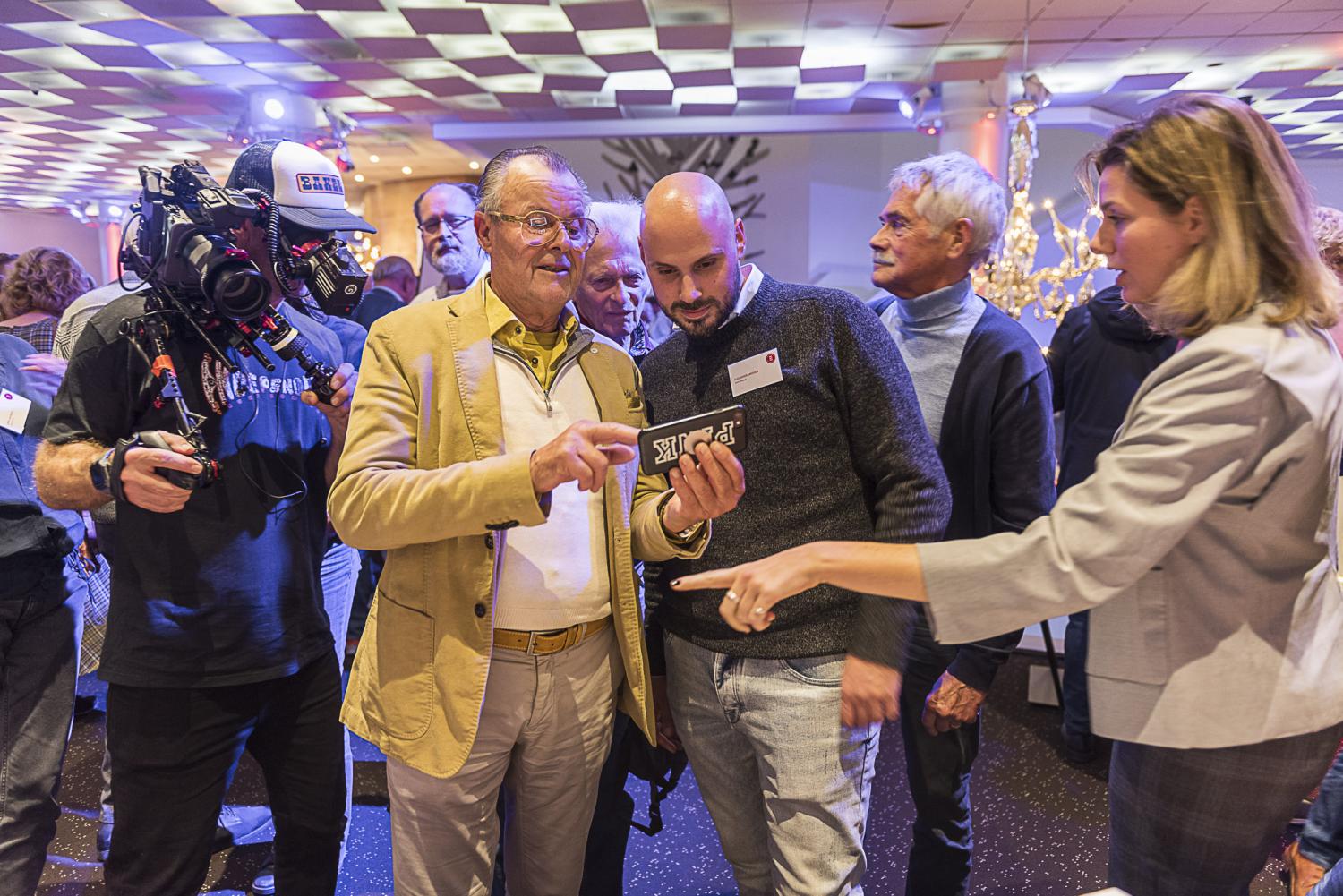
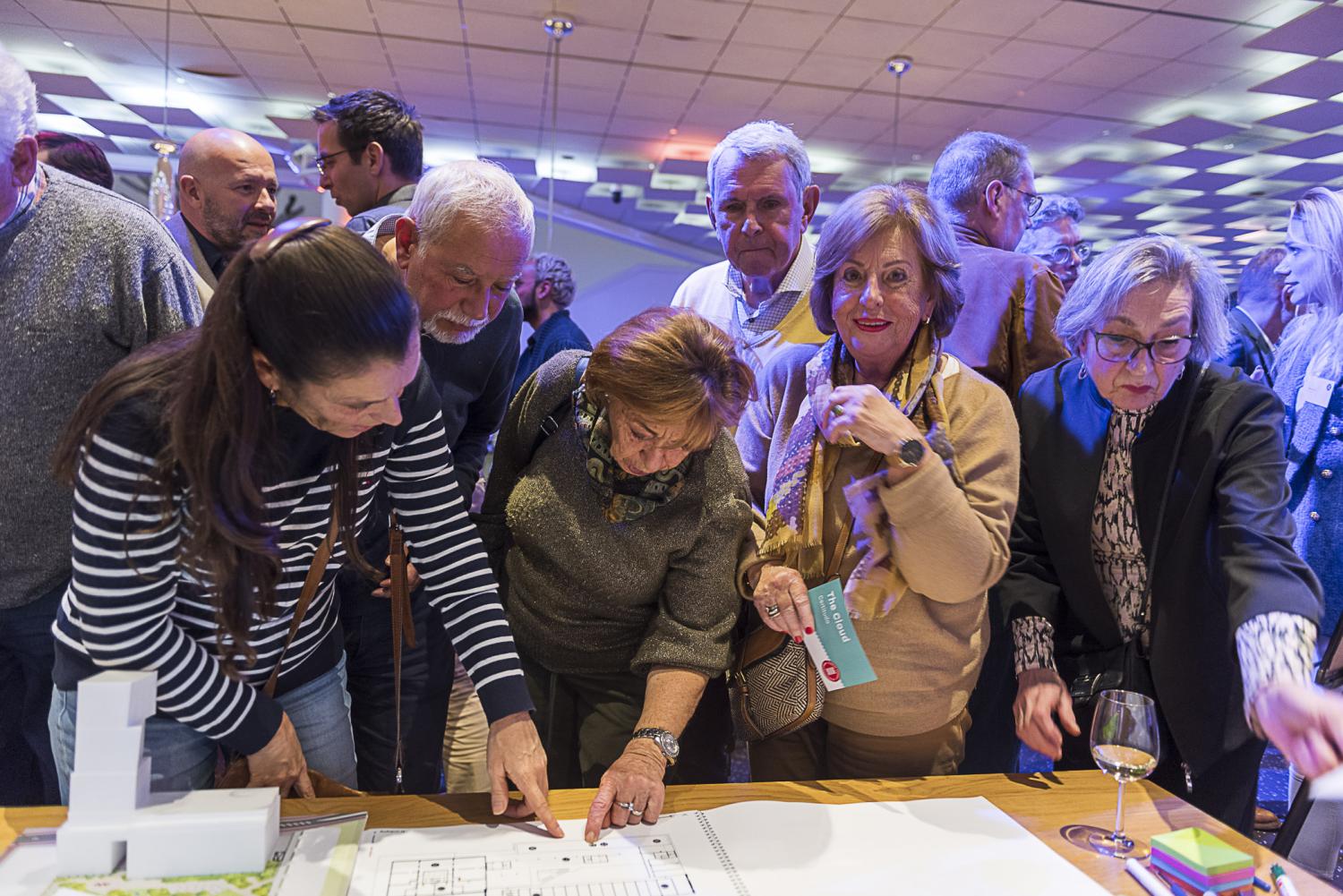

Fotograaf: Martin van Rooij
Karakter
KARAKTER, een ambitieus plan van 110 levensloopbestendige woningen voor de vitale 55+er in Palenstein, Zoetermeer. Deze ontwikkeling drapeert zich rondom de transformatie van het oude Monuta gebouw (nu Cornelis genoemd) waar zorg- en ontmoetingsruimtes voor de bewoners en de wijk gerealiseerd worden. Een perfecte combinatie van rust en roering.
Karakter reageert op de vraag naar een ‘’ruimtelijke ensemble en compositie van hoogtes, vorm en architectuur’’. De opzet en organisatie van deze nieuwe gebouwen is sterk geïnspireerd door de antroposofische principes, die draaien om het creëren van ruimte voor spontane ontmoetingen en menselijke schaal.
Om het binnengebied te beschermen tegen verkeerslawaai en de drukte van de stad, zijn de bouwvolumes aan de randen van het terrein geplaatst. Dit creëert een rustige en groene binnentuin voor de bewoners en bezoekers. Met het maken van lucht en ruimte tussen de gebouwen houdt Karakter verbinding met de omliggende wijk. Er zijn zichtlijnen tussen de omgeving, het monument en het binnengebied die zowel tussen de gebouwen door, als via de gemeenschappelijke ruimtes op de begane grond zichtbaar zijn. Loopbruggen en ontmoetingsplekken tussen de gebouwen betrekken de bewoners bij hun omgeving en Palenstein. Het binnengebied is warm en met hout bekleed, omkaderd door een bakstenen raster verbindt deze zich met het Cornelis gebouw en de binnentuin.
Ontmoeten staat centraal in de architectuur van het binnengebied, wat resulteert in een andere vorm en uitstraling aan deze zijde. De onderste lagen van het plan streven naar een zichtbare verbinding tussen de woningen, de galerij en de binnentuin. In het hoge bouwvolume zijn er fijne buitenruimtes op de galerij, verbonden door een brede rolstoelvriendelijke route. Ook in de twee lage volumes is er kans op het vinden van je eigen plek; door middel van een stoepje voor je voordeur is er ruimte om elkaar tegen te komen en te verblijven.
Door het verschuiven van de bouwvolumes doorbreken we niet alleen de lange lengtes aan de Van Aalstlaan, maar maken we ook geen lange en saaie galerijen in het binnengebied. Hier op de galerij zijn plekken om bij te praten, watertappunten in de privacyschermen om de de planten in de plantenbakken water te geven, hoeken om te zitten met uitzicht op de tuin. De directe verbinding met alle woningen in het plan maken van de galerij een buurtje om in te ontdekken en te ontmoeten.
Karakter is een plek waar mensen gelukkig ou(er) worden. De naam heeft betrekking op de eigenwaarde van de bewoners, de kwaliteiten aan de binnentuin en de karakteristieke verschijning van het Monuta (Cornelis) gebouw. Karakter is een aantrekkelijke woonomgeving, gezellig, prikkelend en zorgzaam voor zijn toekomstige bewoners.
Type: Levensloopbestendige woningbouw
Locatie: Zoetermeer
Opdrachtgever: AM
Status: Tender
Team: Janne van Berlo | Marleen Delfos | Chris Idema | Emiel van der Vlies | Tim Reekers | De Urbanisten | BAM | VERO
Wonen in het historische hart van Dülken
In het project ‘‘Wonen in het historische hart van Dülken’’ wordt gezocht naar een oplossing voor het verlies van vitaliteit in Dülken, veroorzaakt door veranderende winkelgewoonten en leegstand in de oude stad. Het plan omvat de bouw van 18 eengezinswoningen rondom een gemeenschappelijke binnenhof, geïnspireerd op historische stadsstructuren. Het doel is om een levendige mix van bewoners aan te trekken en een positieve bijdrage te leveren aan de toekomst van Dülken, met aandacht voor sociale, culturele en milieugerichte duurzaamheid.
De bestaande steeg heeft vanuit cultureel-historisch oogpunt de hoogste waarde en vormt het ruimtelijke motief van een nieuwe gemeenschap. Het plan ontwikkelt zich tot een echt binnenhof, geïnspireerd op oorspronkelijke vormen van collectief stadsleven. De huizen liggen rond een gemeenschappelijke binnentuin en hebben daar allemaal hun voordeuren. Alle appartementen verschillen in vorm en grootte. De plattegronden zijn ontworpen met het oog op het bevorderen van collectief leven en ontmoeting, terwijl tegelijkertijd de privacy van de bewoners wordt gewaarborgd.
Type: Onderwijs
Locatie: Dülken
Opdrachtgever: Gemeente Dülken
Status: Schetsontwerp
Architecten: Atelier van Berlo & Ector Hoogstad Architecten
Team: Janne van Berlo
Nelson – Amsterdam Zuidoost
Nelson is een nieuw woonproject in Amsterdam. In samenwerking met KCAP en in opdracht van Synchroon presenteren we dit hoogstedelijke woonensemble dat prioriteit geeft aan het welzijn van de bewoners. Het door KCAP ontworpen ensemble bestaat uit vijf bouwblokken die een verbinding vormen tussen het groen van het Nelson Mandelapark en het stedelijke karakter van de ArenAPoort en het Anton de Komplein. De ontwikkeling omvat in totaal 440 appartementen en diverse sociale en commerciële voorzieningen.
Ons Parkrand-gebouw huisvest ongeveer 79 huurappartementen in het middensegment en is ontstaan door het winnen van de Next Step-prijs. Het volume reageert met een subtiele knik op het Nelson Mandelapark, zodat het gebouw in het groen schuift. Verspringende vensters in de parkgevel weerspiegelen het natuurlijke karakter en zorgen voor een speels effect. Brede balkons steken uit de vensters en functioneren als buitenkamers voor de appartementen.
Dit gebouw met twee gezichten onthult zijn binnenzijde, met een galerij met een lange houten gevel. Vogelnesten geïntegreerd in de structuur bekronen het gebouw, dienend als zowel een decoratief element als een knipoog naar het belang van samenleven met de natuur. De plint van het gebouw, licht gechipperd, steekt af tegen de bovenste lagen en creëert zo een architectonisch onderscheid. Hergebruikte geglazuurde stenen worden gebruikt onder de luifel van de entrees, als verbijzondering en gastvrij gebaar naar de omgeving.
Type: Woningbouw
Locatie: Amsterdam
Opdrachtgever: Synchroon
Status: OMV afgeleverd
Architecten: Atelier van Berlo & KCAP
Team: Janne van Berlo | Roos van Roessel | Tiemen Anema
Zadkine Rotterdam
In opdracht van onderwijsinstituut Zadkine heeft Atelier van Berlo een nieuw ontwerp gerealiseerd voor de herindeling van de hoofdlocatie aan het Benthemplein in Rotterdam. De locatie vereiste een herstructurering van het gebouw om de praktijkcolleges, waaronder Gezondheidszorg, Welzijn en Sport, Business College, Beauty & Fashion en HTFB (Horeca, Travel & Leisure, Facilitaire Dienstverlening en Brood en Banket), beter te faciliteren.
Het doel was om de Benthemplein-locatie toekomstbestendig te maken met een onderwijs- en werkplekconcept. Via workshops konden gebruikers hun input delen, wat op de 1e t/m 8e verdieping resulteerde in de toevoeging van multi-inzetbare leslokalen, ontmoetingsruimtes, spreek- en werkruimtes, en zitplekken. Hierdoor wordt flexibiliteit gestimuleerd, sociale interactie bevorderd en de algehele onderwijservaring verbeterd.
Voor de begane grond was het essentieel dat elk college een praktijkruimte kreeg om hun onderwijs te presenteren. Het verwijderen en verplaatsen van het toiletblok en de kappersbalie creëerde een praktijkstraat met een vloeiende verbinding tussen de entrees aan het Benthemplein en de Teilingerstraat. De uniforme houten etalagewand fungeert als ‘drager’ om het praktijkonderwijs te belichten en biedt ruimte voor studenten en docenten om werk en voorbeelden te presenteren.
De ontvangstbalie is nu een herkenbaar element en samen met de balie bij de Teilingerstraat dienen ze als prominente aanspreekpunten. De straat fungeert als ideale ontmoetingsruimte en biedt mogelijkheden voor diverse onderwijsgerelateerde activiteiten, zoals open dagen, diploma-uitreikingen, exposities en activiteiten voor bezoekers uit de wijk.






Frisse kleurbeleving, circuliair materiaalgebruik en met oog voor de gebruiker is er een overzichtelijk, gebruiksvriendelijk en samenhangend geheel gerealiseerd voor de studenten.

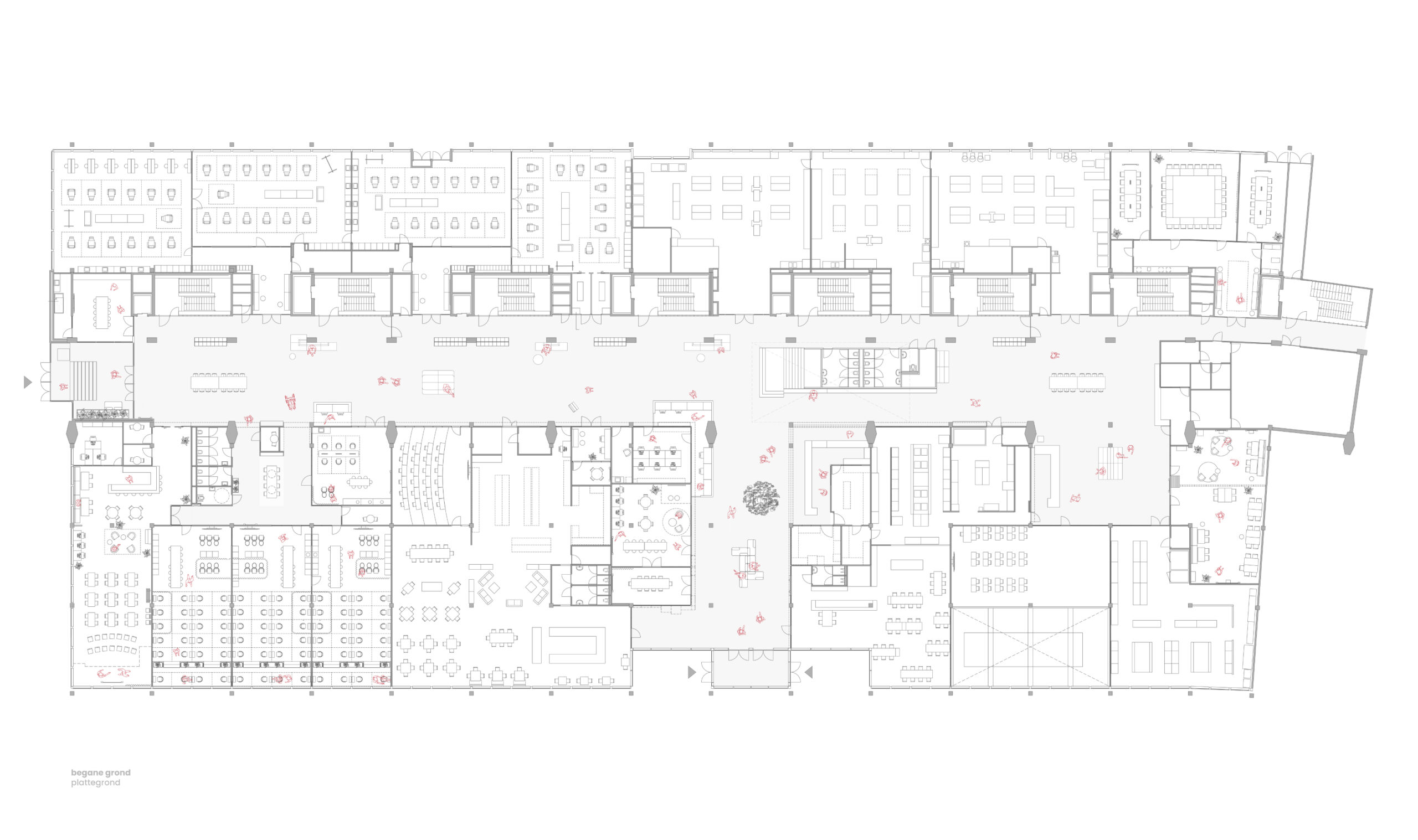
Type: Herinrichting
Locatie: Rotterdam
Opdrachtgever: Zadkine
Status: Onder constructie
Team: Janne van Berlo | Marleen Delfos | Emiel van der Vlies | Tiemen Anema | Roel Teeken
Foto’s: Emiel van der Vlies
Het Streek Lyceum
Atelier van Berlo en Ector Hoogstad Architecten hebben samen een middelbare school in Ede ontworpen. Het nieuwe gebouw moet de thuishaven worden voor 1.500 leerlingen en medewerkers. Vertegenwoordigers van beide gebruikersgroepen zijn actief betrokken geweest bij het ontwerpproces. Het resultaat is een ontwerp dat voortkomt uit de wens van de school om als gemeenschap nog hechter te worden. Het sociale en ruimtelijke hart van het nieuwe gebouw is de multifunctionele aula, die voor van alles gebruikt kan worden: van schoolvoorstellingen tot sociale evenementen en kerkdiensten. De grote glazen gevel maximaliseert het uitzicht op de groene omgeving en de transparantie nodigt ouders, buren en zakenpartners uit om deel uit te maken van de gemeenschap. Een grote sporthal en een groot speelveld stimuleren een gezonde levensstijl en bieden mogelijkheden voor activiteiten die de gemeenschapsbanden versterken.
Het gebouw heeft reliëfrijke gevels van baksteen en hout, wat het een sfeer van rust en esthetisch aangename symmetrie geeft. De toewijding van de school aan onderwijstechnologie komt in het ontwerp tot uiting in de vorm van een “Technasium”, een opvallend transparant volume met een frame van champagnekleurig geanodiseerd aluminium dat uit de hoofdstructuur steekt en op een van de groene heuvels rust die het schoolterrein afbakenen. De opening die door deze compositie ontstaat, vormt de toegang tot de “wereld van Het Streek”.
Het nieuwe gebouw is niet alleen visueel aantrekkelijk en functioneel, maar ook zeer duurzaam. De bewust compacte vorm en de hoogwaardige gevel beperken de energiebehoefte tot een minimum. Voor de gevel hebben we het innovatieve dry-stack systeem toegepast, waardoor de CO2-uitstoot wordt verminderd en toekomstige flexibiliteit mogelijk wordt. De school is zowel klimaatadaptief als ecologisch ondersteunend, met onder andere een groene ruimte voor wateropslag en een patio ontworpen als oase. Het gebouw voldoet aan de overheidseisen voor “Frisse Scholen” met betrekking tot onder andere natuurlijk licht, natuurlijke ventilatie en uitzicht op natuurlijke landschappen en is ontworpen om de gezondheid en het welzijn van de leerlingen en het personeel van de school te ondersteunen.
Type: Onderwijs
Locatie: Ede
Opdrachtgever: Het Streek Lyceum
Status: In aanbouw
Architecten: Atelier van Berlo & Ector Hoogstad Architecten
Team: Janne van Berlo | Roos van Roessel | Tiemen Anema
Ruimtegenoten
De Nederlandse woningmarkt kampt met een groot aantal problemen. We hebben te maken met een groot woningtekort en dat tekort zal de komende jaren alleen maar groter worden. Tegelijkertijd voldoen de huidige woningen fysiek niet meer aan de duurzaamheidseisen van de toekomst en de wensen van een steeds ouder wordende bevolking.
De afgelopen twee jaar heeft Atelier van Berlo, in samenwerking met Stichting Ouderenhuisvesting Rotterdam (SOR) en Metabolic middels een ontwerpend onderzoek geprobeerd om inzicht te krijgen in deze complexe problematiek en vooral ook inzicht te geven in een mogelijke deeloplossing. De vraag die aan het onderzoek ten grondslag ligt is, hoe kunnen we de huidige woningvoorraad beter verdelen, zodat er zo min mogelijk nieuwe woningen bijgebouwd hoeven te worden?
We zijn immers ruimte genoten en we moeten met elkaar de beschikbare woonruimte verdelen.
De woonbehoeften van 55-plussers worden in ruimtegenoten als uitgangspunt genomen. De empty-nester is nu een grote groep in onze bevolking die binnen de huidige woningmarkt tussen wal en schip valt, daarnaast is de toekomstige bouw van woningen nauwelijks op hen gericht. Ruimtegenoten richt zich op deze empty-nester die op dit moment in een te grote en voor hen niet toekomstbestendige woning woont, terwijl zij aangeven geen kant op te kunnen. De deeloplossing is gebaseerd op de vele gesprekken met buurtbewoners, tijdens de georganiseerde omgevingswandelingen. De wandelingen zijn samengebracht in een podcast, gemaakt door Floor Ziegler en Teun Gautier en een zachte atlas, gemaakt door Studio NadiaNena.
Dit onderzoeksproject maakt deel uit van de Open Oproep ‘Anders Werken aan Wonen’ van het Stimuleringsfonds Creatieve Industrie. Voor meer informatie kun je terecht op de website: www.ruimtegenoten.nl.
Type: Ontwerpend onderzoek
Foto’s: Jeffrey Gouwstra
Zachte atlas: Studio NadiaNena
Samenwerkingspartners: Stichting Ouderenhuisvesting Rotterdam & Metabolic
Team: Janne van Berlo | Marleen Delfos | Roos van Roessel | Lucas Jusas | Tiemen Anema
Huize De Boom
Huize De Boom staat sinds 2002 op de lijst van rijksmonumenten en is onderdeel van de historische buitenplaats De Boom, gelegen in Leusden. Omdat het bestaande kantoor interieur niet meer voldeed aan de wensen van de gebruiker, is Atelier van Berlo gevraagd een nieuw ontwerp te maken. Het nieuwe interieur is uitnodigend voor de werknemers, partners en klanten en biedt tevens ruimte voor ontwikkeling, innovatie en vernieuwing.
In het ontwerp is gezocht naar een moderne inrichting die past bij de authentieke, klassieke uitstraling van De Boom. De sociale ontmoetingsplekken zijn verplaatst naar de begane grond, terwijl de bovenverdiepingen zijn gereserveerd voor rustige werk- en vergaderruimtes. Het kleurenpalet is zorgvuldig afgestemd op de diverse functies binnen het gebouw, wat elke ruimte een passende sfeer geeft. Nieuwe ingrepen, zoals de tegelvloer in de eetruimte, zijn geïnspireerd op de geschiedenis van de plek. Op die manier worden niet alleen de bestaande kwaliteiten van het pand versterkt, maar wordt ook een betekenisvolle link gelegd met het rijke verleden van Huize De Boom.







Het kleurenpalet is zorgvuldig afgestemd op de diverse functies binnen het gebouw, zo ontstaat er een fijne en warme werkomgeving in het monument


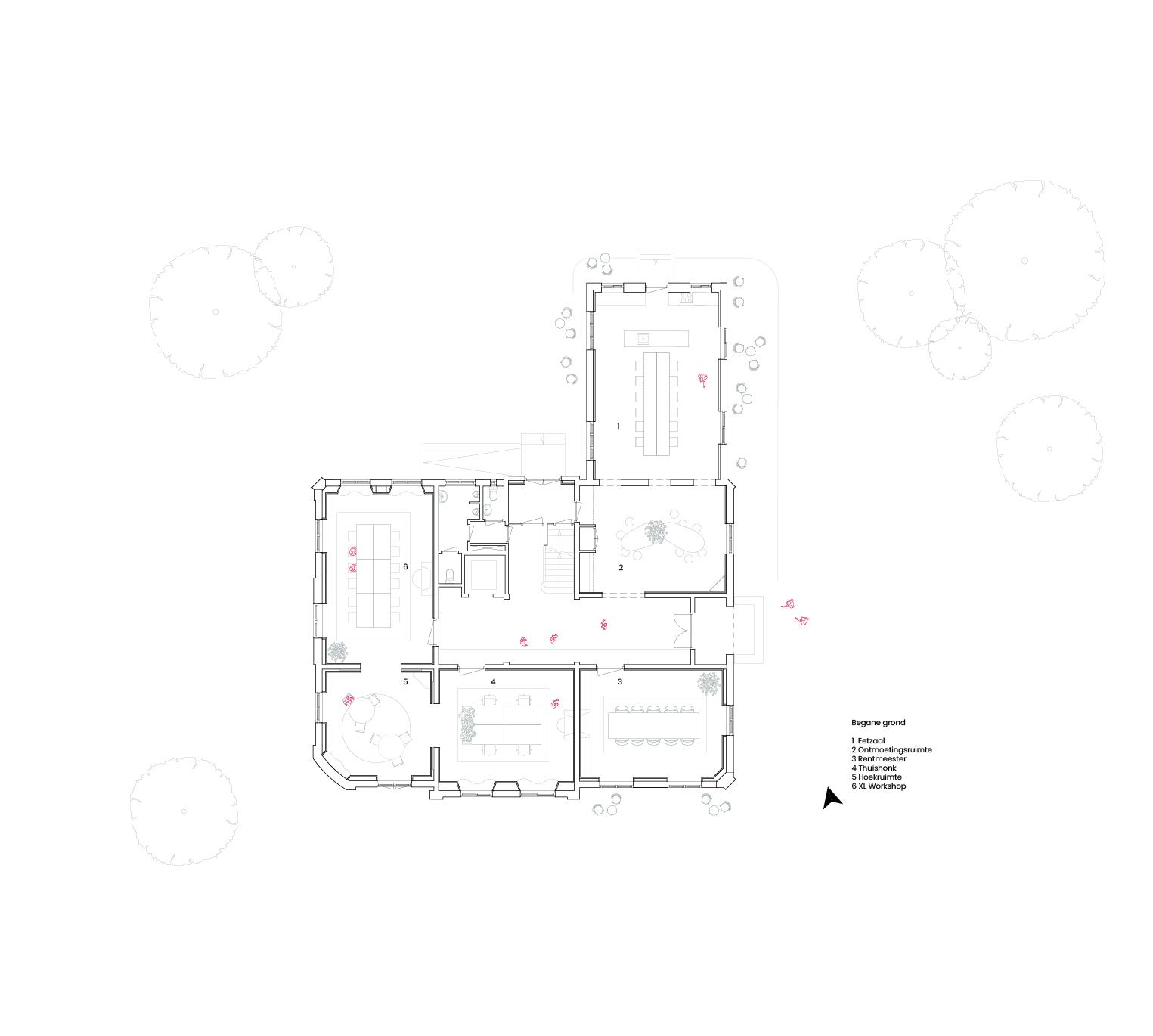




Type: Renovatie van een rijksmonument
Locatie: Leusden
Opdrachtgever: Turner
Status: In 2023 opgeleverd
Team: Janne van Berlo | Roos van Roessel | Marleen Delfos
Foto’s: Riccardo de Vecchi (1 t/m 6) & René de Wit (7 t/m 10)
Maritiem Museum Rotterdam
In opdracht van de gemeente Rotterdam hebben we een toekomstvisie voor het Maritiem Museum in Rotterdam, oorspronkelijk ontworpen door Wim Quist, ontwikkeld. In dit ontwerpend onderzoek werkten we nauw samen met multidisciplinaire belanghebbenden om een mogelijke toekomst te analyseren, conceptualiseren en visualiseren.
Ons voorstel herinterpreteert de historische Leuvehaven als het hart van het Maritiem Museum. Rond het water vormen een ensemble van gebouwen, schepen en andere artefacten een eigenzinnige haven te midden van het strakke stadscentrum van Rotterdam. Samen vormen deze elementen een parelketting die de veelzijdigheid van het Maritiem Museum omarmt. Zo wordt de Leuvehaven een plek waar je kunt rondwandelen, natuurlijk verbonden met zowel het binnen- als buitengedeelte van het museum.
In deze visie kiezen we voor een vergaande aanpassing van het gebouw. Met de toekomstige herontwikkelingsplannen voor de Blaak in gedachten, wilden we dat het museum zich opent naar verschillende kanten. Het dient een publieke plek te worden, die ook daadwerkelijk benaderbaar is vanuit alle hoeken van de stad. Om dit te bereiken demonteren we delen van het gebouw, waardoor een paviljoenstructuur ontstaat. Karakteristieke gebouwdelen blijven bewaard en vormen de binnenwereld van het museum. Door het museum in losse paviljoens te verdelen gaat de buitenwereld van het museum, de haven, de schepen en de artefacten, automatisch een grotere rol spelen. Zo vormt de haven weer het hart van het museum.
Type: Design-onderzoek
Locatie: Rotterdam
Opdrachtgever: Gemeente Rotterdam
Status: Afgerond
Team: Janne van Berlo | Tiemen Anema | Frederique van Erven
Wonen rondom een school
Het karakteristieke oude schoolgebouw aan de Woenselsestraat is al meer dan 100 jaar een baken in Rapenland. Gedurende zijn geschiedenis heeft het op verschillende manieren bijgedragen aan het welzijn van de gemeenschap door zijn sociale functie. Het gebied als geheel biedt een fantastische kans om de hele buurt zo groen mogelijk te maken, en het plan streeft ernaar de kwaliteit van de leefomgeving te maximaliseren.
Achter het schoolgebouw, op de plek van het huidige Lunetzorg-gebouw, wordt een groene oase gecreëerd die wordt omringd door verschillende soorten betaalbare woningen. De maatschappelijke organisatie krijgt een nieuwe plek in het monumentale schoolgebouw. Dit stelt ons in staat om het sociale karakter van de school te behouden en de ingrepen in het pand te minimaliseren..
Door een geïntegreerde aanpak van het gebied, zal het opnieuw een samenhangend geheel worden dat de groene structuur van Rapenland versterkt. De bestaande kwaliteiten van de monumentale school worden gecombineerd met nieuwe kansen om een groen hart voor de wijk te vormen. Samen met de nieuwe tuin zal de oude school een uniek deel van de stad Eindhoven vormen. Een plek voor huidige en toekomstige buurtbewoners, een plek om elkaar te ontmoeten en voor elkaar te zorgen.
Type: Transformatie van een School & Woningbouw
Locatie: Eindhoven
Status: Competitie
Architecten: Atelier van Berlo
Landschapsontwerp: Veenenbos en Bosch
Team: Janne van Berlo | Roos van Roessel | Marleen Delfos | Tiemen Anema | Babette van Tilborg
Amber
Amber is een snelgroeiende start-up die elektrische autodeeldiensten voor bedrijven aanbiedt. Het interieur is een vertaling van de visie en workflow van Amber. Als een dynamisch, jong en gedurfd bedrijf wilden ze een interieur dat hun manier van werken weerspiegelt. Een interieur dat nieuwe klanten inspireert en hun zeer ambitieuze duurzame wereldvisie overbrengt.
Het ontwerp speelt met twee sferen; energiek, jong en gedurfd versus professioneel en serieus. Een combinatie van informele ontmoetingsruimtes, flexibele werkplekken, een vergaderruimte en vooral voldoende ruimte om ideeën uit te wisselen vormt het programma.
In het midden van het kantoor verdeelt een felgekleurde zone de werkruimte. Dit centrale gebied is het kloppende hart van het kantoor en omvat alle informele ontmoetingsplekken. Een verhoogde platform integreert de lounge, brainstorm tafels en vergaderruimte. Het is een open zone waar collega’s, klanten en partners kunnen samenkomen, samenwerken en elkaar inspireren. Door grote gordijnen te openen of te sluiten is er meer of minder privacy te creëren.
Aan het hoofd van het kantoor bevindt zich een blauwe vergaderruimte met uitzicht op het kantoor. Hier kan men in alle privacy vergaderen en toch in contact blijven met het bruisende hart van het bedrijf. De glazen wanden worden gebruikt als een canvas om ideeën op te schrijven. Aan de andere kant van de ruimte bevindt zich de mintgroene keuken, waar het team bijeenkomt, samen luncht en elke vrijdag van de prominent zichtbare bier tap geniet.
De twee werkvloeren, gescheiden door het gekleurde centrum, zijn volledig grijs. Het meubilair (Boring Collection) mengt zich met de betonnen constructie, vloer en installaties en het industriële karakter van het gebouw. De informele zone fungeert als een akoestische buffer tussen de twee werkvloeren, met de programmeurs aan de ene kant en de helpdesk aan de andere kant.
Het ontwerp brengt de verschillende workflows, de filosofie van Amber en de schoonheid van de originele architectuur samen. Gelegen in het Innovation Powerhouse, de voormalige energiecentrale van Philips in Eindhoven (NL), past Amber naadloos in het concept van dit kantoorgebouw voor meerdere huurders.
Type: Kantoor
Locatie: Eindhoven
Opdrachtgever: Amber
Status: Voltooid
Team: Janne van Berlo | Tiemen Anema
Foto’s: Tycho Merijn
Huis op een terp
Dit familiehuis is een gerenoveerde bungalow uit de jaren’50, verscholen tussen de bomen, op een terp, in een rustige wijk in Brabant. Het oorspronkelijke ontwerp is gericht op de subtiele samensmelting van binnen en buiten. Met ruime ramen op het zuiden en een overhangend dak fungeert de veranda als een natuurlijk verlengstuk van de leefruimte, zorgvuldig ontworpen om de zomerse zon te temperen en in de winter de woonkamer te verwarmen
Voor de nieuwe bewoners hebben we een ontwerp gemaakt dat de originele kwaliteiten benutte en zelfs vergrootte. De oorspronkelijke plattegrond is geopend langs de glazen pui op het zuiden. De nieuwe open keuken, de veranda en de tuin vormen samen een geheel wat bijna naadloos in elkaar over gaat.
Aan de oostzijde is een uitbreiding toegevoegd, die extra ruimte biedt voor twee slaapkamers en een badkamer. De uitbreiding is trouw aan het oorspronkelijke ontwerp qua horizontale indeling, vorm en verhouding, maar heeft haar eigen karakter met eigen materialen en afwerkingen. De ramen in de slaapkamers, vergelijkbaar met die in de leefruimte, bieden ruim zicht op de weelderige tuin. Het gebruik van robuuste materialen creëert een zacht kleurenpalet dat subtiel aansluit bij het originele metselwerk en de natuurlijke omgeving.
Type: Renovatie & Uitbreiding
Locatie: Eindhoven
Opdrachtgever: Particulier
Status: Voltooid
Foto’s: Max Hart Nibbrig
Team: Janne van Berlo
Hoogste punt Het Streek Lyceum!
In samenwerking met Ector Hoogstad Architecten hebben we een nieuwe middelbare school in Ede ontworpen. We zijn verheugd te delen dat de bouw van de school is gestart en het hoogste punt is bereikt. Voor de gevel hebben we het innovatieve Dry-stack systeem toegepast, waardoor de CO2-uitstoot wordt verminderd en toekomstige flexibiliteit mogelijk wordt.
We zijn erg trots om te zien dat alles samenkomt en kijken uit naar de volgende stappen!
Type: School
Locatie: Ede
Opdrachtgever: CSG Het Streek
Landschapsarchitect: Copijn
Constructeur: IMd Raadgevende Ingenieurs
Bouwfysica en brandveiligheid: Sijperda-Hardy
Bouw: Kreeft
Architecten: Atelier van Berlo & Ector Hoogstad Architecten
Team: Janne van Berlo | Roos van Roessel | Tiemen Anema
Werken in een energiecentrale
Dit interieur omarmt het industriële karakter van het gebouw, en is tegelijkertijd een representatie van de visie en workflow van VanBerlo. In een groeiende digitale wereld wilden ze een fysieke plek waar collega’s, klanten en partners elkaar kunnen ontmoeten, samenwerken en co-creëren.
Door ons te verdiepen in de bedrijfsfilosofie en een Design Thinking-methodologie toe te passen op het ontwerpproces, is het resultaat meer dan alleen een kantoor; het is een plek die de manier van werken voor het creatieve bureau herdefinieert. De verschillende lagen van het bedrijf, van branding, filosofie, management en HR-stijl tot logistiek en workflows, zijn allemaal aanwezig in het ontwerp. Elke ruimte is met zorg gecreëerd voor zijn doel en is verbonden door indeling, gebruik van materialen, technologie, kleur, typografie en bewegwijzering. Samen creëren ze een sfeer waar creativiteit kan gedijen.
Bij binnenkomst wordt je verwelkomt door een grote koffietafel, alsof je wordt uitgenodigd in iemands keuken. Deze ruimte opent zich naar het hart van het kantoor, een ruimtelijk atrium met een warme en open sfeer. Hier kunnen klant, partner en werknemer elkaar ontmoeten, inspireren en samenwerken. Een 40 meter lange expositie kast laat een mix zien van succesverhalen en huidige inspiratiebronnen van medewerkers, een verhoogd houten plateau creëert intimiteit voor informele werkplekken en de grote trap doet dienst als presentatie theater of podium voor evenementen in het gebouw. Deze ruimte is niet alleen open voor klanten en partners, maar wordt ook gebruikt voor diverse openbare evenementen.
Aan de lange zijde van het atrium liggen de vergaderzalen, workshops en ‘warrior rooms’, die verschillende werksferen bedienen. Vergaderruimtes zijn ontworpen niet alleen voor presentaties maar ook voor meerdaagse workshops, bruikbaarheidstests of hackathons. Met grote dubbele deuren nodigen ze bezoekers uit om binnen te komen en samen te werken. Om het karakter van open innovatie en transparantie te stimuleren, zijn bijna alle interieur wanden van glas.
De gekozen materialen zijn puur, ruw en toch van hoge kwaliteit. Nieuw toegevoegde elementen zijn groot in schaal om te passen bij de grandeur van het gebouw en eenvoudig van vorm en materiaal om de schoonheid van de oorspronkelijke architectuur te benadrukken. Door het gebruik van vurenhout, zachte kleuren en bijzondere verlichting voelt de ruimte warm en uitnodigend aan. Zo brengt het ontwerp twee werelden samen: de filosofie van VanBerlo en de schoonheid van de oorspronkelijke architectuur.
Type: Kantoor
Locatie: Eindhoven
Opdrachtgever: VanBerlo
Status: Voltooid
Team: Janne van Berlo, Veerle Rigter
Foto’s: Tycho Merijn
Edisonhof
De gemeente Nieuwegein heeft de mooie omgeving van Rijnhuizen aangewezen om te transformeren naar een prettige woonomgeving. Het bedrijvenpark wordt stap voor stap omgetoverd tot woonwijk met cultureel erfgoed, water en volop groen. Aan de Edisonbaan heeft Atelier van Berlo een woongebouw ontworpen met 43 appartementen voor starters, doorstromers en empty nesters. Het gebouw wordt opgebouwd uit modulaire woningen en bekleed met een houten gevel.
Het totale bouwvolume is opgeknipt in drie gebouwen waartussen het groen vrij kan groeien. Per verdieping heeft elk volume vier appartementen, waardoor iedereen een hoekwoning heeft. Gevelbrede balkons geven de woningen ruime buitenruimtes en versterken hun verbinding met de wereld om de gebouwen.
Door de plaatsing van de volumes ontstaat er tussen de gebouwen een groene en intieme binnenwereld. Een groen hofje waar bewoners elkaar kunnen begroeten en ontmoeten. De entrees van de woningen liggen in deze binnenwereld, waardoor er een geleidelijke overgang is van publiek naar privaat. Bewoners kunnen zich de ruimte naast hun voordeur toe-eigenen, waardoor er een gevoel van eigenaarschap ontstaat. Voor elk appartement zijn verschillende invullingen bedacht, waardoor bewoners zelf kunnen kiezen voor een meer open of gesloten indeling. Daarmee ontstaat een variëteit aan woningen en bewoners.
Type: Woningbouw
Locatie: Nieuwegein
Opdrachtgever: Vastlab
Status: Definitief ontwerp
Team: Janne van Berlo | Marleen Delfos | Roos van Roessel | Sebastiaan Brouwer | Justus Schäfer
IKC De Zwanenbloem
De Zwanebloem is een compacte, groene en duurzame basisschool, gelegen in een idyllische omgeving aan de rand van het kleine dorpje Zwaanshoek (NL). De school heeft een ambitieuze visie voor een meer flexibele en open leeromgeving, met de nadruk op buiten leren.
Het voorstel omvat compacte klaslokalen, die worden uitgebreid met een buitenruimte en een gezamenlijke, speelse binnenwereld. Een houten pergola buiten faciliteert buitenlessen te midden van de natuur. De speelse binnenwereld tussen de klaslokalen herbergt diverse leerplekken, waar leerlingen kunnen leren, spelen en in contact kunnen komen. Binnen de school vloeien buiten en binnen, privé en gedeeld, naadloos in elkaar over.
Door twee klaslokalen te verschuiven, worden de hoeken van het gebouw geopend. Met een uitnodigende entree aan de ene kant en een atelier aan de andere kant, wordt de prachtige natuurlijke omgeving naar het hart van de school gebracht. Verborgen tussen de bomen wordt een houten paviljoen voorgesteld, waar technieklessen plaatsvinden en kinderen spelenderwijs leren, met hun voeten in de modder.
Op deze manier ontstaat een flexibele en gevarieerde leeromgeving waar kinderen gedurende de dag hun eigen werkplek kunnen kiezen; in hun eigen klaslokaal, in de speelse binnenwereld, of ergens tussen de bomen rondom de school.
Type: Transformatie & leeromgeving
Locatie: Zwaanshoek
Opdrachtgever: Mevrouw Meijer
Status: Competitie
Team: Janne van Berlo | Roos van Roessel | Tiemen Anema | Judith Pellicaan
Ontwerpvisie Jeroen Bosch College / Rodenborch College
Door het samengaan van twee scholen in Rosmalen ontstond de wens voor een nieuw gebouw; een plek waar iedereen samen kon komen. Een plek met een menselijke schaal, ontmoetingsruimtes, leerpleinen, actieve buitenruimtes en een kloppend hart.
In ons voorstel verdelen we het programma in enkele geschakelde bouwvolumes. Deze zorgen voor een herkenbare schaal en een aparte ingang voor de bovenbouw en onderbouw. Door deze volumes ten opzichte van elkaar te laten verspringen, ontstaat er een sterke relatie met de buitenruimte. Elke buitenruimte krijgt een eigen karakter en inspireert de leerlingen om naar buiten te gaan; er is immers voor ieder wat wils.
De volumes omvatten een ring van lokalen met een centraal leerplein, waar leerlingen kunnen samenwerken in groepjes of juist rustig kunnen studeren. Een van de volumes bevat het kloppende hart: de centrale aula en entree van het gebouw, waar iedereen samen kan komen en uitkijkt over het grootste en centrale plein.
De architectuur heeft een heldere uitstraling met een doorlopende ritmiek. De verspringende schuine daken zorgen voor een speels uiterlijk, en de rijke detaillering in baksteen en diepe negge zorgen voor sfeer en tactiliteit. Het gebouw vormt een warme, speelse en bescheiden achtergrond voor de leerlingen, en biedt ruimte aan hun leven, spel en herinneringen.
Type: Onderwijs
Locatie: Rosmalen
Opdrachtgever: Competitie
Status: Competitie
Architecten: Atelier van Berlo & Ector Hoogstad Architecten
Team: Janne van Berlo | Tiemen Anema
Senioren en starters in organische architectuur
Atelier van Berlo is door woningcorporatie Habeko Wonen geselecteerd om een haalbaarheidsstudie uit te voeren voor de transformatie van Het Anker in Hazerswoude-Rijndijk naar woningen gecombineerd met nieuwe woonblokken in de omgeving.
Ontworpen door een jonge Ton Alberts, is Het Anker typisch voor organische architectuur; een geweldig voorbeeld van de geest van die tijd. Na de wederopbouw nam de welvaart toe en nam de compartimentering af. In de gebouwde omgeving zocht men opnieuw naar menselijke maatstaven en wilde men ontmoetingsplekken creëren. Het Anker is daarom ontworpen voor gemeenschap en ontmoeting tussen gebruikers. Verlangens en kwaliteiten die we vandaag de dag nog steeds nastreven.
In en rondom het gebouw is er een wens om woningen te creëren voor senioren en starters. Dit doen we in overleg met lokale bewoners, Habeko Wonen en de gemeente Alphen aan den Rijn. Via een intensief participatieproces verzamelen we de wensen, zorgen en ideeën uit de buurt om ze te vertalen naar een nieuw voorstel. De studie heeft als doel de voormalige gemeenschappelijke waarde van Het Anker en de groene omgeving waarin het gebouw ooit stond terug te brengen. Op deze manier hebben nieuwe en huidige bewoners een plek om samen te komen.
Type: Sociale woningbouw
Locatie: Hazerswoude-Rijndijk
Opdrachtgever: Habeko Wonen
Status: Haalbaarheidsstudie
Team: Janne van Berlo | Marleen Delfos | Lukas Jusas
Foto’s: Lukas Jusas
Voor de Wind
Het ontwerp voor de ontwerpwedstrijd van een nieuwe iconische uitkijktoren in Terneuzen beoogt de levendigheid van de locatie vast te leggen. De Westerschelde, die constant in beweging is door haar getijden, dient als een bron van activiteit met in- en uitgaande boten en schepen. Door gebruik te maken van 270 ingezonden verhalen, beelden en tekeningen van de inwoners van Terneuzen, waren wij in staat persoonlijke herinneringen om te zetten in een tastbare vorm. Of het nu gaat om de golvende zeilen van de Vliegende Hollander, een binnenkomend schip of een ander toekomstig avontuur over zee, Terneuzen blijft een stad in beweging, altijd vooruitkijkend.
Op deze wijze hebben wij geprobeerd deze dynamiek te vertalen in een iconische uitkijktoren die de haven, het water en de stad met elkaar verbindt. De toren is omhuld met cortenstaal, dat lijkt te dansen met de wind. Dankzij zijn vloeiende lijnen komt de toren ogenschijnlijk uit de dijk en maakt het deel uit van het landschap. Door zijn asymmetrische positie opent de omhulling zich naar de stad en verwelkomt het bezoekers. Het biedt bescherming tegen hevige wind en geluid. Openingen onder en in de omhulling zorgen ervoor dat de zilte zee en alles wat zij meebrengt innig beleefd kan worden. Binnenin de uitkijktoren ontstaat een serene en beschermde atmosfeer, waar natuurlijke elementen samenkomen. Een royale wenteltrap leidt naar boven naar het uitkijkplatform, waar een panoramisch uitzicht de stad Terneuzen, de prachtige industrie en de dynamische Westerschelde in volle glorie onthult.
Type: Uitkijktoren
Locatie: Terneuzen
Opdrachtgever: ICOON Terneuzen
Status: Competitie
Team: Janne van Berlo | Emiel van der Vlies | Tiemen Anema | Judith Pellicaan
Schellens fabriek
Voor deze opdracht zijn we benaderd door de huidige huurders van de Schellensfabriek om onderzoek te doen naar een uitnodigend alternatief voor de ontwikkeling van het Schellens Terrein. Een bottom-up benadering vanuit gepassioneerde lokale ondernemers.
De Schellensfabriek is een voormalige textielfabriek in het centrum van Eindhoven. Dit monumentale pand vormt als het ware de entree van het gebied, de poort naar het achterterrein waar nog tal van andere ondernemers gehuisvest zijn. De sfeer is rauw, inspirerend en verrassend. Een gebied waar wordt geëxperimenteerd en gemaakt.
De industriële sfeer biedt veel potentie en vormt een bron van inspiratie. De vraag is hoe we in dit gebied lokale makers kunnen behouden, de rauwe sfeer kunnen vieren en voldoende volume kunnen toevoegen om een bijdrage te leveren aan de woningnood in Eindhoven en een rendabele ontwikkeling neer te zetten.
Met dit karakter als uitgangspunt hebben we een alternatief gepresenteerd dat zich richt op het behoud van de huidige kwaliteit en deze benut om nieuwe volumes toe te voegen. Kwalitatieve historische gebouwdelen zijn behouden, en lege plekken zijn gevuld met nieuwe bouwvolumes. Deze volumes variëren in schaalgrootte, volgen industriële bouwvormen en zijn georiënteerd op nieuwe en bestaande binnenhoven, de restruimtes die oud en nieuw met elkaar verbinden. Een groene publieke route verbindt de verschillende binnenhoven en daktuinen met elkaar en met de Smalle Haven. De route verbindt het maaiveld en de gebruiker en nodigt uit tot dwalen. Hier ontmoeten de bewoners, gebruikers en bezoekers elkaar en ontstaat een ongedwongen, vrije sfeer. Het is de ruimte waar van alles kan en mag, en die je uitnodigt om vooral te gaan doen.
Type: Transformatie & strategische visie
Locatie: Eindhoven
Opdrachtgever: Stadsbrouwerij Eindhoven
Status: Afgerond
Team: Janne van Berlo | Tiemen Anema
Atelier van Berlo
Delftseplein 36
3013AA Rotterdam
+31(0)10 8001511
info@ateliervanberlo.com
